

Remember This Article?
A special edition flipbook


Dear Reader,
What were American Jews thinking in the eighties? The nineties? 2000? 2010? 2020?
To see the concerns of American Orthodox Jewry over the last forty years, open an old issue of Jewish Action.
Since our debut in 1985, we ’ ve covered it all the fading Cold War, the war on terror, AIDS to COVID-19, Dial-a-Daf to daf yomi on your phone. We chronicled the Soviet Jewry movement, Ethiopian aliyah, 9/11, the Disengagement, and most recently, the horrors of October 7. We’ve tackled the challenges of a digital age that keeps changing how we learn, connect, and live as Jews.
Some topics never fade: anti-Semitism, work–family balance, kiruv, aliyah, addiction, Jewish education, technology, Torah and science. They’ve been with us since the beginning.
Launched by Joel Schreiber and Rabbi Matis Greenblatt, Jewish Action quickly became known for thoughtful, honest coverage of the issues that matter most. We’ve featured leading voices and prof iled the people who shaped our time.
To mark forty years, we ’ ve chosen some of our most memorable pieces the debates, dilemmas, and moments that have def ined us. What they tell us about Orthodox Jewish life is up to you.
-The JA Team
Instructions:
Take your time to go through this flip book and relive some of JewishActions most powerful articles.
Which do you remember? Do you remember any strong emotions you felt towards that piece? How did it make you feel?
We’d love to hear your thoughts and comments on one (or all!) of the articles provided to you.
Please email us at ja@ou.org with “Flip Book Commentary” as the subject line.
You may request to remain anonymous if you wish.
Happy reading!


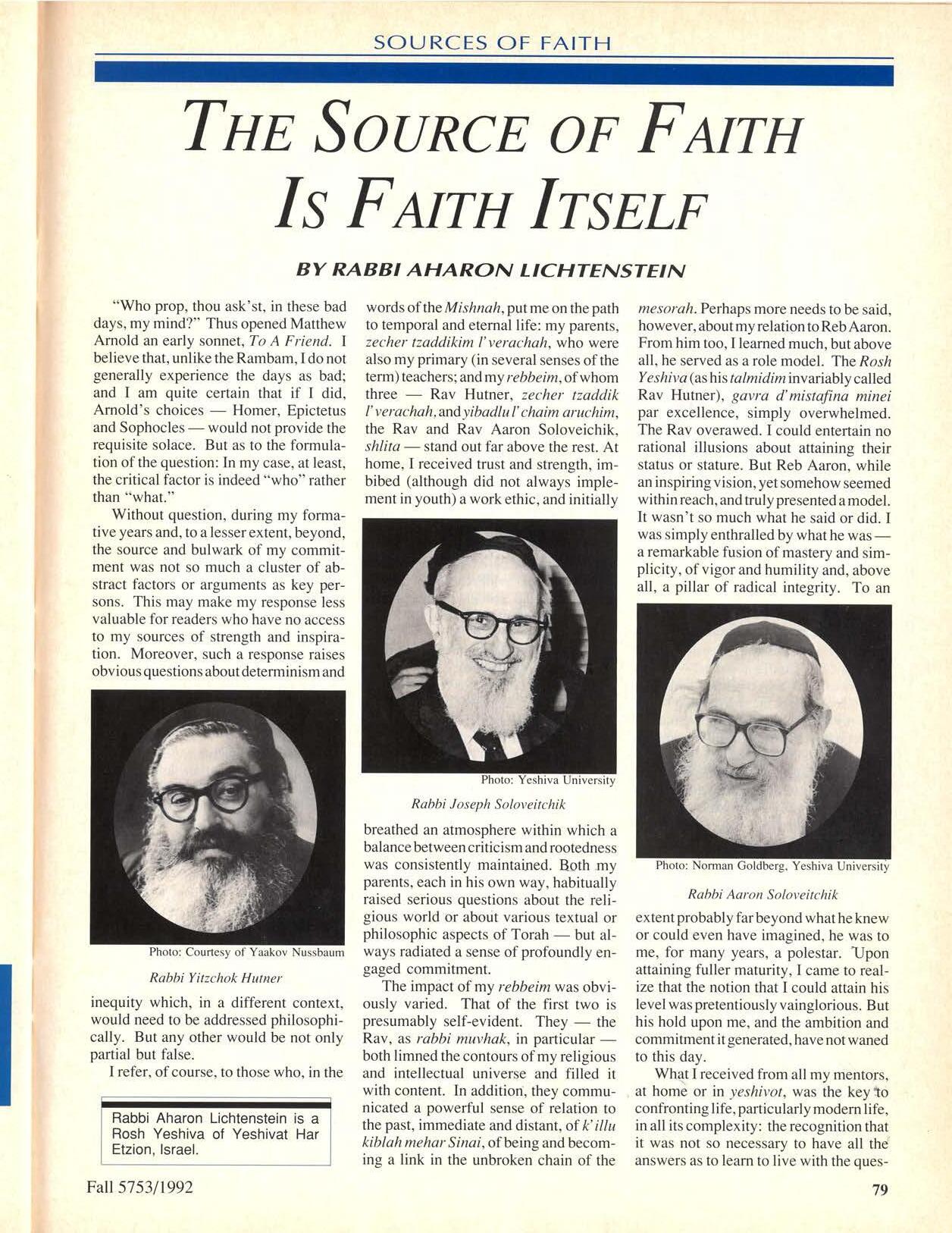






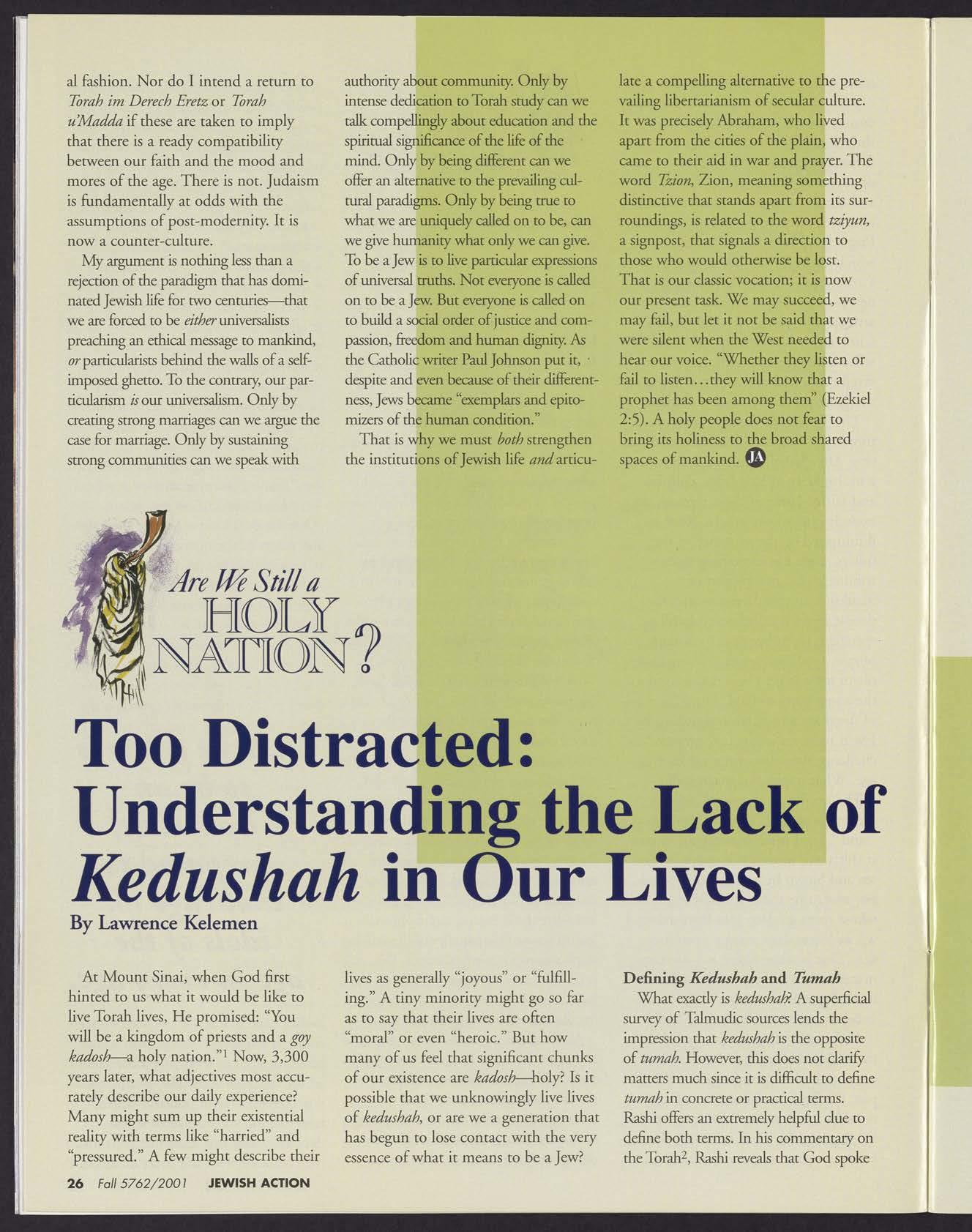



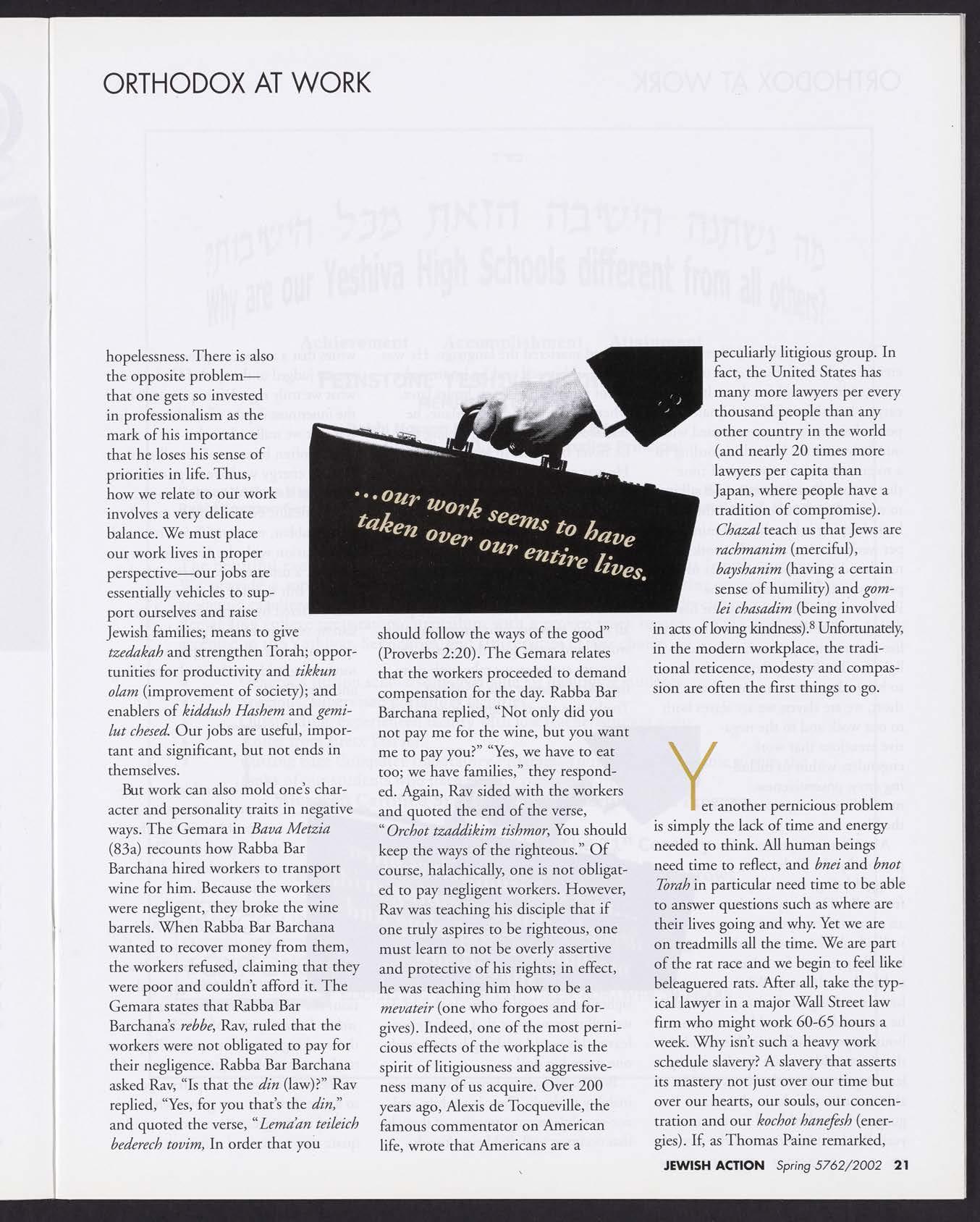


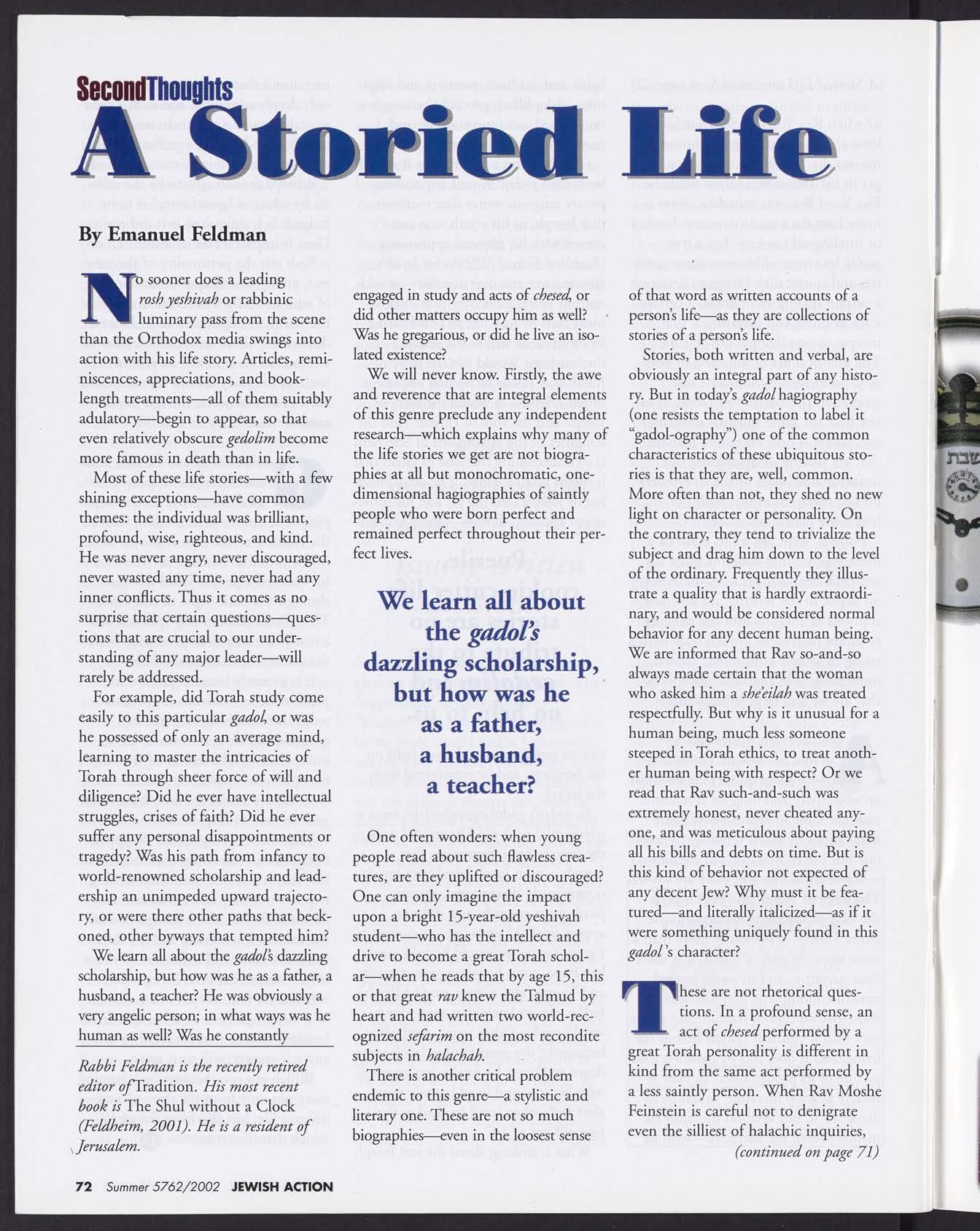


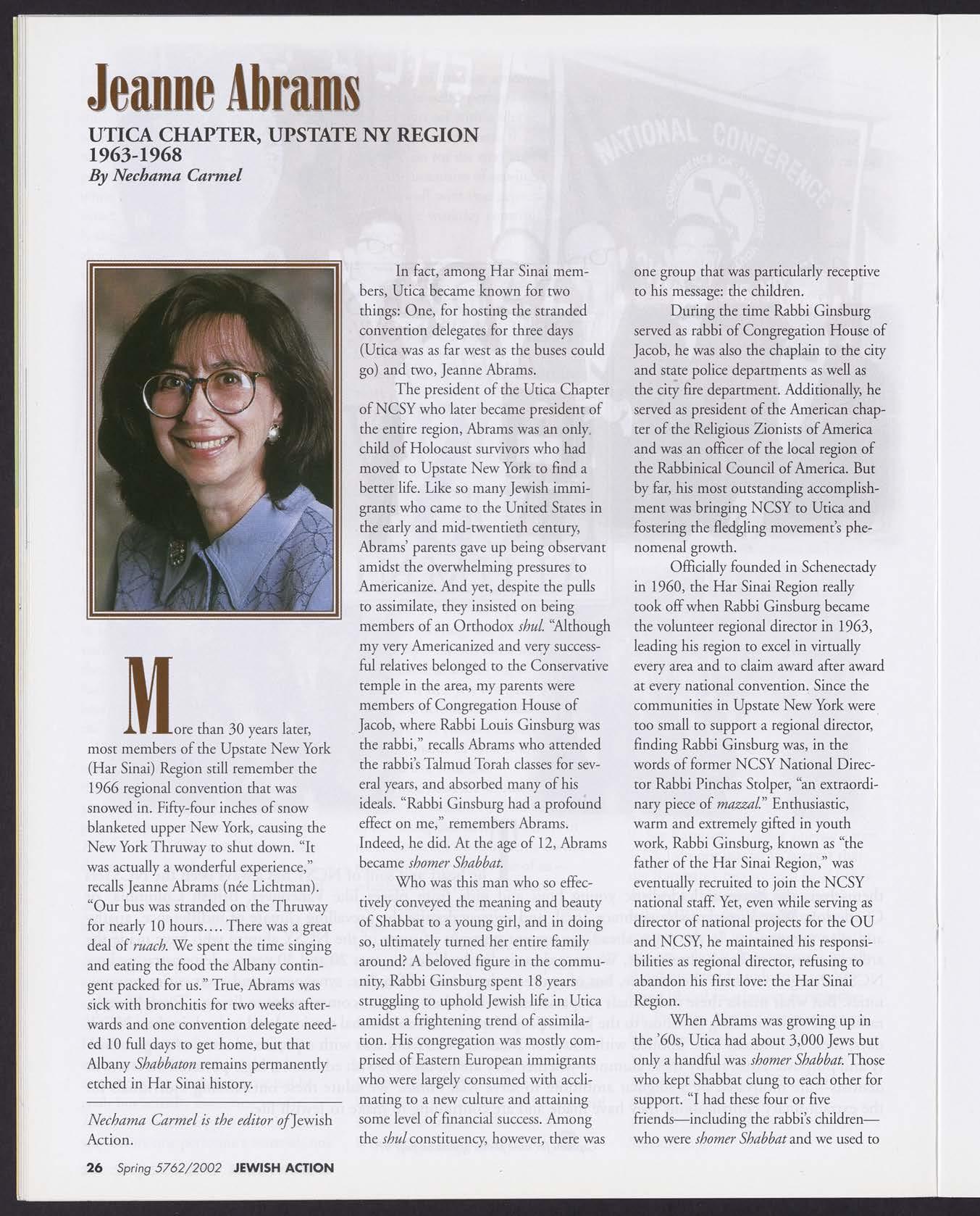




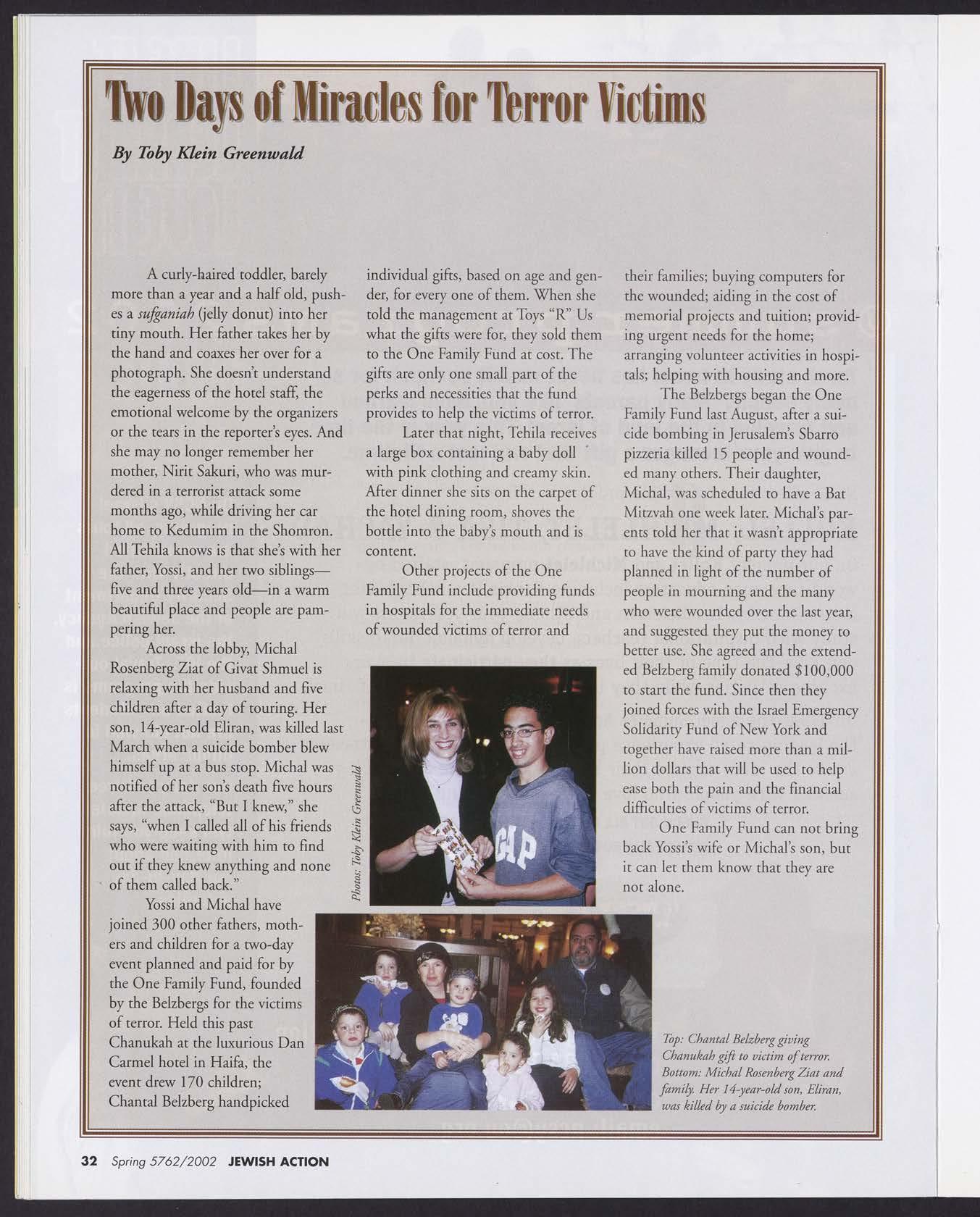
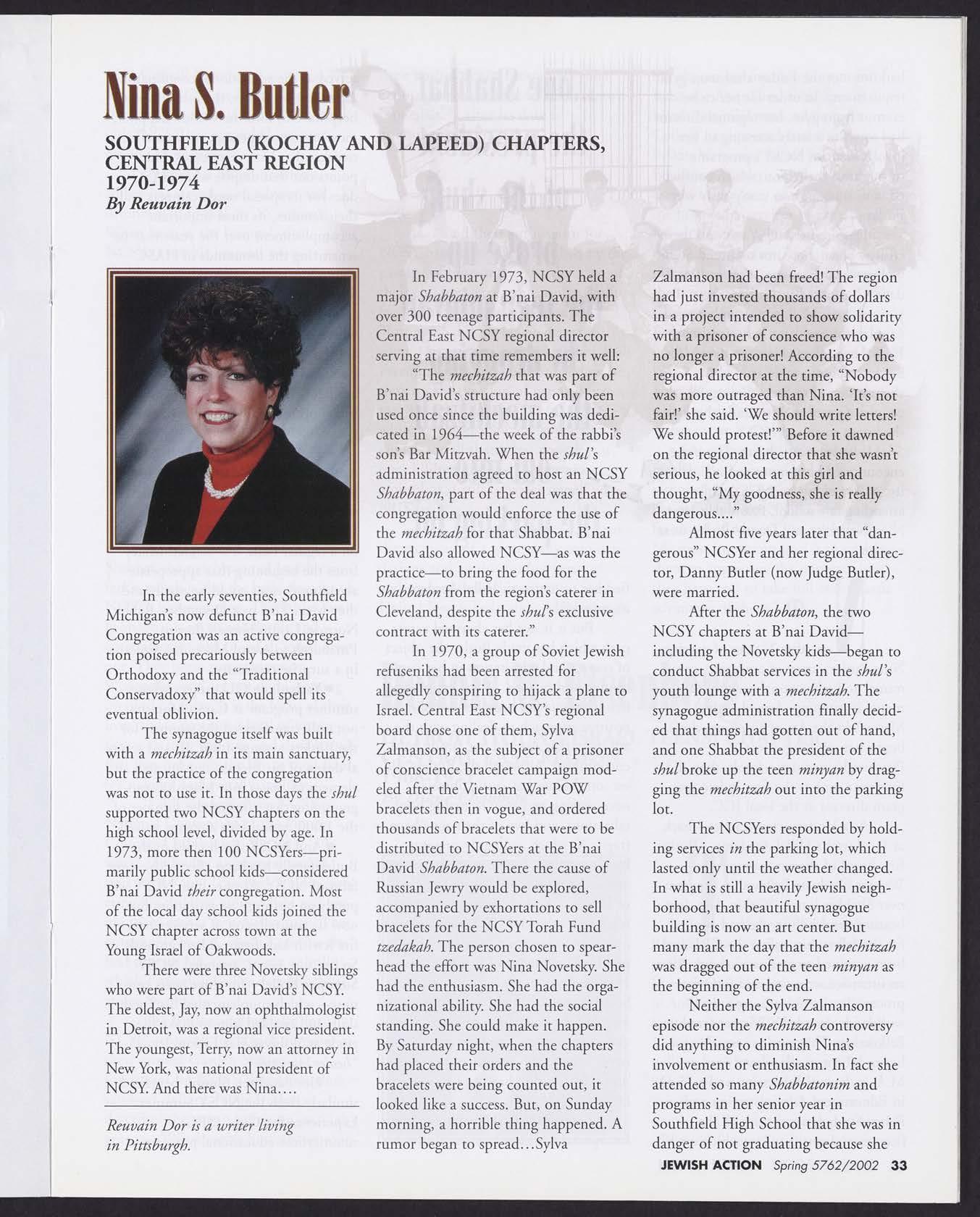


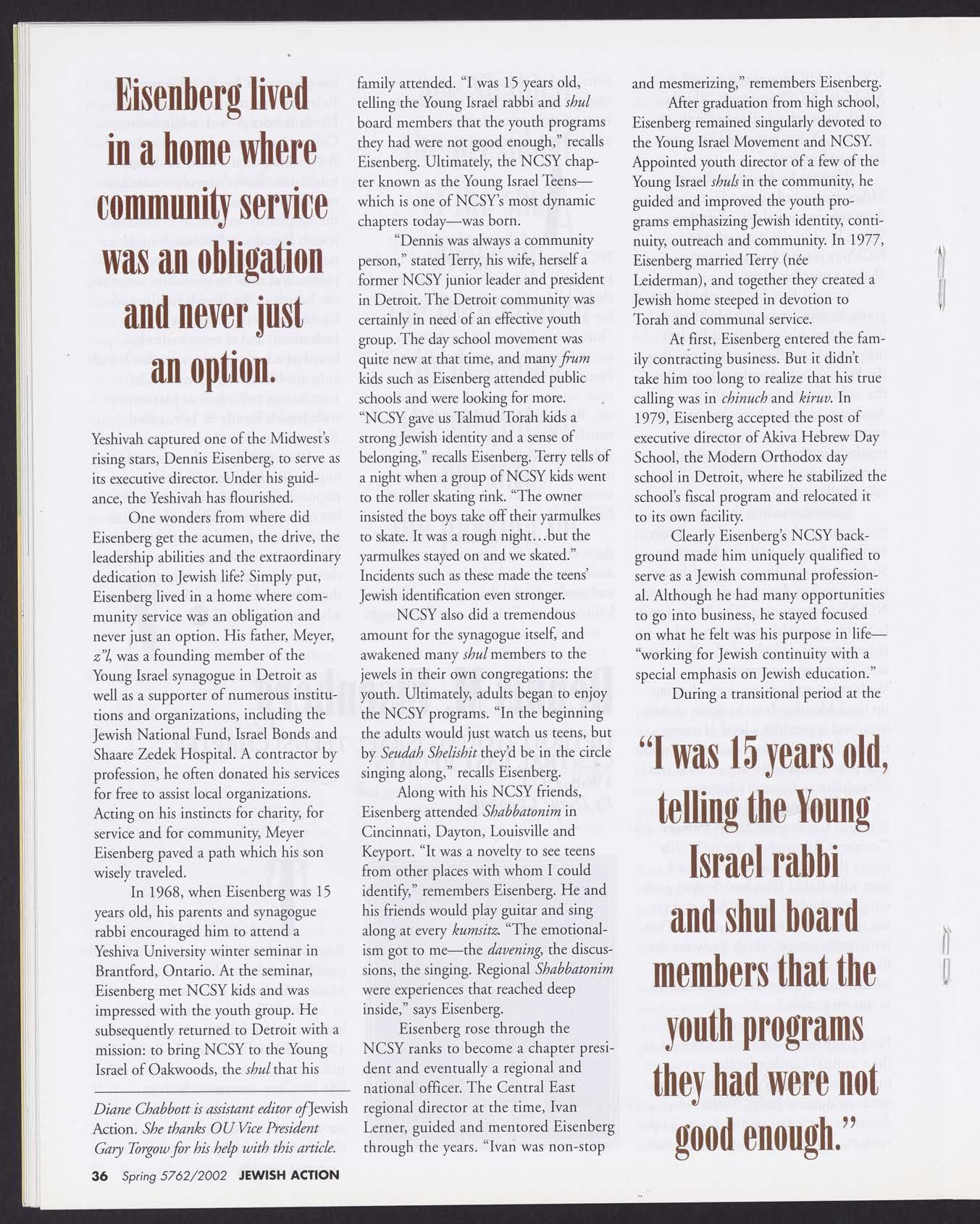



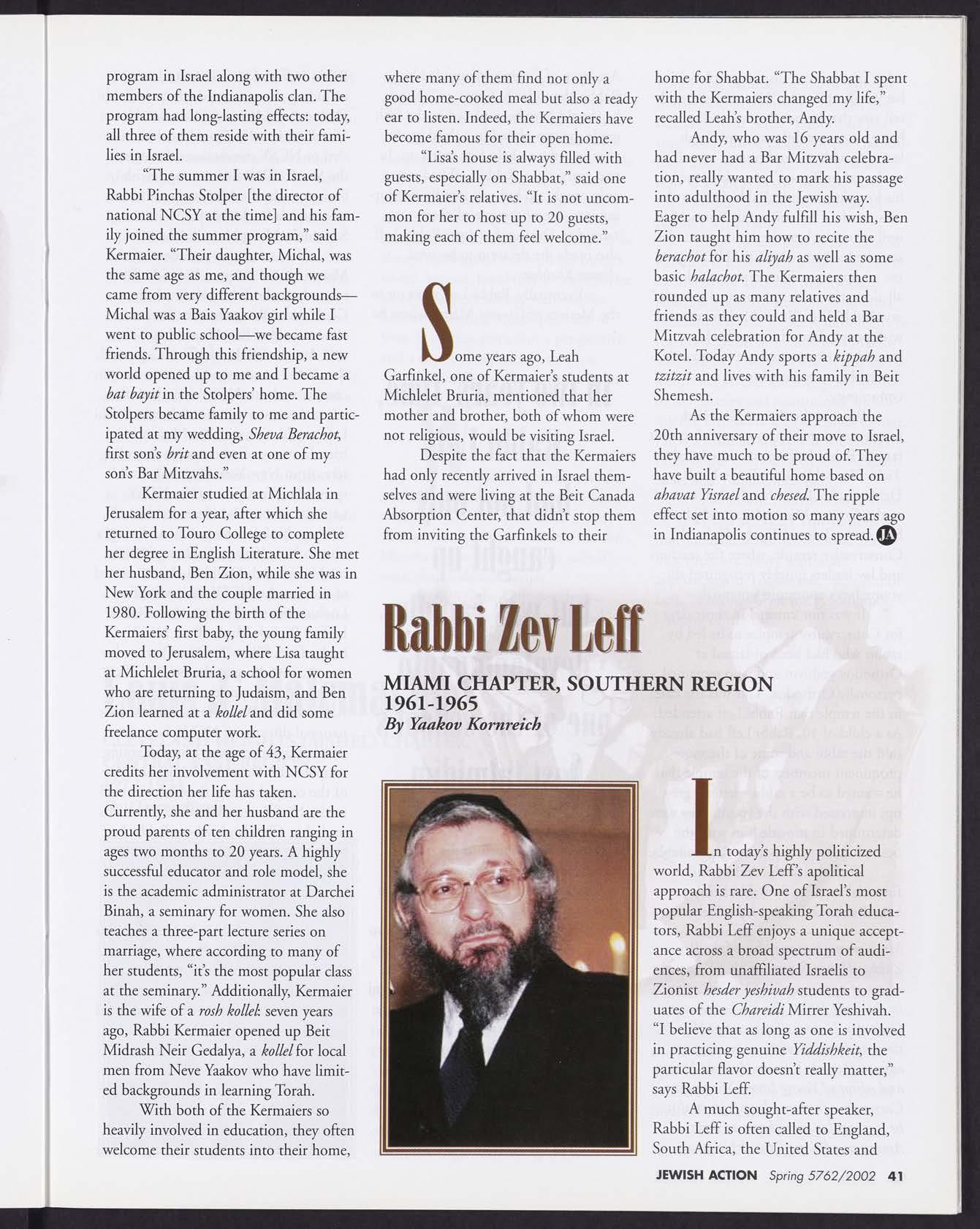

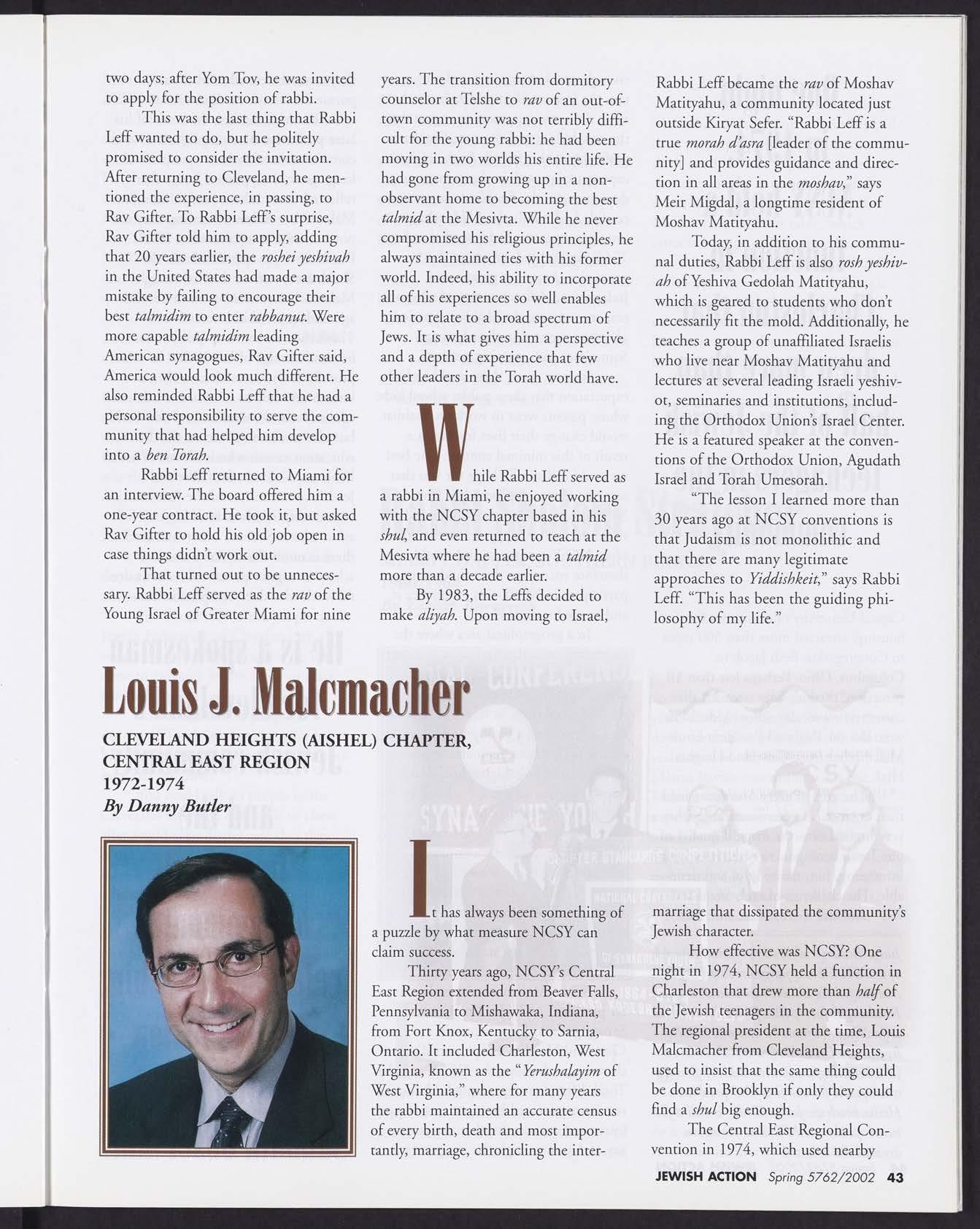




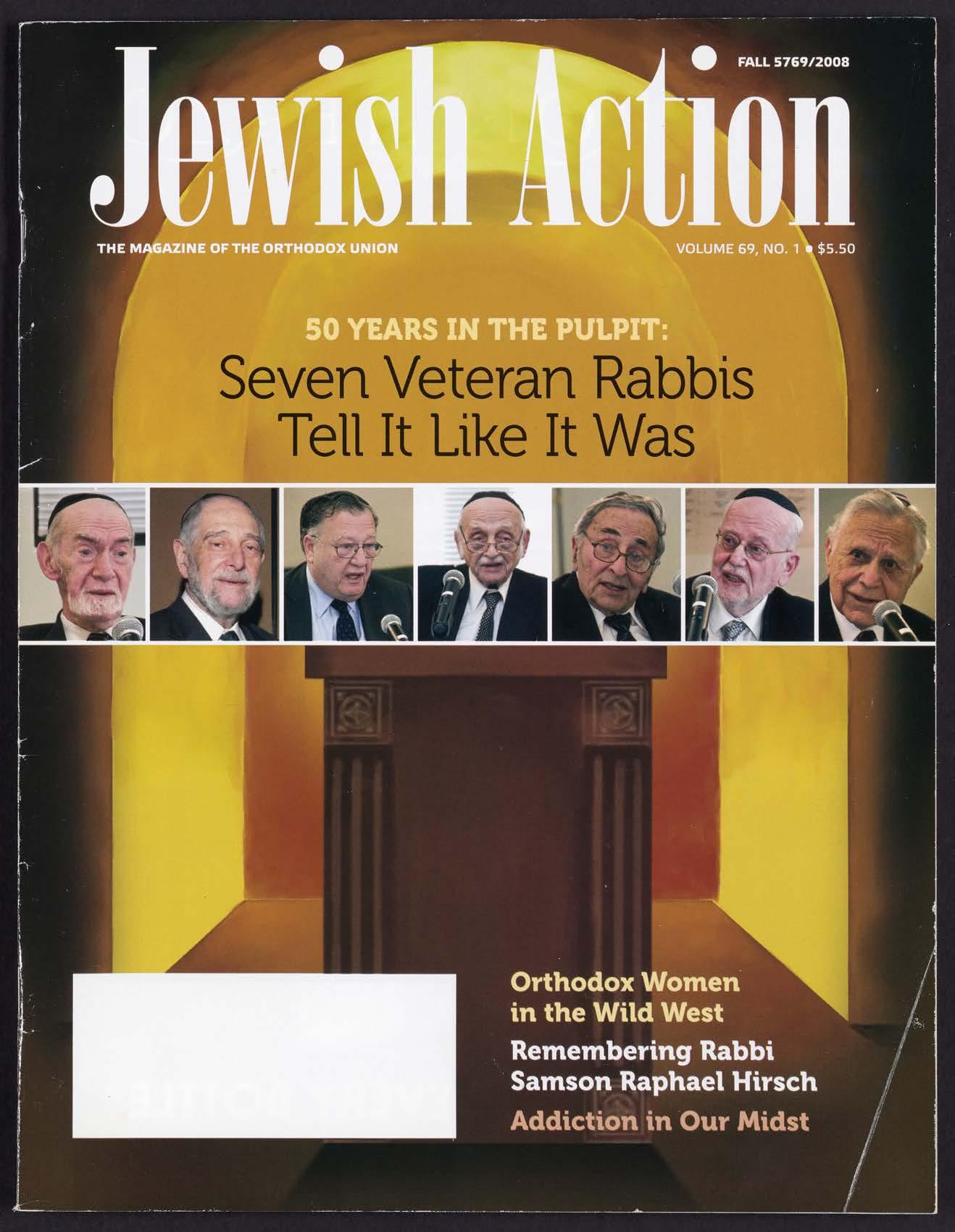



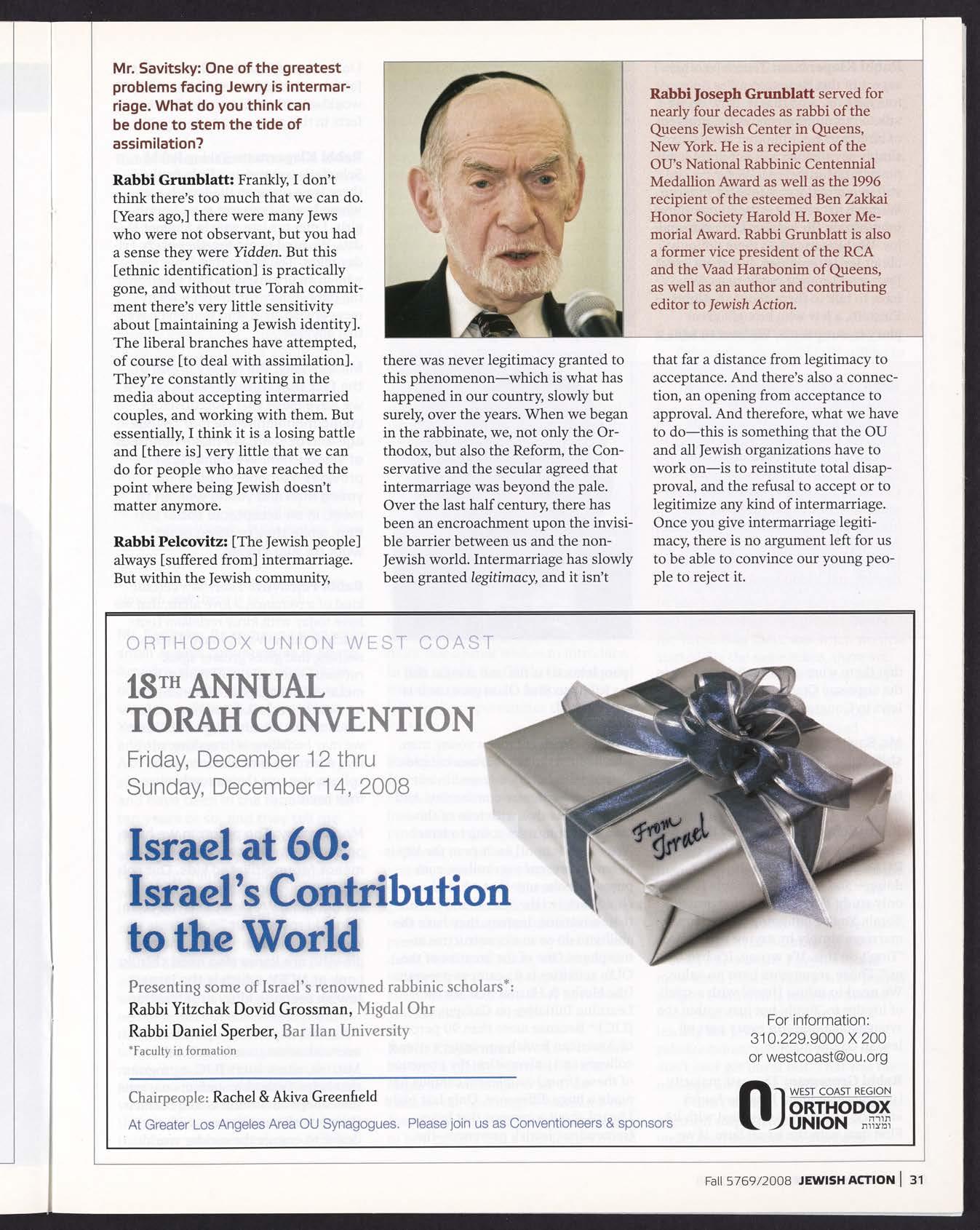


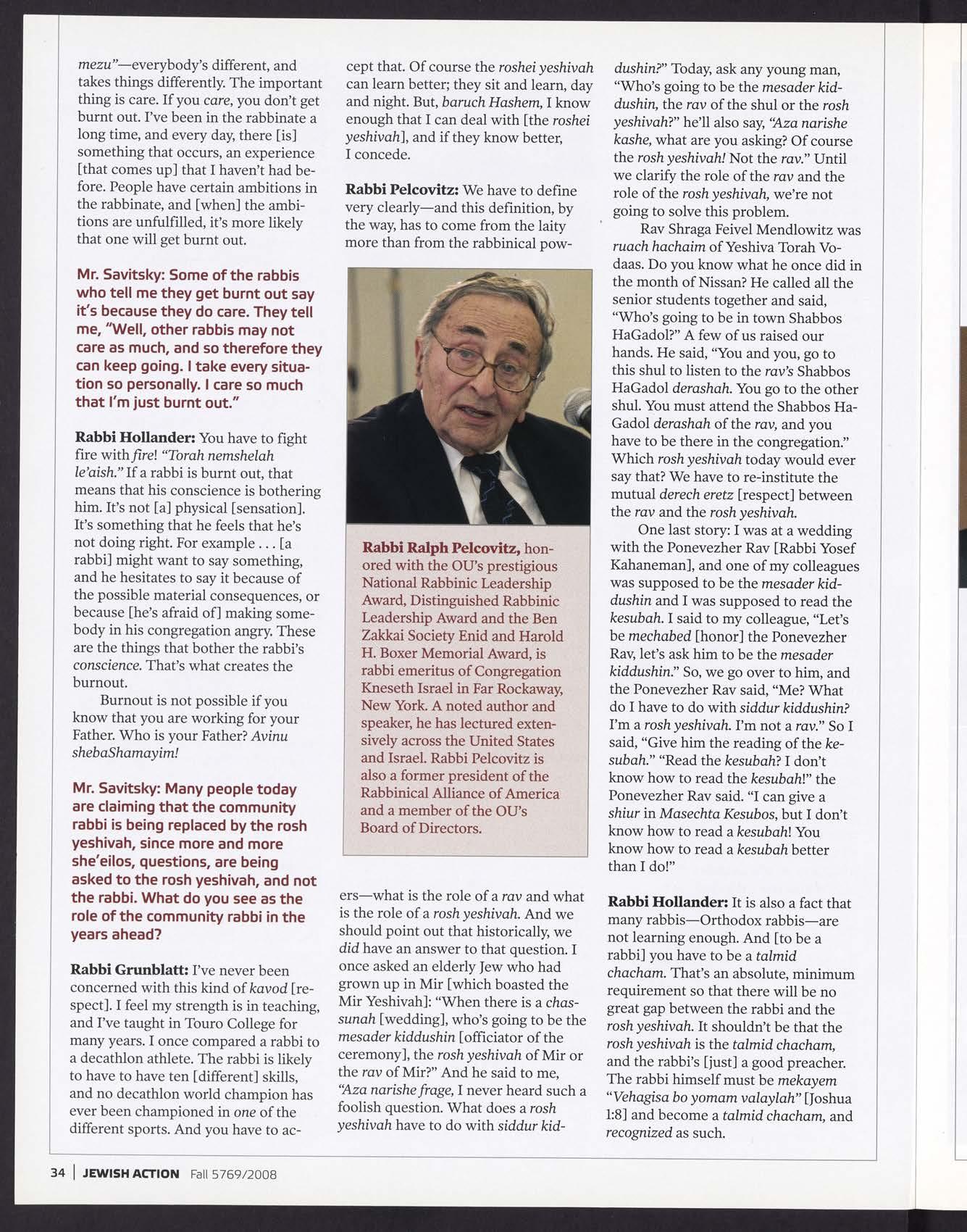

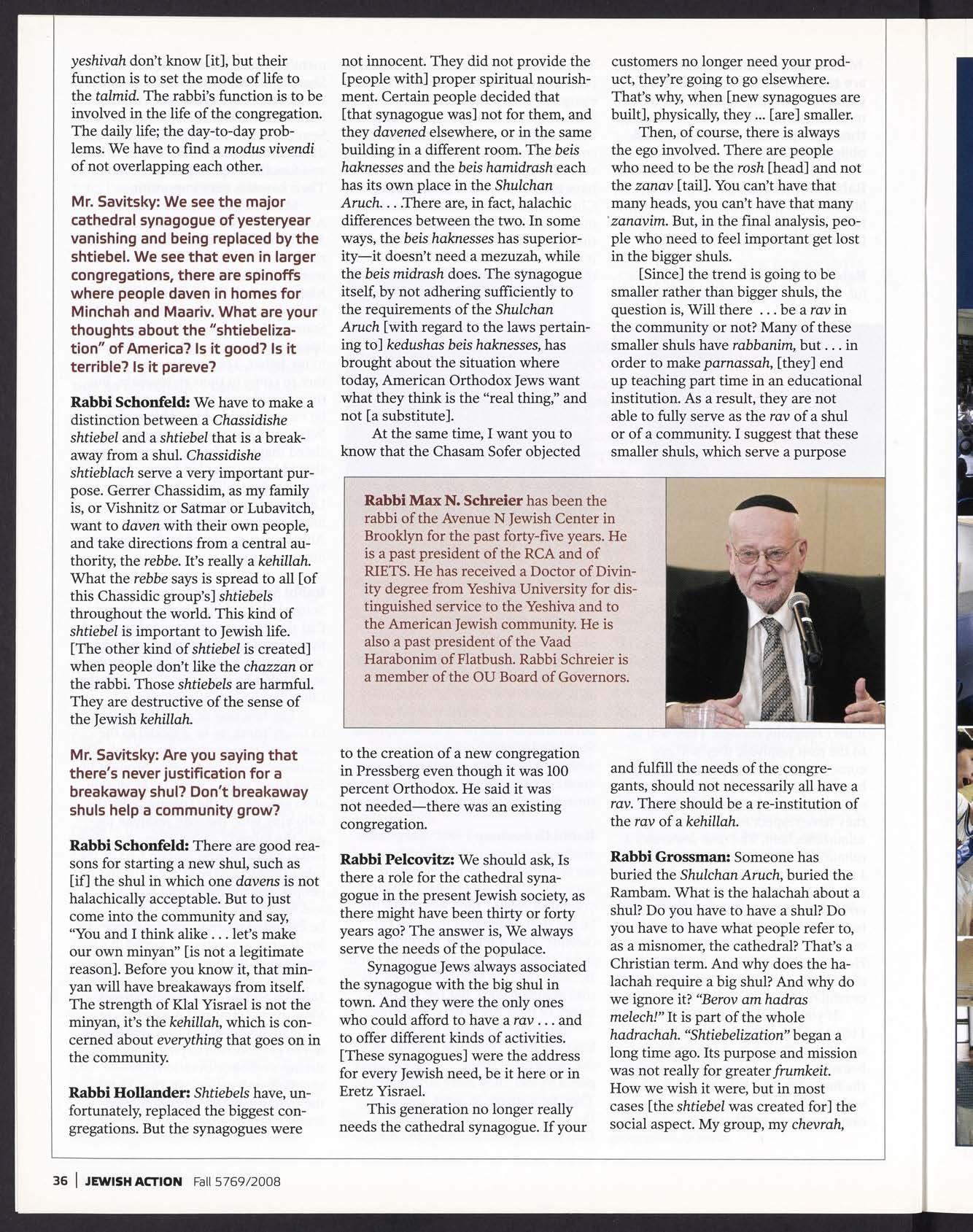
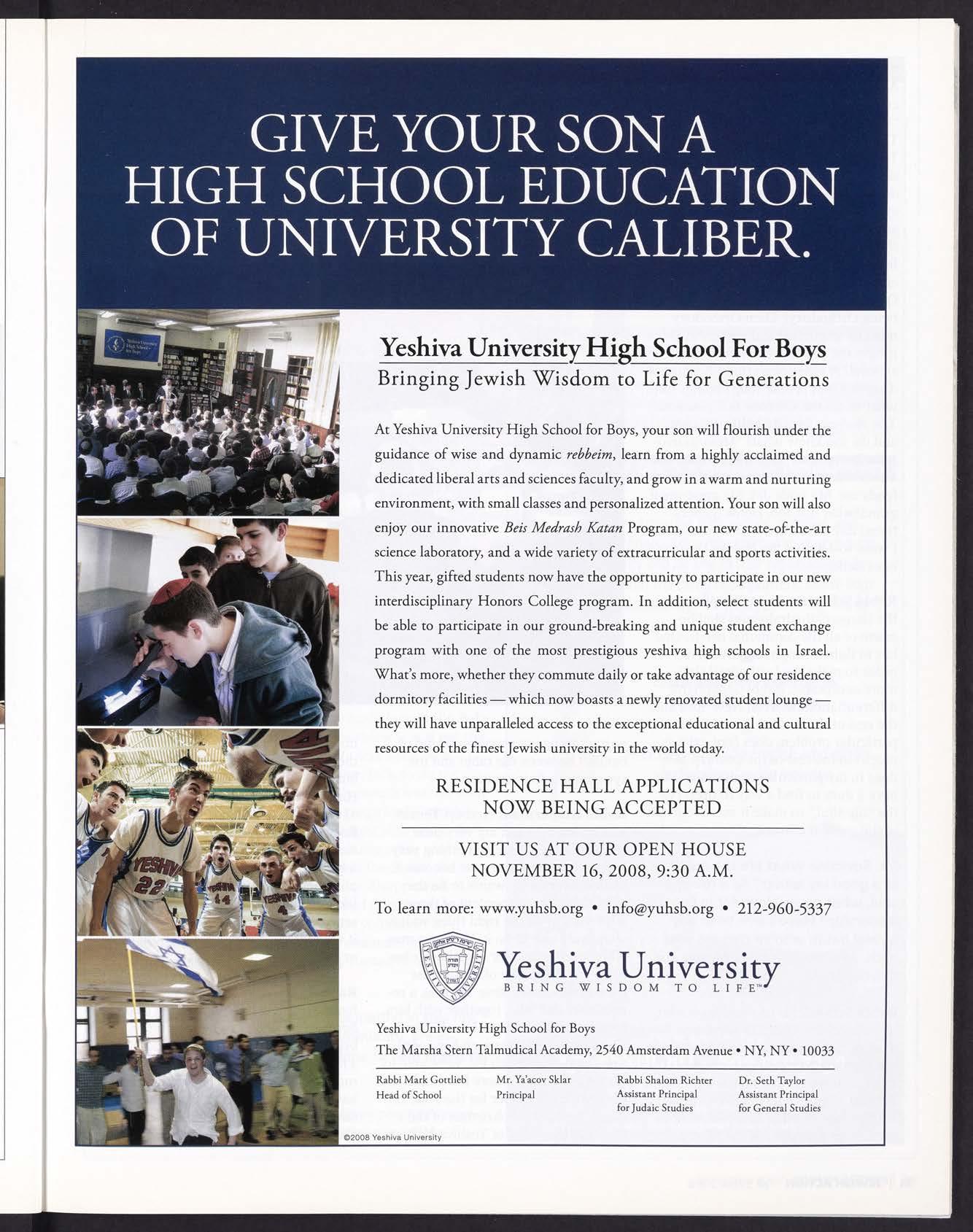




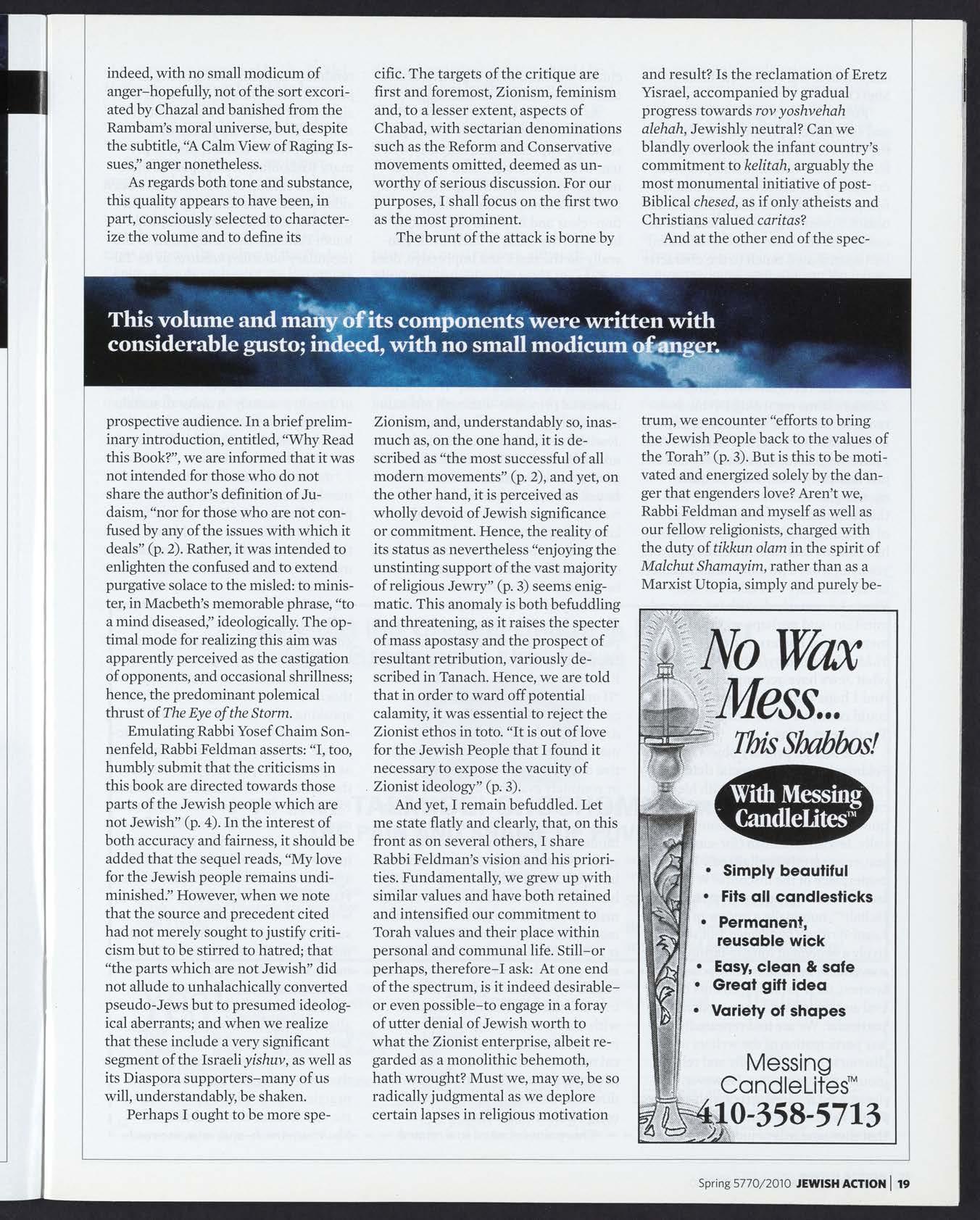


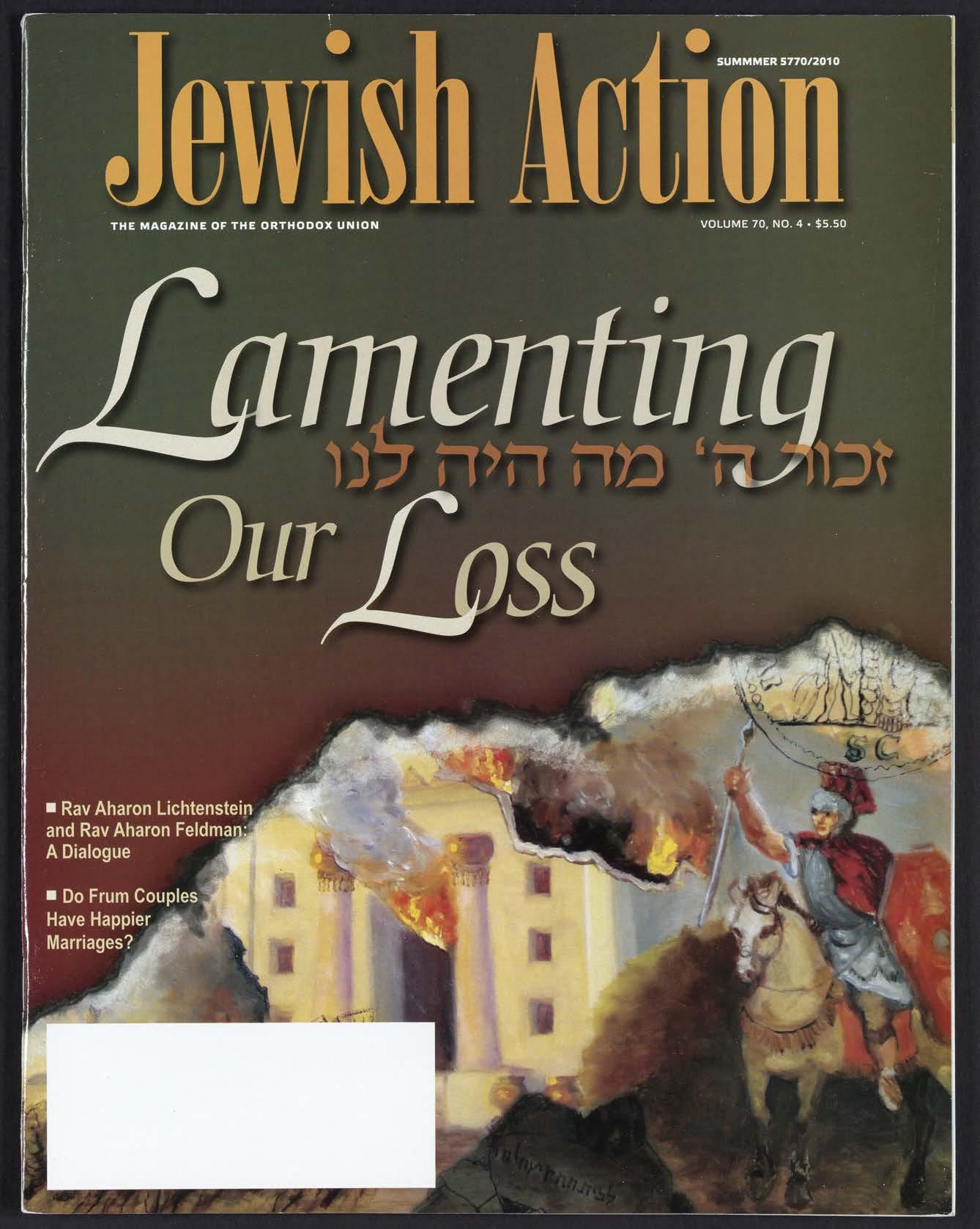



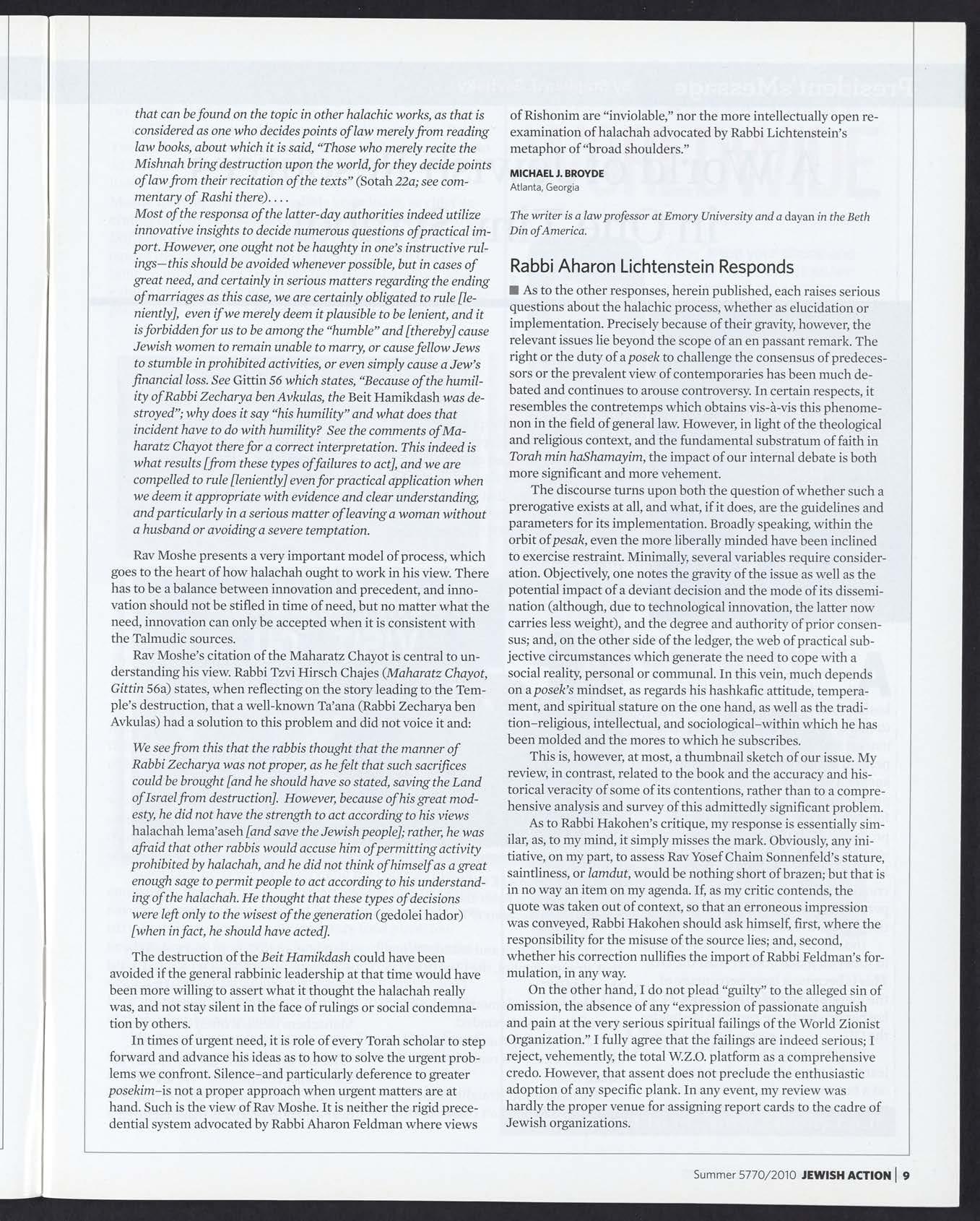

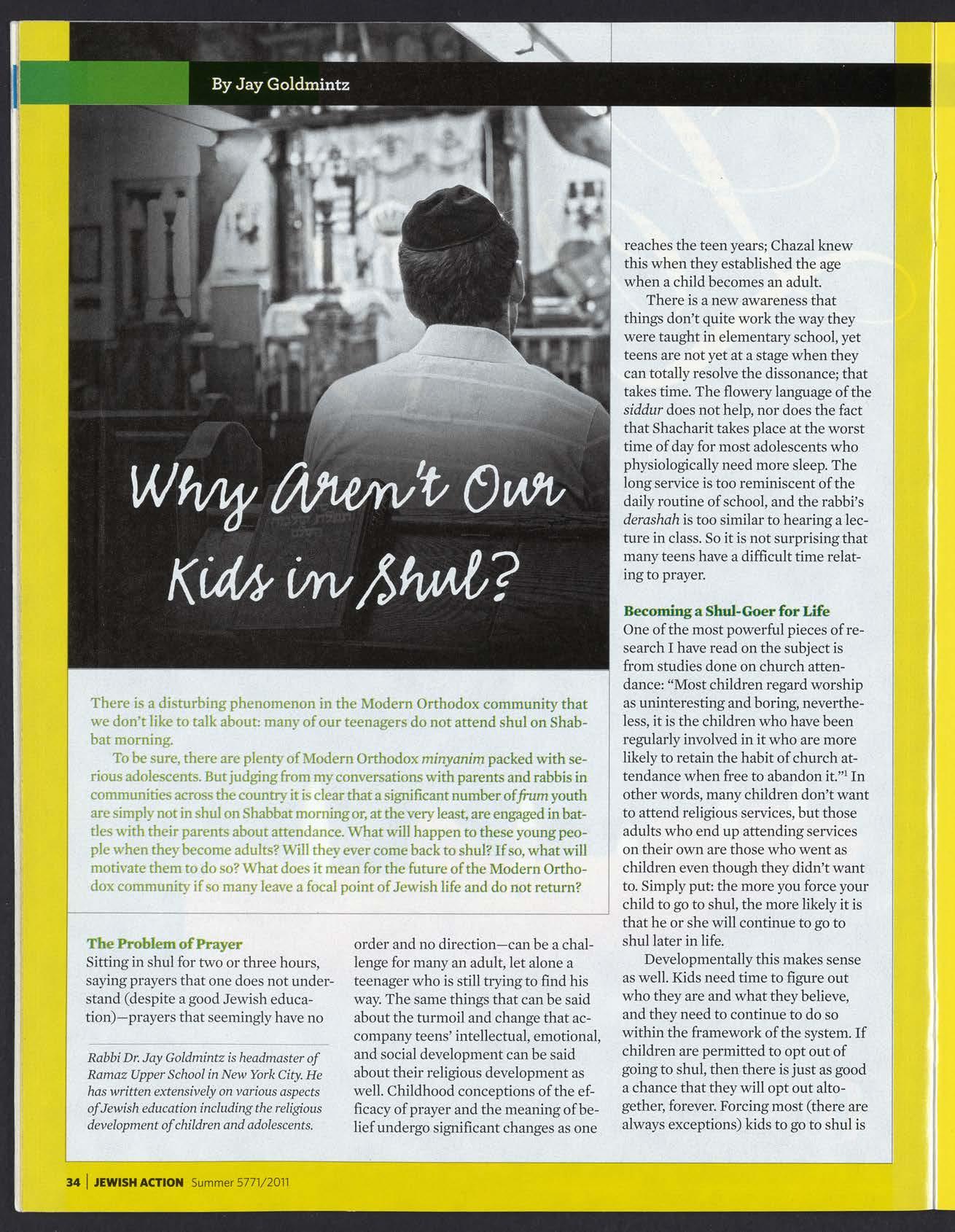

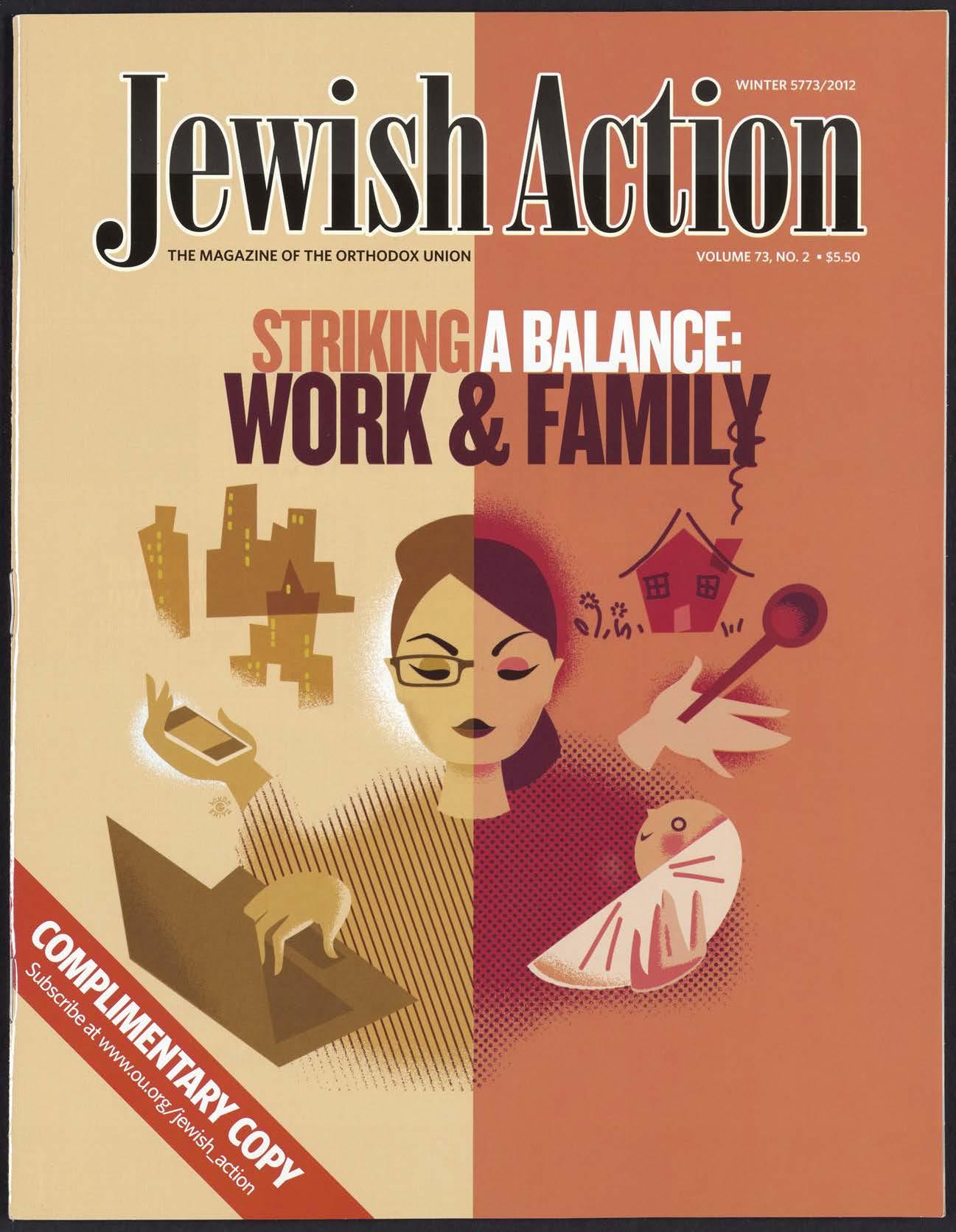




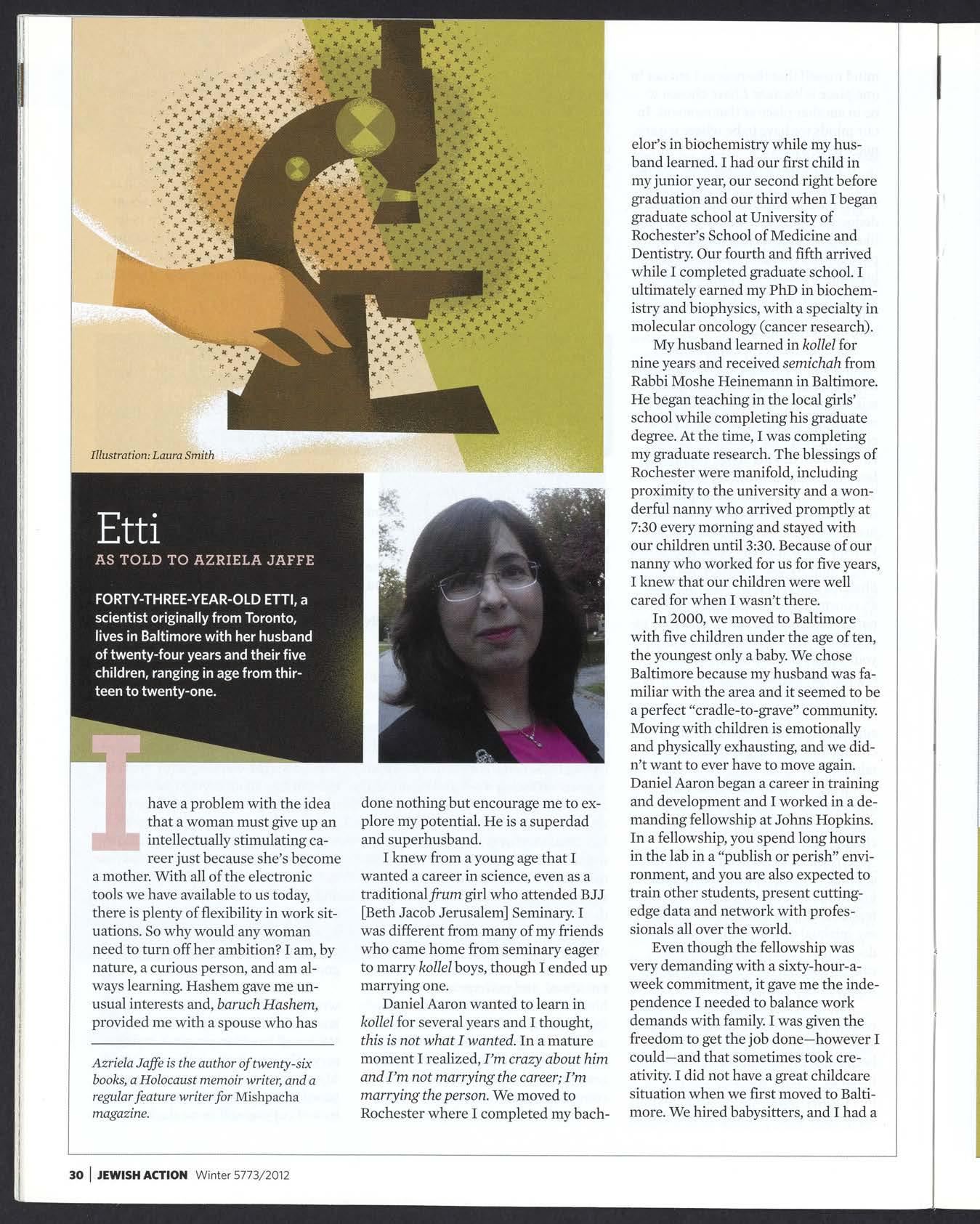

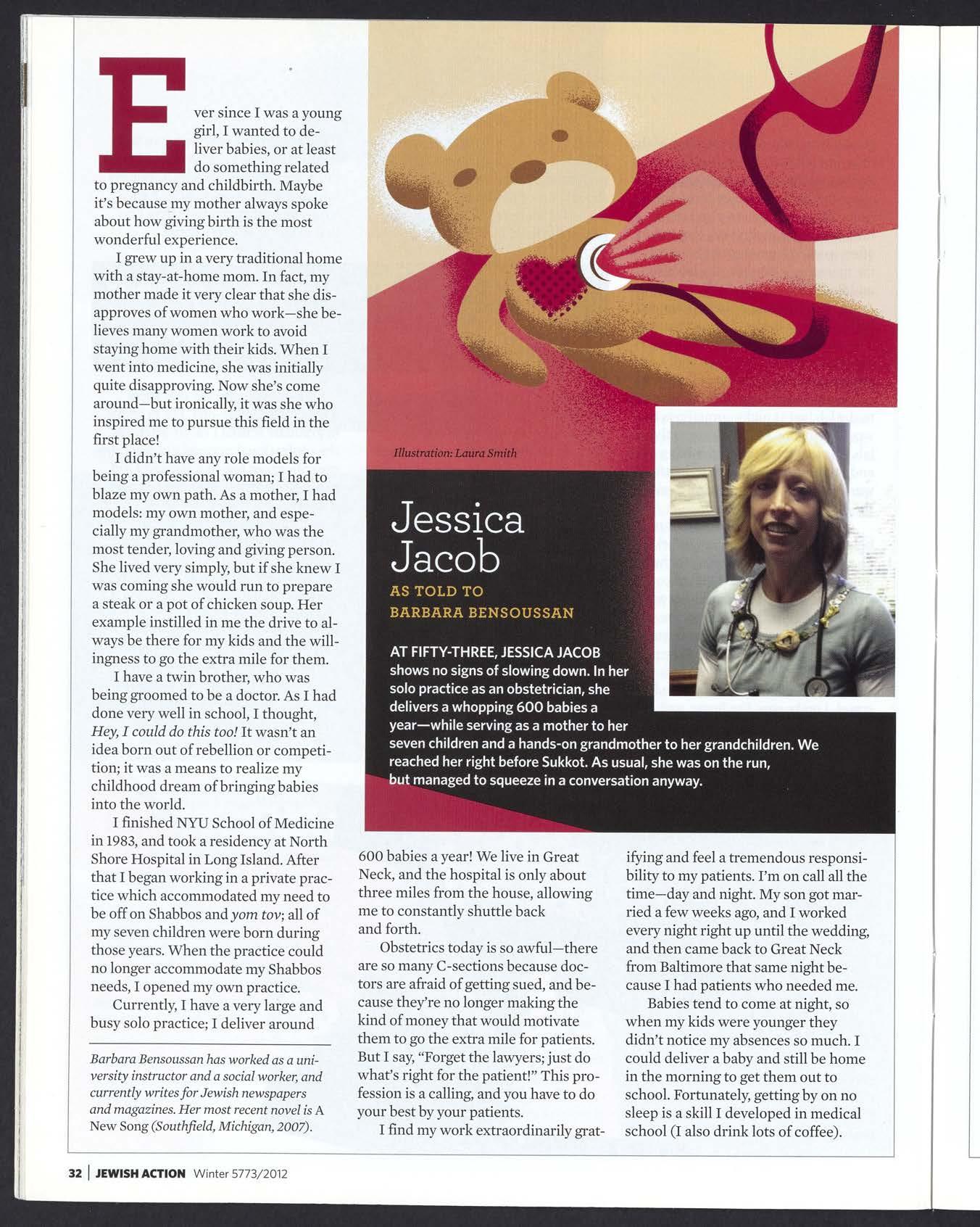
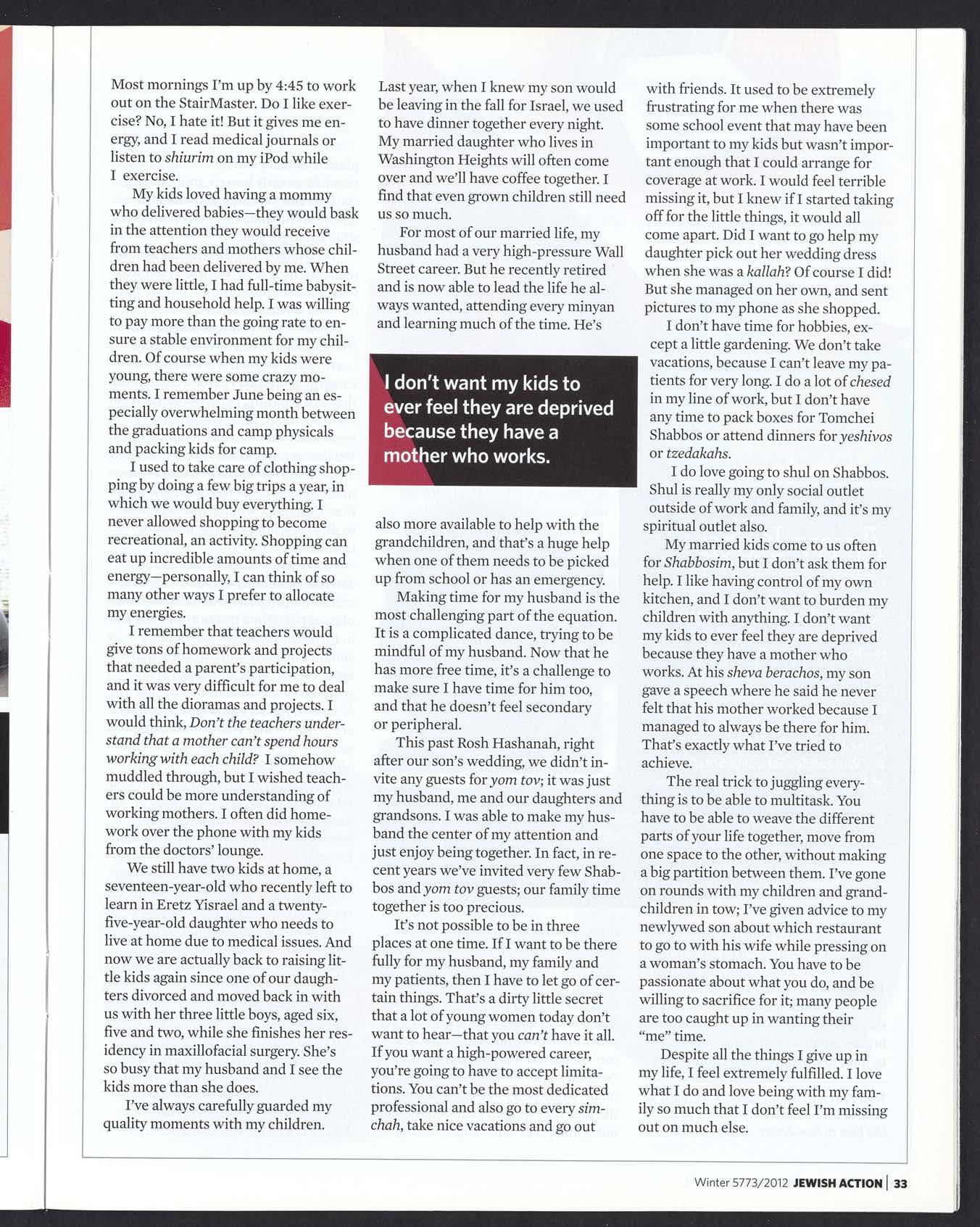
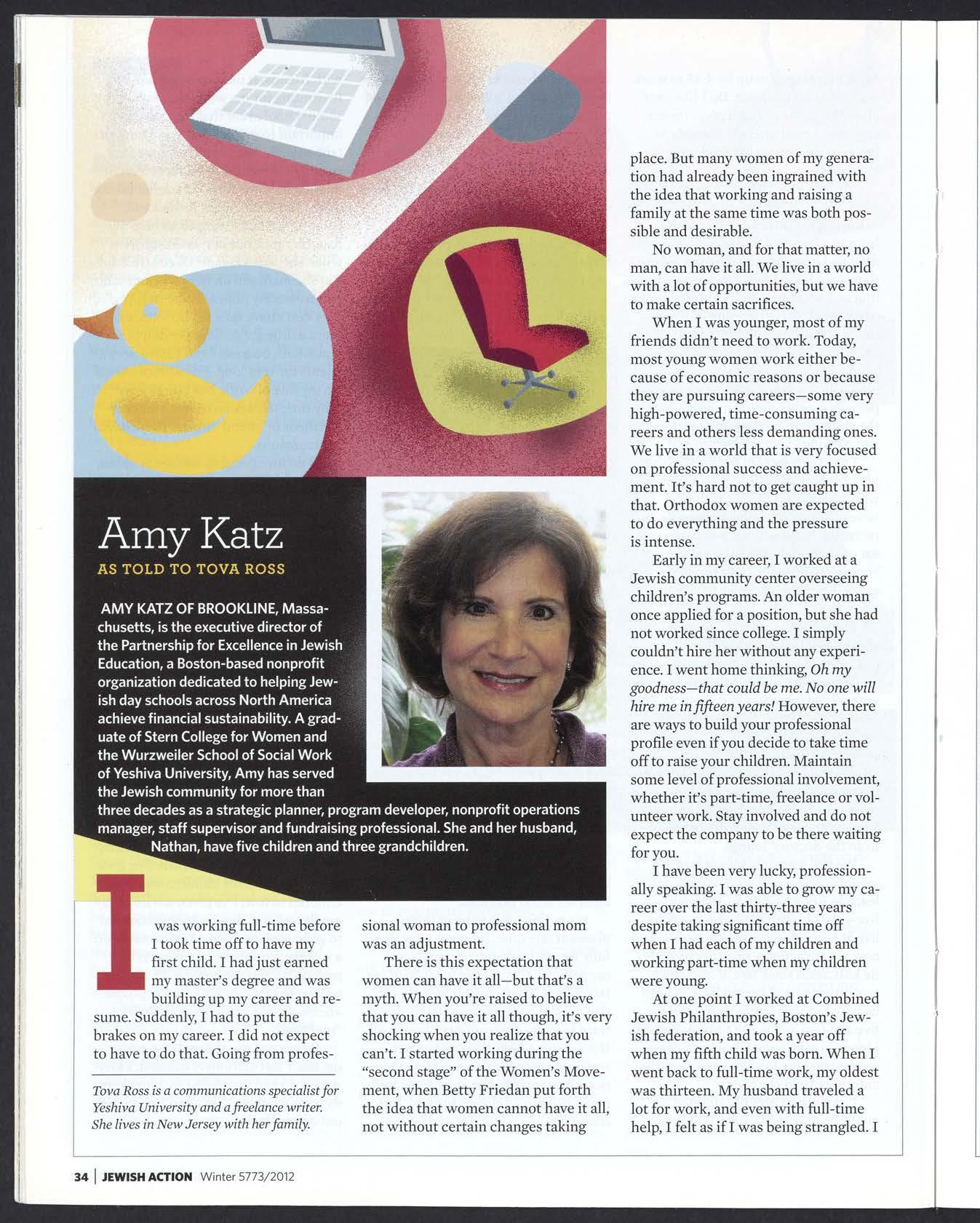









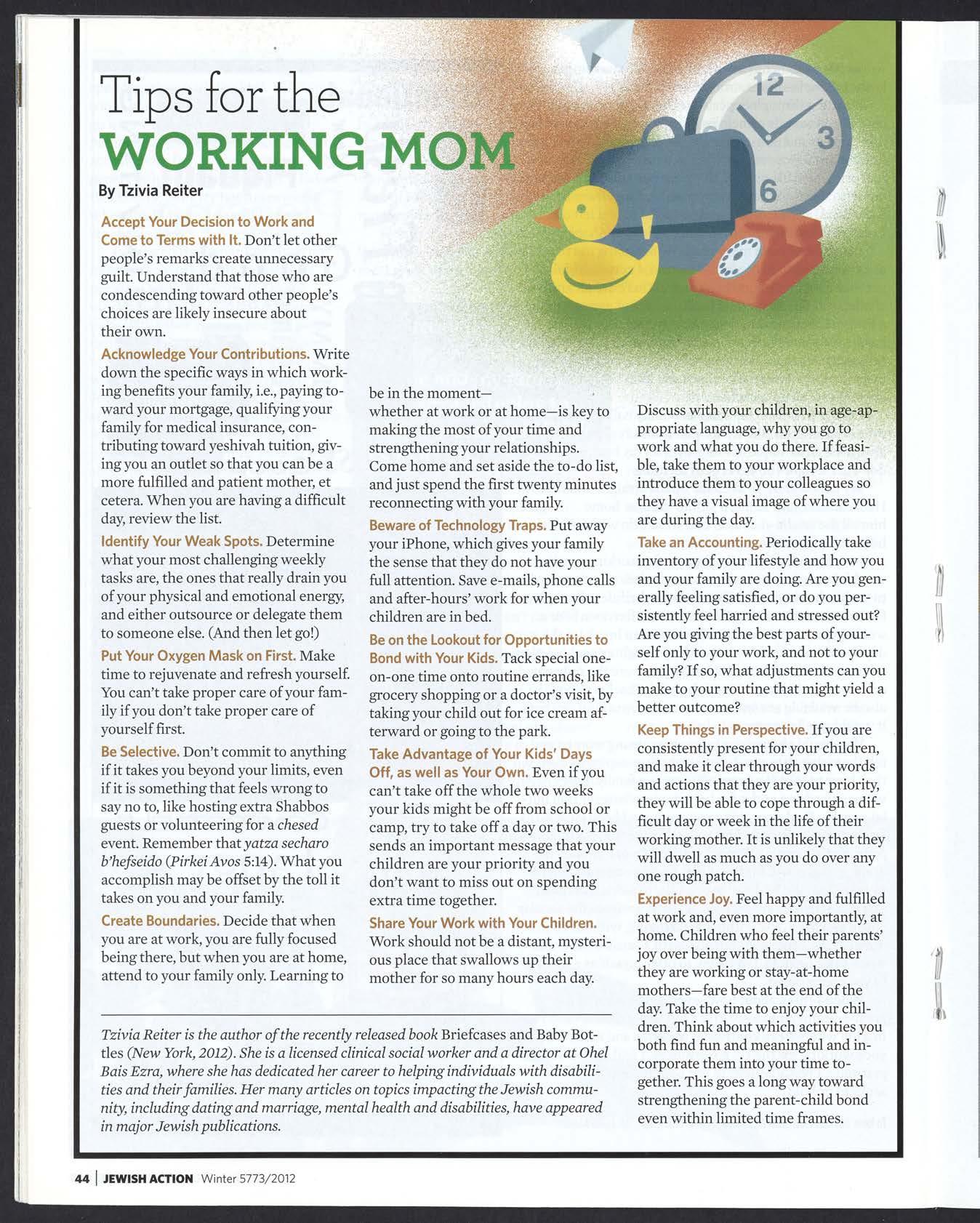

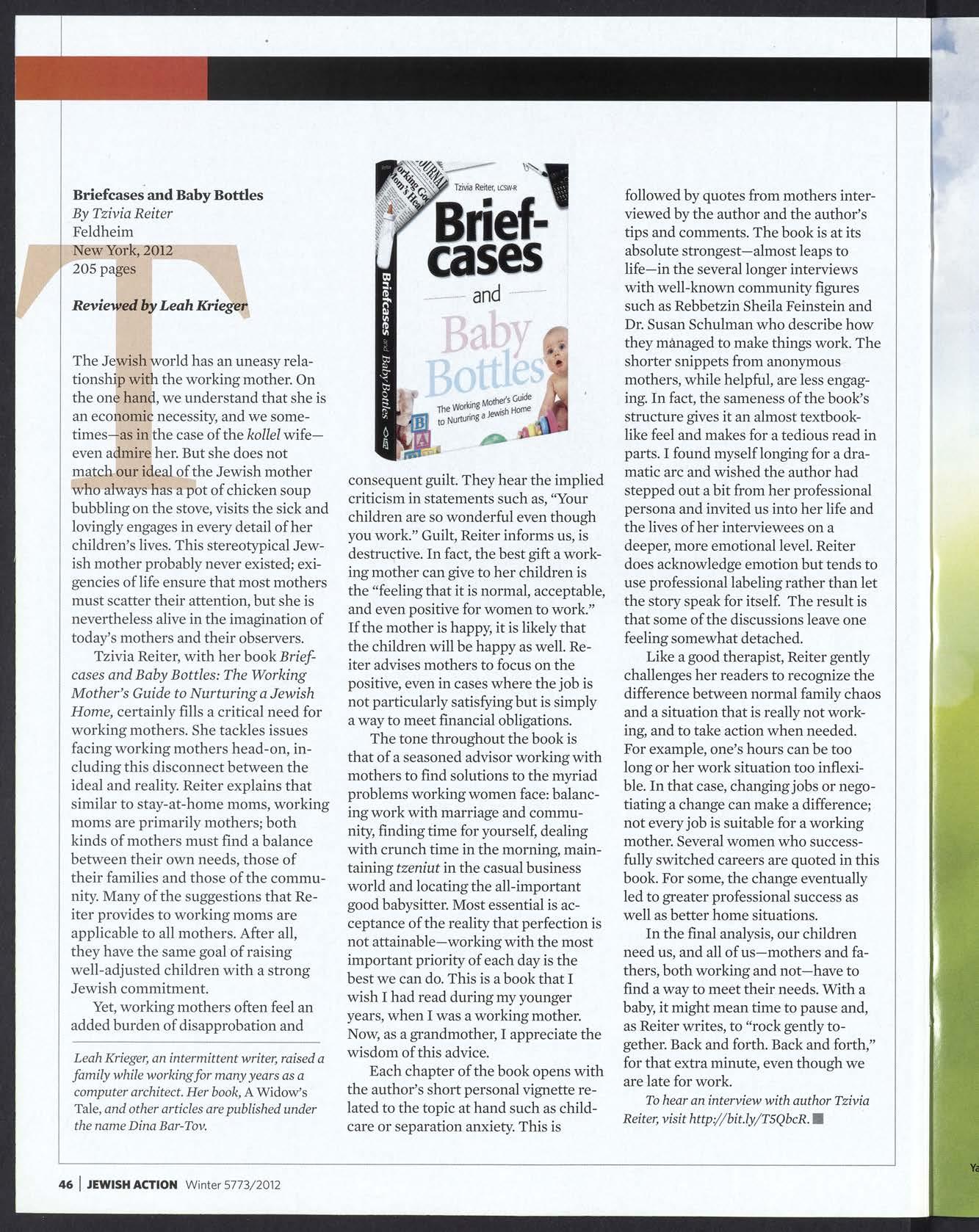
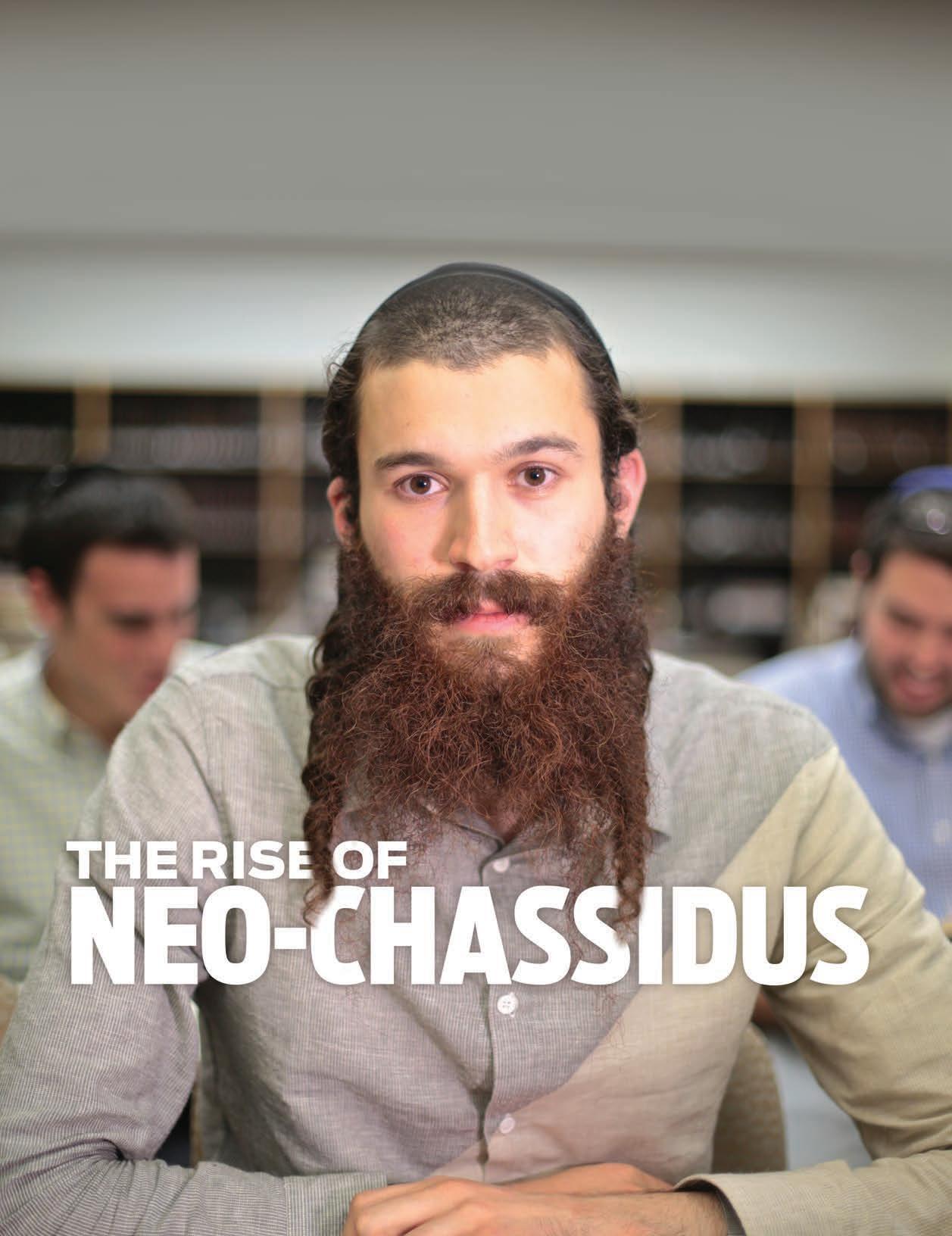

Neo-Chassidus Brings the Inner Light of Torah to Modern Orthodoxy
BY BARBARA BENSOUSSAN
Photos by Josh Weinberg, unless indicated otherwise.
Photo: Dov Lenchevsky


A prince once lay dying, and seeing that the doctors could do no more for him, the frantic king sent for a tzaddik known to be a master of medicine. The tzaddik told the king, “There is one cure that might help him. There is a rare precious gem that, if crushed and mixed into a potion, might cure your son. The gem can be found on a faraway island, but there is also one in the center of your crown.”
“What good does my kingship serve me if my only child dies?” cried the king. “Take the gem from my crown and cure him!”
Barbara Bensoussan, M.A., is a contributing editor of Mishpacha magazine and writes for Jewish Action and other media outlets. She is the author of the young adult novel A New Song (New York, 2006) and the cooking memoir The WellSpiced Life (Lakewood, NJ, 2014), has worked as a university instructor and social worker, and currently writes for Jewish newspapers and magazines.
This mashal (parable), which comes from the Ba’al HaTanya, the first Lubavitch Rebbe, Rabbi Shneur Zalman of Liadi, was offered in response to those who opposed teaching the peninim of Torah in the open. The dying prince represents Am Yisrael, languishing from lack of inspiration; the gem represents the inner light of Torah that can revive him.
“From the middle of the eighteenth century, gedolim like the Ramchal [Rabbi Moshe Chaim Luzatto] and the Ba’al Shem Tov began bringing forth the deeper secrets of the Torah,” says Rabbi Moshe Weinberger, mashpia at Yeshiva University’s Rabbi Isaac Elchanan Theological Seminary (RIETS) and the rav of Congregation Aish Kodesh in Woodmere, New York. “Halachah constitutes the physical life of the Jew, but the soul of the Torah is the potion we need to infuse it with life. Hashem saw that the Jewish people were suffocating, so He sent the Besht [the Ba’al Shem Tov] to revive them and give them a taste of the light of Mashiach.”
Despite the fact that the Orthodox world brims with minyan factories, glatt kosher vacation packages, yeshivot and kollelim and a thriving print media, Rabbi Weinberger is concerned. One thing is missing, he says: “the soul.” As he wrote in an essay that appeared in the online journal Klal Perspectives in 2012, “Our communities—spanning the en-
tire spectrum of Orthodoxy—are swarming with Jews of all ages and backgrounds who have little, if any, connection to Hakadosh Baruch Hu.” Many of the off-the-derech youth, he says, are not running away from authentic Yiddishkeit; they simply “never met it.”
“There are many out there who may have been shown or taught a version of Yiddishkeit that is dry, that is cold,” agrees Josh Weinberg, a YU musmach who considers himself a neo-Chassid, and is one of many who look to Rabbi Weinberger for inspiration. “They may practice Judaism in their communities [due to societal pressure], but inside, there’s a lot of apathy and [it’s done by] rote. Chances are they were never exposed to this deeper and joyous side of religious observance,” says Josh, who lives in Riverdale, New York, and works as a photographer and videographer for NCSY.
Rabbi Weinberger’s outspoken encouragement of a deeper engagement with what he calls “the inner light of Torah” has caused others to describe him as the captain of a growing trend among the Modern Orthodox to reconnect with the spiritual vision of the Ba’al Shem Tov and his disciples and others who delved into this dimension of Torah. Some of the more popular Chassidic texts that appeal to this group include Rabbi Elimelech of Lizhensk’s Noam Elim-
Editor’s Note: This magazine’s policy has always been to use Sephardic pronunciation, unless an author is known to use Ashkenazic pronunciation. Because in the neo-Chassidic movement Chassidus is referred to as Chassidus, not Chassidut, we felt it was important to spell the word as the movement does. Additionally, please note that many of those interviewed for this article use Ashkenazic pronunciation.

Rabbi Moshe Weinberger’s appointment as mashpia at YU indicates just how deeply the neo-Chassidus movement has impacted the Modern Orthodox world. Photo courtesy of Yeshiva University
elech, Rabbi Levi Yitzchak of Berditchev’s Kedushat Levi, Rabbi Nachman of Breslov’s Likutei Moharan, the seforim of Chabad Chassidus, including the Tanya, the seforim of Rav Tzadok HaKohen of Lublin and those of the rebbes of Ger—the Chiddushei HaRim (Rabbi Yitzchak Meir Rothenberg Alter), the Sefat Emet (Rabbi Yehudah Aryeh Leib Alter) and the Imrei Emet (Rabbi Avraham Mordechai Alter), as well as the writings of Rabbi Yitzchak Hutner and Rabbi Avraham Yitzchak HaCohen Kook.
Some adherents take on hitbodedut (meditation), attend tisches and farbrengen (Torah gatherings), immerse in the mikvah, engage in Carlebach-style davening and visit tzaddikim or kivrei tzaddikim (such as Rabbi Nachman of Breslov’s kever in Uman).
The Influence Spreads
Rabbi Weinberger’s appointment as mashpia at YU last year indicates just how deeply the neo-Chassidus movement has impacted the Modern Orthodox world. “I myself went to YU forty years ago,” Rabbi Weinberger says. “Today, it’s a different world. There’s still the same strong learning, but so many of the boys are thirsting for the life of inner Torah; in Eretz Yisrael, there’s a real sense of excitement in the hesder yeshivos, where the influence of Rav Kook is still felt.”
Rabbi Judah Mischel, a former rebbe at Yeshivat Reishit Yerushalayim and a popular teacher of Chassidus in Israel, maintains that the rediscovery of Chassidic teachings in the Modern Orthodox world is “changing the face of the community.” YU traditionally embraced a more intellectual or Litvish approach to Torah study. Now YU offers weekly shiurim in Chassidic thought, monthly farbrengen with Rabbi Weinberger as well as a Rosh Chodesh musical minyan, all of which represent a dramatic shift for YU. Rebbeim at YU noted the popularity of neo-Chassidus in Eretz Yisrael, where 85 to 90 percent of YU students study before attending the university. “The administration said that if this moves many of our students, let’s give it a try,” stated Rabbi Yosef Blau, senior mashgiach ruchani at YU, in a February 2013 article in Commentator, the YU student newspaper.
Rabbi Mischel, a resident of Ramat Beit Shemesh, Israel, who is a current student of Chassidic master Rabbi Avraham Tzvi Kluger, defines neo-Chassidus as “people trying to live Yiddishkeit from the inside out, to live more deeply and fully . . . . People today are refusing to be put into boxes. God is One, and His truth can be refracted in many different ways.”
Rabbi Weinberger may be the movement’s senior spokesman, but most of the followers are young. “The majority of the people involved with neo-Chassidus are under thirty,” says Rabbi Dovid Bashevkin, an avid follower of the movement who lives in Teaneck, New Jersey. Rabbi Bashevkin, who currently serves as the director of education for NCSY, earned semichah from YU where he completed a master’s degree in Polish Hassidut focusing on the thought of Rabbi Tzadok HaKohen of Lublin.

Memphis Memphis





Noting the trend, some Modern Orthodox high schools have begun offering courses on Chassidus. Torah Academy of Bergen County in New Jersey offers an elective called “Introduction to Chassidut.” This past year, the Rae Kushner Yeshiva High School in Livingston, New Jersey, held a school-wide day-long program on Chassidus which stimulated so much interest in the subject the school decided to offer an ongoing course on Chassidic thought. The popular elective, open to eleventh and twelfth graders and called “Chassidic Thought on Ahavat Hashem,”focuses on studying works from some of the greatest Chassidic personalities, including the Ba’al Shem Tov, the Ba’al HaTanya, Sefat Emet, Kedushat HaLevi, the Piaseczna Rebbe (Rabbi Kalonymus Kalman Shapira) and others.
While Rabbi Eliezer Rubin, Rae Kushner Yeshiva High School head of school, does not see a mass movement of high schoolers becoming neo-Chassids, he does see a marked interest in Chassidic thought. He attributes this to the impact of the digital revolution. “Everything is individualized nowadays,” he says. “Even religion is individualized. We select our own music, our own games, our own TV shows through Netflix.” Now, he says, you can select your own style of Judaism.
Nor is this surge of interest in Chassidus limited to Modern Orthodox Jews in the New York tri-state area. Rabbi Shlomo Einhorn, dean of Yeshiva Yavneh in Los Angeles, says that every few months, a few shuls in the Pico-Robertson neighborhood, a solidly Modern Orthodox part of town, coordinate a tisch. Similarly, classes on Chassidic thought are sprouting all over, such as a class on the Tanya and Netivot Shalom, the work of the Slonimer Rebbe, offered in the Boca Raton Synagogue.
An All-Encompassing Approach
Joey Rosenfeld, a twenty-six-year-old enthusiast who used to give shiurim in Chassidus in New York (he recently moved to St. Louis), says that many of his friends found spiritual support in Chassidus when they returned from a year or two of learning in Israel and transitioned back into American life. “They come back after a year of inspiration
and increased piety, which was easy to maintain in the bubble of the beit midrash, and find themselves among an affluent, modern lifestyle,” he says. “It creates cognitive dissonance: Either you go back to your old lifestyle, or you find new ways to cling to authentic Judaism. Chassidus offers an all-encompassing approach to Jewish life. It includes not only life in the beit midrash, but prayer, dealing with struggles and failures and connecting to God even through mundane activities.”
Rosenfeld adds that Chassidus also offers an alternative to the Litvish yeshivah tradition which emphasizes intense learning above all else. “Chassidus encourages people to connect to God in their own unique ways, in ways that make them feel good,” he says. “It’s less elitist. People don’t have to feel guilty about learning bekiut instead of b’iyun, or Tanach instead of Talmud or for picking up a sefer [with an English translation]. ”
Rabbi Moshe Tzvi Weinberg, who teaches and serves as mashgiach ruchani at YU’s Irving I. Stone Beit Midrash program (SBMP), agrees that the Chassidic approach promotes a balance sometimes missing in the yeshivah world. “For most people, it’s not realistic to hear that their only acceptable outlet is sitting in a beitmidrash,” he says. “It’s liberating for them to find other means of connecting to Hashem that are authentic and not bedieved. The Litvish and the mussar approaches emphasize yirah and [the] Shulchan Aruch, but that can be [damaging]. The Chassidic approach is softer, more positive. It emphasizes simchah—simchah shel mitzvos, simchah shel chaim. It’s a different vision of what it means to be an ideal Jew.”
Rabbi Weinberg came to Chassidus through his brother Josh, mentioned earlier in this article, who studied in Israel about a decade ago under Rabbi Mischel. Through Rabbi Mischel, Josh and another brother became exposed to Chassidic ideas; upon their return, they passed along their enthusiasm to their oldest brother, Moshe Tzvi. “Chassidus has an energy I haven’t seen elsewhere,” Rabbi Weinberg says. “I had no connection to Chassidism as a child in Philadelphia beyond an image of peyos and shtreimels; I had no idea it could be a language of spirituality, of communication with Hashem.”
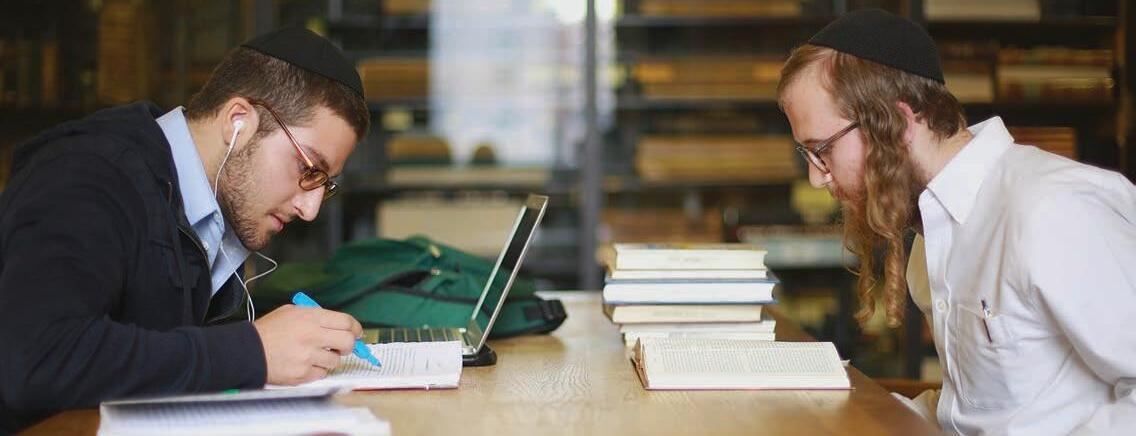








Rabbi Moshe Weinberger says that even those raised in Chassidic homes are coming to his shiurim, seeking to reconnect. “For some of them, Chassidus became a way of life, not a fire. Now they’re seeking a new spirit of Chassidism, a rekindling of the fire of the Besht. There are quite a few old-school Chassidim who regularly attend my shiurim.”
Roots of a Revival
Some credit Reb Shlomo Carlebach as being the first to bring Chassidic-style song and tefillah to the Modern Orthodox world; the first Carlebach minyanim introduced a certain Chassidic spirit and warmth into tefillah. “Many shuls had been having trouble getting a minyan when Carlebach started out,” says Dr. Chaim Waxman, professor emeritus of sociology and Jewish studies at Rutgers University. “His style of davening attracted a lot of people.” Today, neo-Chassidic musicians such as brothers Eitan and Shlomo Katz follow in the Carlebach tradition by offering audiences folksy, often inspirational music and teachings. At YU’s neo-Chassidic Rosh Chodesh minyan, some of the participants bring instruments.
Providing sociological context to the neo-Chassidic trend, Dr. Waxman notes that many hesder/Dati Leumiyeshivot in Eretz Yisrael emphasize Chassidic thought, particularly the teachings of Rav Kook, and American students who study there bring home these ideas. American culture, he says, is particularly receptive to them. “American Jews are brought up around the particularly American idea that religion is something that should be meaningful,” he says. “Spiritual seeking is something that has always been a part of the broader American culture. In the past couple of decades, there has been an increased emphasis on the question, ‘What does religion do for me?’”
Dr. Waxman says that Lubavitch Chassidism, which he claims is the fastest-growing movement within American Judaism, resonates particularly well among the Modern Orthodox because it has traditionally encouraged participation in the wider world, the pursuit of higher education, and reaching out to less-affiliated Jews. “Today, you have well-regarded intellectuals like Rabbi Adin Steinsaltz and Rabbi Joseph Telushkin producing biographies of the Lubavitcher Rebbe,” he points out. In general, the Modern Orthodox as well as unaffiliated Jews are more likely to connect with more outward-focused Chassidic groups such as Lubavitch and Breslov than with more insular groups.
Some young people are aware that their own family trees include Chassidic branches, which generates curiosity about Chassidism that leads to involvement. Those who were inspired by Chassidus in Israel may take on external signs like peyot or a gartel when they return home as a means of distinguishing themselves, as a way of marking the spiritual transformation they felt while in Israel. “The people involved [in neo-Chassidus] are a little unconventional, in the sense that they grew up in the Modern Orthodox world, then come home with peyos and a beard,” says Josh. “The YU world of Rav Soloveitchik and Brisk is very intellectual, and by comparison we may seem hippie-ish; some parents see it as a rejection. But most aren’t rejecting anything.
They’re seekers who are looking for a deeper connection.”
“People are moved by sports and movies,” explains Rabbi Einhorn. “They want to be moved emotionally by religion too.”
Thus, it should come as no surprise that women also find neo-Chassidus appealing. One indication of this is the rise in women-only trips to Uman, led by female teachers such as Rebbetzin Yehudis Golshevsky of Jerusalem. These trips do not take place during the intense High Holiday season, when thousands of men flock to Uman; instead, the women tend to go on Rosh Chodesh, seen as a women’s holiday, and especially on Rosh Chodesh Kislev, which has significance for women since the ancient heroine Yehudis helped bring about the Chanukah miracle.
Rebbetzin Golshevsky, herself a product of a Modern Orthodox home who considers herself Breslov today, has been teaching Chassidic Torah for nearly twenty years in Israel. Her popular classes attract women from across the religious spectrum. Why do they come? “Oxygen,” she says. “The Jewish world is in serious need of oxygen . . . . There is nothing sadder to me than Jews going through the motions of observance without feeling the passion. Chassidus instills in a lot of people that passion, that fire, for serving God. It’s not that you can’t have the fire without Chassidus, but it sure is harder.”
An Unofficial Movement
When did this trend first take root? Some date it back about five years ago, when a small group of YU students who recently returned from studying in yeshivot in Israel decided to set up a chaburah to study Chassidic texts during winter break in the basement of a home in Teaneck. Rabbi Moshe Tzvi Weinberg was among those who delivered the shiurim. “That group snowballed into a lot of what’s happening now,” he says. “It became known as The Stollel, which now runs a Twitter feed and maintains continuous learning. Today the minyan [in Teaneck], which meets for chagim and special occasions, attracts hundreds of people—we had to move it from a home to a shul.”
“It developed into a sort of underground movement,” says Josh. “Some have even taken to calling its followers ‘neo-Chassidic Warriors.’”
But the neo-Chassids from non-Chassidic backgrounds aren’t for the most part moving to Williamsburg or taking on the full Chassidic garb or minhagim. “Neo-Chassidus is turning back the clock 250 years on Chassidism,” Rabbi Bashevkin says. “That was before Chassidic minhagim even existed!” Some neo-Chassids dabble in Chassidic thought and practices, while others engage deeply with them.
“Neo-Chassidus is more about a consciousness, not a style of dress,” says Yitzchak, who maintains a blog for the movement and prefers to be identified by his first name only. “The social [aspect] is also an important part of the avodas Hashem—the cohesion of people sitting around a table together at a farbrengen, traveling together to Uman.”
According to Rabbi Bashevkin, there’s also a lighthearted side in the movement determined to put the gesh-





mack [enthusiasm] back into Jewish practice. “There’s a sweetness and a rich sense of humor in the movement, a component which goes back to Rabbi Nachman of Breslov,” he says. “You have The Stollel’s Twitter feed, and another called #UofPurim— Purim happens to be a holiday that resonates well with this movement.”
Josh notes that this exuberance has a broad appeal. “A Jew is looking to be connected and the soul needs to be filled with something,” he says. “In a world where there’s so much excitement in nonkosher venues, the movement gives one the ability to fill the soul with holy things, giving young people an exciting way to connect to Judaism.”
Proceed with Caution
Not everyone is wholly enamored of neo-Chassidus. Rabbi Blau admits that the singing and dancing aspect of neo-Chassidus serves a need for people looking for ways to connect to Judaism in an immediate and emotional way, and allows young men not cut out for intensive study to find alternative outlets. But he worries that all this feel-good activity may be too easy a substitute for rigorous Torah study, especially among a generation with a low tolerance for delayed gratification. “I represent, to a degree, a more rationalist tradition,” he says. “When I was in yeshivah, the ‘best’ students were those who were either the smartest or most willing to persist for long hours in the beit midrash. How do you judge a ‘top’ student of neo-Chassidus? It’s impossible to know at this point if this trend will produce talmidei chachamim.”
On Chassidus
Excerpted from Rabbi Aryeh Kaplan, Faces and Facets (Brooklyn, 1993), 141.


n the darkest days of Jewish history, Chassidism brought a new hope, a new happiness to millions of people. It brought Judaism to life again, making it meaningful to the masses. The radiance that illuminated two centuries of Jewry may yet have another great purpose to serve.
I was once at a conference where it was discussed what kind of Judaism we will have in America 100 years from now. Some people said the trend would be toward Reform. Others said it would be toward the middle, conservative movements. The pessimists said that there would be no problem, given the current rise in intermarriage, for in 100 years, there would be no Judaism at all in America. But one person suggested that 100 years from now, Chassidic Judaism would dominate the American Jewish scene.
I would agree. The Chassidic spirit, the Chassidic philosophy, is certainly the up-and-coming thing. Perhaps this is our answer, the missing ingredient which will provide our coming generation with a new kind of Judaism, a turned-on Judaism . . . Maybe we have to get involved in this love affair of the Chassidim, this love affair with God.
Rabbi Moshe Weinberger has his own concerns; he cautions against leaping into the fire of inner Torah without taking certain precautions. “If people jump in too quickly, without proper teachers, it can lead to imbalance and confusion,” he says.
“There are many broken people out there looking for a fix. This is a less expensive
high than drugs, but if it’s not grounded in halachah and connected to a living master, it won’t succeed.” Without guidance, the mix of youthful high energy and Chassidic practice can be volatile.
“Young people are still finding themselves,” says Rabbi Moshe Tzvi Weinberg. “If there’s nothing grounding [Chassidic practice], it can degenerate into trendy, even silly New Age-style practices.” Activities such as going to Uman or meditation shouldn’t replace traditional learning, but rather add a deeper dimension to it. Rabbi Weinberg illustrates this idea with an image taken from a Chassidic sefer, which describes a father dancing at a wedding with his young son on his shoulders. The fact that the father has
will be an explosion of meaning in the Jewish world. “Rav Kook, who came from one Chabad and one Litvish parent, wrote that at the end of days there will be a conversation between the followers of the Vilna Gaon and the followers of the Ba’al Shem Tov,” Rosenfeld says. “He said that the students of the Besht will herald the coming of Mashiach.”
Rabbi Mischel likewise tells a story that the Besht interacted with Mashiach in the upper chambers of Shamayim (Heaven), and was told that Mashiach will come when the wellsprings of inner Torah spread to the outside. “Rav Kook wrote that ours would be a ‘wondrous generation,’ in which many things will begin happening all at once,” he says. “Ours is a postmodern reality in which there are many options, and many spiritual options.”
Until Mashiach comes, we can look to this generation’s revival of Chassidus as a way to comfort and warm the Jewish soul in the trying times before his arrival. Rabbi Weinberger relates that a Mitnaged once challenged the Chassidic master, the Tzemach Tzedek (Rabbi Menachem

an obligation to be careful about his precious cargo doesn’t detract at all from the joy of his dance.
Rosenfeld similarly believes that it’s easy for some to pervert Chassidic concepts of joy, prayer and tikkun olam to the detriment of halachic observance. “As much as it’s a problem to be a vessel with no light, you can’t be light with no vessel,” he cautions. Another adherent, Yitzchak, adds that it’s simplistic to view Chassidic practice as all about prayer and kabbalah, and not about serious learning.
“Parts of the Zohar are very dry and technical!” he points out. “Tanya is very complicated—it requires tremendous zitzfleisch [patience].While on the one hand you have these Chassidic stories about people sitting and reciting the Aleph Bet to show that it’s possible to connect to Hashem on a simple level, the intellectual tradition of Chassidus is very deep and sophisticated.” He adds that it can be just as challenging to be matzliach (successful) in prayer as it is to succeed in learning.
Many of the movement’s adherents mention that Chassidic writings predict that in the days before Mashiach there
Mendel Schneersohn, the third Lubavitcher Rebbe): “What’s the difference between you and me? We study the same Torah and observe the same mitzvos.”
“It’s like two chicken soups,” the Tzemach Tzedek replied. “The ingredients are exactly the same. But one is cold— and one is hot.”
Jews dancing at Medzhibozh, Ukraine, on erev Rosh Hashanah.
Andrei Riskin
Chassidic
Photo:

WHEN LEADERS
HEALING FROM RABBINIC SCANDAL
By Yitzchak Breitowitz
In Bernard Malamud’s novel e Natural, an extremely talented ball player, Roy Hobbs, is discovered to have taken a bribe to throw a baseball game. He is barred from baseball for life and all his records are expunged. In a poignant final scene, a young boy turns to Roy with pleading eyes and says, “Say it ain’t so.” But Roy cannot. He simply weeps.
In many ways, this novel is a metaphor for the loss of innocence, for the sadness of discovering that those we thought were paragons of virtue and greatness are flawed, for the sense of betrayal as we are cast adrift by those in whom we put our trust and faith. In many ways, this metaphor aptly describes a crisis that is spreading within the Torah community.
We live in the era of the fallen hero—indeed the tragic hero who is destroyed by the fatal flaw that lies within. In all walks of life, people whom we admired have disappointed us with their failures and weaknesses. We have become disillusioned and cynical. Unfortunately, even within the Torah camp, leaders in whom we placed our trust have betrayed us. And while the overwhelming majority of rabbis, teachers and spiritual mentors perform their tasks with integrity and commitment— and we should never make the mistake of condemning the many because of the sins of the few—many of us have lost faith in the very people who are supposed to inspire us in our faith. We see them engulfed in sexual scandals, child abuse, political intrigue, bribery and fraud. Some are accused of direct wrongdoing, others of cover-up and dissembling. Many have lost faith not only in those who are supposed to transmit Torah but, to some degree, in the goodness and morality of the Torah itself. God’s name and His glory quite literally have been besmirched, the very definition of chillul Hashem.
In some ways, this cynicism and loss of faith may be a greater tragedy than even the very real pain suffered by innocent victims (a pain that I certainly do not want to minimize in any way). The tragedy of cynicism presupposes that everything is tainted. Nothing good is real. No one is sincere. Everything is a gimmick. Everyone is a charlatan and a faker. And what is the use of pretending otherwise? These attitudes suck up hope the way a fire sucks up oxygen. They destroy spiritual strivings. They destroy hope for the future. They engender passivity and bitterness and ultimately become a self-fulfilling prophecy of defeatism and hopelessness. It is precisely at this juncture that we have to take stock and articulate some basic simple principles.
The great Rabbi Moshe Chaim Luzzatto writes in the
introduction to the Mesillat Yesharim that he will be restating obvious principles that are known by all but are often forgotten in the pressures of the moment. And while his claim of a lack of innovation may be untrue, I humbly admit that this article will contain few chiddushim (novel thoughts). Sometimes, however, there is value in restating the obvious. Let me start with two basic points.
First, do not condemn the Torah. Rabbi Abraham Joshua Heschel once famously remarked that it is a big mistake to judge Judaism by the behavior of Jews. The Torah is greater than any one person or institution. The fact that we do not always live by its ideals cannot be an indictment of the ideals themselves.
Second, we live in an imperfect world. People are not all white and pure, nor are they all black and tainted; people come in an infinite variety of grays. The fact that we—all of us—are capable of great sin does not exclude the possibility, and the reality, that we are capable of great good. And indeed, the good that we accomplish is not forfeited by the evil that we perpetuate. As a result, we ourselves must avoid the arrogance of smugly sitting in judgment over the weaknesses and failures of others and, chas v’shalom, even gleefully rejoicing in the “downfall of the mighty” (an attitude that is quite evident on the Internet).1 Demonizing the other can sometimes be a convenient excuse to avoid our own cheshbon hanefesh (personal accounting), one that is necessary to make our communities safer, and ultimately, holier. Thus, whatever mussar I may offer, and it may occasionally sound harsh, does not come from a place of moral superiority or self-righteousness. It is not intended as a personal attack on others. I offer these thoughts as an introspective reflection directed to myself and to any others who may be interested—an enumeration of some things we can do as a community, a listing of pitfalls to be avoided and some assorted thoughts of comfort and chizuk as we face difficult and painful times.
PROTECT THE VULNERABLE
First and foremost, the Jewish community has a solemn responsibility to make its sacred spaces—shuls, mikvaot, yeshivot, day schools and camps—safe. If people have been
Since April 2010, Rabbi Yitzchak Breitowitz has been a maggid shiur at Yeshivat Ohr Somayach in Jerusalem and rav of Kehillat Ohr Somayach. Prior to his family’s aliyah, he was the rabbi of the Woodside Synagogue in Silver Spring, Maryland, and associate professor of law at the University of Maryland.
harmed physically, emotionally or financially, their pain must be acknowledged and addressed. They should not be dismissed as troublemakers. Our children and our adults must be protected, and those who legitimately seek to protect those in need should not be disparaged or ignored. And if recourse must be had to the secular authorities and the legal process, then so be it. Any attempt to invoke the law of mesira to shield serious abuse is misguided, if not downright evil. This is axiomatic.2
This is not the problem of any one specific synagogue or institution. It is a problem that the entire community must face. There is an element of collective guilt in the fact that we as a community allowed these abuses to occur, did not respond to the problems that were brought to our attention, ignored them, swept them under the rug. If a corpse is found near a city, the elders of the city as representatives of the community are guilty for failing to take steps that would have ensured the safety of the victim. They too are designated “spillers of blood” and they too need atonement. (See Devarim 21:1-9 and Mishnah Sotah 9:6.) We are precisely in the position of those elders.
But fixing the problem, truly fixing it, will take more than simply ensuring that bad behaviors will not reoccur. There is a history that needs to be addressed. Communities and individuals have suffered profound psychological dislocations that cannot be ignored. People have a deep sense of being violated—physically and emotionally. There is pain, anger, rage and confusion. These feelings do not just disappear by making improvements and simply moving on as if nothing ever happened. A person who suffers a vicious amputation by someone he or she admired and even loved is not restored by a prosthesis. The victims—past and potential—have voices that must be heard and respected, concerns and feelings that deserve articulation. There are, of course, laws of lashon hara, and I am not necessarily envisioning full public exposure in the media (though this happens anyway), but at least within the limited community of responsible leadership, those who were harmed must be able to speak.3
Both rabbis and laity must be educated as to what behaviors are normal and acceptable so that they (we!) will be able to evaluate whether a given behavior is outside that norm. Otherwise, people literally do not even know whether they
have been wronged; they are the proverbial child who cannot even ask the question. To the degree consistent with halachah, the appropriate standards should not be pronouncements issued ex cathedra. The offended and vulnerable populations must have a significant role in formulating these standards. This is important because they have first-hand knowledge of the problems and abuses. But equally important, such participation partially restores their sense of respect and dignity that had been so ruthlessly stripped away. It is our responsibility to “have their backs,” so to speak, and we must convey to and convince the victims that we are there for them—a daunting task since we have dropped the ball so many times in the past.
DON’T EXAGGERATE
At the same time, however, one must look at the total picture. What needs to be fixed must be fixed, but do not throw out the good with the bad. We must be careful not to exaggerate. First, the halachic requirements of judging people favorably and giving them the benefit of the doubt continue to exist. These halachot have not vanished (although a school or shul may take provisional temporary steps to prevent possible endangerment or abuse in the interim investigative period). Second, portraying the rabbinate or Torah educators, or both, in a uniformly negative light when the vast majority of rabbis and Torah teachers perform their tasks with excellence and
As one moves further and further away from the cultivation of a private intimate relationship with the Almighty, as one's persona becomes the dominant aspect of his inner reality, one's spiritual life becomes increasingly empty.
commitment is not only a scurrilous and libelous attack on dedicated people who try to serve Hashem and His people with great devotion, but is a tremendous disservice to Am Yisrael, causing many to lose respect for Torah leaders and for the Torah itself.
While even a single victimized child or adult is one victim too many, and while we as a community must try to vigorously uproot any vestige of these improprieties, the solution is not the tarnishing of a noble institution. In the superheated atmosphere of the Internet, everyone is guilty until proven innocent and indeed quite often, is guilty even after being proven innocent. In this world of hyperbole, gossip, unsubstantiated rumors and personal vendettas, a casual reader might conclude that the rabbinate, and indeed the entire Torah community, has run amuck, is utterly devoid of any semblance of morality and is nothing less than the modern incarnation of Sodom and Gomorrah. This does not reflect reality, and it is important that our children know this.
Moreover, we must avoid using the personal sins of individual rabbis as a basis for attempted overhaul of halachah. For example, many are now calling for significant changes in the time-honored halachic procedures of how female candidates for conversion should immerse in the mikvah. Without addressing the substance of these proposals, it is clear that they have nothing to do with the mikvah scandals that have erupted. As far as I know, there
have been no scandals involving these procedures and changing them would have no effect on the wrongdoing that actually took place. Calls for this type of reform are offering “solutions” to nonexistent problems and do little to fix the existing ones. They are subtle attempts to disparage halachic tradition and halachic authority. Proceed with caution.
NEED FOR BOUNDARIES
Most of the recent scandals—not all—involve abusive or exploitive treatment of women. Many, not all, of these problematic encounters started quite innocently in the context of counseling, spiritual advice and the like. What is needed is a code of ethics, a “fence” of sorts that would prevent benign encounters from escalating. No better code of ethics exists than the Shulchan Aruch itself. Counterintuitively, a rabbi may fail to apply the Shulchan Aruch to himself (and after all, who is going to correct him?). Even with the most noble of intentions, this is an enormous mistake with devastating consequences.
There are very good reasons why halachah prohibits the seclusion of a man with a woman and, in response to the plethora of litigation based on sexual harassment, these reasons have been appreciated even by secular culture.4 The laws of yichud (seclusion) and negiah (affectionate physical contact) reflect the reality that sexual attraction is a very potent, powerful and somewhat uncontrollable force, and we have the responsibility to ensure that certain lines are not crossed.5 The Shulchan Aruch generally prohibits flirtatious or intimate talk between men and women, even if the technical strictures of yichud and negiah are not violated.6 Emotionally intimate talk can easily lead to improper physical contact, or at the very least, emotional manipulation. I do not mean to draw a pejorative comparison between Modern Orthodoxy and the Chareidi/Yeshivah/Chassidic world. I am painfully aware that scandals have emerged from all camps. Nor am I suggesting the desirability of total gender separation. For good or for bad, that is not the world we live in, and it is important for women to have a rav with whom they can consult and interact in a comfortable way. But overly familiar, flirtatious, suggestive behavior is playing with fire. It can easily get out of hand, and even when it does not, it can be easily misinterpreted. Such behavior is dangerous to a rabbi’s reputation, can lead to grossly inappropriate behavior and can irretrievably damage the relationship with his own spouse. Comments about a woman’s looks, weight, attractiveness or desirability are simply inappropriate under virtually all circumstances. Any personal reference that makes a woman
uncomfortable should not be said at all. The dedicated male seminary teacher who wants to have an intense tete-a-tete with a student to help her discover the infinite richness and beauty in her soul may or may not be starting off with the best of intentions, but he is heading down a path of destruction either way.
A rabbi might justifiably feel that his intentions are leshem Shamayim, that his sole desire is to help a person in need, that he is beyond the baser instincts that may drive “regular” people astray. This was precisely the mistake of Shlomo HaMelech, the wisest of all men. He too thought he was above temptation. He too thought that the Torah’s rules against accumulating wealth and excessive wives should not apply to him because he was in no danger of losing his bearings and straying. And he discovered that we are all vulnerable and weak, that we can all fail, and that is the very reason we all need to adhere to the bright lines of the halachic system.7
We live in the era of the fallen hero, indeed, the tragic hero who is destroyed by the fatal flaw that lies within. In all walks of life, people whom we admired have disappointed us with their failures and weaknesses.
THE DESTRUCTIVE NATURE OF PRIDE AND OVERCONFIDENCE
Chazal tell us “Do not fully trust yourself until the day of your death” (Avot 2:4). Yochanan served as a righteous kohen gadol for eighty years, and yet at the end of his life became a Sadducee.8 Shlomo HaMelech was the wisest of all men and thought he was immune to temptation, yet he succumbed. On the holiest day of the year, Yom Kippur, the kriyat haTorah of Minchah is the parashah dealing with forbidden sexual relationships—adultery, incest, bestiality. Given the exalted state we reach on that day, such a reading seems an odd choice. Should we not focus on something more spiritually edifying and inspirational? The answer is, that is exactly the point. At the very height of our spirituality, at the apex of our accomplishments, we need to be acutely aware of our capacity to fail. We can never take our spirituality as a given. As righteous as we may think we are, indeed, as righteous as we may in fact be, we can easily slip and need to be vigilant. When we as rabbis are arrogant, smug and overconfident in our religiosity or Torah knowledge, and feel a sense of personal superiority over the people we have pledged to serve, it is precisely at that point that we will fail. “Pride comes before the fall” (Mishlei 16:18).
The story is told about an extremely pious individual who took every conceivable precaution to eradicate chametz from his home on Pesach.9 As he sat at his Seder joyous and confident that he had completely fulfilled the Torah’s commandments, he sees to his utter shock that
there is a kernel of split grain floating on top of his chicken soup. Overcome with grief, he faints. In his dream, he has a vision of the Almighty. He asks God two questions: How did this happen? And, why did it happen? And God answers, “Indeed your house was chametz-free, but your pot was in the fireplace under the chimney. A bird flying over your house dropped a kernel of grain into the pot, making everything chametzdik. As to why it happened, your preparations were perfect. You took every possible step to guarantee halachic perfection, except the most important one—to pray to Me for siyata d’Shmaya. You thought you were in charge; you believed you were in control. When you live with that delusion, you will fail. “Veram levavecha veshachachta et Hashem Elokecha Veamarta bilvavecha, ‘kochi v’otzem yadi asah li et hachayil hazeh,’” “And your heart will become haughty and you will forget Hashem, your God . . . . And you will say in your heart, ‘My strength and the might of my hands have made me all this wealth”’ (Devarim 8:14, 17). The arrogance of which the Torah speaks can be the result of spiritual attainment just as much as material wealth. Indeed, Chazal saw spiritual hubris as the very foundation of Dovid HaMelech’s sin. Confident of his righteousness, he challenged the Almighty to test him. God did so, and Dovid HaMelech failed. (See Sanhedrin 107a.) All people need the mercy of Hashem. Without God, all of us will fail. Infallibility is not a human trait.
A rabbi in particular may be prone to the sins of arrogance and hubris, especially if he is talented. While not necessarily the smartest person in the room, he is usually the most Jewishly knowledgeable. He determines how people are married, buried and converted. He literally makes life-and-death decisions and often has little need to justify, explain or defend those decisions. (“This is a technical halachic matter, too deep and complicated for you to understand,” et cetera.) As Lord Acton remarked, “Power tends to corrupt, and absolute power corrupts absolutely.” When there is a power relationship, when people approach you in their moments of vulnerability and weakness, and when people praise you for your scholarship, organizational abilities and debating finesse, there is the risk of arrogance, of kochi v’otzem yadi. One forgets that he is in the employ of God, and that whatever talents one was vouchsafed must be employed exclusively
for the glory of God. It becomes about you, and when you become the focus, anything goes. Dovid HaMelech takes Batsheva and sends her husband to his death. Yochanan Kohen Gadol becomes a Tzeduki after eighty years of faithful service. The messenger gets tarnished and the message corrupted when it is intertwined with power, influence and control.10
THE DANGERS OF CHARISMA AND THE PERSONALITY CULT
Both as communities and individuals, we need to avoid dependence on charismatic leadership and the personality cult. We are setting ourselves up for disappointment. The rabbi is setting himself up for the “pride that comes before the fall.” The Alter of Slobodka deliberately spoke in a dry monotone to minimize his personal charisma. He wanted people to be affected by the content of his words, not the style of his personality. Indeed, the Derashot HaRan11 teaches that Moshe Rabbeinu was kevad peh and kevad lashon (had a serious speech impediment) precisely for the reason that people should not elevate him to the status of a demigod and be moved and inspired by his hypnotic oratorical abilities. (For the same reason, the Torah conceals the place where Moshe is buried12 and, according to some commentaries, this is also why Moshe’s name is not mentioned in the Pesach Haggadah.)
Rabbi Berel Wein13 describes the dangers of charismatic leadership very well:
We love the flash of brilliant insight, the devastating quip, the broad permanent smile, the warm embrace and the hero
worship that characterize the person who possesses that elusive quality of charisma . . . . Yet, like all other seeming blessings, charisma carries within it seeds of self-destruction.
The charismatic personality is likely to succumb to the temptation of believing all of the adulation showered upon him or her. In the triumphant parades of the Roman emperors, a servant rode along in the emperor’s chariot and whispered to him, amidst the din of the cheering throngs, a reminder of his past failings and future mortality. Believing in one’s own charismatic qualities builds one’s ego to ferocious heights. And an inflated ego always leads to downfall and personal defeat. It allows the guilty to eventually believe in their own perfect innocence and to expect others to do so as well. Prideful haughtiness goes before a fall, opined King Solomon long ago. Prideful haughtiness is very often a byproduct of the charismatic personality.
Similarly, Naomi Mark,14 a clinical psychologist, has written about the strong correlation between charisma and narcissism. She quotes psychoanalyst Heinz Kohut, who, describing the narcissistic personality, notes the “high energy levels, the apparent confidence and lack of self-doubt, and the strong sense of mission.” These qualities can be the very qualities that produce outstanding
leadership but become pathological when the “grandiosity, fantasies of success, lack of empathy, excessive need for attention and approval, and inability to tolerate [alternative viewpoints] interfere with the individual’s functioning in work and love.” The very character traits that make a candidate alluring and attractive may be the source of serious difficulties down the road.
There is yet another danger that charismatic leadership poses, a more subtle one that may be especially damaging to adolescent students, ba’alei teshuvah and candidates for conversion. Such leadership tends to be autocratic, controlling and disparaging of individual choice and personal autonomy (even within the bounds of halachah). These are warning signals that should not be ignored. Leadership that tries to micromanage not only institutions but individual lives is inherently suspect. At least within the non-Chassidic tradition, the role of rabbis, roshei yeshivah, teachers and spiritual mentors is to inform, educate and inspire, not to command and direct. The students/congregants are expected to think for themselves and to have the ability and maturity to make decisions and take control of their lives; the rabbi’s function is to enable and enhance the development of those capacities.
From my own personal experiences, I can say that this was very definitely the approach of my roshei yeshivah, Rabbi Yaakov Yitzchak Ruderman and Rabbi Yaakov Weinberg, as well as that of Rabbi Yaakov Kamenetsky, all of blessed memory; and this was deeply rooted in the teachings of the Alter of Slobodka. As mechanchim par excellence, they saw their role as helping the student formulate his own approach to life and not simply be an automaton blindly following either the leader or the crowd. From the disciples of the Rav, I gather that Rabbi Joseph Ber Soloveitchik was exactly the same. This indeed was historically characteristic of the Litvishe gadol. 15
Even within the Chassidic world which, to some degree, has a different mesorah, there is at least the occasional exhortation to “think for yourself.” My wife’s experience with the greatly lamented Rabbi Shlomo Twerski is instructive. He would often declare with great passion that neshamot are not cookie dough to be cut in uniform shapes and sizes but precious diamonds to be cleaned and polished, exposing the beauty and luster from within; the goal of the rebbe is to help the talmid discover the uniqueness and individuality within himself.16
Leadership predicated on personal charisma, however, does exactly the opposite; it discourages autonomy and confidence on the part of the congregant or student, fosters an unhealthy dependency and vulnerability, limits the capacity for self-expression and inner spiritual growth and, in the guise of a connection to a respected religious authority, may actually undermine the development of a personal relationship with God. Moreover, by linking one’s Judaism so closely to the charismatic personality of an individual rather than to the Torah and Hakadosh Baruch Hu, the relationship to God may be totally destroyed when the all-too-human intermediary fails or falters.
sensitivity, et cetera. In this way, he was the forerunner of the Mussar Movement founded by Rabbi Yisrael Salanter. (In fact, Rav Salanter was the disciple of Rabbi Yosef Zundel, a hidden tzaddik who studied under Rabbi Chaim Volozhin, the greatest talmid of the Gra). Indeed, the Gra, who could hardly be accused of devaluing the study of Torah, writes repeatedly that tikkun hamiddot (rectification of character) is the central purpose of our existence.18
It is equally true that in choosing a rav or spiritual mentor, one of the most important qualities to look for are middot tovot. “If the teacher is comparable to an angel of God, seek Torah from his mouth. Otherwise do not.”19 A rav is compared to the kohen,20 who in turn is described in Avot (1:12) as “ohev shalom v’rodef shalom,” “one who pursues peace and loves peace, loves all of God’s creations and endeavors to bring them close to Torah.” Indeed, Rambam codifies as a matter of halachah that one should not learn Torah from a teacher who does not follow the good path no matter how learned he may be.21 Torah is more than disembodied information. It emerges not only from the mind but from the totality of the soul. We must endeavor to find teachers who have the qualities of the soul within which Torah can reside.
Believing in one’s own charismatic qualities builds one’s ego to ferocious heights. And an inflated ego always leads to downfall and personal defeat.
CHOOSE YOUR RABBI CAREFULLY
Erudition, scholarship and personal magnetism are no guarantee of spirituality and inner goodness. Chazal tell us that Torah is compared to water. The Vilna Gaon (Gra) offers a fascinating explanation. Water has the capacity to cause growth of whatever seeds it happens to fall on. If the seeds are wheat, the water will cause the germination of wheat; if the seeds are poisonous weeds, the water will facilitate the growth of weeds. So too Torah learning will develop and accentuate the preexisting qualities of the soul. If one is imbued with compassion, kindness and humility, then Torah study will make him more so. If one is competitive, arrogant and self-aggrandizing, Torah scholarship will simply create another battlefield in which those qualities can be expressed.17 As such, the Gra emphasizes the need to combine analytical Torah study with conscious development of character, interpersonal
All of this suggests that communities must pay much closer attention to the moral qualities and personality traits of the leaders and role models that they choose. That certain flashy qualities might be overvalued in the selection process while other qualities—gentleness, modesty—are undervalued or even disparaged will only hurt the community in the long run.
THE COMMUNITY’S NEED: TRANSPARENCY AND ACCOUNTABILITY
Why does the Torah go into so much detail about the korbanot, and why is a kohen not permitted to contaminate himself by contact with a corpse? Rabbi Saul Berman22 once offered an intriguing thought. The kohen has great power; the power to effect atonement, reconciliation with the Creator. He has access to holy places that no one else may enter. He can perform rituals that no one else can perform. He is in charge of a cosmic apparatus that literally determines the survival of the world. This puts him in a position of control, and with that control comes the potential of abuse and manipulation. The antidote is transparency and accountability. Every Jew is entitled to know what the avodat hamikdash is and how the kohen performs it. The avodat hamikdash must be demystified and clearly explained so it does not become a force of control. For the same reason, the kohen effectively distances himself from people at the moment of their
greatest vulnerability and weakness, for it is precisely at those moments that the potential for manipulative control is at its maximum. Rabbi Berman suggests that these considerations have relevance to the rabbinate as well. Rabbinic rulings, procedures and standards should not be seen as arbitrary, mysterious pronouncements whose authority is grounded in personal charisma but should be explained in terms accessible to the kehillah. While it is incontestable that a rabbi must be the final halachic authority within his congregation, it is equally true that he must be able to explain his positions, his standards and his behaviors. As Justice Louis Brandeis remarked in a different context many years ago, “Sunlight is the best disinfectant.” Anything that cannot be explained was probably not justified in the first place. Rabbi Yossi aptly stated, “I never did anything for which I had to turn around and see who was watching me” (Shabbat 118b).
THE RABBI’S NEED: A CHAVER AND A REBBE
Numerous statements in Tanach and Chazal emphasize the importance of consulting others and learning from others, both in terms of Torah and in the practical dayto-day decisions of life.23 “Aseh lecha rav u’knay lecha chaver,” “Make for yourself a teacher and acquire for
yourself a friend/colleague” (Avot 1:6); “Eizehu chacham halomed mikol adam,” “Who is wise? He who learns from all people” (Avot 4:1) are just two of many examples. Indeed, even Hakadosh Baruch Hu “sought,” as it were, the counsel of the angels before creating man (“Let us make man”).
As great a figure as Rabbi Elazar Shach stated that it is essential that decision-making be a collaborative enterprise, that different viewpoints be shared and expressed, and he would refuse to give a haskamah to any mosad (institution), no matter how noble, where all the decisional authority was entrusted to a single individual.24 Autocratic leadership results in bad decisions, but even worse, it inculcates a sense of superiority, invulnerability and being above the law. “Do not judge alone for there is only One who is qualified to judge alone” (Avot 4:10).
But the need for a chaver and a rebbe goes well beyond the specifics of particular decisions and policies. Rabbis are professional purveyors of Judaism. “Spirituality” is their bread and butter. Paradoxically, a rabbi may be so busy marketing his religion that he has little time or energy to replenish his own spiritual batteries. And yet, one cannot truly give what one does not possess. (“That which is always giving out is unable to absorb.” 25) As one moves further and further away from the cultivation of a private intimate relationship with the Almighty, as one’s public persona
It is especially vital that we communicate to our children not to lose faith in humanity, in Judaism and in themselves . . . not to succumb to cynicism and despair.
becomes the dominant aspect of his inner reality—as indeed there may be no inner reality—one’s spiritual life becomes increasingly empty.26 When that happens, there is the real risk that the vacuum will be filled with the incessant (and ultimately self-defeating) drive for kavod, recognition, honor and ego gratification.27 And when these become our primary motivators in life, we become vulnerable. We face self-idolization at worst; at best, the empty shell of burnout. We become the “rabbis at risk” who eventually put our communities at risk.
Every soul needs to be nourished authentically, and Chazal’s admonition of “aseh lecha rav u'knay lecha chaver” is not simply practical, pragmatic advice for good decisionmaking, which it surely is, but a call for personal growth. A rabbi needs a space where he can shed the persona of the professional and be a simple person, a pashuter yid. He needs mentors and colleagues with whom he can learn and grow and, at least for a short time, escape the tensions of communal life. He needs to hear the still, small voice of God (kol demamah dakah)28 that is within him, to hear the sounds within the silence, away from the roar and the acclaim, or the derision and abuse, of the crowds, to rediscover himself and thereby find the Almighty.
THE POWER TO CHANGE, THE GIFT OF TESHUVAH
Virtually every person who enters the rabbinate is a person of high idealism, devoted to God, Torah and the Jewish people—one who genuinely wants to make a difference for the good in the lives of fellow Jews and is willing to make great personal sacrifices to accomplish this mission. This is certainly true of the great majority of rabbis who perform their duties with integrity, with nary a whiff of scandal, but it is also true for the rabbis who fail. They too brought to their ministries qualities of goodness, devotion, commitment and self-sacrifice. They too have done much good, and they too have the potential to do much good in the future. To paraphrase an old commercial, “a life is a terrible thing to waste.” Although some might criticize any focus on the pain suffered by these “fallen rabbis” (i.e., who cares?), it is precisely that pain that I want to address, for there are lessons to be learned both for them and for us. It is especially vital that we communicate to our children (and that necessitates that we believe it ourselves) not to lose faith in humanity, in Judaism or in themselves; not to succumb to cynicism and despair; to hear and internalize the message that yes, even great and good people make mistakes, but in the aftermath of failure, there is the possibility, and therefore the obligation, of rebuilding.
This lesson is of such crucial importance that it may be the reason why the malchut of the Jewish nation was assigned to the Tribe of Yehuda rather than to the Tribe of Yosef. One thought that appears with some frequency in sifrei Chassidut and kabbalah29 focuses on the different ways these two personalities respond to temptation. Yosef successfully rises above sin, simply defeats it; “just says no.” We stand in awe of his moral perfection and spiritual strength. Yehuda, on

the other hand, succumbs to temptation in a moment of weakness as his descendant Dovid HaMelech does later. He fails, but through sincere and honest teshuvah and by taking responsibility for his misdeeds, he is forgiven. God wanted us to fully appreciate the awesome power of teshuvah to elevate and purify and thus chose the ba’al teshuvah over the tzaddik gamur. God’s message is one of hope, recovery and resilience.
Rabbi Yitzchak Hutner30 noted long ago that although we are very familiar with the great successes of our gedolim—their brilliance, their hasmadah (diligence), et cetera—we know much less about their struggles, their mistakes and their failures. But in many ways, knowing how they dealt with setbacks and disappointments might be far more useful and instructive than simply viewing them as superhuman and perfect. (He was thus a bit
critical of the hagiographic tendencies in the biographies of gedolim.) The true measure of greatness is growing and learning from our failures. “The tzaddik may fall seven times and rises” (Mishlei 24:16) does not mean he rises despite falling but rather it is the very confrontation with his inner demons that is the source of his greatness.
Thus, it is essential that those who fail—and those who sit in judgment on that failure—carefully ponder three points:
1. If you believe it is possible to destroy, believe it is possible to rebuild.
2. The good that a person does is not destroyed by the evil.31 A lifetime of good work, Torah scholarship and helping countless people in need is not destroyed by sin or mistake. Every person will have to give a din v’cheshbon for his aveirot, but the bad does not cancel out the good.
The good remains. The good within the person remains. It is still there. The fact that someone fails does not mean that his or her life was a failure.
A story is told that the Gra was once in prison together with a Jew who was a convicted murderer. When bread was brought to the cell, the murderer proceeded to eat without netilat yadayim. The Gra told the murderer that he is obligated to wash his hands. When his cellmate remarked that he was guilty of far greater sins than neglecting netilat yadayim and could not imagine that washing would make any difference to the Almighty, the Gra responded that one has nothing to do with the other. One may be guilty of the most heinous of sins, but God still desires that whatever good one can do, one must do. The good remains.32
3. Divine gifts come in many forms, and sometimes the gift of devastating personal failure is an opportunity to acquire humility. People can and do change as a result of confronting their inner demons. “God does not desire the strength of the horse nor the thighs of man. God favors those who fear Him, those who yearn and hope for His loving kindness” (Tehillim 147:10-11). Rabbi Tzadok of Lublin33 explains that the “strength of the horse” metaphorically refers to the energy and the effort we put forth in trying to do good in the world. The “thighs of man” refers to the self-control we exhibit in holding ourselves back from committing evil. Both are important and valuable. But both can be tainted with smugness, arrogance, ego and self-righteousness. What God treasures above all are the qualities of humility and modesty, as well as an awareness that all that we are and all that we accomplish are only by the grace and mercy of God, that left to our own devices failure is inevitable. (Thus, we need to yearn for God’s loving kindness.) It is precisely this awareness that enables us to treat others with respect, to admit when we are wrong, to be open to positive and constructive criticism and to change for the better. And it is precisely this awareness that ultimately empowers us to be a faithful conduit of Hashem’s Torah.
how they responded to the rebuke of the prophets. When the prophet Shmuel confronts Shaul, Shaul first denies the accusation (“I did the will of God”) and then blames others for his failure. By contrast, when Natan communicates to Dovid the enormity of his offense through the parable of the rich man and the lamb, all Dovid does is utter two words, “chatati laShem,” “I have sinned.” No excuses, no mitigating circumstances, no blaming of others. 36 Indeed, Dovid followed the noble example of his ancestor Yehuda who similarly stepped forward to declare publicly “tzadkah mimeni, ” “she [Tamar] is more righteous than I.”37 God does not expect our leaders to be perfect; God does expect them to take responsibility when they fail.
Divine gifts come in many forms, and sometimes the gift of devastating personal failure is an opportunity to acquire humility.
Second, teshuvah requires seeking the forgiveness of those who were wronged, primarily specific victims but including also the community as a whole that experienced significant betrayal.38 Rabbi Hutner39 eloquently explains that when a person hurts another, the damage he inflicts is not only the particular hurt the victim suffered but the fact that the victim feels psychologically violated, less secure in the world, bitter, angry, betrayed, less able to trust. The victim, in a sense, has become diminished as a person, and the perpetrator must do what he can to restore the person to his or her wholeness. Bakashat mechilah (asking forgiveness), then, is not simply an apology for the past but an attempt at restoration. And learning how to forgive is part of that restorative healing process as well. We are all weak and vulnerable, and we should look at all people with compassion and forgiveness. We must learn to forgive not only for the benefit of the sinner but for ourselves. A heart filled with anger and resentment can never move on. It is stuck. There is no room for God.
But teshuvah is neither easy nor cheap. First, teshuvah necessitates taking responsibility for one’s actions rather than denying, equivocating or blaming others. When Shaul HaMelech failed to fulfill his duty to eradicate Amalek, he was not given a second chance. He was told that the malchut would be taken from him and given to someone better and more suitable. When Dovid HaMelech, on the other hand, committed sins that were arguably more severe, i.e., adultery and murder,34 he remained king and indeed his dynasty will produce the Mashiach. Rabbi Yosef Albo35 suggests that the key distinction between Shaul and Dovid lay not in the nature of their sins but in
Third, teshuvah does not automatically mean restoration to a prior position.40 To take an extreme case, no sane person would argue that a repentant child molester should go back to teaching children. This is so for two reasons. First, it is impossible for anyone to gauge the true depth and sincerity of the teshuvah process. Second, even a sincere teshuvah may not be able to withstand a strong, overpowering temptation and the ba’al teshuvah may falter.41 We simply cannot take the chance that innocent people, especially children, may be harmed. Nevertheless, assuming we can minimize these risks, the person who takes responsibility, works to improve and sincerely seeks the forgiveness of those he harmed deserves the gift of a second chance to be of service to Klal Yisrael. All of us earnestly pray that God will give us these chances when we need them. God shows us the compassion that we are able to show to others.42 g
CAN THERE BE TESHUVAH FOR CHILLUL HASHEM?
The sin of a spiritual leader, especially when that sin becomes known to the public, carries a much greater level of severity. In addition to the sin itself, there is a chillul Hashem, a desecration or profanation of God’s name, as the rabbi’s misconduct brings shame and disgrace on the Torah.43 This would even be the case if the misbehavior would not otherwise be a serious sin (e.g., rudeness in the checkout line or cutting someone off in traffic), and the chillul Hashem is obviously compounded by the gravity of the offense. According to Rambam,44 one who is guilty of chillul Hashem has no atonement (kaparah) until the day of death. Neither teshuvah nor Yom Kippur nor even suffering can erase the stigma of the sin. Standing alone, this ruling might suggest that although teshuvah is a necessary component for forgiveness, it is insufficient; there is literally no atonement possible within the confines of Olam Hazeh. However, this ruling does not, in fact, stand alone and other factors must be considered. There are at least five halachic arguments that suggest that even the sin of chillul Hashem is amenable to sincere teshuvah.
First, Rabbeinu Yonah of Gerona,45 in his classic work Shaarei Teshuvah (a work that the Chofetz Chaim consistently treated as an authoritative halachic—not just mussar—source), posits that even the perpetrator of chillul Hashem can receive atonement by dedicating his life to kiddush Hashem, acts of loving kindness and intensive Torah study, that God in effect gives the penitent the chance to repair the desecration of God that he caused by bringing glory and honor to the Almighty’s name.
Second, even Rambam himself seems to concede that sincere teshuvah restores man’s relationship with God, irrespective of the magnitude of the sin, apparently including even chillul Hashem. In chapter 7 of Hilchot Teshuvah, Rambam writes: Teshuvah is great for it draws a man close to the Shechinah . . . . Teshuvah brings near those who were far removed. Previously, this person was hated by God, disgusting, far removed and abominable. Now, he is beloved and desirable, close and dear. How exalted is the level of Teshuvah! Previously, the [transgressor] was separate from God, the Lord of Israel, as (Isaiah 59:2) states: “Your
sins have separated between you and your God.” He would call out [to God] without being answered, as (Isaiah 1:15) states: “Even if you pray many times, I will not hear.” He would fulfill mitzvot, only to have them crushed before him, as (Isaiah 1:12) states: “Who asked this from you, to trample in My courtyards,” and (Malachi 1:10) states: “‘O were there one among you who would shut the doors that you might not kindle fire on My altar for no reason! I have no pleasure in you,’ says the God of Hosts, ‘nor will I accept an offering from your hand.’” Now, he is clinging to the Shechinah, as (Deuteronomy 4:4) states: “And you who cling to God, your Lord.” He calls out [to God] and is answered immediately, as (Isaiah 65:24) states: “Before you will call out, I will answer.” He fulfills mitzvot and they are accepted with pleasure and joy, as (Ecclesiastes 9:7) states: “God has already accepted your deeds,” and (Malachi 3:4) states: “Then shall the offering of Judah and Jerusalem be pleasing to God as in the days of old and as in the former years” (translation by Rabbi E. Touger).
In contradistinction to chapter 1 where teshuvah’s power of atonement is quite limited, chapter 7 describes teshuvah as completely transformative and purifying, fully restoring a relationship of love with the Almighty, allowing the ba’al teshuvah to find favor and grace in God’s eyes once again. Apparently, the need for atonement (kaparah) in chapter 1 is connected to a spiritual “debt,” a liability that is owed for the sin, a punishment that must be expiated—a burden that is not erased until death, and one that the ba’al teshuvah must always carry in his heart—but the existence of that debt/liability is not relevant to the purity of the penitent’s soul and his reacceptance into the community of God and Israel, provided he complies with the requirements of the teshuvah process, e.g., seeking forgiveness from victims, et cetera.46 It is only the kaparah aspect of teshuvah that is limited; its power of taharah (inner spiritual purity) is boundless, limited only by the sincerity of the sinner and the depths of his contrition and resolve. Three other arguments, less rooted in the language of Rambam and Rabbeinu Yonah, are presented in the footnote.47
EMPIRE
AD
Notes
1. See Rambam, Hilchot Teshuvah 4:4, where he discusses the very great sin of getting honor, i.e., smug satisfaction, out of the downfall or humiliation of others (mitchabeid b’klon chaveiro). This is often described by the German word “schadenfreude.”
2. Mesira is the prohibition of one Jew “informing” on another Jew by notifying non-Jewish authorities. See Rambam, Choveil U’Mazik 8:9-10. The moser (informer) was such a despicable person that he could be summarily executed. Some have applied the concept of mesira to prohibit the reporting of abuse to secular law enforcement, but this is an error. See the ruling of Rabbi Yosef Shalom Elyashiv in a 2004 letter to Rabbi Feivel Cohen, Kovetz Teshuvot III, no. 231. I am not addressing the very controversial question of whether a rav needs to be consulted first. Compare Rabbi Yosef Gavriel Bechhofer’s article in Jewish Action (“Discovering Rav Elyashiv,” summer 2013) and the subsequent letter to the editor by Ben Hirsch appearing in the fall 2013 issue.
3. As important as the laws of lashon hara are, they cannot stifle the need to redress evils and prevent harm. The Chofetz Chaim discusses at great length when and how a person who has suffered harm by the actions of another party may discuss that harm with others in order to prevent its reoccurrence in the future. See Chofetz Chaim, Laws of Lashon Hara, Klal 10, par. 11-14. He further suggests that there may be (“efshar”) a separate positive and legitimate benefit in enabling people to express their fears, anxieties and resentments if this could bring them to a certain degree of inner healing and closure, citing the verse in Mishlei 12:25 (as interpreted by Yoma 75a): “If there is worry in the heart of an individual, let him share that worry with another.”
4. As employers seek to minimize liability for sexual harassment claims, companies are adopting increasingly strict workplace codes concerning dress, workplace romance, seclusion with the opposite gender, over-familiarity, suggestive flirtatious speech, et cetera. As strange as it may sound, modern employee handbooks are beginning to resemble the “outdated” rules of the Shulchan Aruch
5. The story of Dovid and Batsheva is, of course, the classic example. See II Samuel 11-12. Much of the Book of Mishlei warns the wise son to avoid sexual temptation. See, for example, Mishlei 2:16-19; 6:24-35; 7:5-27 and 9:13-18. While these verses do have allegorical or symbolic meanings, “Ein mikra yotzei midei peshuto,” “The straightforward interpretation is not displaced,” and these warnings are to be taken literally as well. Similarly, Ketubot 13b teaches,“Ein apotropus l’arayot,” “There is no guardian in matters of sexuality,” i.e., no one can be trusted. We must all take precautions. In Kiddushin 81a, the Talmud recounts three separate stories of great rabbis—Rabbi Amram Chasida (the pious), Rabbi Akiva and Rabbi Meir—each having almost uncontrollable lust for a beautiful woman. All three of these righteous and holy men were on the verge of succumbing to temptation, pulling away only at the last minute.
6. See Shulchan Aruch, Even Haezer 21:1, 21:6 and 22 for the basic halachic guidelines governing the relationships between men and women.
7. Sanhedrin 21b (explaining why the Torah generally does not give the reasons for its commandments, so that people should not argue that the reasons do not apply to them when, in fact, those reasons would).
8. Berachot 29a. While not relevant here, there is considerable discussion whether this Yochanan might be the father of
Matityahu, the hero of the Chanukah story. If indeed he was, this might explain why Matityahu was so opposed to the Hellenism prevalent in Eretz Yisrael. He saw firsthand how it destroyed the righteousness of his father.
9. I believe I heard or read this story from Rabbi Moshe Wolfson but cannot presently locate the source.
10. A further example of the dangers that power poses to the integrity of spiritual leadership may be gathered from the words of Ramban. In pointing out why the Hasmonean dynasty was ignominiously eradicated although its founders were righteous, Ramban, Bereishit 49:10, offers two explanations. The first, and better known, is that it was sinful for any tribe other than Yehuda to assume the monarchy. After the Maccabee victory, a king should have been appointed from the Davidic, or at least from the Yehuda, line. But the second answer, based on the Jerusalem Talmud, is that there is a discrete, unique prohibition for a kohen to serve as a melech. While no explanation is offered, one might suggest that there is an inherent risk in giving spiritual leaders too much power in the political realm. The need to separate church from state is not to protect the state from the teachings of religion but to preserve the integrity of religious ideals from the corrosive effect of power and manipulation. Interestingly, in 1980, Pope John Paul II promulgated a similar policy prohibiting clergy from holding political office, resulting in the forced retirement of Congressman Robert Drinan, who was also a Jesuit priest. Ramban’s words also have interesting implications for Israeli politics.
11. See Derashah III, p. 38 (Feldman Hebrew Edition). The Ran’s








even on Shabbat and Yom Tov?
Come See Why We Love West Hartford, CT
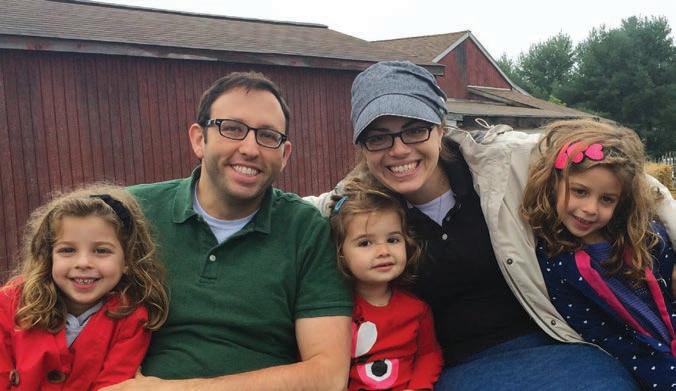
Explore Our Central Connecticut Jewish Community
Kosher Food • Mikveh • Eruv Orthodox Synagogues Jewish Schools
The Hebrew High School of New England Sigel Hebrew Academy
Jewish Federation of Greater Hartford Mandell Jewish Community Center

actual explanation is a bit different than mine. He states that had Moshe been an eloquent, articulate speaker, future generations might not be convinced of the Divinity of the Torah. They might attribute the beliefs of their ancestors to Moshe’s charismatic abilities. By contrast, if Moshe lacked those abilities but the people were still convinced, that fact establishes the Torah’s veracity as the word of God. My point, building on the Ran, is that charisma also distorts the messenger and can subtly change the message so that, in fact, it may not be the Divine teaching in its purest form.
12. See commentary of Rabbi Samson Raphael Hirsch in The Hirsch Chumash, Devarim 34:6.
13. Rabbi Berel Wein, “Charisma,” www.rabbiwein.com.
14. Naomi Mark, Ph.D., “Charisma and Narcissism in the Jewish Community,” www.shma.com. Mark’s article was part of a symposium on the issue of charisma and leadership published by the online journal Sh’ma, A Journal of Jewish Ideas, in December 2006. The journal had a second symposium on the topic in March 2009. All of the articles are well-worth reading and may be accessed at the Sh’ma web site.
15. See commentary of the Vilna Gaon, Mishlei 16:4 (“Train a child according to his way”) and, more generally, anecdotes in Rabbis Berel Wein and Warren Goldstein’s The Legacy: Teaching for Life from the Great Lithuanian Rabbis (Jerusalem, 2013).
16. Special note should be taken of the inspiring words of Rabbi Tzadok HaKohen that just as one must have faith in the Almighty, so too must one have faith in oneself. See Tzidkat HaTzaddik, par. 154. See also the wonderful story reported at www.chabad.org where the Lubavitcher Rebbe tells Rabbi Dr. Tzvi Hersh Weinreb, “Sometimes you need to know how to talk to yourself.”
17. Commentary of the Vilna Gaon, Mishlei 19:9 and Even Shleimah (annotated anthology of teachings of the Gra compiled by Rabbi Shmuel Maltzan and supplemented by his son Rabbi Yitzchak Maltzan), 1:11.
18. Commentary of the Vilna Gaon, Mishlei 4:13 and Even Shleimah 1:2.
19. Chagigah 15b. The gemara then proceeds to discuss the difficult question of how Rabbi Meir continued to learn from Elisha Ben Abuya even after he became the heretic known as Acher, literally “the Other.” It concludes that Rabbi Meir treated Acher like a pomegranate, throwing away the rind and consuming only the seeds. Although Acher was guilty of heresy, Rambam seems to say that the prohibition of studying Torah from an unfit person is not limited to teachers who are heretics but applies equally to those of bad moral character. See Rambam, Hilchot Talmud Torah 4:1. See also commentary of Lechem Mishneh who asserts that we are not on the level of Rabbi Meir to be able to avoid the negative destructive influence of an improper teacher and role model.
20. Malachi 2:7 (“For the lips of the kohen shall preserve knowledge and people should seek Torah from his mouth for he is an agent [malach] of the Lord of Hosts”). Note the dual appellation: kohen and malach, which also means “angel.”
21. Rambam, Hilchot Talmud Torah 4:1.
22. I read this a number of years ago but have not been able to retrieve the source. The idea is cited in his name in an article by Rabbi Shmuly Yanklowitz, New York Jewish Week, May 15, 2012.
23. Exposure to different viewpoints and perspectives is critical in Torah study. See, for example, Berachot 63b: “Words of Torah are acquired only in a group”; also Baba Metzia 84a, depicting Rabbi
Maslow Family
Yochanan’s grief upon the death of Rabbi Shimon Ben Lakish, who constantly challenged him. See also Maharsha, Sanhedrin 42b, who refused to record the chiddushim that were not discussed in the yeshivah. But Chazal saw great value in consultation in all areas of life. According to Tiferet Yisrael, the famous aphorism “The best of the doctors will go to Gehennom,” Kiddushin 82a, refers to a doctor who fancies himself such an expert that he disdains consultation with his inferiors. If, as a result of this arrogance, the patient suffers, the doctor is morally responsible. Similarly in marriage, it is precisely the fact that men and women see the world in different ways, with each bringing insights that the other does not possess, which enables the emergence of a greater and deeper truth. One should not seek a “yes-spouse” or clone. This is the meaning of ezer kenegdo—a helpmate that is opposite. See Shem MiShmuel, end of Parashat Lech Lecha.
24. Interview with Rabbi Ahron Lopiansky, Mishpacha, December 30, 2014.
25. This phrase is actually a technical principle in the laws of kashrut that states that a food that is in the process of conveying (“expelling”) its taste may, under certain conditions, be incapable of absorbing a taste from something else. See Mishnah Terumot 11:10 and Chullin 110b. It has been metaphorically borrowed to express the idea that the person constantly involved in “putting out” Judaism may have some difficulty taking it in.
26. It is recorded that Rabbi Simcha Zissel Ziv, the Alter of Kelm, famed disciple of Rabbi Yisrael Salanter, had certain special Torah insights that he kept to himself as part of his internal spiritual inventory. Even people totally devoted to the klal must have an avenue to foster and nurture their personal and unique relationship with God.
27. Arrogance can thus be both the cause of spiritual failure and a

consequence of it, i.e., an illusory attempt to compensate for an inner spiritual void.
28. This beautiful phrase is taken from I Kings 19:12. According to Rabbi Chaim Lifshitz, it should be translated as a “delicate sound of stillness” and refers to the “consciousness and awareness of the self” and its connection to the Divine. See www.sadnatenosh.org.
29. See, for example, Sefat Emet, Vayigash 5648 and Vayechi 5653 and 5657; Peri Tzaddik, vol. 5, first essay on Hoshanah Rabbah, p. 128b (standard Hebrew edition available on Hebrewbooks.org); Ohr Gedalyahu, Parashat Vayigash. These sefarim advance the point that a king in Israel is supposed to be a spiritual role model for the nation. Sometimes, the best role models are not those who are so perfect that they never fail but those who struggle with flaws, make mistakes, exhibit moral weakness but then come back through teshuvah. I can identify with those who fail for I too fail. I can be inspired by those who repent for I too can repent.
30. Pachad Yitzchak, Iggerot U’Michtavim, Letter 128.
31. Rambam in his commentary to Avot 4:22 writes that if a person does 1,000 mitzvot and 1,000 aveirot, the aveirot and mitzvot do not cancel each other out; rather, Hashem maintains a separate registry of good for which there shall be reward and a separate registry of sin for which there will be accountability. Rambam’s assertion that even if a person has 1,000 mitzvot, those mitzvot will not cancel a single aveirah, seems to contradict his position in Hilchot Teshuvah, chapter 3, where he writes that a person is judged by the majority of his deeds (as determined by a special Divine weighing. The calculation is not strictly a numerical one). If, after the application of this Divine weighing, an individual has more good deeds than sins, he immediately goes to Olam Haba, and the sins in the minority category are apparently ignored or erased. This is in direct contradiction to his teaching in Avot. The matter needs
Mishnah Brurah Yomi
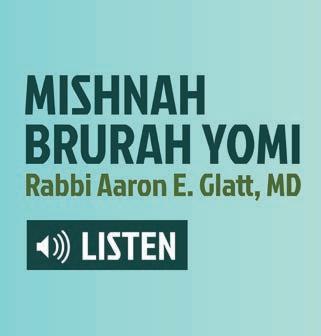


THE OUTorah FAMILY OF

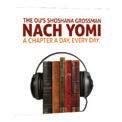



OU TORAH is proud to announce that a daily class on Mishnah Brurah, widely accepted as the definitive work on practical halacha, has joined the site’s daily online shiurim. The shiur is delivered by Rabbi Aaron E. Glatt, MD.
OU Torah now comprises dozens of programs in text, audio and video format. With sections on Parsha, Mishna and Gemara, kashrut, Jewish thought and so much more, there’s something for everyone at ou.org/torah
Editor: RABBI JACK ABRAMOWITZ
further study.
32. See Rabbi Dovid Eliach, Ha’Gaon, vol. II, pp. 560-564, where a number of stories of this nature are recorded.
33. See Peri Tzaddik, vol. 5, Parashat Vayeilech [11], 99b.
34. I am, of course, aware of Chazal’s statement that anyone who says Dovid sinned is mistaken (see Shabbat 56a). But it is equally clear from the Biblical rebuke of the prophet that regardless of the technical justifications Dovid may have had for his actions (i.e., Batsheva had received a get; Uriah had disobeyed a direct royal order), he was spiritually guilty of both adultery and murder and, indeed, Dovid himself admitted that he sinned.
35. Sefer HaIkkarim, fourth essay, chap. 26. Commentators offer two other distinctions between the sin of Shaul and that of Dovid (indeed one of these answers is offered by Rabbi Albo himself), but these distinctions pertain more to the issue of reinstatement and restoration to office rather than the efficacy of the teshuvah itself. See notes 38 and 44.
36. Compare I Samuel 15:13-21 (Shaul’s equivocation) with II Samuel 12:1-13 (Dovid’s simple, heartfelt acknowledgement of guilt).
37. Genesis 38:26.
38. Rambam, Hilchot Teshuvah 2:9-10.
39. Pachad Yitzchak, Yom Kippur, Essays 2-3, 30.
40. The idea that teshuvah alone may be insufficient for reinstatement finds some support in Rambam, Hilchot Edut 1:5-8. Witnesses who have become disqualified due to wrongdoing are not reinstated merely by renouncing the wrongdoing but only by totally distancing themselves from the source of their temptation. Thus, if they were gamblers, they cannot use dice even if no money changes hands. If they bet on bird races, they must break their traps and not even keep the birds as pets. Even after a sincere teshuvah, the penitent and therefore the community cannot be confident that there will not be a relapse. The ba’al teshuvah must avoid the behaviors that precipitated failure in the past. It is notable, however, that this is not a halachic requirement in Hilchot Teshuvah but rather a condition for reinstatement in Hilchot Edut. The teshuvah is complete as long as there is regret of the past and resolution for the future that is properly expressed by vidui (confession to God) along with bakashat mechilah (asking forgiveness of those who were harmed).
41. There are two additional arguments that may support a nonreinstatement policy even in the face of an apparently sincere teshuvah. 1. In addressing the question of why Dovid’s teshuvah was accepted while Shaul’s was not, Rabbi Albo notes that Dovid’s sin was personal immorality. With teshuvah, the sin could be forgiven and his office could be restored. By contrast, Shaul’s sin of not eradicating Amalek was a failure to carry out the responsibilities of his position. A serious breach of his communal responsibility might disqualify him from the communal office, notwithstanding his teshuvah as an individual. (This is an additional answer to the one cited in the text at note 35.) 2. See also Meshech Chochmah, Parsahat Vayeilech (on the haftarah “Shuvah Yisrael”) where Rabbi Meir Simcha argues that Shaul’s aveirah was public, thus constituting a chillul Hashem in the eyes of the nation, while Dovid’s sin was discreet and private. The chillul Hashem of a sin may be many times more severe than the actual sin itself, and where there is massive chillul Hashem, as in the case of Shaul, the offender must be removed from his position. This is true notwithstanding the fact that in the very same piece, Rabbi Meir Simcha asserts that teshuvah at the moment of Neilah does atone for chillul Hashem. Apparently, kaparah/taharah in the face of chillul Hashem may be insufficient for reinstatement, at least in the case of a melech. See note 47.
42. Shabbat 151b.
43. Rambam, Hilchot Yesodei HaTorah 5:11 (definition of chillul Hashem and the higher standard for the rabbi/talmid chacham).
44. Hilchot Teshuvah 1:4, based on Yoma 86a.
45. Fourth Gate, par. 4-5, 16.
46. The distinction between kaparah (atonement), which is a mechanism for the expiation of liability and punishment, versus taharah (purity), which refers to the restoration of a loving relationship with God, is based on the Torah of the Rav. See Rabbi Joseph B. Soloveitchik, Al HaTeshuvah (adaptation by Rabbi Pinchas Peli), pp. 15-33 in the Hebrew edition, pp. 57-74 in the English. The Rav does not directly use this distinction to resolve the contradiction between chapters 1 and 7. I believe, however, that his distinction provides the basis of an answer.
47. The three additional answers are the following: 1. Some differentiate between teshuvah m’yirah (repentance out of fear of punishment) which cannot cleanse the sin of chillul Hashem and teshuvah m’ahavah (repentance out of love) which has a greater transformative power and can. 2. Others suggest that at the time of Neilah, teshuvah can be a kaparah even for chillul Hashem because that is the only time that God sits in judgment alone, without the aid of the Heavenly Court, and can therefore forgive the sins against His own majesty—something the Heavenly Court would be unable to do. See Meshech Chochmah, Parashat Vayeilech (on the haftarah “Shuvah Yisrael”) and notes 35 and 41. 3. Finally, it is recorded in sifrei Chassidut and kabbalah that when Yom Kippur and Shabbat come together, the power of atonement is magnified and will be effective even for chillul Hashem. Suffice it to say, however, that none of these three additional approaches has textual support in the language of either Rambam or Rabbeinu Yonah but are offered as interpretive possibilities.



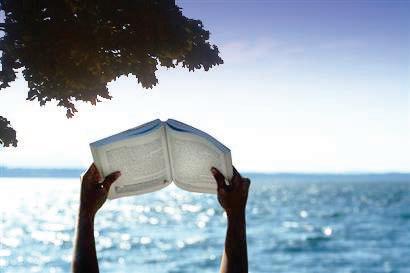
Time
to relax.
This summer, switch to The Berkshire Bank and experience unparalleled service and banking you can rely on, all year round.
www.berkbank.com
RISK: WHAT CAN RABBIS at BE DONE?
BY BARBARA BENSOUSSAN
This is a tough time to be a rabbi,” lamented Rabbi Shaul Robinson of Manhattan’s Lincoln Square Synagogue in a recent derashah following the latest rabbinic scandal. “All rabbinic reputations have been diminished.”
Any unsavory incident that involves rabbis or community leaders is one too many. Rabbis are the people we look to as models of spirituality. When they fail, their victims include not only those who were directly violated, but entire communities whose trust in religion and humanity may be permanently shaken. Furthermore, they besmirch the reputations of their colleagues, the vast majority of whom are exemplary individuals who work tirelessly for the community, often at great personal sacrifice. “The impact is terrible; it creates such cynicism,” says Rabbi Elazar Muskin of the Young Israel of Century City in Los Angeles. “We
feel all eyes upon us even more than usual, and we have to work harder to gain faith.”
Moral outrage and hand-wringing are natural first reactions when we find scandals splayed across the morning’s headlines. But stewing in indignation isn’t productive. We must recognize that all people—even spiritual leaders—can falter, and as a community, we must rally together to identify the factors that contribute to failure, and put the best possible preventive measures and boundaries in place.
Some factors, obviously, are beyond our control. Today we live in a wider social climate that incites behaviors once kept firmly behind closed doors. Dr. David Pelcovitz, a psychologist and instructor in pastoral counseling at Yeshiva University’s Rabbi Isaac Elchanan Theological Seminary, notes that in earlier generations, a person who wanted access to racy literature had to drive to a seedier side of town and bring it home in a paper wrapper. Today, such material—
Barbara Bensoussan, M.A., is a contributing editor of Mishpacha magazine. She is the author of the young adult novel A New Song (New York, 2006) and the cooking memoir The Well-Spiced Life (Lakewood, New Jersey, 2014), has worked as a university instructor and social worker, and currently writes for Jewish newspapers and magazines.
“
infinitely more available, inventive and graphic—is accessible through the phone in one’s pocket. Those same phones and other Internet-connected devices allow for a secrecy of communication and range of contact unheard of even twenty years ago (such as texting, e-mail and social media). On the other hand, as Rabbi Dr. Tzvi Hersh Weinreb, OU executive vice president, emeritus, points out, “The technology that makes it easier for people to get into trouble also makes it easier for them to get caught.”
Our collective tolerance for bad behavior has also risen. CUNY sociologist Dr. William Helmreich, author of numerous books that include What Was I Thinking? The Dumb Things We Do and How to Avoid Them, points to examples like the infidelities of Tiger Woods and Bill Clinton, both of whom continue to command large fees for appearances, as well as steroid use among professional athletes, many of whom enjoy continued success and popularity. In the Orthodox world, we are often quick to condemn breaches of ritual observance, like eating in a McDonald’s, but are more forgiving of lapses in less public areas like business ethics or marital fidelity. “Perhaps that’s because most religions profess some version of mitzvot bein adam l’chaveiro, whereas our mitzvot bein adam l’Makom distinguish us as Jews [kashrut, Shabbat, et cetera],” Dr. Helmreich speculates. “So the guy who eats in a nonkosher restaurant isn’t going to get Maftir in shul, whereas the guy who cheated in business will.”
A couple of generations ago, Dr. Helmreich notes, Jews felt less comfortable in broader society. They were recent immigrants or children of immigrants; the anti-Semitism of their countries of origin created a fear of persecution that kept bad behavior in check. “Jews used to feel they had two strikes against them,” he says. Several generations later, we are both more comfortable with and more assimilated into non-Jewish culture.
But despite the challenges of modern times, says New York psychologist Dr. Michael J. Salamon, scandals are endemic to every society. “Abuse was always prevalent, and the research shows it. In my practice, I see people in their eighties who were abused as teens, and women who suffered abuse in seminaries in the 1960s,” says Dr. Salamon, who is the author of Abuse in the Jewish Community: Religious and Communal Factors. “In yeshivah dorms, there were always some situations. My father went to yeshivot in Europe, and he told me there were issues there too.” In earlier times, however, unpleasant incidents were covered up and confined to the private sphere. Rabbi Weinreb relates that when Rabbi Yaakov Yitzchok Ruderman, the founder and former rosh yeshivah of Ner Israel Rabbinical College in Baltimore, was asked how domestic abuse was handled in the Old Country, he replied, “I am ashamed to say it, but we dealt with domestic violence by closing our shutters so that we wouldn’t hear it.”
While no trouble is good trouble, Debbie Fox, LCSW,

“ e technology that makes it easier for people to get into trouble also makes it easier for them to get caught,” points out Rabbi Dr. Tzvi Hersh Weinreb, OU executive vice president, emeritus.
the founder of Magen Yeladim Child Safety Institute in Los Angeles, which seeks to prevent abuse of children, draws a distinction between offenders who are morally reprehensible but not criminal, such as men who are unfaithful or suffer from a related addiction, and offenders like pedophiles or others who face criminal prosecution if caught. Being unfaithful, she says, “is morally wrong and against halachah, but not illegal.”
Whenever there is an imbalance of power—for example, a rabbi getting involved with a vulnerable congregant—the potential for abuse is created. “The congregant who wants to seduce the rabbi sees him as the star; she wants a piece of his power, of what he represents,” Dr.Salamon says. But that star-struck congregant is easily taken advantage of.
ABUSERS AMONG US
Are there ways to identify rabbis who are likely to get in trouble, before the trouble starts?
Unfortunately, many psychologically vulnerable people are drawn to professions they shouldn’t be in, like a moth to a flame. Dr. Yisrael Levitz, founding director of the Family Institute of Neve Yerushalayim in Jerusalem, points out that many people with perversions are often particularly attracted to chinuch, youth work or outreach specifically because of the opportunity to work closely with children and young people. Dr. Helmreich gives another example: “The head of the New Jersey Suicide Prevention Bureau committed suicide. The very people who call for strict enforcement sometimes use that strictness as an attempt to deal with their own urges or cover them up.”
Perpetrators of abuse are often hard to pick out in a crowd. “We think of abusers as creeps,” says Dr. Shira Berkovits, a psychologist who has specialized in abuse and serves as a WINGS youth consultant for the Karasick Department of Synagogue Services at the OU, a program developed to help
guide synagogues. “But that’s misguided—they look and act like everyone else.”
“There’s no one defining character flaw for abusers,” Dr. Salamon says. “That would certainly make it easier! But there are some warning signals: difficulty making friends, a hot temper, difficult marriages. About twenty percent of people who are child abusers were abused themselves as children. Once a pedophile is active, there’s really no treatment; you might be able to help if you catch them before they begin the abuse. But the person has to be man enough to admit to his weakness.”
doing it,” he remarks, “and many rabbinical schools are beginning to as well. There are tests which raise red flags, and we’re better off not setting up people for failure—or congregations for abuse.”
"We Jews have no doctrine of papal infallibility. While we expect a lot, and should expect a lot, from our rabbis, even Moshe Rabbeinu made mistakes."
Although Dr. Levitz has been directing a rabbinic counseling program at YU’s Caroline and Joseph S. Gruss Institute in Jerusalem for many years, he’s not sure it’s possible to fully weed out problematic

“Many e ective rabbis are charismatic people,” says Dr. Pelcovitz. “ ey may be idolized in their community . . . but too much of that may lead a rabbi to start believing too much in his own abilities and developing a distorted [view of] self-importance.” Courtesy of Yeshiva University
students before they receive semichah. “I’m not sure we know enough to be able to screen future abusers,” he says. “Unless a person has a flagrant character or personality disorder, it’s hard to identify a future abuser. Nor is Torah scholarship alone a guarantee against future abuse. There are learned rabbanim who were excellent yeshivah students, yet years after receiving semichah they became involved in the most shocking acts of abuse!”
“A rabbi has to be more than somebody who can learn,” Dr. Salamon emphasizes. “He has to have compassion and awareness for his position and his congregants.”
Rabbi Mark Dratch, executive vice president of the Rabbinical Council of America (RCA), believes that despite the difficulties of identifying every possible offender, rabbinical schools should attempt to conduct psychological screenings of candidates. “The Catholic Church is
Shuls may also wish to look carefully at the references of their rabbinical candidates, although it’s obviously harder to learn much if the person doesn’t have experience yet. Rabbi Ronald Schwarzberg, the director of rabbinic placement at RIETS, says his office is “a vehicle to help the search committee do a professional job in searching and vetting candidates. We provide them with many tools to do this with as much accuracy and professionalism as possible.” He adds that candidates need to research the congregation as well. “The rabbi and congregation is a shidduch and must be treated with the same sensitivity.”
Fox took a workshop with a human relations group about interviewing job candidates, where participants learned how to ask questions about boundary-related issues. She suggests applicants for rabbinic positions be shown the shul’s policies in the interview process, so that interviewers can observe the reaction. “There are also comprehensive evaluations available,” she says, although they may not be practical for every congregation: “They involve fifty hours of testing that includes interviews, a full history and physiological measures such as lie detector tests.”
LONELY AT THE TOP
Rabbi Muskin, however, reminds us that “rabbis are human! We Jews have no doctrine of papal infallibility. While we expect a lot, and should expect a lot, from our rabbis, even Moshe Rabbeinu made mistakes.” To understand why a rabbi might fail, it’s important to look at two aspects which often interconnect: the rabbi’s own personality and inclinations, and the rabbi’s job within the community.
By definition, the leader of a community occupies a privileged place. “Many effective rabbis are charismatic people,” says Dr. Pelcovitz. “They may be idolized in their community and receive a lot of positive feedback, but too much of that may lead a rabbi to start believing too much in his own abilities and developing a distorted [view of] self-importance. If he connects closely with a congregant who is vulnerable or insecure, and there’s nothing to keep him in line, it can be a lethal mix.” A rabbi or leader who has become too taken with his own charms may develop an arrogance or a sense of omnipotence that tells him he won’t get caught (or prosecuted), or which prevents him from seeing his own tragic flaws and seeking help.
Dr. Michelle Friedman, an associate professor of psychiatry at New York’s Mount Sinai Hospital and director of pastoral counseling at Yeshivat Chovevei Torah Rabbinical School in New York, says rabbinic slip-ups are not necessarily predatory; they can come about because of the inti-
mate nature of rabbi-congregant interactions. “The job requires rabbis to be up close and personal with people,” she says. “There’s an intimacy that can become established even without physical contact.” Counseling congregants in need, helping people through a loss, assisting with a conversion, working late to prepare food packages for Tomchei Shabbos—all these activities create close ties. Dr. Levitz notes the dangers when a rabbi begins to see himself as the “savior” of a vulnerable female congregant with a problem; he may become overly involved and flattered by her idealization of him, while she may be drawn to the knight in the shining kippah “Though it is important for a rabbi to be warm and empathetic, he needs also to be very cognizant of the requisite boundaries between himself and a vulnerable congregant who turns to him for help. In the event that he finds himself becoming too emotionally involved with one of his congregants, he should get supervision from either a competent mental health professional [outside of his congregation] or a seasoned colleague,” Dr. Levitz says.
The lure of a close relationship with a congregant may hold particular appeal because a rabbi’s job can be a lonely one. Given the loneliness and stress of rabbinic work, “rabbis often experience periods of fatigue and burnout. This affects their judgment and makes them more vulnerable to the lure of close relationships with congregants.” One might expect rabbis in small communities to be particularly vulnerable to loneliness, but Dr. Levitz says big-city rabbis are equally at risk.
To this end, Rabbi Schwarzberg says that standard rabbinical contracts should include provisions for rabbinic downtime, with one day off a week, occasional “off-Shabbatot” and four weeks of vacation. “I am a proponent of encouraging our rabbis to use their vacation time and to take breaks,” he says. “Rabbis are on twenty-four/seven, and this takes its toll on their mental health. It’s a very grueling profession, and is most rewarding when we are physically and mentally healthy.”
TRAINING FOR THE TRIGGERS
Dr. Pelcovitz teaches three classes in pastoral counseling at YU, helping rabbinical students understand the kinds of situations they may be confronted with. “The eye sees what the mind knows,” says Dr. Pelcovitz; a person can only recognize a phenomenon he’s been prepped in advance to see. “Hence,” he continues, “rabbis need training in self-awareness, in learning to recognize their own hooks and triggers. A rabbi can begin helping a congregant, and his motivation is pure, but then he finds it’s invading his mind—it has triggered something in his psychological makeup.” The result, he says, is that the rabbi may either begin avoiding the congregant, giving too little help, or become over-involved in helping.
Dr. Friedman believes it’s not enough to simply tell rabbinical students about psychological dynamics like transference and countertransference; they need
educational encounters that, as she puts it, “allow you to find out where your own kishkes are, to learn your own red flags.” Rabbinical students also need training in emotional learning. Hence, she promotes her students’ participation in process groups with a mental health professional from outside the faculty. “You can’t just read about these things; you have to feel them,” she says. “We want our rabbis to be special and holy—their wives as well—but semichah training in general doesn’t prepare them for the moments of darkness that they will inevitably experience.
“Rabbis have a demanding job that can be stressful, and we want them to get emotionally close to congregants and their kids. But when that happens, there can be crushes, even just moments of tenderness, and rabbis need to be prepared for that wobbliness. They have to be prepared to remain the grown-up in the room, and hold on to the appropriate boundaries.”
Similarly, Dr. Levitz teaches a rabbinic counseling course to semichah students at YU’s Gruss Kollel in Jerusalem.

At YU's rabbinical training program, students role-play while learning about physical, psychological and sexual abuse. Courtesy of Yeshiva University
The course not only deals with counseling skills, but also with the importance of maintaining professional boundaries and the potential consequences of not doing so. An important component of the course focuses on physical, psychological and sexual abuse. Students are exposed to material which allows them to strongly empathize with the pain of the victims. “These are gut-wrenching sessions,” he admits. “But I don’t want the topic to be abstract. I want these future rabbis to understand the tragic consequences of abuse and empathize with the pain of the victims.” Then he challenges them with such dilemmas as, “What do you do if the accused abuser is an honored member of your shul?”
While dealing with the challenges of their work, rabbis need support and supervision just like other professionals who work in mental health. “A rabbi needs peers and mentors to speak with,” Dr. Levitz says. “It can help to

“Rabbis need better peer-to-peer networks and mentoring for dealing with personal, professional and communal challenges,” says
prevent him from making tragic judgment errors, getting overly involved or crossing a red line. It’s helpful to have someone who is in the know about the rabbi’s struggles, because secrecy allows for easier boundary crossing.”
“Rabbis need better peer-to-peer networks and mentoring for dealing with personal, professional and communal challenges,” says Rabbi Dratch. “There are support groups for rebbetzins today as well, to help them deal with the frustrations and challenges.” He advises that rabbis learn to create balance and share in their leadership role; while different rabbis will have different styles of leadership, the congregation should have ways to challenge the rabbi without undermining his authority.
GOOD FENCES CREATE GOOD RABBIS
In addition to the psychological training and support our rabbis need, halachic and actual physical boundaries do much to avoid slippage.
“Basic hilchot yichud [the prohibition against being alone with members of the opposite sex] create important boundaries,” Dr. Pelcovitz notes. Respecting halachic guidelines in avoiding familiarity between men and women who are not related helps avoid a slippery slope—for example, a rabbi should avoid inappropriate remarks to a woman, such as, “You look great in that dress.”
Dr. Pelcovitz knows rabbis whose office doors include a window; one rabbi installed a video camera with no audio. “There’s a rabbi I’ve met with professionally several times, and he always checks [to make sure there are others] in the building when we meet,” Fox says. “Another told me he will make appointments through texting, but that’s all—no jokes, no ‘how-are-you’s’ to women. Issues like whether it’s appropriate for a man to text a woman at 11:00 at night are still under discussion in many circles.” (Rabbi Weinreb notes that NCSY and Yachad staff receive explicit training by social workers about these sorts of boundaries.)
Bnot Torah Institute—better known as Sharfman’s—in
Jerusalem has led the way in ensuring the safety of its students by creating explicit policy guidelines on its web site. Similarly, more and more shuls are putting protocols and committees in place to prevent and deal with situations that might arise. “Shuls must have a process in place for how to handle allegations, and a committee to follow through,” Fox says. “That committee must include an outside professional, because our rabbis and community members are not trained to determine if someone accused of sexual misconduct is innocent or guilty. Someone from outside the community should assist in following protocol and the law. A shul can be destroyed when allegations tear apart the kehillah.”
To this end, Dr. Berkovits, a lawyer and psychologist, has taken the initiative to work on a manual for synagogue professionals and lay leaders, a guide for preventing abuse in shuls and how to respond if it does occur. So far, thirteen organizations have committed to endorsing and distributing it when it’s completed. “Less than twenty-five percent of Orthodox shuls have a policy on this, and of those that do, in many cases they’re collecting dust on the shelf,” Dr. Berkovits says. “There is the need for a manual to deal with everything from hiring and reference checks to security and policies about youth events, security, the mikvah and so on. People need guidelines on reporting if they see someone engaged in risky behaviors, and for how to get help for the abuser and the abused.” She says organizations such as GRACE, a Christian organization, are developing similar protocols, and shuls need to stop trying to deal with abuse cases internally. “No matter how well-intentioned, congregants and rabbis are not experts in abuse,” she says.
Some of the recent scandals in our community have so concerned our communal leadership that the OU, RCA and YU have joined together to create a committee to better define the standards and roles for rabbis, with guidelines for contracts, controls, reporting misbehavior and interventions to nip potential problems in the bud. “We had a meeting with about eight people, but we would like to include other organizations as well,” says Rabbi Weinreb, who has participated in the preliminary discussions of the group and has been one address to which suggestions have been directed. The committee will focus not only on the rabbi’s responsibilities to the congregation, but on the congregation’s obligations toward the rabbi.
“One avenue is to create ombudsmen to receive and investigate complaints and act as an early warning system. Since we started, we’ve received lengthy e-mails with all sorts of suggestions from balabatim, rabbis and—to our surprise—many rebbetzins.” While still in its formative stages, the committee hopes to formulate proposals that will translate into constructive action.
“We’re much more aware today,” Rabbi Dratch says. “We are learning from our mistakes, and trying to implement the best practices for the good of all.” g
Rabbi Mark Dratch. Courtesy of the Rabbinical Council of America


A Stinging Silence:
Living with Family Estrangement
By Bayla Sheva Brenner
It’s been two years since Shani has had any contact with her younger sister. She noticed the distancing shortly after her mother passed away. First the unanswered phone calls. Then the two-word text responses and the bare bones, business tone e-mails. Then, nothing.
“I’m still baffled as to why she’s chosen to cut me out of her life,” says Shani. “At times I wonder if I had a sister at all. Maybe, like an imaginary friend, this too was just
an illusion. But then it wouldn’t hurt so much.”
Sadly, Shani’s story of family estrangement is not unique in the Orthodox community. Blood may be thicker than water, but like the Red Sea, apparently it too can part. What compels family members to sever ties?
“The person who is making the choice to reject a family member is convinced that he or she is right,” says Rabbi Simcha Feuerman, LCSW, senior director of operations and strategic development at Ohel Children’s Home
and Family Services, based in Brooklyn, New York. “They’re saying ‘he or she is so impossible, so abusive, so disrespectful; I have no choice but to have nothing to do with them.’ [Meanwhile] the rejected party says, ‘I didn’t do anything wrong; why is he rejecting me? I don’t have the problem. He does.’”
There’s something about the familial connection that, when broken, shakes us to the core. The people we grew up with, to whom we mumbled countless “good mornings,” become part of who we are and how we define our place in the world. When cut off from family, one feels a constant void.
“If you took an MRI of a person who is experiencing social ostracism, the same pain center would light up in the brain as when a person experiences physical
Bayla Sheva Brenner is a freelance writer
pain,” says Rabbi Feuerman. “We are hardwired to place a lot of importance on what our immediate circle thinks about us.”
Between Mother and Daughter
However, family members in these situations are not always seeking a resolution.
“Whether it be siblings, adult children or parents, if they’ve chosen to cut themselves off from the family or family members, it’s because they feel [the situation is so untenable] it’s the only thing they can do,” says Rabbi Feuerman.
Five years ago Rachel cut off all communication with her mother. She blocked her from her phone and e-mail. When her mother tried to reach her through her husband’s e-mail, she blocked her from that as well. She saw it as the only way to get out of
“We are hardwired to place a lot of importance on what our immediate circle thinks about us.”

what she perceived as an “unsafe relationship.”
“I grew up thinking I was a horrible person,” says Rachel. “My mother called me a ‘bad daughter.’ She told me I was cold. I never understood why. Already at thirteen I wanted to kill myself; I thought I was so worthless.”
Despite her rough childhood, Rachel managed to construct a semblance of a normal life; she married and started raising her own family. But as her family grew, each new child, instead of bringing her closer to her mom, only increased the tension between them. “Here I was feeling vulnerable, having just given birth, and my mother would turn on me like I did something wrong,” says Rachel.
She found herself falling into serious depression and sought professional help. “I realized in therapy that this was a no-win relationship for me. My mother
resented my having children. She expected me to parent her. I had to separate.”
Rachel asked her rav if it was halachically permissible for her to stop speaking with her mother. He told her, “Let’s see you get better. You need to be well and then we’ll talk about what you could do for your parents.”
She decided to allow her mother to have annual visits with her grandchildren. Her husband would play host while Rachel made herself scarce, spending the day with a friend. The night before one of the visits, Rachel’s mother asked her son-in-law if she could see Rachel for a few minutes when she arrived. It pushed a button.
“This is exactly the problem! She doesn’t respect any boundaries.”
Rachel e-mailed her mother a warning that if she broke the rules, the visits would be over. She doesn’t see the estrangement as a permanent state of affairs, but maintains that
Torah lecturer and rav of Moshav Matityahu in Israel, describes how jealousy removes one from the world of reality and causes one to view people and incidents in a distorted fashion.
“My [younger] sister hated me from the minute she was born,” says Talia, who hasn’t spoken to her sister in fifteen years. “It’s not like I was a better or smarter kid; she just always felt threatened by me. Unless my parents’ praise was all directed at her and nothing positive was directed at me, she was bothered.”
During their college years, Talia continued to feel her sister’s animus. “She was actually a much better student than I was. I was fine with it, but she pushed herself even harder to make sure she outdid me.” Talia hoped that when they grew up the sibling issues would subside. They didn’t. When her sister gave birth to her second child, Talia came to help her out, hoping to build a bridge. She made meals for the family, cleaned

the door to any genuine emotional connection “closed many years ago.”
The Sibling Stand Off
The tragic wedge between Yosef and his brothers recorded in the Torah led to dire consequences from which the Jewish people continue to suffer. Rabbeinu Yonah asserts that the baseless hatred that caused the destruction of the Second Beit Hamikdash was, in fact, rooted in the jealousy of Yosef’s brothers. Chazal tell us that jealousy removes a person from the world. Explaining the meaning behind Chazal’s statement, Rabbi Zev Leff,1 popular
the house and prepared for the shul kiddush in honor of the baby girl. Throughout her stay she detected coldness from her sister and brother-in-law. At the kiddush, when her brother-in-law publicly thanked everyone who assisted his wife and him, he noticeably neglected to mention Talia.
The following week, Talia called to ask her sister why she and her husband had seemed hostile towards her during the visit; she asked, was there anything she had done to offend her? “She told me that I had criticized her husband, which of course I hadn’t,” says
Talia. “She then informed me that they didn’t want to have anything to do with me.”
Even her parents began viewing Talia as the instigator and her sister as victim. “Instead of trying to find ways to bring us together, they enabled my sister’s abusive behavior,” she says. “When my sister refused to invite me to my niece’s bat mitzvah celebration, my mother actually encouraged me to send a nice gift with an apology note for not being able to attend. They don’t want to deal with any possible confrontation between my sister and me.”
Talia has since stopped talking to her parents. “I’ve tried so hard. I can’t risk being a punching bag anymore.”
The Root Causes
Festering resentments also tend to surface when parents pass on. Rabbi Moshe Weinberger, rav of Congregation Aish Kodesh in Woodmere, New York, reports that at least once a month he gets a call
“
I once dealt with brothers who survived the Holocaust and hadn’t spoken to each other in forty years. It’s heartbreaking.”
about a quarrel having to do with a family inheritance. “There are feelings of ‘my parents favored this one over me’ or that he or she didn’t live up to the parents’ expectations. What confirms that is the will,” he says. “The one who felt from the beginning that he was treated in an inferior way pounces on this as an opportunity to finally address grievances that go back before the existence of the will. I’ve seen siblings completely write each other off as a result of a disagreement over a will. It’s devastating.” Rabbi Weinberger frequently consults with mental health professionals on the countless cases that come to his door.
Rather than face their feelings of resentment head-on, some people prefer to hide behind a pretext.
Bob, a secular Jew, and his ba’al teshuvah brother haven’t spoken in over twenty years. It wasn’t Bob’s choice; his brother broke off all contact soon after he became frum.
“[Before the estrangement], when we spoke it always turned into a heated debate,” says Bob. “He kept trying to convince me to believe what he believed, when he knew I considered myself an atheist.”
He suspects that the true motivation for his brother’s brushoff stems from a deep-seated rage.
“I’m sure I wasn’t the best brother while we were growing up,” he says. “Like most siblings, we fought. He won’t let go of his resentment towards me. Now he can view me as a ‘bad Jew.’”
In his twenty-four years as a pulpit rabbi, Rabbi Weinberger has seen how people resort to religion to justify distancing family members.
“At the core, [when siblings distance themselves from each other] it’s not a theological struggle; it has to do with emotional issues,” says Rabbi Weinberger. “There’s an erosion of relationships between people who used to love each other. I once dealt with brothers who survived the Holocaust and hadn’t spoken to each other in forty years. It’s heartbreaking.”
More than a few decades have passed since Bob and his brother
have spoken, yet Bob still holds out hope for reconciliation. “It’s only the two of us; we have no other siblings. You get older and parents age; siblings become very important.” He sends his brother e-mails on the chance he’ll respond one day. “It would be good to have a brother to talk to.”
Choosing Between Spouse and Family
As the adage goes, when you marry your spouse, you’re marrying his or her family. If a wife or husband finds their spouse’s family of origin intolerable, it could lead to the breakup of a family.
It took a divorce to reunite David and his birth family, with whom he hadn’t spoken for close to ten years. He says he felt compelled to cut off ties. With every family get-together he felt torn. “Who leaves their spouse alone on yom tov?” he asks. “My ex-wife kept insisting that my family members were all nasty to her and she refused to see them. Deep down, I knew this wasn’t going to end well.”
David laments his decision to part ways with his immediate family, leaving his son without half of his grandparents, uncles, aunts and cousins for most of his childhood.
“Before my marriage, I was very close with my nieces. One told me in tears that she lost out on the ‘fun uncle.’ I don’t know if you can rectify stuff like this. It was a hole in her heart for all those years.
“When a person gets married, there are multiple relationships going on,” David continued. “Often, people have unrealistic expectations of one another. I should have been more confident in drawing better boundaries. I can’t just throw my family away. That’s not acceptable, even in a marriage. No one should ever opt for this.”
Rabbi Feuerman says that parents who prefer to lose family members rather than lose face communicate
continued on page 16

The Art of Forgiveness: A Halachic Guide
By Daniel Feldman

• Someone who has aggrieved his fellow Jew is obligated to seek that person’s forgiveness. Without doing so, Yom Kippur will not bring atonement.
• Even if the victim has indicated a willingness to forgive, it is still necessary for the offender to ask.
• If the attempt is unsuccessful, the offender must try a different approach to seek forgiveness, asking as many as three times.
• Ideally, the request for forgiveness should be made face to face, rather than through an intermediary or a letter (or a text message).
• The point of the apology is not only so that the victim releases any claims, but to restore the harmony of the relationship.
• If the victim does not know of the offense (for example, if lashon hara was spoken about him without his knowledge), many halachic authorities maintain that the offender should not inform the victim so that he can ask forgiveness; rather, attempts should be made to undo the offense without informing the victim.
• If the offender has sincerely apologized and has made all possible efforts to rectify the offense, it is proper for the victim not to withhold forgiveness, under most circumstances.






Rabbi Daniel Feldman is the spiritual leader of Ohr Saadya in Teaneck, New Jersey, and a rosh yeshivah at the Rabbi Isaac Elchanan Theological Seminary at Yeshiva University.

continued from page 14
unhealthy messages about the nature of relationships to their children. What’s worse, the tendency to cut off family members can be passed on.
“Family attitudes perpetuate themselves,” says Rabbi Feuerman. “There’s an inability to deal with conflict; it’s much easier to blame others and emotional retreat is seen as a viable solution. It’s not healthy.”
The Fine Art of Forgiving
When someone seriously wrongs us, the last thing we want to do is forgive them. Our pride can’t bear it. Or so we think.
“It all depends on each party’s readiness to see through the other’s eyes,” says Dr. David Pelcovitz, renowned psychologist and professor at Yeshiva University. “The most important part is to realize that neither side is one hundred percent wrong or one hundred percent right. Though we find excuses for our own errors, we tend to judge others more harshly and are reluctant to forgive.”
Dr. Pelcovitz emphasizes that the key to promoting forgiveness is exploring each side’s role in the discord. He suggests a popular “speaker-listener” technique used by marital therapists to facilitate communication, in which both sides take turns in the role of speaker and listener. When the speaker has the floor, he voices his feelings and concerns, and then stops to allow the listener to paraphrase in his own words what he heard. The listener is not to refute or offer his own opinions or perspectives, since he will have his turn to speak.
“The Tiferes Yisroel says your friends will always tell you what you want to hear, but you are not necessarily going to grow from that,” says Dr. Pelcovitz. “It’s from your critics that you grow the most. And you’ll feel great afterwards, benefitting from owning your part [in the conflict].”
Thou Shalt Apologize
Forgiving is not only a nice thing to do; it’s a halachic obligation.
“Granting forgiveness is as mandatory as requesting it,” says Rabbi Daniel Z. Feldman, a rosh yeshivah at Yeshiva University’s Rabbi Isaac Elchanan Theological Seminary and spiritual leader of Ohr Saadya in Teaneck, New Jersey. “The Mishnah states that ‘one may not be cruel and refuse to forgive.’”

An author of several sefarim on human relationships, Rabbi Feldman points out in his book The Right and the Good: Halakhah and Human Relations, that the imperative is to repeatedly seek mechilah ( forgiveness). He notes that the Shulchan Aruch states that an unsuccessful attempt to reconcile demands a second and then a third try, employing a different approach each time.
“[With each failed attempt], he needs to address what may have been missing,” says Rabbi Feldman. “It is a growth process for the offender. Many rabbinic scholars state that the operative element is the embarrassment experienced, which itself serves as part of the atonement.”
The Talmud states that in regard to interpersonal violations, even if they are also considered an affront against God, the transgressions won’t be pardoned on Yom Kippur until amends are made and the aggrieved party is appeased.
Professional Peace Makers
In estrangement cases where the peace efforts of mental health professionals, rabbanim and
well-meaning friends have failed, an unassuming Chassidic woman is successfully reuniting family members.
For the past seven years, Sarah Friedman, a Jewish educator from
Parents who prefer to lose family members rather than lose face communicate unhealthy messages about the nature of relationships to their children. “
Boro Park, has tackled family battles most would find daunting. With an uncanny knack for making shalom, Friedman claims a 50 percent success rate, easily competing with highly skilled professional mediators and therapists. Plus, she offers her services for free.
Friedman discovered her capacity for chipping away at hardened resentments after her own extended family experienced several tragedies. She turned to a rav for

guidance, who told her that unresolved disputes in a family can cause many tzarot. Determined to resolve the conflict in her own family, she relied on instinct, compassion and everyday wisdom to appeal to the family members involved in the rift. She surprised herself at the positive results. The story got out and her phone hasn’t stopped ringing.
“I’ve always had a gift for listening to others’ problems,” she says. “People like to tell me their troubles. It’s really listening and validating their pain. I don’t judge or say anything until I hear both sides. There are actually three sides to a story: side one, side two and what really happened.”
Friedman goes back and forth between the opposing parties, making as many phone calls as it takes to validate both parties’ feelings and present the other side’s perspective. She often asks the disgruntled one to list the three main points bothering him or her and relay them back to the other. It can take months before she brings the family members to a mutually satisfying meeting of minds. It doesn’t sound much
different from what a therapist would do, but Friedman is somehow able to penetrate the most resolute wall of pride.
“I do it l’shem mitzvah [for the sake of a mitzvah],” says Friedman.
“I think that’s why I get so much siyata d’Shamaya [Divine assistance] ”
She rarely gives up on a conflict, though Friedman reports that half the time an angry family member will hang up on her before they even make it to first base.
“Many people can’t tolerate being told they’ve done something wrong,” she says. “I tell them I totally understand their point of view, but to also consider that in every disagreement each side is a little bit wrong and a little bit right. Would they be willing to apologize for the small percentage of what they may have done wrong?”
When someone insists on being the right one, she pulls out a particularly tragic story from her peace-making arsenal.
“A young man in his forties passed away very suddenly,” she relates. “At
the levaya, his brother-in-law broke down sobbing uncontrollably. He and the deceased had not been on speaking terms for over ten years. He couldn’t forgive himself. He kept saying, ‘What did I do to myself? Did I really think we would both live forever?’
“I ask [the parties involved in a conflict], ‘Are you happy living your life never speaking to your sister again?’ No one has yet told me yes, they would like things to stay this way until 120. Deep down, they are upset about it.”
However, in certain situations reconciliation is not the best answer. Rabbi Weinberger reports having had to advise separation, at least temporarily, between siblings or between parents and children.
“[Although] my goal is always reconciliation,” says Rabbi Weinberger, “when the relationship is causing a breakdown of a person’s life, when he or she is being diminished as a human being and it becomes clear that one or both of the parties is extremely unhealthy, sometimes it is necessary to disengage.”
Coming to Terms with the Silence
Sometimes Shani sees her sister appear in her dreams. She wakes up feeling comforted from the renewed, albeit imaginary, sense of connection with her sibling.
“I guess I’m just a prisoner of hope,” she says. “When I see someone in the supermarket who resembles my sister, I find myself staring at this perfect stranger, not wanting to let go of the image. There’s this longing inside me that won’t quit.”
In an attempt to understand why her sister went AWOL on her, she recently sent her another e-mail: “We’re sisters. Why have you chosen to delete me from your life?” Her sister’s delayed response stated simply, “You should know.”
“It can’t be jealousy; she did everything right,” says Shani. “She graduated from a top school, married young and gave my parents five grandchildren. I’m the one who’s struggled to get my life together. Why would the golden girl resent the black sheep?”
“[After our mother’s death], it was a harrowing time for all of us,” says Shani. “Maybe my sister was displeased with the division of the estate. I suspect it’s much deeper than that. Sometimes, early in the morning, I lie in bed mining for memories of us—as children, teenagers and our respective adult stages in life. I think she always kept a distance from me. Perhaps I threaten her in some way that she’s not even aware of. I may never know. But like a missing appendage, I’m constantly reminded of the loss. It’s just something I’ve got to learn to live with.”
Then again, where there is life there is hope.
Rabbi Weinberger reports having had “tremendous nachas” reuniting estranged family members. “When dealing with people who are working on themselves, who are prepared to step down and acknowledge that they’ve made mistakes, the vast majority of them, with much crying and hugging, will reconcile.” g

Some of us are lucky enough to have had a teacher or a rebbe who forever changed something within us after spending time in his or her classroom. As students of all ages head back to school, we pause for a moment to pay tribute to the special teachers in our lives.
By Estelle Glass
The pretty, pony-tailed young woman perched at the end of her desk was an anomaly, not anything like the other teachers we had that freshman year in high school. Miss G. was smart, fun and so cool. She switched her eyeglasses to match her clothes and she shared fascinating stories about her life. She taught not only by lecturing, but by making us participate and discuss. As a young teenager, I knew that I had found my eventual vocation. I wanted to be just like my English teacher, Miss Susan Goodside, who would serve as my role model through most of my years at Esther Schoenfeld High School in New York.
able enough to explain why I found Pride and Prejudice to be the most boring novel I had ever read!

Dr. Susan Katz, formerly “Miss G”
My favorite teacher taught me to love and appreciate literature. Her lessons were always innovative. Miss G.’s composition topics were never routine, but rather challenging and often mystifying. What did “Chasing Rainbows” have to do with our lives anyway? She taught us to put a great deal of thought into what we were writing before we put pen to paper. Book reports were never mere written summaries; they often included oral presentations, where even I as a shy freshman felt comfort-
In her class, we didn’t just read assigned Shakespeare plays; we acted them out. We also acted out more modern dramas, pausing to discuss and argue about the meanings of these works. Poetry came alive as we recited poems in front of the class and later in front of the entire school in our annual declamation contests. It was a given that everyone in school waited anxiously for junior year and the magical experience of performing in front of a huge audience in the Junior Class Play. (My year, I played Ed in “You Can’t Take it With You.”)
Miss Goodside eventually became Mrs. Katz. She raised a family and went on to become the well-known and much admired high school principal of Shulamith School for Girls in Brooklyn, New York. As for me, I don’t know if I ever became just like my beloved teacher during my twenty-seven-year career as an English teacher and later chair of the English Department at Bruriah High School in New Jersey. But I certainly tried to emulate her example.
Estelle Glass, a Teaneck resident, is a retired educator who is now happily writing her own essays.
By Numi (Homnick) Stern
As a thirteen-year-old girl just starting high school at Hanna Sacks Bais Yaakov in Chicago, I probably would have preferred a younger, “cooler,” more dynamic Ivrit teacher. However, I quickly learned that my assigned teacher was Rebbetzin Ella Soloveichik, a”h, the wife of Rabbi Ahron Soloveichik, z”tl and fondly known by all of her students as “Rebbetzin.” Born and educated in Lithuania, Rebbetzin spoke with a slight accent and carried herself with the regality of a European rebbetzin of old. She came to school dressed in a formal suit or blouse with a matching hat and she hardly moved away from the desk or chalkboard while teaching. Soon enough she won us over with her gentle and loving demeanor, her sincere interest in each student, her determination to involve every student in the discussion or lesson and her deep passion for the subject at hand.
Over the course of that year, several of my friends and I found reasons to sporadically stop by her house on Shabbat or Sunday afternoons to say hello. She was always glad to see us and welcome us inside. I still carry with me the image of her saintly husband sitting in his wheelchair at the dining room table writing notes and chiddushei Torah. He was undeterred from this sacred task despite being partially paralyzed by a stroke many years earlier. Seeing Rav Ahron in action helped me to appreciate the stature of our Rebbetzin, his devoted partner, helpmate and caregiver.
When did Rebbetzin change my life? I cannot pinpoint one episode or moment that was life altering. The effect Rebbetzin had on her students, myself included, was subtle; she slowly chipped away at the crust of American teenagehood that encased so much of our souls. Just the fact that we came to love and respect a refined, elderly and scholarly person such as she helped us to mature and rid ourselves of some of the myopia and egocentricity of childhood. And while I did not realize it initially, the lessons and values that Rebbetzin imparted to us had a profound impact—an impact that is still with me today, many years after her passing.
Rebbetzin was my teacher again in eleventh grade; the subject was Jewish history during the Second Temple era. In twelfth grade, it was back to Ivrit with a focus on Hebrew literature. She was a wellspring of Torah knowledge and a master of Jewish history. While I do not remember much of the content of those lessons, “Devarim hayotz’im min halev nichnasim el halev, Words that come from the heart [of the speaker] penetrate the heart [of the listener].” Her ahavat Yisrael (love of every Jew), ahavat Eretz Yisrael (love of the Land of Israel) and ahavat Lashon HaKodesh (love of the Hebrew language) were constantly being transmitted, no matter what the day’s lesson was meant to cover. Those three loves have stayed with me, and I’m sure countless other students of hers would say the same.
“ Mi k’amcha Yisrael, Who is like your nation Yisrael?” and “Yisrael, af al pi shechata, Yisrael hu, A Jew, even when he sins, remains a Jew” were both common expressions of hers. Rebbetzin implored us never to say anything negative about another Jew—certainly not in her classroom. One of the first Hebrew pieces she taught us was Rabbi Yehuda
Not all tzitzit are created equal.
Yes, they all have four corners. And yes, they all have thirty-two strings. But not every brand of tzitzit was designed to be the utmost in kashrut and hidurim, while still being high quality, functional and comfortable.
Thirty years ago, NeaTzit invented the idea of t-shirt comfort in tzitzit. No longer did fulfilling this most important mitzvah involve inferior quality materials, discomfort or lowering one’s standards of halachah. With the direction and supervision of leading rabbanim and roshei yeshivot, such as HaRav Ovadia Yosef, HaRav Chaim Scheinberg and HaRav Nissim Karelitz, NeaTzit became the gold standard in the mitzvah of tzitzit. The strings themselves are made l’kedushat tzitzit. The side snaps under the arms are not simply functional, but ensure that two sides of the begged are not sewn together, yet still allow for comfort. Special lamb’s wool was spun to create a soft, breathable fabric to allow wearing wool tzitit even in the warm summer months.
Over the past decades many have copied the concept and created t-shirts with tzitzit, but none have come close to the original quality, comfort and kashrut of NeaTzit. When one buys NeaTzit, he knows he is fulfilling the mitzvah of tzitzit with every hidur and in complete comfort.
WHY OPEN ORTHODOXY IS NOT ORTHODOX
“…Open Orthodoxy is a movement which poses as Orthodoxy, with teachers who pose as halachic authorities and students who pose as Orthodox Rabbis.”
— From the Foreword by
Harav Aharon Feldman
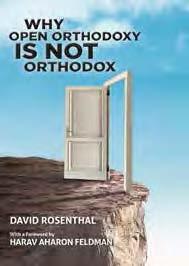
David Rosenthal is a musmach of Ner Israel Rabbinical College where he has been a talmid for the past ten years.
HaLevi’s famous poem of longing for Eretz Yisrael, Libi BaMizrach. “Kol hamitabel al Yerushalayim zocheh v’ro’eh b’simchata, Whoever [truly] mourns for [the destruction of] Jerusalem will merit to see her rejoicing” was another ma’amar she repeated many times.
She exposed us to the gamut of political and social views of Medinat Yisrael, with two primary lessons: to treat every Jew with love and respect and to be grateful for the opportunity to walk the streets of Eretz Yisrael, to live there and to learn Torah there— an opportunity many great people before us never had. What about the language—was it Lashon HaKodesh or Ivrit? For Rebbetzin, they were one and the same. Yes, she wanted Jews to be comfortable with spoken Hebrew. But the Rebbetzin’s Hebrew was not “Modern Hebrew.” Her Hebrew was replete with pesukim from the Nevi’im and ma’amarei Chazal , sayings of the Sages, many of which she insisted we memorize. Rebbetzin was also a poet. She wrote a variety of poems in Hebrew, some light and playful, some more heartfelt. In so many ways, she demonstrated to us the richness and versatility of the Hebrew language.

incorporating as many of her favorite expressions as we could. Rebbetzin was out of school at that time undergoing medical treatment, and we were unable to share the poem with her. She missed our high school graduation due to her illness and passed away that summer. Yet I was comforted to hear that Rebbetzin’s daughter read our poem to her during the last few days of her life and it had brought a smile to her face. Though I was out of town at the time of her passing and missed her levayah, I did make it back to Chicago in time to be menachem avel the family. The family described how Rebbetzin was at peace at the end of her life, like Shlomo HaMelech’s Eishet Chayil, “Vatis’chak l’yom acharon, And smiling, she faced the last day.” How she had the words of that epic Hebrew poem and prayer, Adon Olam, on her lips; “V’im ruchi g’viyati, Hashem li v’lo ira, And with my spirit, my body as well [I entrust to God], God is with me, I shall not be afraid.”
Toward the end of twelfth grade, for our school’s annual library tea the entire student body was asked to submit short
The e!ect Rebbetzin had on her students, myself included, was subtle; she slowly chipped away at the crust of American teenagehood that encased so much of our souls.
essays or poems pertaining to the theme of “hero.” My friend Shoshana and I made an acrostic of the words eishet chayil (in Hebrew, of course) describing our esteemed Rebbetzin, while
How befitting that Rebbetzin passed away during the Nine Days; her neshamah always seemed to be in sync with the history of Am Yisrael and Eretz Yisrael. I have no doubt that Rebbetzin will rejoice together with the Jewish nation when Yerushalayim is finally rebuilt—may it be speedily in our days.
By Charles Sheer
My chavruta (study partner) and I were sitting in the beit midrash on a hot Los Angeles Shabbat afternoon. This was pre-A/C days and those long LA Shabbat afternoons could be brutal. But we had not finished our review of the gemara we had studied that week. We arranged to spend an hour before Minchah to assure that we understood the material. We were a well-matched pair and we enjoyed studying together. My partner was quick and smart; I tended to be plodding and careful. We were studying Bava Metzia. Shortly into our review we got stuck on a passage that didn’t seem to make sense. “How did Rebbe explain this line?” my chavruta asked. We couldn’t recall if he had discussed this topic.
Our teacher, Rabbi Simcha Wasserman, was the son of one of the illustrious leaders of European Jewry pre-WWII, Rabbi Elchonon Wasserman. Rav Elchonon was rosh yeshivah of the famous yeshivah in Baranovitch, and the author of many scholarly works on Talmud and Jewish thought. He was killed in WWII by the Nazis. His son, our rebbe, had established yeshivot all over the
and is a practicing speech-language pathologist.
Rebbetzin
Ella Soloveichik
Numi (Homnick) Stern graduated from Hanna Sacks Bais Yaakov in 2001. She currently resides in Cleveland, Ohio with her family
world and was renowned as a teacher and for his saintly personality. Over the two years we had been in his Talmud class, Rebbe had advanced our Talmud skills from basic reading to a more thoughtful analysis. At that youthful age, I did not recognize what a master pedagogue he was. To this day, I have not encountered such a skilled teacher, whether in my yeshivah study, college or graduate study. Rebbe would ask us, “What is the one word on the page that Tosafot”—the classical and standard medieval commentator, printed on the side of the Talmud page in every edition since the sixteenth century— “was bothered by, and how did he resolve the problem?” He imparted his masterful analytical skills to decode a text, but even more importantly, he motivated us to love learning.
features. (Rebbe had a wonderfully friendly face with twinkling eyes, an expressive smile and a portly physique. When I first met him, I had this irreverent thought that he would make a great Santa Claus.) He tilted his hat back on his head and enthusiastically said, “Good question! So, did you find an answer?”

As we did our chazarah, we struggled to recall if Rebbe had discussed our problem. We worked on the sugya (Talmudic case) for a while and, to our delight, developed a solution. At our stage in learning, it was not that usual for us to do so. We were pleased with ourselves. As we relaxed at our study table, we saw that Rebbe had come
It was our debut that linked us to our revered teacher, but also with the generations that preceded us. We had entered a community of life-long students who place study—Talmud, especially—and ideas as a central element of their lives.
in to the beit midrash. He spied us, and the Talmud texts and commentaries spread about on our table. “Good Shabbos,” he said. “So, how has your chazarah gone?” “We were doing pretty well,” I said, “until we reached this line and got stuck.” I proceeded to tell him what bothered us.
When I finished presenting our question, Rebbe looked up at us with a broad smile. He paused for a moment, as if he had encountered us for the first time and wanted to learn our facial
“Yes,” I said. “We thought you could explain the gemara in the following fashion.” I cautiously proceeded to share with him our interpretation. Now, mind you, this was not a major scholarly discovery. But it was a reading that worked and we were pleased with our solution.
And so was Rebbe. He looked at the two of us and said, “That’s exactly what the Shittah M’Kubetzet says.” (The Shittah M’Kubetzet is a classic seventeenth-century anthology of medieval commentators to the Talmud.) We were both astonished at this and sat there in silence. We two California boys—a far cry from Talmudic scholars—had developed a resolution to this question that was formulated almost a half a millennium ago which was included in one of the standard Talmud commentaries.
Before we could say anything, someone announced that it was time for Minchah. Rebbe retreated to his seat near the aron kodesh at the front of the beit midrash and services began. But I could not concentrate on them. I kept thinking about what had just transpired. When I looked towards Rebbe I noted that he was looking right at me. His eyes locked with mine as he glanced over the tall shtender in front of him. I suspect that neither of us paid much attention to our Minchah prayers that Shabbat afternoon.
As I reflect back on that moment, I think all of us—students and teacher—intuitively felt that something vitally important had occurred. Our resolution of that difficult passage entailed our entry into the world of Talmud study. It was our debut that linked us to our revered teacher, but also with the generations that preceded us. We had entered a community of life-long students who place study—Talmud, especially—and ideas as a central element of their lives.
Rebbe never said anything to me about that moment, but he really didn’t have to. He had the special pleasure of witnessing the entry of two of his students into his world and the grand World of the Talmud. What a precious moment for a teacher; what a moving moment for his students. The look of delight and pride on his face are still present in my memory, even though the episode occurred more than fifty years ago. g
Rabbi Charles Sheer is staff chaplain at Westchester Medical Center in Valhalla, New York, and is on the faculty at the Bioethics Institute at New York Medical College. He holds an MA in Talmudic literature and semichah from Yeshiva University. For thirty-four years he was the Jewish chaplain at Columbia University and Barnard College.
Rabbi Simcha Wasserman
Photo: Moshe Yarmish
IN PRINT: The Thriving Orthodox Press

Also in this issue:
Rabbi J. David Bleich on Journalism and Halachah
The True Power of the Jewish Woman
Professionalizing the Jewish Nonprofit World
DISCUSSING JOURNALISM AND JEWISH LAW WITH RABBI J. DAVID BLEICH
Rabbi Dr. Bleich is Rosh Yeshivah and Rosh Kollel Le’hora’ah at Yeshivas Rabbeinu Yitzchak Elchanan and Professor of Law at Cardozo School of Law. His most recent book is Contemporary Halakhic Problems, Vol. VII, published by Koren Press. He recently spoke with Jewish Action’s Binyamin Ehrenkranz about the challenges and opportunities for Orthodox media.
Binyamin Ehrenkranz: Why should there be a Jewish newspaper in 2017?
Rabbi Bleich: !e question is: why was there ever a need for a Jewish paper? An Orthodox Jewish press emerged sometime in the 1800s and it served to satisfy a number of purposes. Even if it had served no other need, it seemed to deter people from reading publications that were hardly edifying. !ere was a great deal of discussion regarding the matter in rabbinic circles I’m hardly an expert in the history but there was broad consensus that there were additional positive bene ts as well.
On the other hand, in at least two separate places, the Chofetz Chaim denigrates the reading of newspapers. He says that, in addition to everything else, reading newspapers is an absolute waste of time. I don’t think there is a contradiction between those two approaches. It depends on the circumstances. If your life centers around a small shul in Me’ah Shearim and you leave your home only to go to the beis medrash and back, you may have no need for newspapers. But if you are Rav Elyashiv and people constantly come to you for advice and guidance with regard to all manner of problems, you need to know what is transpiring in the world. I have no idea whether or not Rav Elyashiv read newspapers. But if he didn’t read them himself he assuredly had “research assistants” who read them for him and kept him abreast of current happenings.
!e Chofetz Chaim was on the mark. If you are speaking of people who have no need for the news then reading newspapers is a waste of time. But, if you are talking about people who are communal leaders in one sense or another,
the relevant source is the Ralbag’s commentary on Megillas Esther. !e Ralbag authored two commentaries on Tanach. !ey are merged into one but are clearly demarcated. One is his commentary on the text, which is o#en philosophical in nature, the other is what he calls the “to’iliyos,” the “bene ts” or moral lessons, that can be derived. In his work on Megillas Esther Ralbag enumerates #y-one to’iliyos. Commenting on the phrase “U’Mordechai yoshev besha’ar hamelech,”
I am quite certain that one need not read a newspaper cover to cover, but I do believe that a person who is in the position of an opinion molder has to be aware of current events . . . . We do not live in an insular enclave.

“Mordechai sits at the gate of the king,” Ralbag notes that Mordechai spent time in the corridors of the court to inform himself of the goings-on within the palace. !e to’eles that one is supposed to derive from this narrative is that a leader or manhig—Mordechai was a member of the Sanhedrin—must be aware of matters of state. What transpires in the halls of government does a$ect us. Clearly, Jews have to be informed, or at least some Jews must be informed. Perhaps in this day and age a majority of Jews have a need to be informed.
!e establishment of an Orthodox press in Europe was an attempt to produce what I would call a “name, rank and serial number” type of news reporting. It was necessary to present people with the bare-bone facts and, although I have not read the European press to any real extent, I am quite sure that there were editorial comments of one kind or another that also entered into excurses with regard to how events reported in the news columns would impact upon the Jewish community and how the community should react. !at is what the Ralbag meant when he identi ed the bene t that can be derived from “news.” I am quite certain that one need not read a newspaper cover to cover, but I do believe that a person who is in the position of an opinion molder has to be aware of current events. Students and congregants require guidance. We do not live in an insular enclave.
I don’t read the Hamodia on a regular basis but it is my impression that the daily Hamodia fulfills that function in a quite admirable fashion. It presents basic news reports that appear to be reasonably accurate and the news columns seem to be without bias of one kind or another. That is the goal to which Jewish journalism should aspire. But other publications, including the weekend edition of Hamodia , represent a different kind of journalism. Much of the material is hortatory, designed to mold conduct. Features devoted to history, biographies, Torah topics and even fiction are also included. The rabbinic supporters of the early Jewish press in Europe also encouraged such content.
BE: Are there rules of thumb that should guide an Orthodox editor with regard to putting the public interest ahead of the needs of an individual? What about the individual’s right to privacy?
RJDB: !e question re ects an ongoing dilemma. I do not know how any publication can operate within the parameters of Halachah without a resident posek (halachic decisor) who is thoroughly pro cient in the works of the Chofetz Chaim and of those who ampli ed his works. A she’eilah or halachic question lurks behind every sentence published in a newspaper. We live in a cultural and moral milieu that is fundamentally antithetical to Torah values.
Photo: Marko Dashev, www.markodashev.com
Unfortunately, many do not recognize that to be the case. When I was knee-high to a grasshopper, a common theme of sermons was that you can be a good Jew and a good American—no contradiction. !ere is a contradiction! You cannot be “a good Jew” and “a good American” if by “good American” you mean not simply a patriotic citizen but one who subscribes to the melting pot theory and the ideology and value system called “Americanism.” What Hellenism was to ancient Jewry and Germanism was to nineteenth-century German Jews, American acculturation was to twentieth-century Jews in this country.
!e basic right to privacy is a primary example. !e fundamental right that it took 175 years of constitutional jurisprudence to formulate in Griswold vs. Connecticut was always accepted as axiomatic by Halachah. And that right to privacy is far broader than any principle that American courts have ever recognized. Basically, everything that concerns the individual qua individual, his personal a$airs, etc., is “private” — with exceptions. !ere are many exceptions, particularly with regard to matters that have no personal rami cations. !ere is no license to divulge a private conversation without the other party’s permission even if one is not expressly told that the communication is to be regarded as con dential unless it is necessary to divulge the imparted information for one of a number of purposes. And that is so even in the absence of any suggestion of lashon hara or rechilus.
It is impossible to function in the eld of journalism, certainly in the news media, without being constantly confronted with the question of what may be reported to the public at large and what may not. Yes, the exceptions are very, very broad but they must be carefully de ned and precisely delineated. In America we start with the notion that a person can say whatever one likes—there is a First Amendment right of freedom of speech that is popularly, albeit erroneously, understood not simply as a limitation of government authority but as an inalienable right. People do not realize that freedom of speech is only freedom from government restraint upon speech. It is not a license. !e First Amendment does not say that you are morally free to say whatever you like; it says only that the government cannot prevent you from saying what you like. But that is not an announcement of an inalienable right that a person is entitled to assert against all and sundry.
!e halachic touchstone is found in the recurring biblical passage “Vayedaber Hashem el Moshe leimor,” understood in rabbinic exegesis as “lo emor—do not say.” Moshe Rabbeinu would have had no right to transmit the Torah that the Ribbono Shel Olam revealed to him had the Ribbono Shel Olam not given him speci c license to divulge its contents. Every communication is considered to be private, personal and proprietary. !at is antithetical to the notion that a person begins with untrammeled permission to talk and may do so with impunity unless speci c restraints are placed upon the exercise of that right. Halachah starts with a diametrically opposite premise. If there is no mattir (dispensation) for a particular type of speech pertaining to
individuals and their a$airs, such speech is proscribed even if it does not constitute lashon hara
BE: But does Halachah recognize that public gures are going to be written about, presumably for the public good? Is there a di erence between a public and private act of such a public gure?
RJDB: !at’s the rst question that a Jewish newspaper should submit to its posek. And the answer I suspect will be highly nuanced. !ere is no categoric di$erence between a public gure and a private gure. However, the distinction between public and private has a tremendous impact in terms of the exceptions to the general rule against talking about people. What somebody does in the privacy of his home or within the con nes of his o ce is not a concern of the public at large. But what public gures do with regard to public policy and governmental a$airs does have an impact upon people. Certainly, if I am called upon to vote for one of two candidates, one of whom supports pending legislation and the other opposes it, I must presume that my vote makes a di$erence; that is the cornerstone of the American system of government. I must know what the issues are. I have to know whom to support, who is going to advance my interests—and those of my community—and who is going to support legislation antithetical to my interests. I have to know which tailor produces a ne garment and which tailor produces a shoddy suit of clothes. Such matters are important; such information represents a to’eles. Whatever negative information that is divulged must be divulged only on the basis of knowledge, not on the basis of intuition or surmise. !ere must be an identi able to’eles, not mere conjecture. Moreover, do not divulge information if it is clear that it will be ignored. !e broad exception is that such information may be revealed when it is for purposes of a bene t. What public gures do or say has an impact upon me; what some private individual says does not. To that extent, to be sure, there is a distinction between private persons and public gures.
A second di$erence lies in assumed permission to divulge. A person may give permission to divulge certain types of “personal” information that otherwise are no one’s business. Shidduchim seem to be the paradigm for discussion of this aspect of the halachos of lashon hara. In Europe, it was common for the father of a young woman to send someone to evaluate a potential son-in-law. A young man, for example, might not be the world’s greatest talmid chacham but has been paraded as a budding approximation thereof and the prospective father-in-law wishes to know if it is true. He is in no position to nd out for himself, so he sends a knowledgeable rabbinic gure to do so on his behalf. !e agent will engage the young man in conversation. He will be giving him a test. It is understood that the agent has absolute permission to deliver an accurate assessment, assuming that the agent has satis ed all other requisite conditions there are a number of conditions that must be satis ed. But the agent has a right to do this because the young man has tacitly given permission for that information to be revealed.
continued on p. 50

AN INTRIGUING PARALLEL
By Rabbi Dr. J. David Bleich
It occurred to me not long ago that a close comparison may be drawn between the prohibitions against lashon hara and American constitutional jurisprudence regarding commercial speech. !e First Amendment was never regarded as providing absolute protection to commercial speech. It was never regarded as allowing someone to advertise snake oil as a panacea for cancer. !e government can restrict such speech; the government can criminalize it; the government can penalize a person who engages in such speech. However, in a seminal case, Central Hudson Gas & Electric, the Supreme Court established the parameters of the restrictions that may be imposed on commercial speech. !e Court did not wave a judicial wand and proclaim that when the First Amendment says Congress shall make no law with regard to the abridgment of freedom of speech, it does not mean commercial speech, because commercial speech is not “speech” and therefore Congress can impose any restriction it wishes. Instead the Supreme Court said that commercial speech is “speech” and is included in the First Amendment. However, because commercial speech is a special category of speech, the freedom of commercial speech is limited; it is not absolute.
Courts read all kinds of things into constitutional texts that I cannot nd there, but that is how our judiciary functions. !e Court then proceeded to spell out the limited ways in which such speech may be regulated. !e Court presented a list of criteria that must be satis ed to establish that a restriction placed on commercial speech is constitutionally permitted. !e government may control speech designed to promote crime or fraud; misleading or fraudulent speech is not protected. But the government can restrict commercial speech only when the restriction is designed to achieve a legitimate state interest, i.e., when the state nds a to’eles. More signi cantly, it can restrain such speech only if the restriction it imposes is narrowly tailored to accomplish the state interest. !e government cannot with one fell swoop ban all speech relating to a particular commercial matter. Not only must there be a causal relationship between the legislation and its social purpose but the legislation must permit only the least restrictive means that can achieve that purpose. If one compares the criteria for a rming restrictions that may be placed upon commercial speech with the Chofetz Chaim’s list of conditions that must be satis ed in order to speak about other people’s personal matters it turns out that Halachah restricts all speech in a manner that is the mirror image of how constitutional jurisprudence permits limitation of commercial speech. !e Torah regulates all speech by means of issurim of lashon hara and rechilus with permitted exceptions that are remarkably similar to what emerges as the limitations that may constitutionally be placed on commercial speech. Speech regarding people is proscribed save for speech designed for a to’eles. Even such speech is restricted unless it will actually achieve the to’eles and the legislation is narrowly tailored to do so.
!e starting points are polar opposites. Halachah prohibits speech regarding people and personal matters but permits such speech when the requisite criteria are ful lled. Constitutional jurisprudence permits all speech, even commercial speech, but bars some form of commercial speech on the basis of remarkably similar criteria.
But Halachah adds a further limitation upon permitted speech. !e to’eles dare not be accompanied by an admixture of any personal motive. !at leads to a terrible dilemma. If one knows somebody to be a poor tailor, it is perfectly acceptable to tell another person not to patronize that tailor unless the person giving such advice also harbors a dislike for the tailor. !e fact that one dislikes the tailor has nothing to do with his lack of talent as a tailor. But if the person who reveals the tailor’s lack of skill also harbors ill will against him, he is acting with “actual malice”—and that he dare not do. !e result is an unavoidable predicament: A person has an obligation to prevent nancial loss from occurring to another. !ere is an obligation to prevent the buyer from su$ering damage by warning him that the tailor produces ill- tting garments; on the other hand, since he also harbors personal animosity toward the tailor, he must be silent. But if he remains silent, he will allow a loss to ensue. How does one deal with such a dilemma?
!e Chofetz Chaim’s sole solution is that a person must overcome his emotions and act with only pure motives. But what if one does not succeed in overcoming one’s emotions? Ask the paper’s posek. I assume he would say “Shev v’al ta’aseh,” a person should ordinarily prefer a passive transgression to an active one.
Photo: Yehoshua Halevi
In the modern world, the assumption is that, if an author has submitted his book for review, he anticipates that the reviewer is not going to be intellectually dishonest, which means that the reviewer is going to point out both the strengths and weaknesses of the book. On the basis of that information, the reader is then going to decide whether or not to purchase the book and/or how much weight to give to its contents. Such authorized revelations do not constitute lashon hara !e author has agreed in advance to an impartial and honest review; but it must be honest and unbiased.
I need to know what the resident of the White House is thinking about immigration law or healthcare, etc. One way or another it has an impact upon me. And it is to be presumed that he has given permission for people to talk about his views and to discuss their cogency or lack thereof. Certainly, when he broadcasts them on Twitter, he is asking for as wide a dissemination of those views as he can possibly obtain. So the di$erence between public and personal is important but not because of the distinction per se.
BE: Let’s say it is considered halachically permissible to print a certain story, is there a concern of chillul Hashem? Can one rely on the fact that once you’ve ful lled the halachic requirements for to’eles, chillul Hashem is no longer a concern?
RJDB: Chillul Hashem is the safety haven of the ignoramus. When he can’t pinpoint an aveirah, he categorizes the act as a chillul Hashem. Not everything of which I disapprove is ipso facto a chillul Hashem !e de nition of chillul Hashem is a topic in and of itself. !e mere fact that some people think negatively of a person who engages in a certain act does not automatically render a report of that act a chillul Hashem Lashon hara and rechilus about alleged wrongful condct are serious enough transgressions and need not be compounded by labeling them chillul Hashem
!e fact that I or others, Jews or non-Jews, disapprove of certain types of conduct does not render them a chillul Hashem. I recall being in a city which had a highly questionable eruv. Since it was a hot summer day, I walked to shul on Shabbos wearing my tallis over my jacket. I was accosted by an elderly Jew holding his own tallis bag under his arm. He stood at the corner, stared at me and exclaimed in a loud voice, “Ah chillul Hashem!” I wished him “Gut Shabbos” and otherwise ignored him. His embarrassment at a public display of religious garb or (probably mistaken) assumption that non-Jews will harbor ill will towards us if we are seen wearing the Jewish equivalent of a dashiki does not transform that behavior into a chillul Hashem
If you were to discover that a person who is muchzak u’mefursam b’chassidus (widely known as pious) has engaged in some peccadillo, publicizing that fact may well involve a matter of chillul Hashem. But if you tell me that there is a Jew out there who has committed an infraction, the transgression itself may be a chillul Hashem but publishing that fact is not necessarily an act of chillul Hashem.
BE: Once a wrongdoing has been publicized, whether it’s done rightly or wrongly, do the violations of Halachah become lessened in some ways?
RJDB: “Misamrei b’apei telasa—something which is said in the presence of three people—les bo mishum lishna bisha—does not constitute lashon hara.” Everyone seems to know that principle. But it does not mean what it may seem to mean. !ere are at least four di$erent positions set forth by the Rishonim in de ning that concept. !is publication does not have the space to publish a detailed analysis of the di$erent interpretations. But let us make it very, very brief. In the body of his classic work devoted to lashon hara, the Chofetz Chaim summarizes as black-letter law that, according to all Rishonim, it is absolutely prohibited to cause such information to be disseminated to a wider audience than would otherwise have been in possession of those facts. Intent to draw the matter to the attention of people who would otherwise have remained ignorant of that information renders the communication lashon hara per se.
BE: It is o en believed that publicizing cases of leadership or even rabbinic wrongdoing will help avoid more damage by the person in question. Obviously, each case is di erent, but when someone with moral authority is found to engage in morally questionable behavior, shouldn’t that be publicized to prevent more people from getting hurt?
RJDB: Examine the Cho#ez Chaim’s tenaim (stipulations) as well as the constitutional law notion of least restrictive means. When addressing a situation involving someone who is in a position to do harm, it is certainly prudent to warn people who are likely to be harmed. But it is not necessary to warn people who will never have any need for the information. It is not necessary to harness the mass media in order to prevent a school from hiring a teacher or a synagogue from appointing a rabbi who is not appropriate for the position. !ere are other ways of accomplishing that end. !ere are forms of communication that do not require informing the populace at large. What is the motive of the journalists who engage in this type of reporting? Rare is the publication directed by tzaddikim concerned solely for the welfare of the community. Usually, the motive is to sell copies. !at is de nitely an example of impure motivation that Chofetz Chaim says must be purged before one can take action for to’eles
BE: What about the so-called gedolim genre, the type of work where the author has to decide whether to gloss over foibles or to report them in a sincere and responsible way?
RJDB: Reporting foibles for the sake of reporting foibles serves no constructive purpose. Even though these people are not alive and such reports may not fall into the category of lashon hara, there are other serious issurim. Not long ago, somebody alleged that a certain rabbinic personality who is no longer living was no great genius; he was a man of average intelligence. In context, the purpose was to teach students that one does not have to be a genius to be a gadol b’Yisrael !at is certainly a to’eles; I understand the rationale for
telling this to a group of talmidim. But what is the purpose of imparting this information to all and sundry? What is the point of informing everyone that Rabbi X had only mediocre talent? No point whatsoever.
BE: Is there any halachic basis for omitting photographs or other images of modestly dressed women? at’s a convention amongst a certain subset of publications today.
RJDB: I do not know what the prohibition might be. Maybe I am missing something, but I do not think that an appropriate photograph appearing in a newspaper arouses prurient interest. It is my impression that such photographs did appear on occasion in Orthodox European publications.
I presume that the people who do not want to publish tasteful photographs are making business decisions rather than halachic ones. !ey do not want to be boycotted. But I do not see a cogent reason for objection to modest pictures.
BE: What do you believe Orthodox publications should be doing that they are currently not doing, or perhaps not doing su ciently?
RJDB: !ey should be presenting serious hashkafah (Jewish thought)—not “pop hashkafah”—history, biographies as well as “recreational” talmud Torah.
If you want people to read an article, it must appeal to their interest and focus on a topic that engages them. !e topics do not necessarily have to have a practical application. To give an innocuous example: !e late Louis Rainbowitz used to write a column in !e Jerusalem Post on the ora and fauna of Scripture. It was hardly the most signi cant or most pressing topic. But he was an excellent writer and he succeeded in making the subject interesting. !e column appeared for years on a weekly basis and must have appealed to readers. !at is what I would term “recreational.” !at is an area in which the media are uniquely capable and can produce material that will be edifying and also provide talmud Torah l’rabbim, Torah education for all.
BE: How does one publish “recreational Talmud Torah” and avoid pitfalls?
RJDB: I think one should exclude areas in which there are serious issues that are either complex, unclari ed or in which there exists a signi cant di$erence of opinion. A popular publication is not the forum to discuss the intricacies of an eruv in a major metropolitan area. !at subject is much too technical and complicated. !ere are indeed genuine di$erences of opinion with regard to some points. Di$erences of opinion aired in the media o#en acquire the tone of a debate. And everyone likes a debate. But debates are not a classic mode of talmud Torah for good reason. Debates center on the debaters who then seek to score debater’s points. !at is not Torah lishmah (Torah for its own sake). !at does not mean that you have to present all matters as univocal. Studied, dispassionate presentations of di$ering views are one thing
and debates are quite another. Halachah is not entertainment. It may be entertaining, but it’s not entertainment.
BE: What else might today’s Orthodox journalists and their audiences keep in mind?
RJDB: Misinformation and skewered values are ubiquitous and widely disseminated. !e need of the hour is availability of reliable information addressed to any and all, the highly educated and the less educated, presented in language and form comprehensible to the individual reader. Most importantly, the information and values must be unadulterated and uncompromised. Torah-focused media are uniquely positioned to further this goal.
Statement of Ownership, Management and Circulation
1. Publication Title: Jewish Action. 2. Publication No. 005-239. 3. Filing Date: November 15, 2017. 4. Issue Frequency: Quarterly and Passover. 5. No. of Issues Published Annually: Five. 6. Annual Subscription Price: $16.00. 7. Complete Mailing Address of Known Offce of Publication: Orthodox Union, 11 Broadway, NY, NY, 10004. Contact Person: Anthony Lugo Telephone: 212.613.8163 8. Complete Mailing Address of Headquarters or General Business Offce of Publisher: Same. 9. Full Names and Complete Mailing Addresses of Publisher, Editor and Managing Editor: Publisher: Orthodox Union, 11 Broadway, NY, NY, 10004. Editor: Nechama Carmel, 11 Broadway, NY, NY, 10004. Managing Editor: Gary Magder, 11 Broadway, NY, NY, 10004. 10. Owner: Orthodox Union, 11 Broadway, NY, NY, 10004. 11. Known Bondholders, Mortgagees, and Other Security Holders Owning or Holding 1 Percent or More of Total Amount of Bonds: None. 12. Tax Status (For completion by nonproft organizations authorized to mail at nonproft rates): The purpose, function, and nonproft status of this organization and the exempt status for federal income purposes has not changed during the preceding 12 months. 13. Publication Title: Jewish Action. 14. Issue Date for Circulation Data Below: October 2017.
15. Extent and nature of circulation: Nonproft
Average No. Copies Each Issue During Preceding 12 Months No. Copies of Single Issue Published Nearest to Filing Date
a. Total No. Copies (Net Press Run)
b. Paid and/or Requested Circulation
(1) Paid/Requested Outside-Country Mail Subscriptions Stated on Form 3541
(2) Paid In-Country Subscriptions Stated on Form 3541
(3) Sales Through Dealers and Carriers, Street Vendors, Counter Sales, and Other Non-USPS Paid Distribution
(4) Other Classes Paid Through the USPS
c. Total Paid and/or Requested Circulation [Sum of 15b. (1), (2), (3), and (4)]
d. Free Distribution by Mail
(1) Outside Country as Stated on Form 3541
(2) In-Country as Stated on Form 3541
(3) Other Classes Mailed Through the USPS
(4) Free Distribution Outside the Mail
e. Total Free Distribution [Sum of 15d (1), (2), (3) and (4)
f. Total Distribution [Sum of 15c. And 15e.)
g. Copies Not Distributed
h. Total [Sum of 15f. And g.]
i. Percent Paid [15c. divided by 15f. times 100]
16. Publication of Statement of Ownership required. Will be printed in the Winter 2017 issue of this publication. 17. Signature and Title of Editor, Publisher, Business Manager, or Owner: Anthony Lugo, Production Manager. Date: November 15, 2017.

Rebbetzin TheContemporary
WHAT’S IT LIKE TO BE A REBBETZIN IN 2017?
By Avigayil Perry
It was the chicken soup that made all the di!erence.
Fi een years ago, when Rabbi Daniel and Batya Friedman moved to Edmonton, Canada, where the weather can plunge to a bone-chilling twenty degrees below zero, there was no Friday night minyan at Beth Israel, the local Orthodox shul. Drawing upon the recent in ux of tradition-minded South African Jews, Rabbi Friedman, who was hired to lead Beth Israel, quickly established a minyan. To lure people in, he started o!ering piping hot, homemade chicken soup along with freshly made potato kugel—courtesy of his wife. It worked.
$e Friday night minyan grew and, a er a few years, even thrived. But the early years were di%cult, confesses Batya Friedman, who prefers “Rabbanit” over rebbetzin. To attract daveners, the minyan was called for 6:00 &'—even when Shabbat came in as early as 4:00 &'. Rabbanit Friedman would gather her young daughters—a toddler and a baby at the time—and wait in the shul for the minyan, and then the meal, to start. As the hours wore
on, her children would grow tired and cranky. $en the rabbi and his family would have to walk home in the bitter cold. “ $ose were challenging times,” she says.
In the life of a rebbetzin, the sacri(ces are o en steep. Back in the 80s and 90s, when Rebbetzin Judi Steinig, a rebbetzin for more than thirty years, was busy raising her children, her husband served as the rabbi of the Young Israel of Bayside, a small, struggling shul in Queens, New York. But it didn’t make sense for the couple to move to Bayside—and so they occupied two homes. During the week, they lived in a larger house in the Bronx, where their kids had more room to play and friends in the neighborhood, and for Shabbat they would move to the tiny apartment above the shul. “We were packing every week,” Rebbetzin Steinig recalls. How did she handle such an exhausting routine? “You rise to the challenge.”
To better understand the challenges
Avigayil Perry lives in Norfolk, Virginia, with her family and writes for various Jewish publications.



From le : Rebbetzin Karen Hochberg; Rabbanit Batya Friedman and Rebbetzin Lori Palatnik.
What a rebbetzin does when she’s in her twenties will often be very different from what she does when she’s in her forties or ffties.
of contemporary rebbetzinhood, I interviewed rebbetzins from across North America, some just starting out, others with decades of experience. But irrespective of their di!erent life stories and circumstances—one truth emerges: rebbetzinhood entails a certain amount of mesirut nefesh, self-sacri(ce. And yet many of the idealistic, high-energy and impassioned women interviewed say they wouldn’t have it any other way. $ey simply cannot envision living their lives any di!erently.
A Fulfilled Life
Lori Palatnik is the well-known writer, educator, speaker and founder of the Jewish Women’s Renaissance Project (JWRP). Known as “Birthright for Moms,” the JWRP seeks to empower and inspire Jewish women through its eight-day-long, life-altering trips to Israel. JWRP has brought thousands of women and hundreds of men to Israel each year from nineteen different countries. Rebbetzin Palatnik’s weekly video blog, “Lori Almost Live,” is viewed by over 50,000
people each month.
As a child, Rebbetzin Palatnik, now in her ( ies, dreamed of becoming a stewardess, actress and lawyer. In becoming a high-pro(le rebbetzin, she does, in fact, work as a stewardess (she brings groups of women to Israel every year); an actress (she appears on television and radio), and a lawyer (she advocates for investing in Jewish women through her work at the JWRP). Becoming a rebbetzin has ful(lled her in the most optimal way. “I feel so blessed. I love what I do,” says Rebbetzin Palatnik. who currently lives in Rockville, Maryland. “Hashem made all my dreams come true, just not in the way I expected.”
Karen Hochberg is another rebbetzin who seems tailor-made for the job. Having occupied the rebbetzin role for more than forty years, Rebbetzin Hochberg feels grateful to have served in two very “wonderful” shuls throughout her career: Monte(ore Synagogue in Lowell, Massachusetts and the Young Israel of Jamaica Estates in Queens, New York. “I love meeting

Rebbetzin Lori Palatnik with JWRP Board members. From le : Cindy Zitelman, Michelle Leader, Rebbetzin Palatnik and Manette Mayberg.
Photo: Aviram Valdman
Should Rebbetzins Be Paid?
Generally speaking, shuls pay the rabbi and rebbetzin a “two for one [deal], expecting both the rabbi and rebbetzin to work, but only paying the rabbi’s salary,” says Rebbetzin Lori Palatnik. But thirty years ago, realizing the toll teaching a number of classes a week was taking on her and her family, Rebbetzin Palatnik decided to do something truly revolutionary. She asked for a salary.
Even more remarkable—she got it. When rebbetzins are paid, says Rebbetzin Palatnik, “shuls get more out of them, and [the rebbetzins] feel more empowered and appreciated.” Her advice to shuls: “A wife is a rabbi’s number-one partner. Invest in her.”
Some rebbetzins admit that if their shuls would provide a salary, they would quit their jobs and throw themselves wholeheartedly into their rebbetzin career. Chamie Haber, for example is a thirtyseven-year-old mother of five and part-time preschool teacher.
people,” says Rebbetzin Hochberg, who exudes warmth. “Relationships color our whole lives . . . and we women thrive on them. As a rebbetzin, I’ve had the opportunity to create so many ful(lling relationships.” In many ways, Rebbetzin Hochberg’s congregants have become her family. And despite the fact that she and her husband le Lowell nearly three decades ago, they remain very close to many of their former congregants.
Rebbetzin Hochberg recalls that when their daughter got engaged, their
She also serves as the rebbetzin of Congregation B’nai Israel in Norfolk, Virginia. In her unpaid role, Rebbetzin Haber gives shiurim to women, organizes speakers and occasionally meets with congregants seeking guidance and advice. “I have the zechus to counsel people and help them with issues they struggle with. Unfortunately, as much as I think about them and want to meet again, often, I just don’t have the time for the follow-up.
“Communities that pay their rebbetzins so that they don’t have to work outside of community leadership show that they value and understand the role of rebbetzin.”
While most rebbetzins do not get paid, some feel changes are happening. There is a greater recognition that a rebbetzin might have an all-consuming career and simply cannot devote time to the congregation. “There was always an unstated expectation that a rebbetzin needed to be actively involved in her husband’s career,” says Rebbetzin Meira Davis. “Nowadays, this is no longer taken for granted.” There is also
growing realization, she says, that if a rebbetzin is giving classes, she should be paid for her time.
The OU’s Heshe & Harriet Seif Jewish Learning Initiative on Campus (OU-JLIC), launched in 2000, hires educator couples to serve as role models for Orthodox students on campus. Now on twenty-three campuses, these educators, with each partner receiving a salary, share similar duties including teaching, organizing programming, and counseling and learning with students. While it’s still early in the process, with the OU-JLIC “campus rebbetzin” getting both recognition and compensation for her role, she is perhaps starting a new trend in Orthodox life.
Despite the sometimes contentious debate surrounding compensation for rebbetzins, somewhat surprisingly, there is no real consensus among rebbetzins about the issue. Some, in fact, prefer the freedom that comes from not being on the payroll. “The fact that I’m not paid gives me flexibility,” says Rabbanit Batya Friedman. “If I can’t give a shiur, I don’t have to. I need the flexibility."
soon-to-be son-in-law asked if they could have a small wedding. “Sure,” said Rebbetzin Hochberg, “only immediate family—just 840 people!”
The Balancing Act
One of the more obvious challenges facing the typical rebbetzin is the struggle to maintain a healthy work-life balance. “Forty years ago, husbands tended to be the primary breadwinners,” says Rebbetzin Hochberg. “Today’s (nancial demands don’t allow for this reality. It’s a given
that most rebbetzins are going to pursue a career.”
“Juggling is the number-one issue many rebbetzins struggle with,” concurs Rebbetzin Steinig, who currently serves as the associate director of community services at the OU. In addition to the usual tasks of running a home and raising children, a rebbetzin might be managing her career while (nding time in the day to make a shivah call to a congregant, visit an ailing shul member or teach a kallah class to a young bride. “I give these young rebbetzins a lot
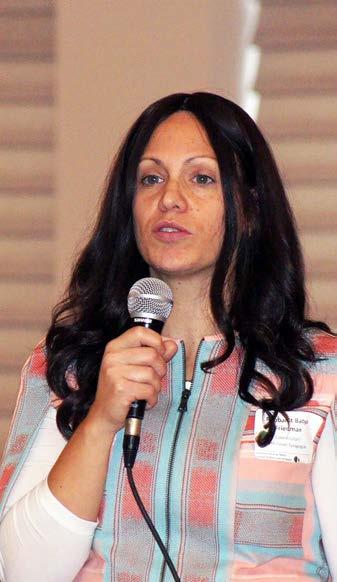
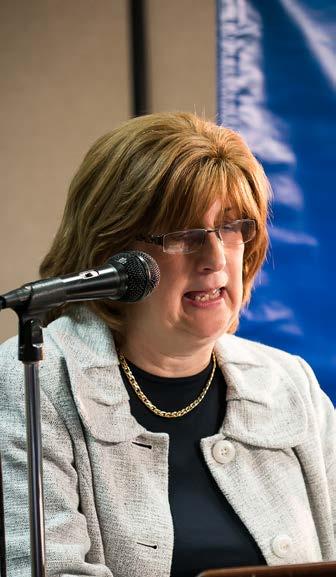

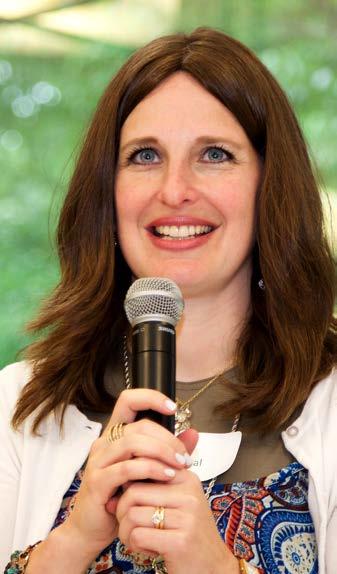


Top, from le : Rabbanit Batya Friedman says: “As a rebbetzin, I created my own job description.” | A rebbetzin for more than thirty years, Rebbetzin Judi Steinig helps organize programs across the country exclusively for rebbetzins | Rebbetzin Avital Chizhik-Goldschmidt juggles being a mother, an editor at the Forward, an adjunct professor of journalism at Stern College and a rebbetzin. Notwithstanding her full schedule, she “wouldn’t trade her job as rebbetzin for anything.”
Bottom, from le : A mother of seven, Rebbetzin Ruchie Koval copes with her non-stop schedule by delegating. “Some women . . . do everything on their own and they burn out.” | “As a rebbetzin,” says Rebbetzin Karen Hochberg, “I've had the oportunity to create so many fulfilling relationships.” | Rebbetzin Lori Palatnik, founder of the JWRP, otherwise known as “Birthright for Moms.”
Photo: Freed Photography
of credit,” says Rebbetzin Hochberg. “Many of them have young children and demanding professions, some are doctors, dentists or lawyers. It’s wonderful that they also strive to help their husbands build a community.”
When Rebbetzin Steinig had young children, she worked as a freelance editor while tending to the needs of the small shul. “ $ere was no secretary, no executive director,” says Rebbetzin Steinig. “My husband and I had to do everything.” Serving in a small shul can be tough since the rabbi and rebbetzin handle everything, from party planning to marketing to fundraising. Rebbetzin Steinig recalls the year the shul honored her and her husband. As they were preparing to leave for the dinner, her ten-year-old daughter turned to her and asked, “What time do we have to be there?” She told her daughter the dinner was starting at 5:00 &' and that they plan to be there ten minutes early. Accustomed to setting up every kiddush and shul event, her daughter was aghast.



“But who’s going to set up the tables?” she asked.
Of course, larger shuls present a di!erent set of challenges. “You can have simchas almost every night of the week,” says Rebbetzin Steinig.
Avital Chizhik-Goldschmidt, a twenty-(ve-year-old mother, serves as an editor at the Forward and an adjunct professor of journalism at Stern College. She is also in the midst of writing a (ction novel. “I struggle with the time commitment,” she says. Upon returning home from work, a er getting her one and a half year old fed and into bed, her day is far from over. On most evenings there is an event to attend with her husband, Rabbi Benjamin Goldschmidt, assistant rabbi at Park East Synagogue in Manhattan—whether it be a simchah, a visit to a shivah house, a funeral, a philanthropic event held at the shul or an appointment to teach a kallah class. Shabbat is hardly a break—Rebbetzin Chizhik-Goldschmidt is expected to host young couples for a meal. “People

think that I get to go to lots of parties and dress up all the time,” she states. “While I truly love what I do, I am always on, always smiling.”
Rebbetzin Chizhik-Goldschmidt manages by planning one day and one week at a time. $ey only host guests for Friday night, reserving Shabbat lunch as their private family time.
“It feels like having a second child, always feeling guilty about whom I am giving more attention to—family or community,” she admits.
Setting boundaries and knowing one’s limitations is critical in order to prevent burnout, say veteran rebbetzins. “In my younger years, I said ‘yes’ too much,” says Ruchi Koval, a forty-two-yearold mother of seven who serves as the director and co-founder of the Jewish Family Experience (JFX), a family education center and Sunday school in Cleveland, Ohio. “I was much more intimidated and insecure.”
In addition to running the JFX, Rebbetzin Koval teaches four classes The City of Sderot together with the Max and Ruth Schwartz Sderot Hesder Institutions invite you to join them in Sderot on Chol Hamoed Succot for a Simchat Beit Hashoeivah Dinner Sunday, October 8th, 2017 as they welcome The Honorable David Friedman United States Ambassador to Israel and honoringRabbi and Mrs. Meyer



Pioneers of Long Island Jewry, Founder and First Dean of HANC See the dynamic growth and meet the people of the city who represent the resilience of the Jewish People and the State of Israel for information on sponsorship opportunities and to reserve your seat in the succah sderot.org/succot or email succot@sderot.org Join us as we lay the cornerstone of the new men’s dormitory and celebrate the establishment of the new Sderot Women’s Midrasha carnival rides and activities for children transportation available


We have the opportunity to do so much good. People really want to do good things; with a little bit of planning, we can bring out the best in people.
every week. She is also a certi(ed parenting coach, author of a popular blog, a JWRP trip leader, as well as founder and board member of Ohr Chadash, a day school track for children with autism and ADHD in Cleveland. To cope with her non-stop hectic schedule, she delegates. “Some husbands and wives do everything on their own and burn out,” she explains. She hires sta! to help run her various endeavors and is a (rm believer in hiring household help. She has also lowered her expectations, permitting herself to be okay with non-essentials; she cooks simple Shabbat and dinner meals. But the way rebbetzins choose to juggle—or not to—is a highly personal choice. When Rebbetzin Palatnik assisted her husband in running the Village Shul, the (rst Aish HaTorah shul in Toronto, Canada, she stayed home to raise her (ve children, now ranging between the ages of eighteen and twenty-eight. $ese days, working well beyond full-time, she admits: “I couldn’t have run the JWRP when my kids were little.” When she launched JWRP in 2008, she was totally consumed by the program—leading every trip, doing all the fundraising herself and taking care of basically every last detail. “I did everything on those trips except drive the bus,” she says. Today Rebbetzin Palatnik relies on talented trip leaders like Rebbetzin Koval, enabling her to be there for her family when necessary.
“When I was younger, mothering seemed so hard practically and physically,” continued Rebbetzin Palatnik. “Now it’s a di!erent type of challenge—it’s more emotionally challenging.” Currently, Rebbetzin Palatnik is busy helping her older children (nd suitable life partners and navigate the stormy waters of
early adulthood. “ $e most important decision one will make is who to marry,” she says. “Being there for my children at this most crucial juncture of their lives is important. I can outsource a lot, but I cannot outsource being their mother.”
An Ever-Changing Role
Most of the rebbetzins concede that their role is constantly changing, never static. “What a rebbetzin does when she’s in her twenties will o en be very di!erent from what she does when she’s in her forties or ( ies,” says Rebbetzin Steinig. And the needs of the community will change. Rabbanit Friedman knows this well. Attracting worshippers to Beth Israel on Friday nights is no longer a struggle—even on the coldest nights; so she no longer needs to make her much-celebrated chicken soup. “Back then that was what the shul needed,” she says. “My role as rebbetzin has evolved and continues to evolve.”
“Since every community, every shul is unique, every rebbetzin partnership is unique—no two rebbetzins are alike,” continues Rabbanit Friedman, whose (ve girls range from two to sixteen. “ $e role is determined by both the needs of the community and the individual personality of the particular rebbetzin. Depending on where I was in life, I was able to give more or less.” While Rabbanit Friedman devotes herself fully to serving as rebbetzin in Edmonton, there are not too many young rebbetzins who view the role as their full-time job, notes Rebbetzin Meira Davis, who runs an annual Yarchei Kallah for rebbetzins
And because rebbetzins are increasingly career-oriented, expectations have become less de(ned,
more uid. Rebbetzin Hochberg grew up in a home where her parents worked together to build a business; seeing that model in uenced her to be a true partner to her husband.
“A rebbetzin has options—you can be as active or as inactive as you want to be,” says Rebbetzin Hochberg. “I chose to be active.”
“ $e rebbetzin’s role has always been very individual,” Rebbetzin Steinig says. “Each rebbetzin needs to consider a role that she is comfortable taking on, one that suits her personality, skills, family dynamics, profession and shul needs. One rebbetzin may excel at giving inspiring classes while another may not be comfortable teaching, but is skilled in event planning.”
At the end of the day, it all comes down to personality. Some women thrive on rebbetzinhood, others don’t.
But customizing the role to suit one’s lifestyle seems to work. It took Rabbanit Friedman, a former banker, a few years to (gure out how she could best contribute to the community. Today she is a real partner with her husband, serving the shul in a multitude of ways, including giving shiurim, teaching bat mitzvah classes and engaging in her newfound passion—doing interfaith work. Rabbanit Friedman has the distinction of being probably the only rebbetzin paid by the Anglican Church— she works as the director of the Capital Region Interfaith Housing Initiative.
She also takes great pride in being able to bring the entire Jewish community together. $is past Yom Yerushalayim, for example, she organized a fun-(lled event that the whole community could participate in, from the Reform temple to the local kollel. “As a rebbetzin, I created my own job description,” she says.
Learning the Ropes
Most Orthodox shuls won’t hire an unmarried rabbi. “A rebbetzin is o en integral to a rabbi’s professional success, whether she takes a public stand or a more private role of a supportive spouse,” says Rebbetzin Chizhik-Goldschmidt. “ $e rebbetzin’s job is usually unspoken, with no contract.” Yet there is no rebbetzin degree or certi(cate, no o%cial training for the position.
“I learned a lot in high school and seminary, but didn’t have training in public speaking, counseling, et cetera,” says Rebbetzin Koval. “I made a lot of mistakes along the way.” In her early
was very disconcerting,” she says. Rebbetzin Palatnik shared a similar experience. “I would give advice to people when they approached me about questions regarding their teenaged kids. $en I had my own teenagers and called [those people] and said, ‘Forget everything I said.’” Sometimes, she would reach out to Rebbetzin Feige Twerski, a seasoned and well-respected rebbetzin in Milwaukee, for advice. “I also learned when to say, ‘I don’t know,’” Rebbetzin Palatnik says.
A little over a decade ago, Yeshiva University’s Center for the Jewish Future launched the Rebbetzins’
of relevant issues including women’s health and halachah, raising children in the limelight, and rebbetzin burnout, the conferences are geared to address the issues rebbetzins face in their day-to-day work. For rebbetzins who are o en confronted with some of the most di%cult life challenges—selfmutilating teens, those grappling with
At the end of the day, it all comes down to personality. Some women thrive on rebbetzinhood, others don't.

NCSY THANKS ALL OF THE RIDERS AND SPONSORS WHO PARTICIPATED IN BIKE NCSY.
Your partnership makes a difference in the lives of dozens of teens who will be able to study Torah in Eretz Yisrael after high school!



THANK YOU TO OUR SPONSORS












NCSY
is the international youth movement of the OU.
Coping with Loneliness
“Join the rabbinate, see the world.” So goes the expression. Indeed, many young rebbetzins realize early on that it’s unlikely they will be able to spend their entire lives happily establishing roots in one community. “A lot of women who become rebbetzins don’t end up living anywhere near where they lived before they married,” says Rebbetzin Meira Davis. Leaving the comfort of friends and family, and familiar streets and neighborhoods can, of course, bring about an intense sense of loneliness.
The early years after her move from the rich Jewish life in New York to the relatively tiny Jewish community of Edmonton were “rough,” admits Rabbanit Batya Friedman. She made local friends, but the isolation was always a shadowy presence. Moreover, since Edmonton is a “transition city” where people come for schooling or to finish a residency, even the relationships that she built tended to be short-lived. Rabbanit Friedman used the situation to her advantage. “My husband is my best friend,” she says. “We became stronger because of the isolation.”
Rebbetzin Lori Palatnik, who spent years working in community outreach shuls in Toronto, New York, Denver, and currently Rockville, Maryland, was keenly aware of the loneliness that is
endemic to living in a mostly non-observant community. During the long Shabbatot in the summer, her kids had no friends to play with. One year on Purim she sent out 100 mishloach manot packages; she got only one back. Ultimately, however, those who got involved in her shul became her closest friends. In every community in which they lived, she and her husband brought many Jews closer to their roots. Now she attends many of their kids’ weddings. “All of those years of loneliness were worth it!” she says.
And yet, serving as the rabbinic couple in a small community can be intensely rewarding.
“Out-of-town, you are often everything,” says Rebbetzin Davis. “You are the kallah teacher, you are part of the chevra kadisha. If the rabbinic couple in a small community doesn’t provide certain services, people can’t get them.” Committed to community building while raising her nine children, Rebbetzin Davis worked alongside her husband for nearly four decades to establish a strong, vibrant community in Hollywood, Florida. Their e!orts paid o!. When they first came, the shul consisted of forty-five families; today it boasts more than 600. “We made a di!erence,” she says.
drug or other addictions or with gender identity issues—such a support system is invaluable. It’s also imperative for rebbetzins to know how to respond appropriately and to refer to the right professional. “Rebbetzins in their communities were pretty isolated. What kind of support did you have decades ago? None,” says Rebbetzin Davis, the conference organizer, who served as rebbetzin at the Young Israel of Hollywood-Ft. Lauderdale for thirtysix years.
Today, avenues of support for rebbetzins are available, with more cropping up each year. In her role at the OU, Rebbetzin Steinig has coordinated programs with Rebbetzin Davis for training rebbetzins, as well as for kallah teachers, in several venues across the country. Other training programs for rebbetzins include those run by Ner LeElef, Shalom Task Force, and the United Task Force for Children & Families at Risk, a consortium of forty social-service and mental-health agencies that provide a myriad of services within the Tri-State area.
In addition to training opportunities, the use of technology to connect rebbetzins from all over the world is a game-changer, say many veteran rebbetzins. YU launched Rebbetzin’s Café, an online forum where rebbetzins can network; and a group of rebbetzins from around the world created a WhatsApp support group. Rebbetzin Koval describes this support network as “life changing.”
“ $irty years ago, when I began as a rebbetzin, there was no support system,” says Rebbetzin Steinig. “When I was a young rebbetzin and met other moreexperienced rebbetzins, I was always impressed because it seemed like they ‘had it together.’ When I actually got to know some of them, I realized everyone is struggling.”
Spiritual Satisfaction
What propels these women to throw themselves into klal work while managing demanding careers and growing families? For many, it's the spiritual bene(ts.
Being there for my children at this most crucial juncture of their lives is important. I can outsource a lot, but I cannot outsource being their mother.
Rebbetzin Hochberg did not have a career outside of her shul until her special needs child reached adulthood and moved to a group home more than a decade ago. Since then, along with serving as director of community programs for the A(kim Foundation, Rebbetzin Hochberg has organized an array of chesed activities including singles events, clothing drives and an annual 5-K run/walk for Israel that has raised more than $1 million in proceeds. Each year she, along with the women of the shul, sends 150 bags of clothes to Israel. “[Being a rebbetzin puts you] in a position where you can harness the energy of a lot of people,” says Rebbetzin Hochberg. “We have the opportunity to do so much good. People really want to do good things; with a little bit of planning, we can bring out the best in people.”
Rebbetzin Davis agrees. “ $e opportunities to have a positive impact are endless,” she says.
Why did the Chofetz Chaim
Rebbetzin Davis’ elderly parents lived with her and her husband during the last ( een years of their lives. Without even realizing it, the Davises were modeling love and respect and how to treat aging parents with dignity. To this day, members of their community say things to Rebbetzin Davis like, “I still remember how you took care of your parents.” At the time, Rebbetzin Davis was solely focusing on tending to her ailing parents, not on serving as a role model. “But people see what you do,” she says.
$e opportunities for religious ful(llment, say many of the rebbetzins, make all the sacri(ces, the mesirut nefesh that is part and parcel of rebbetzinhood, worthwhile.
“Being a rebbetzin makes you be who are supposed to be,” says Rebbetzin Hochberg. “It forces you to be your better self.”
& R' Chaim Ozer Grodzinsky start EZRAS TORAH?

In an ideal world, those who devote their lives to Torah would be recognized as the spiritual heroes that they are. Support Ezras Torah's Tzedakah Programs and make that ideal a reality.
In Eretz Yisrael today, Ezras Torah provides Housing, Emergency Medical
I would like to help Ezras Torah! Enclosed is my tax-deductible contribution for:
r $18 r $36 r $54 r $100 r $180
r $360 r $540 r $1000 r $5000 r Other $____
Method of payment:
r Check r Visa r M/C r A/E r DISC.
Funds, Wedding Orphan Assistance, Yom Tov Grants and Special Need's Grants and Loans. Make a life of Torah devotion and commitment an everlasting edifice that will bring us the Rabbonim, Dayanim and Leaders of tomorrow!
Please contact me regarding establishing an Ezras Torah Fund for a: r Loan Fund r Medical Assistance Fund r Endowment Fund
make donations go
Or


Ezras Torah publishes the famed Ezras Torah Luach

Habits Spiritually of Strong Families
RaisingChildren with Values


To religious Jews, parenting entails more than caring for our children physically and emotionally.
We must be invested in our children's religious identities, help mold their spiritual lives, and imbue them with a strong, deep emunah that will help them withstand the vicissitudes of life.
In the pages ahead, prominent rabbis and educators o er several practical tips or “habits” for raising children with strong religious beliefs.
Each contributor responded to one or two questions below:
1. What middot are most important for parents to work on to be successful in transmitting religious values?
2. What are the most e ective ways for a parent to convey the core values of emunah and bitachon?
3. No one is religiously perfect. How does one deal with the inconsistency between what one teaches his children and his own actions?
4. What role does the school/yeshivah play in a child’s religious growth and development?
Habit No. 1: Be Authentic
Rachel Silber
"ere are three long term goals that are used as a litmus test to de!ne the “mechunach child”—a well-taught child:
1. Child should know right from wrong;
2. Child should know his or her strengths;
3. Child is not afraid to fail or make a mistake.
A child primarily builds his values from his parents’ core value system. In order for a child to learn this from his parents, two essential components must be present: relationship and authenticity.
Relationship—Without a positive relationship, parents are limited in their ability to mold their child. (How does Dad make you feel if he is controlling, condescending or both? Would Dad be someone we would choose to spend
time with or pick as a role model?)
Authenticity—Children pick up on who we are even if we don’t utter a word about our beliefs.
One of my most vivid memories of my childhood is of my mother greeting the unkempt women who used to come to our door collecting tzedakah. In addition to giving whatever she could monetarily, my mother would o#er the women, most of whom hadn’t showered in a while, fresh fruit and a hot drink. Similarly, I cannot forget “Bess,” the ninety-something-year-old woman my mother would take on weekly shopping expeditions to Waldbaum’s. My mother would patiently walk up and down the aisles with Bess while she ever so slooowly perused the canned goods and the weekly specials. "en my mother would load up the car, schlep the bags into the elevator in Bess’ apartment building and bring them up to her door. My mother did not teach me about chesed by speaking about it. She taught me via the personal example she set. Values are transmitted through our actions, not our words. We have to be brutally honest with ourselves and !gure out what values we stand for before we think about passing anything down. "ere should never be an inconsistency between what you tell your child your core value system is and what it actually is. Is it reasonable to lecture our children about the value
Rachel Silber is a graduate of Michlalah Jerusalem College and received her MA in special education from Columbia University Teachers College. During her years living in Israel, Mrs. Silber taught in the Israeli high school system and founded and directed the Ramat Eshkol Reading and Writing Center. She attended Rebbetzin Sima Spetner’s parenting classes for over five years and consults with her on various educational issues. Mrs. Silber currently resides in Edison, New Jersey with her husband and six children. She teaches Navi in Reenas Bais Yaakov high school in Highland Park, New Jersey and is also the Judaic studies resource director at Yeshiva Shaarei Tzion in Piscataway Township, New Jersey.
of davening three times a day or setting aside time for daily Torah study if we ourselves do not exemplify this? Can we teach our children to display responsible habits with their digital technology if we ourselves are not modeling such behavior? You may be able to fool yourself with sanctimonious lectures, but you cannot fool your child. Perhaps even more powerful than our actions are the reactions that we present to our children. A reaction is de!ned by a spontaneous emotional response to an event. For example, what will make us more upset a child who spills a bottle of grape juice on the Shabbat tablecloth or a child who speaks lashon hara at the Shabbat table? Our children learn so much about what really is important to us by our reactions.
Leba Musman
Performing mitzvot is an essential feature of our mesorah

It is only logical that we parents want to pass the importance of mitzvot on to our children in as complete and nuanced a way as possible. However, children are smarter and more perceptive than they are given credit for, and they are particularly adept at “reading between the lines.” "ey have an uncanny, radarlike knack for sensing hypocrisy, and a lack of sincerity can quickly undo all of the e#ort that we invest into behavioral training and reinforcement of mitzvah observance. It seems to me that acting with sincerity is the single most important element in successfully transmitting our Torah values and hashkafot to our children. Sincerity is the window to our values and our
Leba Musman, LCSW-C is a licensed clinical social worker and serves as a school guidance counselor at Torah Institute (TI) in Baltimore, Maryland. She received her MSW from the University of Maryland. Mrs. Musman resides in Baltimore with her husband and five energetic boys.
values provide the connection to our lifestyles. Obfuscating our children’s view of our true selves triggers their hypocrisy radar, making our capacity to reach them more di$cult.
Habit No. 2: Be Consistent
Ron Yitzchok Eisenman
Our children do not expect us to be angels; however, they do expect and deserve to have parents whose behavior is predictable and consistent.

Habit No. 3: Be Growth-Oriented
Rachel Burg

Adina Shmidman
Aside from feeling loved, a child needs to feel secure and safe and that he has total and unbreakable trust in his parents.
At times a parent has to discipline his or her child; however, the discipline must be meted out with consistency. A child, for example, might know that breaking curfew will result in being grounded for a few days or having his phone con!scated for a week.
If, however, his parents sometimes ignore when he breaks curfew and other times are enraged, this creates a feeling of insecurity in the child. A parent cannot allow his feelings and moods to dictate how he responds to a child’s infraction. If punishments vary depending upon a parent’s !ckle mood, then the child gets a clear message: his parent is not someone whose behavior and reactions can be relied upon. "is leads the child to feel—rightly so—that his parent is not someone he can trust. Consistency, or the need for the same “mis-action” by the child to always be met with the same reaction on the part of the parent, is essential in establishing a relationship that has a strong foundation built on trust.
Rabbi Ron Yitzchok Eisenman is the rabbi of Congregation Ahavas Israel in Passaic, New Jersey.
Parents should openly share that which is challenging, so that setbacks are viewed as opportunities rather than spiritual obstacles. When we share our challenges, appropriate missteps and strategies to succeed, we empower our children with “spiritual grit” to be their best selves. If Dad shares his story of how he le a meeting early to catch a winter Minchah, his children sense his commitment. When he takes it further and shares that he plans on scheduling his meetings earlier in the day to avoid having a con&ict with minyan, they see spiritual success in the trenches of real life. As a result of communicating how we surmount our own religious challenges with thoughtful planning, we plant spiritual seeds.
I recently traveled for work to a warm climate and returned a couple of days before Chanukah. "e trip was productive but very intense. When my children asked why I didn’t stay a bit longer and enjoy the sun, I easily answered that I wouldn’t be able to prepare for Chanukah properly and it simply wouldn’t feel right. "ere was no blame on Chanukah being “too early” or a waste of a trip. I made it clear that while the trip was necessary, preparing a chag for my family is my greatest joy and priority.
Rachel Burg is the director of Camp Dina for Girls and a teacher at Rosenbaum Yeshiva of North Jersey. She has worked in informal, mainstream and special education for over twenty years. Mrs. Burg is also a founding board member of Naaleh High School for Girls in Bergen County, New Jersey. She currently resides in Bergenfield, New Jersey, with her husband Rabbi Steven Burg and is the mother of six amazing kids.

When children view their parents as growing individuals who are striving, parents are transmitting a valuable message to their children. Indeed, one of the most valuable lessons parents can teach their children is that failure, particularly in religious life, isn’t an experience reserved just for sinners. A child internalizes the messages that parents communicate, and these words become the child’s internal dialogue, the self-speech that goes on in his or her head.
Carol Dweck in her book Mindset (New York, 2006) describes two mindsets that impact a person’s sense of striving and growth. Growth mindset is a belief that we can work hard and improve. "e internal dialogue sounds like this: I want to learn from criticism; I nd lessons and inspiration in people’s success; I am comfortable making mistakes. And instead of “I can’t” a child says, “I can’t do it yet.” Fixed mindset is the belief that our potential is !xed and set. Children raised in a !xed mindset environment believe that criticism is damaging and suggests failure. Risk and challenges are to be avoided lest they a$rm weakness.
While Dweck’s theory is generally applied in educational settings, we can apply the theory to religious growth. A truly religious home embraces a growth mindset where parents and children are constantly aiming for greater spiritual achievement.
Parents are in a position to validate the challenge of religious observance while creating an atmosphere that encourages growth and e#ort. Getting up in the morning for davening can be hard, but rather than criticizing a child for wanting to sleep in, parents would do well to empower their children to develop their “spiritual muscles” and recognize that it is a struggle.
Ultimately, religious growth is an experience of the heart and soul. It is not easily quanti!ed or measured
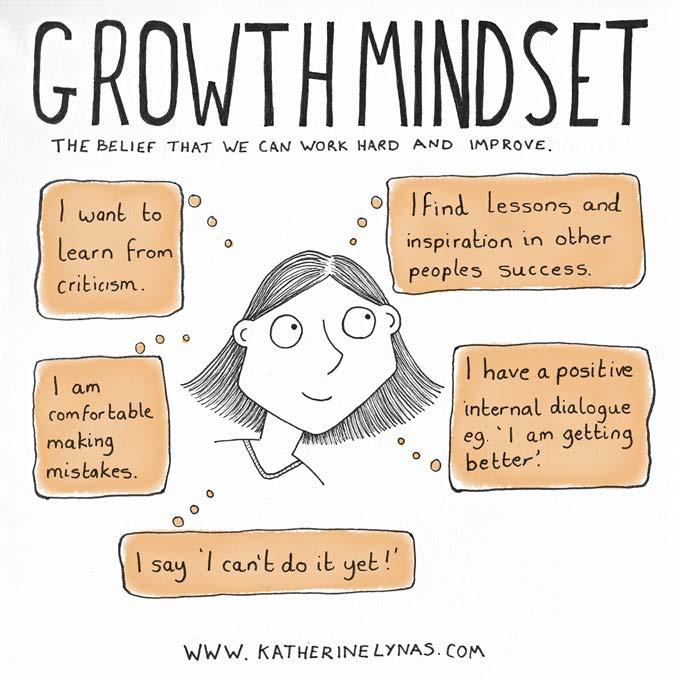
in the ways that we are accustomed to assessing intellectual growth and development (e.g. !rst reading Hebrew letters, then Rashi script, et cetera). "ere are no obvious yardsticks to measure its success.
Nonetheless, we can realize religious growth in our lives, if we focus intently. "us, one who works on davening with greater kavanah (fervor) develops a greater mindfulness and awareness, which hopefully will translate into other areas of religious development. Mindfulness in te llah can impact mindfulness in speech and behavior. One doesn’t look at religious
accomplishments as static, but rather as stepping stones toward greater spiritual self-awareness and commitment. Hence the famous Talmudic teaching (Avodah Zarah 20b) of Rabbi Pinchas Ben Yair that forms the basis of the classic ethical work Mesillat Yesharim:
“You shall guard yourself from everything evil” (Devarim 23:10): From here Rabbi Pinchas ben Yair derived: Torah brings to Watchfulness; Watchfulness brings to Zeal; Zeal brings to Cleanliness; Cleanliness brings to Separation; Separation brings to Purity; Purity brings to Piety; Piety brings to Humility; Humility brings to Fear of Sin;
Rebbetzin Dr. Adina Shmidman is the founding director of the Orthodox Union’s The Women’s Initiative. A dynamic community leader and teacher for over twenty years, she also serves as rebbetzin of the Lower Merion Synagogue of Bala Cynwyd, Pennsylvania and is the founding chair of the Rebbetzin Elaine Wolf a”h Rebbetzin to Rebbetzin Mentoring Program at Yeshiva University’s Center for the Jewish Future. Rebbetzin Shmidman lives in Bala Cynwyd with her husband and four sons.
Fear of Sin brings to Holiness; Holiness brings to the Holy Spirit, and the Holy Spirit brings to the Revival of the Dead.
Habit No. 4: Learn from Your Mistakes
Rachel Silber
Must we demand perfection from ourselves in order to e#ectively pass down our values? "ere is a big di#erence between con&icting values and legitimately making mistakes. Having di#erent values than those that you teach your child is the antithesis of chinuch. Conversely, making mistakes and “getting up” is an incredible teachable moment. One of the most powerful messages that we can give over to our children is “sheva yipol tzaddik v’kam—a righteous man falls seven times and rises up again” (Mishlei 24:16). Everybody makes mistakes and the human condition is such that we are able to correct mistakes that we’ve made and repent for our sins. A parent who can e#ectively model this behavior is planting seeds of resilience—teaching a child that his mistakes can actually be the catalyst in the organic process of his personal growth. When a parent makes a mistake and does not fall apart, but rather learns and grows from the experience, he is modeling the value of personal growth.
Ask any of my kids and they are sure to tell you what I think about IAD (iPhone Addiction Disorder) or TAD (Texting Addiction Disorder). I feel very strongly about maintaining healthy digital-citizenship habits. Last year when I started a new position, I had a lot of work-related e-mails and text messages to respond to a er working hours. One night, Moishy, my sevenyear-old son, turned to me and said: “Mommy, you’re so into your phone.” I realized that I was setting a double standard. I decided at that moment that my phone would be set aside during supper, homework and bedtime routine. A few weeks later Moishy said:
© Katherine Lynas
When we share our challenges, appropriate missteps and strategies to succeed, we empower our children with “spiritual grit” to be their best selves.
de!nition of a good yeshivah? A place where your children are encouraged to grow and know that they are loved and important. Our children spend most of their day in yeshivah. When choosing a yeshivah, make sure that it has an administration that has time for parents, and that the rabbeim and sta# are warm and understanding.
“Mommy, I like you better without your phone.” "is was certainly a crucial part of my own learning curve in responsibly balancing work, home and family relationships. Instead of feeling like a failure in front of my seven-yearold, I was able to re&ect and become a better parent.
Habit No. 5: Seek Guidance
Ron Yitzchok Eisenman
A rav’s ability to analyze and counsel parents with a Torah-true vantage point is indispensable for any parent seeking proper spiritual guidance for his or her children. But helpful and e#ective guidance from one’s rav can only be achieved if parents take the time to cultivate a relationship with their shul rav. Couples who &oat from shul to shul and never bother to anchor themselves in one shul and develop a connection with their rav are unlikely to receive maximum bene!t from seeking guidance from that rav
Obviously, for true mental health issues one needs a competent and trained mental health professional, and a rabbi has to know when to say, “ "is is beyond my abilities.” However, with regard to other issues, the rav—assuming he knows the family well—has an advantage over a therapist; he doesn’t just see the couple at weekly sessions, and therefore, he sees the bigger picture. "e rav knows the couple, and understands their circumstances and community.
Habit No. 6:
Know at “It Takes a Kehillah to Raise a Child”
By Yitzie Ross
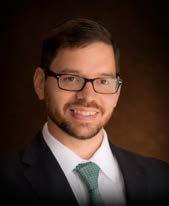
Many parents feel they are alone when it comes to raising children. In truth, there are many partners involved in raising a religious child. "e primary partners are the parents, of course. "ey have the greatest in&uence on their children; they also must serve as full-time ambassadors for Yiddishkeit. Beginning at a very young age, parents need to give their children a love for Yiddishkeit in a loving and caring atmosphere.
Another pivotal partner in a child’s growth is a rav—ideally a rav who knows your family and cares about you. A good rav can provide moral support, help with di$cult decisions, point you in the right direction when a professional is needed and o#er advice regarding educational and other issues. "e yeshivah/day school is the third partner. Having been a rebbe for twenty-two years, baruch Hashem, I’ve witnessed !rsthand the di#erence a good yeshivah can make in helping a child grow religiously. What’s the
Even more important than the yeshivah is the rebbe. A rebbe needs to love and care about his talmidim. Our children are a lot smarter than we like to think. Years ago, one of my students told me: “Many rabbeim told me they loved me, and some really did.” When a rebbe brings a positive attitude to the classroom and shows genuine excitement for learning Torah, for the yamim tovim and for being a part of Am Yisrael, his students will strive to follow in his path. I remember my !rstgrade rebbe telling me that the word “atah” in every berachah proves that Hashem is with us all the time. He said it with such conviction and enthusiasm, it still resonates with me almost thirty!ve years later. "at’s the power of a great rebbe. Parents and rabbeim need to work together to make sure that children develop a love for Yiddishkeit and an excitement for Torah and mitzvot. Constant communication is key, as is mutual respect.
"e &ip side is that the parents need to respect the rebbe as well. Putting down a rebbe because you don’t agree with him is a really bad idea. Going over his head to the principal every time you have an issue is also unfair. Furthermore, if your child has an excellent rebbe or morah, let them know how grateful you are.
Yet another partner in a child’s growth is one that parents don’t necessarily think of—namely, friends. When our children are younger, we set up playdates and monitor their friendships. As they grow older, we lose control over whom our children choose to hang
Rabbi Yitzie Ross, a grade-school rebbe on Long Island for over twenty years, writes a popular weekly parenting blog that has thousands of subscribers. He also gives parenting and social-media awareness classes and seminars throughout the US.
Sometimes grandparents may be more or less religious than their children. What is the correct approach when dealing with religious di!erences?
By Leba Musman
Grandparents play an indispensable and highly influential role in the life of a child. That is, in part, the reason for the tensions that can arise due to di"erences of opinion regarding religious observance and outlooks between parents and grandparents.
Granted, there are many case-specific issues I cannot address in this format; but I would like to make a suggestion that may help resolve some of the challenges. Based on more than a decade of experience working in the yeshivah school system, it seems to me that, as a community, we are overly concerned with how others perceive and value our religious level of observance.
A shift in our focus will be helpful, regardless of whether the situation is that a grandparent is “not frum enough” or “too frum.” Focusing on grandparents’ good middot and finding Jewish values in which they excel—for example, chesed—can change the way both parents and grandchildren view the relationship. On a personal note, I am choosing to raise my children in a yeshivish school, whereas I grew up Modern Orthodox. Nevertheless, I would be delighted if my children were to develop the character and principles that my parents possess and which they worked tirelessly to pass on to myself and my siblings. Let us highlight grandparents’ strengths when we discuss our parents with our children by telling stories about their kindness and their sensitivity to the needs and struggles of others. In this way, we provide our children with an opportunity to see the continuity in their family history and understand how seemingly very di"erent people are part of an integrated, cohesive entity.
out with. Nevertheless, friends play a tremendous role in our children’s future.
You don’t need to insist that all of your child’s friends be just like him. Actually, a bit of diversity is quite healthy. You do, however, need to make sure that your kids are supervised in an age-appropriate fashion. If you’re worried about the e#ect a certain child is having on your child, cutting o# the relationship isn’t always the best answer. Rather, make sure to keep playdates at your house, so you can keep an eye on things. It is very important to remember that any house your child goes to must have a good Internet !lter or strong supervision.
"e !nal partner is, of course, Hashem. We need to constantly daven that our children should stay on the path of Torah and mitzvot. We need to daven that Hashem should give us the strength and ability to be good parents, teachers and role models. Just remember, though, that it’s not just davening that will su$ce; we need to put in our hishtadlut
Habit No. 7: Make Hashem’s Presence Real in Daily Life
By Rachel Burg
Instilling faith in our children is an o en overlooked yet crucial element of parenting. We can help our children develop a strong faith in God by invoking His presence at any given opportunity. We must ensure that God’s presence is not merely felt when the pendulum swings to the most rewarding moments like childbirth and weddings, or to the most challenging moments like death and illness.
Do our children feel it at the dinner table when we share a quick anecdote that re&ects a kiddush Hashem opportunity? Do they feel it in the way we prepare for Shabbat? Do they feel it when they hear their mother tearing up while reciting the names of cholim (the ill) during hafrashat challah? Do they feel it when they hear a parent say “gam zu l’tovah” (“this too is for the best”) when they have two semachot to attend on the same evening and refuse to become frustrated?
If a &ight runs late, let your children tease you and say, “I know, we weren’t supposed to be up in the air right now.” Hopefully, they have observed their parents many times casually shrugging their shoulders a er missing a &ight, demonstrating their belief that Hashem is moving the chess pieces with their best interest in mind.
If they hear you express this concept as toddlers, they can mimic you as they mature and replay it in their own minds when they are adolescents. Ideally, it will become part of their belief system as adults.
We need to create conversations that are both holy and casual simultaneously. If a family creates a mission statement where emunah is going to be reinforced at every opportunity, the mindset shi s to creating an achievable relationship with Hashem.
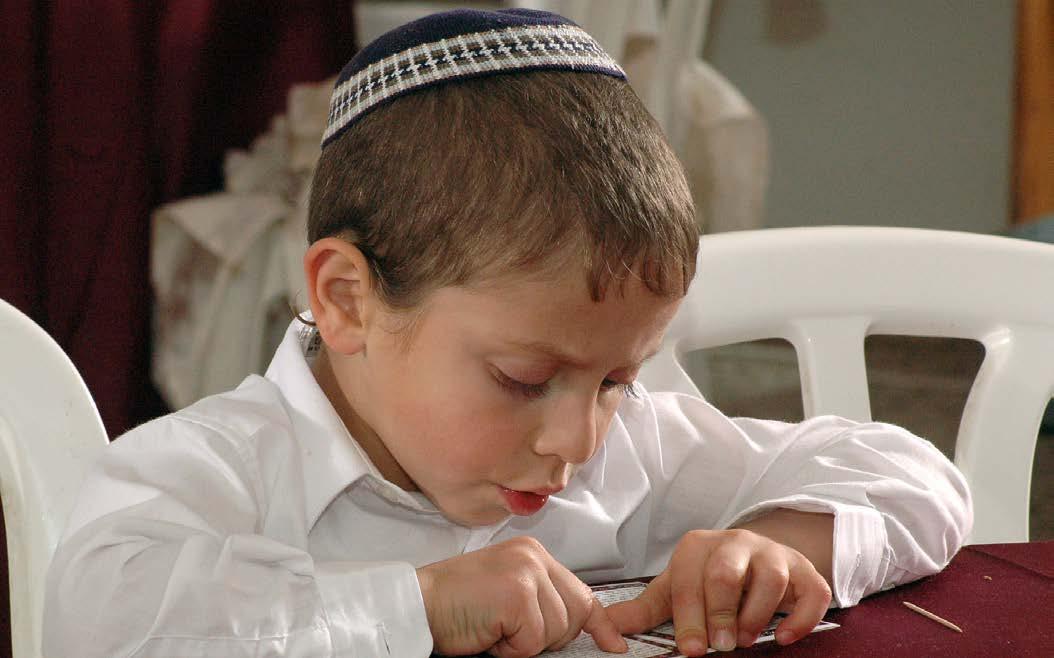
RAISING RELIGIOUSLY RESILIENT CHILDREN
By Shira Smiles
Shira Smiles has taught Torah to women worldwide for three decades. She currently teaches at Darchei Bina, a women’s seminary for gap-year students in Jerusalem, and gives several parashah classes and Chumash chaburahs weekly, many of which are streamed over the Internet and viewed across the globe. She is the author of five books, including Torah Tapestries on Chumash (Jerusalem, 2012).
My grown daughter once asked me if I felt I had been successful in raising my children. I responded by providing an outline of my and my husband’s main goals of chinuch, and then asked my daughter to evaluate for herself. Just as every institution has a mission statement that is reevaluated regularly, each family needs to have a vision and central focus in raising children, and to be &exible when necessary. While every family, hopefully, has religiosity as a goal, the question remains: how do we de!ne what that means, and how do we go about achieving that goal? Put simply, what is an e#ective formula for raising children who are strong in their beliefs and have a real relationship with Hashem?
Part of this question is how much of our chinuch mission is entrusted to the school system and how much of it we personally pursue at home. Walk into any preschool and you can hear the children singing, “Hashem is
Photo: Yehoshua Halevi
When a child comes home wide-eyed with excitement and enthusiasm about Judaism, parents who express even one word of sarcasm have begun to demolish their own educational foundation.
will want to share that knowledge with everyone else.
here; Hashem is there; Hashem is truly everywhere.” Unfortunately, for many children, that is where their recognition of Hashem begins and ends. Most schools make the assumption that knowledge of Hashem is a given, and they can start teaching His Torah and mitzvot "e results are students who are pro!cient in hilchot Shabbat and in-depth commentaries on Tanach, yet lack any meaningful relationship with Hashem or emotional connection with the Torah knowledge they acquired. Is it any wonder that many of these students end up declining religiously, deeming observance unworthy of their time and energy? "is tendency is particularly strong among those who don’t solidify their commitment by spending a year studying Torah in Israel a er high school. Having taught Torah, baruch Hashem, for three decades on the elementary, middle and high school levels in the US, and currently on the seminary level in Israel, I continually encounter these type of students. "ey are very Jewishly educated but are spiritually hollow. "eir dominant feeling is that Yiddishkeit is a burden, encroaching upon their personal freedom. Students are looking for the relevancy of the texts they study and how Judaism is meaningful in their modern lives.
It is crucial for parents to be actively involved in erecting the foundation of their children’s education. Some parents mistakenly relegate the personal connection with Hashem—the very basis upon which the school needs to build—to the school system. Teachers
try to “cover educational ground,” not necessarily “plant spiritual seeds.” It is imperative that parents take a closer look at their responsibility in the chinuch process. We must have clear goals of what we want to achieve and seek direction on how to succeed.
Rethinking Chinuch
"e source for the mitzvah of chinuch in the Torah o#ers excellent guidance in this quest. "e Meshech Chochmah (Rabbi Meir Simcha Hakohen of Dvinsk [1843-1926]) highlights Bereishit 18:19, which describes Hashem’s decision to reveal to Avraham Avinu the impending destruction of Sodom. "e pasuk states: I love him for instructing his descendants and his household to safeguard the way of Hashem to perform acts of righteousness and justice. "e greatness of Avraham Avinu was manifest in his disseminating knowledge of Hashem to his household. In a similar vein, the Rambam in Sefer Hamitzvot [Aseh 3] says that we can come to love Hashem through contemplation of the wonders of creation. He adds that part of this mitzvah is to bring other people closer to Hashem and to tell them of His goodness and kindness. When someone loves another person, he wants to publicize it. If you have ever witnessed the excitement of a new mother or newly engaged person, this concept is self-explanatory. Both exude enthusiasm; the mom will talk to anyone who will listen about her new baby and the bride will do the same about her prospective soulmate. Similarly, one who truly loves Hashem
Rabbi Matisyahu Salomon [With Hearts Full of Love (Brooklyn, NY, 2009), p. 254] suggests that the mitzvah of chinuch falls under the larger rubric of love of Hashem. When parents are full of love for Hashem and His Torah, they want others to feel the same way. "is type of chinuch is not reduced to a list of “do’s and don’ts,” but is rather a beautiful experience of love. Do our children overhear us grumble “I have to bentch now” or do they hear us say “Baruch Hashem, I have the special opportunity to thank Hashem for the wonderful food that I just enjoyed”? We can’t possibly expect our children to love Hashem and keep mitzvot simply because we tell them to do so. Chinuch begins with parents deepening their own relationship with Hashem, making it real, and sharing that enthusiasm with their children. Parents cannot convey a “do as I say, but not as I do” attitude towards mitzvah observance. A father who talks throughout davening cannot then go ahead and rebuke his children for talking in shul. Our actions speak louder than words, and our feelings speak louder than our actions. Rabbi Dovid Kaplan, a senior lecturer at Ohr Somayach in Jerusalem, tells a story of a boy who went o# the derech "e boy described that the “straw that broke the camel’s back” was when his neighbor bought a new car. "e boy noted that his father always spoke about how much he loved Torah and how excited it made him feel. However, when he saw his father’s reaction to the new car, he saw what really excited his father. Children need to witness their parents’ passion for Yiddishkeit
Laying the Groundwork of Faith
So how do we begin? "e !rst step in any relationship is knowledge of the other person. "e more we know a person, the deeper our relationship with him or her. "is is how love develops and is enhanced. To realistically reach this level of excitement in ahavat Hashem, we need to work on the building blocks of this relationship. Rabbi Moshe Feinstein, zt”l, writes in a teshuvah [Yoreh Deah 3:76] that
Ithe most important part of chinuch is to teach emunah. He advises parents to consistently tell their children that everything they have is from Hashem, and that they are only the emissaries. When a child realizes that everything he possesses is from Hashem, he will develop a natural love for Him and for his parents for being the messengers. "e child will also feel an emotional connection and intuition for thanking Hashem, feeling that He is the source of all blessing. A child growing up in this environment develops the feeling that Hashem is as real and present as the sun in the sky. Hashem must be the byword in our lexicon, and this connection must be constantly strengthened. Of course, people pay lip service to expressions such as “im yirtzeh Hashem” and “baruch Hashem” but they are o en articulated without conviction. We need to live by these credos.
I learned this lesson very clearly from one of my daughters. I was driving around Beverly Center, a shopping mall
in Los Angeles, looking for parking. A er I had circled many times in vain, I found a parking space right in front of the mall. I promptly exclaimed, “Wow, am I lucky!” to which my daughter, who was three years old at the time, piped up from the back, “Ima, todah Hashem.” "e younger a child is introduced to Hashem as the source of all good, the less emotional resistance he will have toward Him when he grows up.
"e natural outgrowth of love is joy. Rav Feinstein was once asked why so many Jews who were moser nefesh to keep Shabbat did not merit descendants who were shomrei Shabbat. His famous explanation was that these parents constantly expressed the di$culty of being a Jew. If we aim to inspire a love of Hashem so that our children remain loyal to Torah, we need to breathe genuine simchah into our Yiddishkeit. Our children live in a generation of immediate grati!cation; with the touch of a !nger they can access endless hours of entertainment. No wonder they are
easily bored with a lengthy davening that does not engender a feeling of grati!cation! We adults also grow disinterested in aspects of our Judaism. When we parents grow complacent in our own observance, our relationship with Hashem becomes stale and joy is hard to access. To raise committed Jews, both in practice and emotional commitment, we must take the lead with our own spiritual development.
Becoming SpirituallyOriented Parents
About twenty years ago, when I began teaching adult women, I asked a number of rabbanim what my teaching focus should be. "eir unanimous response was that I must reach the heart, not only the mind, and to incorporate Chassidut into my teachings for this reason. My experience is that learning the deeper meaning ehind rituals has the power to transform the habitual into the holy. For example, Chanukah becomes a
Why did the Chofetz Chaim & R' Chaim Ozer
Grodzinsky start EZRAS TORAH?

n an ideal world, those who devote their lives to Torah would be recognized as the spiritual heroes that they are. Support Ezras Torah's Tzedakah Programs and make that ideal a reality.
In Eretz Yisrael today, Ezras Torah provides Housing, Emergency Medical
Funds, Wedding Orphan Assistance, Yom Tov Grants and Special Need's Grants and Loans. Make a life of Torah devotion and commitment an everlasting edifice that will bring us the Rabbonim, Dayanim and Leaders of


time to access the hidden light of Creation, and to sit by the candles to meditate on our souls, which are referred to as “a candle of Hashem.” On a deeper level, the Purim seudah is the King (Hashem) asking “Esther,” the hidden part of us, what we desire, and He will ful!ll that request. Children who are raised learning deeper Torah insights will !nd their religious practices more meaningful. Over time, these youngsters will recognize that this kind of Torah lifestyle is more profoundly satisfying than the &eeting fun of technology. As they mature, they will seek out more experiences that respond to the yearning of their souls, as they look for purpose and value in their lives.
As a teacher, I confront the same challenge every year: how to foster a student’s personal growth when her home is not a growth-oriented environment. For example, I strive to teach my students that Pesach night is a powerful time for te llah "e Seder has eighteen berachot that directly correspond to the berachot of our daily Shemoneh Esrei; therefore, it is important to avoid extraneous conversation during the Seder. However, my students invariably tell me that their Seder experience at home is focused on going through the text as quickly as possible. Why? So that t here will be more time to socialize with the extended family that is visiting. My students o en feel that if they try to add some spirituality to the ritual, they are met with a derisive response from family members. Perhaps with a sarcastic comment like, “Does the Rebbetzin have anything more to add?” Parents don’t realize that they have the power to instantly destroy their own !nely-built families, just as a tall building can be demolished with the push of a button. We can undo many years of hard work in chinuch with the deadly weapon of cynicism. When a child comes home wide-eyed with excitement and enthusiasm about Judaism, parents who express even one word of sarcasm have begun to demolish their own educational foundation. "is cynicism may stem from the
parents’ lack of con!dence in their own religious practices. And sometimes the child perceives more negativity than was intended. Nevertheless, cynicism is always destructive. Another example is when a meshulach comes to the door soliciting tzedakah. If we mumble under our breath, “Another handout? Why doesn’t he just go get a job?,” then we have tainted the mitzvah of tzedakah for our children. Rav Feinstein emphasizes further that sending our children to give tzedakah to the meshulach at the door, instead of personally giving him the attention he deserves, is also not positive chinuch. We have not taught our children to be kind and giving people; rather, we have modeled laziness and taught our children to disdain those on a lower socioeconomic level. Likewise, speaking derogatorily about rabbis or teachers sends a message to our children to disrespect Torah authorities. "is behavior is akin to dynamite that obliterates a building’s very foundation. If our goal is to raise Torah-committed children, then we !rst must eradicate our own destructive behavior.
e Divine in Daily Life
"e pasuk in Yirmiyahu [7:28] says: “Faith was lost, it was eliminated from their mouths.” "e Alter of Kelm (Rabbi Simcha Zissel Ziv [1824-1898]) expounds that faith is lost when “it is eliminated from our mouths,” that is, when we don’t constantly talk about Hashem. It is imperative for parents to connect with Hashem all the time. When discussing !nancial success or any good fortune, it is important to show gratitude to Hashem. Likewise, when faced with challenges, we need to acknowledge that this too is from Hashem; a challenge is the Divine call to introspect and to learn from the experience. When Hashem is “part of the family” and an intrinsic part of one’s life, then a youngster will be open to learning what the Torah expects from him. A year of study in Israel shows young adults that a Torah lifestyle is real for people, not just a theory. All people crave purpose and spirituality. Everyone craves structure and meaning. Imagine a family that joins together
When we parents grow complacent in our own observance, our relationship with Hashem becomes stale, and joy is hard to access.
at the dinner table and shares a short message from Rabbi David Ashear’s Daily Emunah e-mail series. Such a family is nourished intellectually and emotionally by the heightened awareness of Hashem. "is family feels Hashem not just on Shabbat, or in shul, but in all aspects of their lives. "is is our mission: “placing Hashem in front of us at all times.”
Another powerful tool to create this constant awareness is telling stories of hashgachah pratit, Divine Providence, at the Shabbat table. When each family member shares a moment when she felt Hashem’s presence, it strengthens her spiritual connection. Rabbi Yechezkel Levenstein, famed mashgiach at the Mir Yeshiva during World War II, was known to give his daughters a small coin for each hashgachah pratit event that they would relate to him. We o en play the game “I Spy” with our children. Imagine the profound e#ect of a Jewish version of “I Spy,” identifying the Hand of Hashem intimately involved in our lives. When parents recount a story that clearly shows a series of coincidences, they should preface the story with “What hashgachah pratit happened to me today!” When this becomes our manner of speaking, our children will also begin to frame their stories in the same way. Children who hear about hashgachah will look for hashgachah
Chinuch begins with parents deepening
their own relationship with Hashem, making it real, and sharing that enthusiasm with their children.
themselves. Over time, they will develop a hashgachah perspective on the world.
Chinuch, however, extends beyond this emotional connection. When Hashem is one’s focus, we need to include middot as well. It is the parents’ responsibility to teach their children to act appropriately, not just because it is good manners, but because it is the way to emulate Hashem. When a child does an act of kindness, praising the child for acting in a God-like way reinforces this message. Rabbi Aharon Kotler, zt”l, founder of Lakewood’s Beth Medrash Govoha, notes in Mishnat Rav Aaron that we mistakenly think that deveikut is all about religious ritual—covering our heads in tallitot and davening fervently. But the best way to cling to Hashem, he says, is to follow in His ways and imitate His attributes. Hashem is kind and merciful, so we need to behave likewise. Smiling at others, complimenting them, and helping people—these are all forms of deveikut "e message to our children is that Judaism encompasses all aspects of personal conduct, not just formal religious observance. Hashem gives without expecting reciprocation; we need to follow suit.
In raising my family, I have found that the more one brings Hashem into daily life, the deeper the connection. Two of my favorite ideas re&ect this concept. One is the explanation for the shortest line of the prayer Avinu Malkeinu, asking Hashem to inscribe us in the book of merits. Rabbi Salomon explains that we are really asking to be inscribed in the book of opportunities to do mitzvot. We ask
Hashem, “If you have a mitzvah to get done, please give it to me.” "is interpretation underscores the belief that it is a privilege to do mitzvot and not a burden. When we are presented with an opportunity to serve God, we must grab the chance and be grateful for the connection. Mitzvot are not a checklist, but precious opportunities for growth. A practical application of this idea is training children to always carry extra school supplies, so that they are equipped to help someone who has forgotten something. Children learn to feel the joy and ful!llment in giving.
"e second idea is quoted by Rabbi Mordechai Gi er, zt”l, former rosh yeshivah of the Telshe Yeshiva in Cleveland. When the Torah describes Hagar’s banishment from Avraham Avinu’s home, it states that she wandered lost in the desert. Rashi notes that this refers to her returning to idolatry. "e obvious question is, where exactly is that alluded to in the text? "e Torah states that she was lost, not that she returned to idolatry.
Rabbi Gi er explains that the fact that Hagar felt that she was lost was indicative that she had le the teachings of Avraham Avinu. A believing Jew should never feel that he is lost, because we are exactly where Hashem wants us to be. "erefore, the fact that the text says Hagar was lost indicates that she was lost spiritually as well; she had lost the true perspective on life.
Before the days of GPS and Waze, I would drive around and o en lose my way. It was at those moments that my children would remind me that we are not really lost. We are in the place Hashem wants us to be. As they
grew older, I extended this concept to other parts of their lives. So o en we !nd ourselves in situations that we never imagined. Recognition that Hashem orchestrates everything helps us cope through challenging times. In general, it is much easier to navigate these di$culties when the emotional relationship with Hashem is already solidi!ed by a history of His intimate closeness and personal care.
Even when this foundation is in place, the cementing of the relationship is te llah. Parents are obligated to daven for their children every single day—and the more speci!c our prayers, the better. In the Morning Prayers, we beseech Hashem that our children should !nd the ways of Torah to be sweet and pleasant. We need to pray for success in all areas of their lives. Rabbi Shimshon Pincus, zt”l, teaches that children are born from the tears of their mothers; it is the “watering” of their success throughout life. Taking children to the doctor for ear and throat infections are little reminders to keep davening for every detail of their lives. "is constant te llah should not be kept quiet—our children need to know that we daven for them! Sometimes I !nd a note in my daughter’s handwriting le next to my siddur. It might remind me that the teacher is switching seating assignments that morning, and to please daven that she should be placed next to a friend. Children should understand that davening doesn’t only take place in front of the Shabbat candles, but at all times throughout the week. When your daughter comes home from school and you ask her how she did on her test, mention that you davened that she should succeed. "e principle of “the apple does not fall far from the tree” does not hold true in hurricane winds. We are living in stormy times. "e best protection we can o#er our family is our prayers and tears.
Was I successful in raising my children? I need to wait until, im yirtzeh Hashem, I watch my children raise their children, and the grandchildren raise the following generation. Only then will I be able to answer the question. Until then, I will continue to daven.





HOW TO






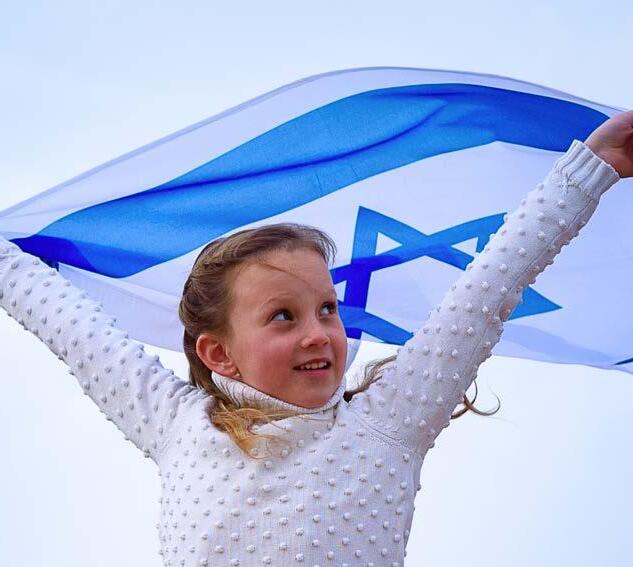




They are mitzvot we do multiple times a day, throughout the year, or perhaps just once in a lifetime: davening, learning the entire Tanach, paying a shivah call, settling in Eretz Yisrael . . . .
Often we know exactly how to prepare ourselves for success. But other times we may freeze in the face of the new or unknown. And even amid routine practices, on occasion we fnd ourselves acting by rote, lacking a freshness in our spiritual lives.
To help navigate such moments, Jewish Action asked seasoned teachers and experts for guidance on how to work toward mastery in ten different areas—and in the process, how to become better Jews. Here are their answers.
*Transliterations in the magazine are based on Sephardic pronunciation, unless an author is known to use Ashkenazic pronunciation. us, the inconsistencies in transliterations in this section and throughout the magazine are due to authors’ preferences.
COVER STORY
How to Prepare a Devar Torah
By Berel Wein
As told to Binyamin Ehrenkranz

A good devar Torah contains a message that people will remember and discuss. I’m not talking about a vort or a clever interpretation, but something listeners can take home with them. In order to come up with an e$ective takeaway, it’s important to " nd content that makes your point come alive in human terms. Today there is a wealth of resources to assist you in " nding meaningful material— even if you don’t know Hebrew. !e best way to identify a good topic is to select something you would want to hear about. Simply ask yourself, “What topic would I like to hear discussed and how would I want to hear it presented?” Don’t limit yourself to themes found in the week’s parashah. If there’s another Torah concept or theme that speaks to you, go with that instead. Once you have a guiding theme, it’s absolutely critical to prepare well in advance. Start by researching how your message is exempli "ed in Torah sources. Try to obtain an
Rabbi Berel Wein is the founder and director of the Destiny Foundation and has been a pulpit rabbi for over fifty years in Florida, New York and Jerusalem. Rabbi Wein is a former executive vice president of the OU, as well as a former rabbinic administrator of OU Kosher. He lives and teaches in Jerusalem, where he serves as mara d’atra of the Beit Knesset Hanassi Yisrael Hatza’ir in Rechavia.
anthology of Talmud, for example, which will help give a lot of context to your topic. Try to include personal stories and to relay your own relationship to the idea in a way that’s not exaggerated; audiences really appreciate the personal dimension. !at said, substance is still important. We live in a generation of stories, some of which are true, some of which are not. While anecdotes are de" nitely important, using too many of them may have a negative e$ect, as they o en portray a world that’s not real, much like hagiography. You are better o$ sticking to “stories” that have aged well—ideas from Talmud, Midrash, Pirkei Avot, et cetera. If you run into di culty " nding material, don’t forget to consider the resources that are readily available: for example, a teacher, a school principal or the local rabbi. Explain your message and ask if they can help you identify relevant content. I prefer using an outline rather than a speech written out word for word. An outline allows for more spontaneity. Having someone up front reading o$ a sheet of paper is absolutely deadening to an audience. Irrespective of how you choose to deliver your speech, just remember to stick to one theme around which you build your entire talk. !e goal should never be to show how much you know. When it comes to public speaking, as in life in general, more is really less. Many times a good speech is ruined simply by being too long. How much you need to practice and how to do so is a personal decision. In general, though, it’s a good idea to run the speech by someone close to you—someone who will give an honest assessment of your message and delivery without being unduly harsh. One way to feel con "dent about your delivery is to become as comfortable as possible with the material. If you have self-worth, that communicates itself to your audience as well. You might also add in a touch of humor, so long as it’s self-deprecating; you can be funny as long as it’s only at your own expense!
or two people in the crowd. Many of us have never been trained to speak publicly. We can go from our bar or bat mitzvah to our wedding to our child’s bar or bat mitzvah without delivering a single public devar Torah We should take advantage of more opportunities to speak and to teach others, and we may realize that we have capabilities we never knew we had lehagdil Torah uleha’adirah [to raise up Torah and glorify it].
How to Complete Tanach and Know It
By Zippi Klein As told to Binyamin Ehrenkranz

Binyamin Ehrenkranz is a member of Jewish Action’ s Editorial Board.
One tip for making public speaking less intimidating: try not to look at the whole audience—focus on one
!e "rst thing to do is just start. What o en holds people back from going through Nach is the sheer vastness of it. It can seem overwhelming. But if you pace yourself, it’s really manageable. In Israel there is a national e$ort encouraging people to learn two chapters of Nach a day, by which one would "nish Tanach in a year, while also learning Chumash in tandem with the weekly parashah cycle. !e main thing is just to start and not be worried about understanding and retaining everything the "rst time around. !e more you learn the more you’ll understand and remember later on. No matter which sefer you begin with, having a good grasp of the content of Nevi’im Rishonim is really important. You’ll need this to understand the storylines, events and players in Nevi’im Acharonim and Ketuvim. So even if you want to start with another sefer, you’ll "rst need at least a solid run-through of Yehoshua, Sho im, Melachim and Shmuel. I’ve found with my students that the feeling of ownership of what they’ve learned really helps fuel their desire

Torah (ou.org/torah), provides a daily shiur in Nach—the Books of the Prophets (Nevi’im) and the Writings (Ketuvim)—at the pace of a chapter a day. Participants can complete Nach in just over two years. Since its launch in 2008, Nach Yomi has completed five cycles and is currently in its sixth cycle. The program consists of a daily audio shiur, a synopsis of the day’s
to learn even more. One way we begin building this is by taking a chunk of the pesukim—sometimes it’s more than a whole perek, sometimes it’s less—and writing out a summary. It can be even just a couple sentences recapping twenty or thirty pesukim. And give it a title. Just making your own segments, summaries and headers alone can really go a long way in helping process what you’re learning and actually remembering it. Obviously review is still essential. Create and stick to your own cycle— say, read the same pesukim twice in twenty-four hours and then once more within the week, perhaps on Shabbat. But making connections is a also a huge piece of remembering things. If you can connect what you’re learning in comparison with other passages you’ve encountered before, it will really pay o$
For example, when you encounter Yehoshua sending spies to Yericho, take a couple a minutes and go back to Parashat Shelach, when Moshe sent spies into Eretz Yisrael. Even if you don’t notice any major contrasts, by making the connection and focusing on the nuance of the words and of the storyline,
Nach Yomi
A
Chapter A Day, Every Day
chapter composed by Rabbi Jack Abramowitz, and intermittent in-depth audio shiurim. Additionally, Nach Yomi provides the text of the chapter in both Hebrew and English. Visitors to the Nach Yomi site come from three-dozen countries on six continents.
Nach Yomi can be accessed on the OU web site (ou.org/torah/ nach-series/nach-yomi/) and on the OU Torah App, available on iTunes and Google Play.
you’re going to remember it better. A great sefer to learn and do this with is Divrei Hayamim, as it constantly references back to Chumash and Nevi’im. It’s a great way to see so many connections and di$erences. !e Ketuvim in general parallel time periods in Nevi’im. So if you’re learning Megillat Rut, for example, you’re better o$ if you’ve already learned Sefer Sho im, or at least learn them simultaneously, since they took place at the same time in history. You’ll gain a much better understanding of the bigger issues and challenges of the time that way. !e same is true of Tehillim and Sefer Shmuel, though that may be a bit harder!
Zippi Klein is the Mikra Department chair at Harkham Hillel Hebrew Academy in Beverly Hills, California. She is responsible for the school’s Tanach curriculum and faculty development. She teaches Chumash and Nevi’im and oversees Harkham Hillel’s participation in the national Chidon HaTanach.
How to Daven
By Zale Newman As told to Binyamin Ehrenkranz

It is hard to speak to God since we cannot physically see Him. In his sefer, Darchei Noam, the
current Slonimer Rebbe, Rabbi Shmuel Berezovsky, points out that just because you are unable to see someone does not mean you cannot speak to him. When you speak to someone on the telephone, for instance, you may not know what the individual looks like but you can certainly speak with him. So why can’t you talk to Hakadosh Baruch Hu even though His presence is hidden?
!e truth is that we really can talk to Him. It’s a quintessential Jewish activity and is one of the pillars of Jewish life. But unfortunately it’s a skill that so many people have struggled with since the destruction of the Beis Hamikdash. To a great extent, the art of te!llah has been lost.
Davening requires the power of concentration more than the power of imagination. To truly concentrate, you may need to close your eyes or keep them focused solely on the siddur, limiting your peripheral vision. Do whatever it takes to really feel that you are speaking to Hakadosh Baruch Hu. Find a corner, cover your head with a tallis, go out to nature or go to a place in your mind.
People o en daven with intensity when there is a crisis—when they want someone healed, when they are crying to Hashem to have a child or when they are experiencing " nancial distress. !ey plead with Hashem for their needs and genuinely feel like they are talking to Him. But why is it so hard to pray that way when we are not in such pressing circumstances?
We can. We just have to practice doing it, beginning with a few minutes at a time and then expanding from there.
That’s what kavanah is. It means to aim, to focus your brain—and when you do so, davening on an ordinary day can become a life-changing activity.


WHAT IS A BERACHAH?
The Tangerine Experience and the Impact of Davening
By Zale Newman As told to Binyamin Ehrenkranz
A berachah is an attempt to “catch” Hashem in the moment. Take a tangerine, for example. First, look at the orange color. (Incidentally, there are very few orange things found in the natural world: an orange fruit, flowers and the rare bird, and that’s about it.) Look at its protective skin and think about where the orange came from. Our fruit tends to come from faraway places like Morocco. Imagine all the work that went into getting the orange to your home—from a decaying seed growing into a full-fledged tree, the nutrients provided by water, the earth and sunlight, the fruit developing from the blossom and then the harvesting, packing and shipping required to bring the fruit to your local supermarket. When you open up the orange, you find these cool little wedges filled with hundreds of fruity pellets. Bite into a wedge, and you taste refreshing, tangy,
sweet juice laden with vitamin C— a unique flavor all of its own. With this little piece of nutritious fruit, Hashem is sending you a gift. It’s love in a little ball. Hashem is saying, “I could have fed you like a cow. I could have fed you like a bug or a fish. But I didn’t. Look what I sent you from Morocco: little wedges, filled with pellets of flavorful, refreshing juice containing vitamin C to help protect you.”
If before eating a tangerine, one reflects on it this way and then says the berachah, suddenly it is no longer just an act of eating. It’s using food as a way to relate to Hashem.
And what are the results of reciting berachos this way? Not only do you begin to recognize Hashem more intensely, but you also become a more appreciative human being. You start to be more aware of what other people do for you. It makes life so much richer and so much more pleasurable.
This is also how davening can a ect you. The Baal Shem Tov’s measure of whether one davened or just mumbled words is: “Are you di erent post- davening than you were before? Are you at least a little more aware and a little more appreciative?” The key is being “more than”: more welcoming, calmer (and less angry), more tolerant, more sensitive, more giving, happier. A true davening experience should bring more balance and a genuine spirituality to your life.
!e best daveners I have seen may be physically in the room, but they are really not there at all. You could try speaking to them and they won’t answer; they are in a deep, meditative state. During Shacharis I o en see “the holy man of Toronto,” Rabbi Shea Fuhrer, the rosh kollel of the Bobover shul, daven like this. I like davening in his minyan because his kavanah is like the engine of a train; it pulls you along.
Daveners like that are in the midst of a deep, intense conversation and you can see it on their faces. !eir eyes are closed. Sometimes they are smiling and sometimes they are pleading. But it’s not dramatic— they usually aren’t moving and they aren’t waving their hands or yelling. !ey are having a deep, intense conversation. !ey are really in another place. And that’s what kavanah is. It means to aim, to focus your brain—and when you do so, davening on an ordinary day can become a life-changing activity. Obviously, it takes time to become this kind of davener. You can start by focusing on just one or two lines. Take either the " rst line of Shema or one of the berachos of Shemoneh Esrei. I o en suggest starting with Modim because one can easily think about all the things for which he or she has to be thankful.
Once you have practiced this exercise you can use it anywhere. I was in the airport in Munich recently. It was the last place on earth I wanted to daven, but my Shacharis lasted over an hour and a half. I said to myself, “I am in Germany. I have to be here for whatever reason. !ey are all staring at me, but I will pay them no attention. I am going into another zone.” And I went into a deep davening zone, and that was that. It was a wondrous, inspiring experience for me and likely a kiddush Hashem for those who were observing the swaying, praying Jew wearing tallis and te!llin.
It is worth noting that learning how to focus intently is an especially important skill in an age when we are constantly distracted by so
much communication of one kind or another. It can assist you in other areas of life that require your full attention as well, like being there 100 percent with your spouse, children or grandchildren. Or being fully present with a friend celebrating a simchah or a neighbor sitting shivah. Real te!llah is about connecting Heaven and earth. It is very spiritual and otherworldly, but it is also practical. You might be the most successful businessman, musician or teacher. But spend a few minutes every day reminding yourself that Hashem is with you every step of the way, and that He is there to guide you and help you when you need Him. !at is an awesome experience.
For years, I taught a class entitled the “Soul Spa,” because that is what real davening is. It is like being in a spiritual spa—rejuvenating and relaxing, intense yet invigorating.
Rabbi Zale Newman has been teaching about davening for over thirty years, including at hundreds of NCSY and kiruv programs, and at the Village Shul in Toronto. He is the author of Stairway to Heaven: A Novice’s Guide to Traditional Jewish Prayer (Maryland, 2015) and is a frequent speaker in shuls and organizations across North America.
How to Be an Inspiring Shaliach Tzibbur
By Eitan Katz
As told to Binyamin Ehrenkranz
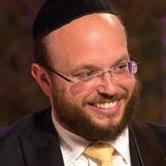
It’s really helpful at "rst to "nd a place with a tzibbur that loves to daven. !at kind of crowd is mainly looking for a person who has an approach of trepidation, but they don’t need the perfect chazzan !ey will never make someone feel uncomfortable if he’s not perfect, because they know
davening is about being together. !at’s a perfect place to start.
It’s probably wise to begin with Kabbalas Shabbos, since the words and applicable tunes are familiar to most people. When starting out, you should also prepare in advance which tunes you want to use. Ideally this can be done with help from others, though if you don’t have someone else to help you brainstorm, at the very least you should hum the tunes to yourself "rst to make sure that the words "t and the melodies match the message. It’s really critical you understand the words you’re saying and that you learn hilchos te!llah. If you don’t prepare, you’re not respecting the position properly.
Later on, once you’re more seasoned you’ll be able more o en to “feel the moment” and decide tunes on the spot. But even then one should always have a go-to song in the back of his mind in case of an unexpected freeze. I myself have an “Uh-oh-I’m-stuck” tune.
Learning how to keep a balanced pace comes with experience. For the "rst few times one davens from the amud, try having a friend nearby to help gauge the crowd and to tell you in a nice way if you’re going too quickly or slowly. Being nervous is totally normal no matter how much experience one has. Last year, I was in Manchester, UK, for the week of the Shabbos Project. !ere were 1,500 people in shul Friday night. But it wasn’t just 1,500 people. It was 1,500 people I had never seen before. It was intense. I was standing up there saying to myself, “Ki Ata Imadi, Ki Ata… ”
When I get nervous, I try to remind myself what I’m doing, and that it’s not about me. It’s helpful to keep in mind what a zechus (privilege) it is to use the talents Hashem has given you to help open people’s hearts to Him. !at’s not a simple thing. Reminding yourself what you’re doing up there can actually make you feel more con"dent.
It’s important to keep in mind that davening from the amud is not a performance. But if a person learns Torah and makes it a part of his life, no matter how much or little, then when he goes up to the amud, he won’t feel like a showman.
Eitan Katz leads inspiring concerts and davening throughout the Jewish world. He has recorded nine albums, the latest of which is entitled Pure Simcha. Eitan and his wife, Malka, live with their five children in Far Rockaway, New York.
How to Strengthen One’s Emunah
By Michel Twerski As told to Binyamin Ehrenkranz

Strengthening emunah is o en challenging due to the chasm between our minds and our hearts. While we recognize intellectually that there is a Creator to Whom we are indebted for our lives and for everything that happens to us, this does not always translate into an ongoing awareness that impacts how we live and feel. How can we begin to make faith real in our lives? !rough increased consciousness. We need to focus on the things that we actually already know. God is our constant companion. He’s a member of our family, He’s a member of our o ce space, He’s a member of our social circle. He’s a companion in our lives wherever we go and in whatever we do.
But how can we feel this emotionally?
Berachos
Making a berachah should be taken seriously. It takes only a few seconds to stop and say, “I want to acknowledge that what I am eating is a gi from Hakadosh Baruch Hu.” When a person recites berachos in the morning, thanking God for the fact that he can walk and see and stand up—it takes only a few seconds to realize that these are all Divine gi s, and that nobody owes it to him. !ese are blessings that Hakadosh Baruch Hu gives us in order that we begin the day with a sense of gratitude.



God is our constant companion. He’s a member of our family, He’s a member of our offce space, He’s a member of our social circle. He’s a companion in our lives wherever we go and in whatever we do.
And this should continue throughout the day, as well; when we say Asher Yatzar, for example, we thank Hashem for the fact that our organs work so perfectly. We can engage in all of these acts of gratitude mindlessly or, if we choose to, mindfully.
Developing Awareness
!e Gemara says that when a person reaches into his pocket to take out a certain coin and he takes out the wrong one, it was orchestrated from Above. A relevant parable mentioned in some sefarim concerns a king’s only son who had committed a crime for which he deserved capital punishment. In this kingdom, capital punishment was implemented by making the condemned individual lie prostrate on the ground; a huge rock would then fall upon him, crushing him. !e king was in a quandary. If he did not carry out the punishment, he would appear to be a hypocrite, and it would signify that the king’s laws were not enforced and hence, meaningless. But if he did carry out the punishment, he would lose his son.
One of his advisors suggested: “Take the rock and crush it into small pellets, and then whenever the prince walks by, throw one of the pellets at him. Over many years you will have thrown the entire rock at him, except that instead of killing
him, the rock will have caused him minor injuries and discomforts.”
In a certain sense, we generally dismiss little frustrations—the car wouldn’t start, or we stubbed our toe— and react by saying something like, “Oh, darn!” (or something worse).” We o en do not view these occurrences as being directed by a loving Parent Who has a cheshbon [reason] for everything that happens to us. We need to remember that even these minor incidents are meaningful in terms of our relationship with the Ribbono shel Olam. !e only way one can manage dealing with larger challenges is by dealing with the smaller ones, and by developing a God-consciousness on a moment-by-moment basis.
One begins forming this type of awareness by saying to himself: “As much as I can, today I am going to try to be mindful of both the blessings in my life and the small distresses, and I’m going to express my gratitude for everything that takes place in a way that will make the Ribbono shel Olam a real presence in my life.”
On Re ecting
On the other hand, sometimes what can’t be achieved with forethought can be achieved via re ection. Even though you may go through your daily routine unthinkingly, if you can create tiny spaces in which to spend a few minutes mentally reviewing what has transpired over the past several hours and whether or not you handled these events in a conscious manner, you can improve in your mindfulness. You can say to yourself, “Okay, this and this happened
and I reacted vindictively or angrily. !at shows that I failed to recognize that the incident was orchestrated by Hakadosh Baruch Hu. If I truly believed that, I wouldn’t have reacted so angrily or so arrogantly. Here’s what I need to do next time to react in a way that shows I believe Hashem is behind it all.”
!is exercise is very challenging and it does not happen on its own. But if one applies himself, as time passes he can become quite good at it.
Taking God Seriously
In certain circles, it can be common for individuals to come to shul dressed very casually. !is practice is wrong because it indicates that we don’t take our audiences with Hashem seriously. If we truly internalized that we are going to meet the Sovereign of the Universe, and we acknowledged that He holds our heartbeat in His hands, would we arrive dressed informally? And when we davened, would our minds be on cruise control as they o en are?
!e bridge we have to cross in emunah and bitachon is beginning to take God seriously. Our faith has to be manifest in everything we do— in our self-restraint; in our refusal to get angry, in the way we talk to people and about people, in the way we make berachos, in the way we come to shul, and at what time we come to shul. And it has to be evident in how we deal with tiny successes. We should not accept them mindlessly— we should be grateful for them and recite all of our berachos, in a way that shows we are engaged with Hakadosh Baruch Hu with feeling: “ ank You Hakadosh Baruch Hu for this fruit!”
Conversely, our faith should be evident in the tiny discomforts we experience too. If we work on our awareness that small annoyances come from Hashem and gradually build up to a full recognition that all derives from a Divine Author, when we experience great successes we will receive them humbly and gratefully; and when, chas v’shalom, we have signi"cant challenges, setbacks or pain, we will also be able to receive those with the knowledge that they come from the same Author. Over time one who cultivates this
Rabbi Michel Twerski is the Hornosteipler Rebbe of Milwaukee and senior rabbi of Congregation Beth Jehudah.
God-consciousness will be able to deal with life more e ectively. He will meet successes with humility and gratitude, and he will face challenges and pain with a certain sense of equanimity, knowing that they are not without meaning.
In Chassidus there is the concept of da’as, which the Zohar Hakadosh calls the key to the other middos, which are intellectual or emotional. Da’as stimulates and unites them, enabling our emotions to re ect how we think. It is really a form of focus and concentration.
Emunah and bitachon are developed in small increments and grow in “real-time,” to the point where we gradually do take ourselves seriously and we take Hakadosh Baruch Hu seriously. Growing little by little is the key in developing da’as of achieving for ourselves that the intellectual becomes real. And that is when we can begin to experience feeling love, awe, reverence and gratitude.
How to Host Shabbos Guests
By Shani Klatzko
As told to Leah Lightman

Having an open heart and being organized are primary quali cations for having guests on a constant basis. I’m a stay-at-home mom who hosts between y and eighty Shabbos guests on an almost weekly basis; my husband is in kiruv and we raise funds privately for this. Hosting guests on this level must be a labor of love.
Why an open heart? Your guests might span the spectrum of Jewry, and conversations around the dining room will run the gamut. Some will be starting out in Yiddishkeit, while
others might be frum from birth and there will be many shades of gray. It has to be okay with you. Just know that each guest around your table is a Jew who wants to experience the beauty of Shabbos—and you are helping him or her do that. My husband, children and I believe that each and every Shabbos can be a life-changing experience and we treat it as such.
Organization is key. It’s helpful to have an extra supply of the ingredients for cooking and baking on hand, as well as stashes of paper goods and other necessities for entertaining. Because we entertain on a macro level, we have two industrial-size refrigerators in our kitchen, an industrial-size freezer in the basement and an industrial-size food processor.
Having a schedule is crucial. Try spreading your preparation for Shabbos throughout the week. Assuming your schedule allows for it, on Sunday and Monday you can bake challah, kugels and desserts. Tuesday, Wednesday

and !ursday can be reserved for cooking. Friday should be set aside for last-minute errands. If at all possible, try to keep Fridays calm and not too overwhelming.
Stay simple. Keep the menu repetitive—week a er week we serve the same foods: challah, "sh, dips, chicken and meat, kugels, dessert. Usually, I make challah with two "ve-pound bags of our and we supplement with store-bought challah.
Opt for speed over perfection. It’s irrelevant to me whether or not my matzah balls look alike or are the same size. You need to enjoy your guests and not worry about every last detail.
If your children are still at home, it’s a good idea to make hachnasas orchim a family e$ort—not only will it lighten your workload, it will teach your kids lifelong lessons. My children are involved in the food preparation, setting tables and cleaning up. My sixteen-year-old daughter bakes. Each Shabbos, my husband thanks each family member for his or her help. If a particular child isn’t so helpful one week, turn a blind eye. Not everyone can be “on” all the time.
Try to get to know every guest at your table personally. A er the "sh course, have each person introduce him or herself. ! is creates a warm and welcoming atmosphere. More important than the menu is the attention you give to each person who enters through your door.
Hosting guests o en means providing sleeping accommodations. We " nd out in advance who is coming and what their particular needs are. We have an abundance of pillows and blankets and plenty of sleeping options. For guests who need more private or quiet accommodations (which a busy home like ours can’t necessarily provide), we reach out to families in our neighborhood.
It’s absolutely essential to set aside “family only” time as well. Every now and then, we have a “Klatzko only” Shabbos so we can be alone with our children and grandchildren.
To engage in hachnasas orchim on a regular basis requires being organized and e cient and having
lots of energy. But the connections you develop with people and the thrill you experience by helping them grow in Yiddishkeit—while they become like family members to you—make it all worthwhile.
Shani Klatzko lives in Monsey, New York with her husband, Rabbi Benzion Klatzko, and children. Her husband is the CEO and founder of Shabbat.com, a social network service aimed at the worldwide Jewish community. Shabbat.com, which has 100,000 members, sets up users with hosts for Shabbos.
Leah Lightman is a writer living in Lawrence, New York with her husband and family.
How to Do Bikkur Cholim
By Jason Weiner As told to Rachel Schwartzberg
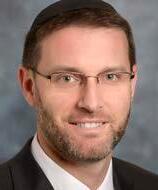
Our guiding principle for bikkur cholim—as chaplains, rabbis or people in the community— is this: when in doubt, show up. !ere’s a debate regarding the source for the mitzvah of bikkur cholim. One opinion is that the source is Shemot 18:20, when Yitro says to Moshe, “v’hodata lahem et haderech yelchu vah [and you should tell them the way they should go].” !e Gemara says that every word in this pasuk teaches us a di $erent mitzvah. !e word “yelchu” [they should go] refers to the mitzvah of bikkur cholim. Why is “yelchu” related to this mitzvah speci "cally? !e Maharsha explains that you ful " ll the mitzvah of bikkur cholim simply by going.
I spend a lot of time visiting with people. !ey o en tell me they are disappointed that certain relatives or friends didn’t visit. I rarely hear anyone
say they’re disappointed that someone visited. Err on the side of being there. You have to use seichel and be sensitive, of course, not to be a burden. For example, the halachah says you should not visit the sick " rst thing in the morning because patients are o en busy with doctors or at the end of the day, because they can be tired. Call ahead if you are not sure if it’s an appropriate time.
As a general policy, a visit need not be more than twenty minutes. !e sick person is hosting you, and it can be very taxing on him or her. Even if you’re only visiting for "ve minutes, sit down if possible—it’s more respectful that way.
Chaplains have a rule, which really applies to everyone: we want the person we’re visiting to lead the conversation. Walking in and saying “How are you?” is not a great way to start a conversation. Instead, I always suggest starting with “I just came to wish you well.” !en, be quiet and let the person lead. Be a good listener. !e three most important words you can use are “Tell me more.” ! is focuses the conversation on what the sick person wants to talk about, helping him feel that you are interested and care. Allow for awkward pauses and silence to give him an opening.
If the individual isn’t talkative, maybe you can update him or her on what’s going on in the community. Not lashon hara , of course, but help the individual feel connected. People in the hospital become isolated. You can enable them to transcend the four walls of their hospital room.
!e worst thing you can do is try to impose your values, giving reasons “why” the person is sick, or trying to “" x” things. I have also seen visitors focus entirely on what they brought. People tend to bring little gi s to patients, because it makes them feel like they did something nice. But there are so many dietary restrictions when a person is ill, it can be complicated. And that’s not the point of the visit. I believe the number-one tool we have is ourselves. Our presence. Have the con "dence to know that it’s your presence that matters most to the sick individual.

Don’t feel the need to bring anything. !ere’s a halachah that ful " lling the mitzvah of bikkur cholim requires saying a te!llah for the sick individual to recover. It can be simple, it doesn’t have to be a whole mi sheberach Another part of the mitzvah of bikkur cholim is caring for the sick person’s family; asking what you can do to help will reassure the individual that his family is taken care of.
When it comes to bikkur cholim, everything is a case-by-case situation and every patient is unique. But don’t underestimate the huge impact you can have just by being there with someone.
Rabbi Jason Weiner is the senior rabbi and director of the Spiritual Care Department at CedarsSinai Medical Center in Los Angeles, California.
Rachel Schwartzberg works as a writer and editor and lives with her family in Memphis, Tennessee.
How to Prepare for Aliyah
By Deena Shulman
As told to Rachel Schwartzberg

When we made aliyah three years ago, it was mostly for idealistic reasons. We were surprised at how practical the decision turned out to be. Besides all the amazing things about living here, the move has been good for us socially and " nancially. !e bene"ts provided to our family by the Israeli government for making aliyah and living here as citizens have outweighed the generally higher costs of living [in Israel]. !e amount of money we have saved on healthcare and tuition alone has been very signi "cant. People should know that aliyah can be a good move for
both idealistic and practical reasons. If you come with a family, you need to prepare yourself and your children. Any prior exposure to Hebrew is a huge advantage. My daughter was attending a daycare in New York where one of the teachers spoke Hebrew, so I asked her to speak to my daughter as o en as possible in Hebrew. !e language barrier presents a huge challenge. It’s important to prioritize anything you can do to enhance your family’s ability to communicate when you arrive.
Whether you’re set on making aliyah or not, if the idea is in your head, talk about it in your home. Your children should know that living in Israel is a goal well before you tell them you’re moving. In the event that you are unable to make aliyah, if your children know it’s your dream, perhaps they will make it here before you do! Building a vision and focusing on a goal are helpful in getting through the tough times in any major undertaking.
If aliyah is something you’re considering, it is never too early to start collecting information. My parents began attending Nefesh B’Nefesh events ten years before they moved to Israel in 2016 (when they were semi-retired).
Making a pilot trip is a must. !e one thing a pilot trip needs to accomplish is to make you feel at home. Before you go, identify two or three places to live that sound promising. Spend time in each place. Ideally you should spend a Shabbat there or a night, but at a minimum, you should walk around and see the people. !e main thing is to " nd a neighborhood where you feel at home. Everything else can be done remotely.
When you are ready to make aliyah, it’s likely going to take at least "ve to eight months for the paperwork to be processed, and that’s if you’re on top of things. You could pack up and go in less time, but you may not be an Israeli citizen when you get there. It took me a year, between the paperwork and the planning, which included all the logistics of moving a family, such as " nding an apartment, deciding what possessions to take with us and what to buy in Israel. !ere are de" nitely things that you
will have to get used to. For example, produce is seasonal in Israel. Fruits and vegetables tend to taste better, but you can’t necessarily " nd exactly what you want when you want it. !e weekly schedule is also di $erent in Israel— everything is on “Jewish time.” Sunday is a regular work day and Tuesday is the “hump day,” so it’s o en a half-day for businesses and schools. Friday is usually a day o$. And everyone in Israel has a di $erent idea of “business hours.” You have to adjust to that. !ey say that in Israel, everyone is family. I’ve found that to be true. People genuinely want to help new olim. Nefesh B’Nefesh has community coordinators whose job is to get olim settled comfortably. We recently called our coordinator for help with converting my husband’s driver’s license. Even a er living here for three years, it’s a comfort to know someone is there to support us. Remember, this is a country where bus drivers congratulate you on moving here. Native Israelis are o en the most supportive. !ey see that we believe in this country and it inspires them. !ey are grateful that we came and they want us to be happy here.
Deena Shulman is a massage therapist and professional organizer who made aliyah in 2015 from Queens, New York. She lives with her husband and two children in Ramat Beit Shemesh.
How to
Pay a Shivah Call
By Elchonon Zohn
As told to Binyamin Ehrenkranz
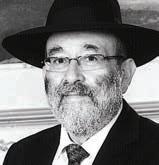
One of the most important pieces of advice for someone paying a shivah call is to prepare. Spend a minute or two re ecting on what you can say that
Photo: Mishpacha Magazine
Grief may take a long time. While Chazal established certain time periods for aveilus, there’s no set recovery time for everyone.
relates to the mourner’s particular loss. ! is can make a big di $erence in your ability to comfort the avel. ! ink about the type of home you are visiting and any relevant memories of the deceased, if you knew him or her.
Once you walk into the shivah house, if there are already many people there and it looks like you may not get that much time with those sitting shivah, keep in mind that your presence itself o en gives the mourner(s) much comfort. I sat shivah a few times. !ere were times when I was not able to engage every visitor. If someone came who was especially important to me, then I certainly tried to take the lead in speaking to him. But when that wasn’t possible, just knowing that those people were there and seeing their concern was very comforting.
In most cases, a visit of " een to twenty minutes is really quite su cient. If you can, wait a few minutes until others leave, and then you can then move up toward the mourner. Even then, however, it’s best to set aside the notion that one can accomplish what others can’t. I’ve been to shivah homes where people pretended to be very close, when in actuality I don’t think they were. It was obvious to people watching and it made the atmosphere very uncomfortable for everyone, including the aveilim. You shouldn’t feel that you didn’t accomplish anything by not having engaged the avel in heavy conversation.
If you are not particularly close with any of the mourners, it’s best to do what the halachah states: let the avel lead; don’t start speaking until he opens the conversation. He may need di $erent things at di $erent moments. See what he says to you.
If you " nd the conversation dwelling on the mundane, you might say something like, “Is there anything about [the relative] that you want to share?” Or, “I wasn’t at the levayah, but I heard that the hespedim were very








































































































Rabbi Elchonon Zohn is director of the Chevra Kadisha of the Vaad Harabonim of Queens (New York), and founder and president of the National Association of Chevra Kadisha (NASCK).

12 Do’s & Don’ts of Nichum Aveilim
By Rabbi Elchonon Zohn
• Turn o your cell phone.
• Prepare for the visit by thinking about memories of the deceased.
• Be mindful of di erent aveilim at the same shivah with di erent needs.
• Let them cry and express pain openly; there’s no need to distract them.
• Be comfortable with quiet—sometimes it’s what is needed most.
• Listen with empathy, even to feelings of guilt, if expressed.
DON’T
• Ask questions to satisfy your curiosity.
• Tell your own personal stories of grief.
• Have side conversations with others who are visiting.
• Minimize or discount pain—it’s the wrong time for “Be strong” or “I know how you’re feeling” or “You shouldn’t feel that way.” (Better: “I feel your pain.”)
• Initiate discussion about cause of death or medical history of the deceased.
• Say anything if you’re unsure if it’s appropriate or you don’t know what to say. When in doubt, do without.
meaningful. Could you tell me something that was said that you feel I can learn from?” ! is is also something that’s valuable to think about before you walk in: which areas of the departed person’s life you might want to ask the mourner to highlight if you knew the relative. !ough you certainly do not want to impose in a way that’s uncomfortable, if it’s done quietly and with sensitivity one will usually " nd that people really do want to talk about the person they have lost.
Before leaving, it is customary to say the phrase “HaMakom yenachem es’chem b’soch she’ar aveilei Tzion ve’Yerushalayim [May the Omnipresent comfort you among the mourners of Zion and Jerusalem],” which will also ful " ll the mitzvah of o$ering solace. While there are varying opinions, it is de" nitely acceptable to say this to the mourner even if he or she is not seated. We traditionally do not shake hands with one sitting shivah because of the prohibition of extending a full greeting to a mourner.
It’s also important to keep in mind that the mitzvah of nichum aveilim does not end a er the shivah is over. !ere’s a tendency to avoid someone who has just su $ered a loss, which is the opposite of what he or she o en needs. Relate to a mourner as normally as possible, in the same manner as you had done prior to the aveilus. And if it’s someone with whom you are genuinely close, it’s really critical to stay in touch to see if there are ways in which you can be helpful both during and a er the shivah. It may be better to just do what you think needs to be done to help them rather than asking " rst.
It’s o en a er shivah when people collapse emotionally. If you have a close relationship, keep in touch—call the individual a few weeks later. You might say simply, “I know the sheloshim is over. How are you managing?” Grief may take a long time. While Chazal established certain time periods for aveilus, there’s no set recovery time for everyone. !e pain can frequently endure much longer than a week or a month. People just need to know that there are others who care about them.
How to make a
Kiddush Hashem at Work
By Nechama Carmel; based on an interview with Gary Torgow from Detroit, Michigan
Making a kiddush Hashem means presenting the Ribbono shel Olam, His Torah and His people in the best light possible. As chairman of a public company, I serve as one of the ambassadors of the Jewish people. But I’m not unique—anybody who interacts with the world beyond the Jewish community is an ambassador. It’s a practicality of life. In our society, it has become the obligation of every Jew in the workforce to view him or herself as an ambassador.
You need to remember that your colleagues are always watching you because of what you represent. Keep in mind that whatever circumstance you "nd yourself in, whatever activity you’re involved in, whatever words you use, re ect not just on you, but on the entire Jewish people. You represent something much bigger than yourself.
Most everybody with whom I interact in the business world knows I’m an Orthodox Jew. I sit at the business table negotiating a deal, and the "rst thing they see is “Orthodox Jew;” then and only then do they see the business person at the table.
We have an obligation toward our fellow Jews as well. !ere is rarely a a member of the Jewish faith with whom I interact that I don’t encourage to join the local Partners in Torah program. When a secular Jewish friend of mine took on a new position heading a national company in the Michigan region, he called to ask for a meeting. I met with him at his o ce and as the meeting ended, he said, “You know, Gary, it was so nice of you to give me two hours of your time. Is there anything I can do for you?”
“I’m glad you asked. I was just thinking about it,” I replied.
“Great, what could I do for you?"
I said, “I’d like you to spend an hour with my rabbi.”
“Doing what?” he asked. “Learning Torah.”


He said, “Gary I would do anything in the world for you, but I am not going to learn Torah. I have no real background or interest in Torah. . .” He was pretty adamant, but in the end, he relented. I took him to meet Rabbi Avi Cohen, a member of the Partners in Torah team in Detroit. He spent an hour with Rabbi Cohen, which ended up turning into a warm, loving chavrusa that has lasted nearly een years. My friend told me years later that it was the second most important meeting of his life, a er meeting his wife.


To make a kiddush Hashem, it’s critical to realize that everything you’re doing, all of the e ort that you put into your business life, is the necessary hishtadlut; but the Almighty controls everything. If you keep the right perspective regarding the source of your success, you act di erently. You will not have to be the toughest guy in the room and you do not have to be the guy who makes the most money. You can leave a few dollars on the table. My rebbi, Rabbi Avrohom Abba Freedman, zt”l, used to say that being a workaholic is not aligned with a Jewish hashkafah [worldview]. One doesn’t have to be a workaholic in order to be successful, because success is not in your hands in any case.



I heard from Rabbi Leib Kelemen that it’s inappropriate to be a multitasker. When you are speaking with someone, Hashem wants you to be focused on that individual; that’s part of loving your fellow Jew. To do otherwise, he said, is assur [forbidden]. You shouldn’t be checking your e-mail while speaking to someone on the phone just because you can get away with it. is is all part of making a kiddush Hashem; if you’re talking to someone in a business setting and you’re looking down at your text messages, that’s disrespectful. My own role model when it comes to making a kiddush Hashem at work was my maternal grandfather, Manuel Merzon, a”h, who emigrated from Russia in 1918 as a sixteen-year-old. On the eve of World War I, he was sent by his parents to his brother in Detroit. He was the rst lawyer to wear a yarmulke in court in Detroit in the ‘40s. (I wrote a book called Raising the Bar, which is a collection of some of his divrei Torah.)
My grandfather was a very devoted Jew who wasn’t motivated by wealth or fame; the Ribbono shel Olam was everything in his life. When you carry yourself that way, you become the greatest ambassador. His righteous behavior and the way he associated with the non-Jewish community had a dramatic in uence on those around him and on me as well.



































At one point, my real estate company was one of many teams bidding on a high-pro le project for a signi cant piece of real estate in Detroit owned by the city. en Detroit Mayor Dennis Archer and his team were interviewing each of the bidders. e mayor’s o ce called the team leaders of all the bidders to inform us that the mayor would be personally interviewing each team on Saturday at the mayor’s residence. On Sunday the bidders would meet with his team, and on Monday the mayor would make a big public announcement divulging which team won the project.


































































When the mayor’s sta er told me the interview was on Saturday, I asked, “Is it possible to do it on Sunday?”
“No, the mayor has made it very clear that he is only going to do interviews on Saturday,” replied the sta er. “He needs a day to decide before making the announcement at 9:00 am Monday morning. ere’s no other time.”
“I unfortunately can’t be there,” I said.
“You know if you don’t come, you’re disquali ed,” he warned.
“I’m a Sabbath observer and therefore it’s impossible for me to be there,” I replied.
So he said, “Okay, let me call you back.”
About an hour later, a higher-level sta er, whom I happened to know, called me. “You know, Gary, we would arrange to put you up in a local hotel, and we would carry your material. You don’t have to violate any Sabbath rules; we’ll take care of you completely,” he said.
“No, it’s not just the particular rules about Sabbath,” I said. “I don’t do any
ISHA B’AV
business on Saturday. I’m at home with my family and for me it would not be appropriate to make a business presentation on the Sabbath.”
“You know,” he said. “We’re trying everything we can to accommodate you. You’re a great guy, and you have a wonderful presentation, but I regret to tell you that you’re going to be disquali ed if you don’t come on Saturday.”
“Okay, I accept that and no hard feelings,” I replied. “I understand completely, and send my regrets to the mayor; we’ll work on another project together.”
About an hour later, the mayor himself calls me: “Gary, this is Dennis.”
“Hello, Mr. Mayor, how are you?”
“I want to apologize,” he said. “I would never ask anybody to violate his religious beliefs to participate in a business deal, and especially not you. You’re Orthodox and everybody knows it; we should’ve known in advance. I am canceling all the
interviews for Saturday. I’m going to make the announcement on Tuesday, and we’ll do the interviews on Sunday and Monday and you’ll bring your team then.”
So the mayor changed the day. Oh, and by the way, we won the project.
Of course, not everything works out perfectly, but that too is part of the kiddush Hashem. e Almighty ultimately decides what is good for us in every circumstance and we always need to be con dent in that comforting realization.
Gary Torgow is the chairman of Chemical Financial Corporation, the holding company for Chemical Bank, which is the largest bank headquartered in Michigan. He is a senior vice president of the Orthodox Union and chair of OU Kosher.
Nechama Carmel is editorin-chief of Jewish Action.


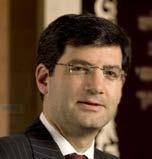
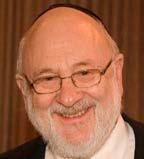
bat Yehoshua,



SPECIAL SECTION
GIFTS MY MOTHER GAVE ME : A TRIBUTE TO THE JEWISH MOTHER
If you Google “world’s most in!uential people,” you won’t nd “mother” on the list. And yet, she should be. Each and every day, each and every mother goes about changing the world—her corner of the world—by molding her children and in!uencing who they will eventually become. In the essays that follow, we pay tribute to the powerful and enduring in!uence of our mothers.
Agreeing About Nothing
Rosa Layman*
We agreed about almost nothing. ! is included everything from religion and politics to personal style and hobbies. Encounters with her would be highly charged, if not explosive.
Yet in her lifetime, my mother gi ed me, her only daughter, with her prized piece of jewelry—a brooch measuring ve inches in diameter, comprised of twenty-two carat gold, over three carats of diamonds and many pearls. Her taste consistently favored estate pieces. ! is one reminded me of an underwater sea creature with a humped, rough back with protruding horns.
Mom explained that an Egyptian Jewish jeweler whom she trusted taught her that investing in jewelry is a must for any Jew. Following the establishment of the State of Israel, the jeweler was forced to $ee Egypt for Israel with only a small overnight bag lled with selected pieces of jewelry. Subsequently, he moved to the United States in the 1960s, setting up a jewelry business on the East Coast. He married and had two children who graduated from Ivy League colleges and pursued successful
careers. It was all possible because, as my mother related to my siblings and me, he carefully planned and acquired pieces of jewelry that would increase in value. She claimed that he had imparted to her what to look for when purchasing estate jewelry.
My mother had two stipulations when she gave me the brooch. First, I would give or “lend” her the piece to wear if she requested it. Second, I was not allowed to alter the piece in any way whatsoever during her lifetime. I honored both even though I felt she was trying to control me yet again. Further, I didn’t share my mother’s taste in jewelry in general and this brooch in particular. Nonetheless, I appreciated its history in the family and my second-generation American mother’s motivation for purchasing it. As a student of Jewish history, I am aware of life in the Diaspora. I understand that while we have contributed on a colossal scale to the societies in which we lived, we have always been a people on the move. Nothing, we’ve learned, is permanent.
My mother’s 120 years in this world came to an end about ve years ago. Since then, we have celebrated several family semachot, thank God, and the brooch has remained in its emerald green case, still unworn. But I’m no longer militant about either selling or refashioning it. In
fact, I’ve decided that this brooch will remain intact. My taste hasn’t changed but I’ve come to appreciate that my late mother saw beauty in it. To me, the piece’s beauty is sentimental and spiritual. ! rough this piece, I’ve learned that di ering forms of beauty—and opinions— can coexist and even thrive.
!at’s my mother’s gi to me. *Rosa Layman is a pen name.

e Piano— e Gi of Strong Women
Hylton I. Lightman
My maternal grandmother Nadja, whom we called “Mum,” lived with my family. Every day when I returned home from school, she greeted me with a snack and a schmooze. As delicious as the food was, I loved Mum’s company and her stories and insights into life. !ey still warm my heart and shape my view of the world.
I’m not sure what level of education Mum achieved during her school years growing up in St. Petersburg, Russia. She immigrated to South Africa, mastered the English language and was well-versed in current events. I’ve spent many happy hours locating Russian-language novels that I sent to Johannesburg for her enjoyment.
Mum understood life. You respect your parents and elders. Family is paramount. Schooling is essential and never to be taken for granted. Besides respecting people, you respect “things”
and the inanimate, including the upright piano that stood in our living room long before I entered this world. !e piano was a gi from Mum’s brother Yitzchak who had settled in Berlin and had the piano shipped from Germany to South Africa in the 1930s. Not a single family member was musical, nor did any of us take piano lessons, but the piano was a constant presence in my life, collecting dust and displaying family photographs.
Twice weekly, Mum would take me by the hand when I returned home from school and we’d stroll across the street to the store to purchase a cup of ice cream that cost a “ticky” (about two-and-a-half pennies). Memories of my time alone with this aristocratic-looking woman who was dedicated to her family is something I still savor decades later.
One day, I took the “ticky” Mum stored near the front door for our ice cream forages and purchased an ice cream for myself. Big mistake. Meeting me at the front door, she took the beloved treat from my hand and threw it into the garbage pail. She turned to me and said sternly, “It’s a privilege, not a right.” It was a lesson learned for life.
She loved being a Jew and was a proud one. She kashered meat with salt and a bucket and made sure that Pesach happened in our home. Preparing for and bringing in the holidays was always a joy, never a burden.
! roughout my childhood and up until my mother passed away in June 2014, twenty-seven years a er Mum’s death, Uncle Yitzchak’s piano was a centerpiece in the living room of my childhood home. Just looking at it brought back wonderful memories of my beloved Mum, who passed away in 1987.
When my mother le this world at nearly ninety-nine years old, I traveled to Johannesburg for the funeral !ere was a lifetime of memories and “stu ” in that three-bedroom apartment. I cared only about the family photos, letters and cards, which I carried back to America. Yet the piano nagged at me. It was a physical representation
of my childhood and of a strong, principled woman who instilled in me a sense of right and wrong, of justice, of how the world is supposed to be. Immediately a er shivah, and unbeknownst to me, my wife—yet another strong woman in my life— arranged for the piano to be crated and shipped to New York. !e piano occupies a place of honor in our living room. While no Lightman has embarked on lessons yet, the piano is adorned with family photos spanning the generations. Most importantly, it reminds me on a daily basis of Mum, who worked hard to make sure that the mesorah was not only maintained in our family but $ourishes to this very day.
What a gi .


Two Jars of Sorrel Grass Soup
Rabbi Shalom Carmy
My aunt Miriam worked hard and lived alone, almost an hour’s distance from us. One boiling humid day in 1958 my mother got on the slow bus to Borough Park, let herself into my aunt’s apartment and surreptitiously deposited two containers of homemade schav (a sorrel grass soup popular in
Dr. Hylton Lightman lives in Lawrence, New York, with his family.
Photo: Amir Levi
Photo: David Kahbinsky/ YU Inset: Courtesy of Michael Feldstein
Meeting me at the front door, she took the beloved treat from my hand and threw it into the garbage pail. She turned to me, and said sternly, “It’s a privilege, not a right.” It was a lesson learned for life.
Eastern Europe) in the refrigerator. My aunt lived another thirty years, most of them a er the stroke that ended her independent life. !e memory of the schav her younger sister had surprised her with never failed to bring laughter to her lips. I once told this story to explain why Jonah was so delighted with the gourd God provided him for shade even though he had already built himself a booth.
It is the small unexpected gestures that convey the full power of chesed My mother was my “bad parent,” so to speak. My father encouraged me to do the things I wanted to do anyway: study, playing ball, truthfulness and stubbornness for principle. It was my mother who tried to teach me ordinary skills and also made the case for disagreeable virtues like having patience for shallow people. In youth
it was she who constantly warned me that being well read didn’t make one anything special. Later, of course, she stopped. Instead she reminded me that writing well was not as important as some people thought . . . One ne spring day when I would much rather have been outside, my mother discovered that a child my age could already tie his shoelaces. She decided I should too. To me that lesson seemed to go on for hours until she mercifully concluded that I had achieved su &cient progress. !ough I never forgot the frustration of that a ernoon I realized that children tend to be impatient with the slow passage of time and had exaggerated the incident. I didn’t imagine my mother remembered it. Fi y years later, her eyesight and hearing were gone and her ability to walk was severely limited. She was no longer the person who almost single handedly cared for a dying husband and a constellation of aging
UNDERSTAND THE WEEKLY PARSHA






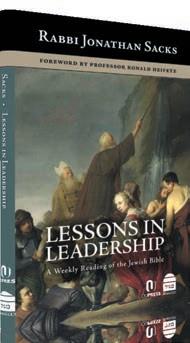


and ailing family, although, as I have written elsewhere, she still had the mental strength and resourcefulness to make an empathetic di erence in other people’s lives.1 As I was tying her shoelaces one morning she said: “Shulem, you don’t remember, but when you were little I wanted you to learn to tie your laces and you didn’t want to cooperate. It was like hours until you made progress.” “And now,” she continued with satisfaction, “Look, you can tie mine.”
During my mother’s shivah, several students told me that they regretted never having met her, but they knew that she had once exerted herself on a hot summer day to delight her sister by preparing and delivering two containers of refreshing cold soup. We never know how our small everyday actions a ect their recipients and how they can reverberate in the souls of generations yet unborn.
A few days before she died my mother asked me if caring for her had ever interfered with my work and obligations. !e correct answer was— hardly ever. !e deeper response was that it is hard to imagine a greater gi than serving as what they call a “primary caregiver.” We tend to be thankful for what our parents do for us. !ere are equal, perhaps greater bene ts when they make it possible for us to do something for them. My study and teaching and writing today are immeasurably richer and deeper because my mother was able to give me those extra years of training.
Note
1. See my “So Soon: A Nahmanidean Meditation on Death,” Tradition 41:1 (spring 2008) and “Notes of a Son and Brother” in Je rey Saks and Joel Wolowelsky, eds., To Mourn a Child: Jewish Responses to Neonatal and Childhood Death (OU Press, 2013).

David Morris
Inset: Courtesy of Judy Kaiser

e Gi of Giving
Judy Kaiser
From the rst gi of life, a mother never stops giving sel $essly of her time, energy and love. And yet, I can isolate one gi my mother gave me— among the very many—that brought home to me the true value of a gi . My mother, Chaya Mirel bas Yechiel HaCohen, a”h, was born in pre-war Berlin to Polish parents. !e Yekkish character traits of orderliness, punctuality and a strong work ethic were rmly woven into her character. While she raised her children with an abundance of love and tenderness, there was a predictable structure, even to the fun parts of our lives. Our childhoods were infused with treasured rituals from which she never deviated. For example, we received gi s twice—and only twice—a year: on our birthdays and on Chanukah. And there was a formal procedure to the way they were delivered—in a speci c spot, at a precise time of day, in a time-honored manner. (On the co ee table; at 6 p(; eyes closed until the big reveal.)
explosive made a high-pitched whistle as it fell. !e cessation of that shrill noise signaled that the bomb would hit its target exactly three seconds later. Knowing that even a bomb shelter could never withstand a direct hit, can you imagine what those three seconds felt like?
From the time she was in her twenties, my mother was a victim of a cruel autoimmune disease that not only severely limited her mobility, but lled her days and nights with unrelenting pain. !e doctors determined that her illness was probably stress-related, likely caused or at least aggravated by those bomb- lled nights just a few years earlier. ! is quali ed my mother to receive Wiedergutmachung— compensation from the German government to the millions of survivors who had su ered so terribly at their hands.
Rabbi Shalom Carmy is a professor of philosophy and Bible at Yeshiva University, author of the “Litvak at Large” column at First Things, and is the editor of the RCA’s flagship publication, Tradition
As a child, my mother was fortunate to have escaped to London along with her family just before the outbreak of WWII. She spent many nights during her teenage years huddled in a cold, damp, crowded bomb shelter, listening to the ominous droning of the German bombers $ying overhead. Once dropped from the plane, each
About ten years later, as a child of about seven or eight, I came home from school one day to nd my mother in an unusually good mood. It had taken a long time, but nally an envelope containing a handsome compensation check had arrived. I have no idea how much it was—but to my mother, it was a windfall. While there was always food on the table, there had never been money for anything beyond the basic necessities, and so this check was manna from heaven. With this surprise bonanza, she could nally a ord to indulge in a purchase or two strictly for her own pleasure: a new dress, a designer fragrance, maybe even a piece of jewelry. Perhaps she did do that; perhaps she didn’t. I don’t recall. But here is what I do remember with great clarity: It wasn’t my birthday or anytime near Chanukah, but when I got home from school that day, my mother handed me her big, thick Sears catalogue—her chief conduit to the world of shopping—and told me that because of her good fortune, I could choose one item, any item I wanted, from that book. What did I choose? !at may be secondary to the message here, but su &ce it to say that I soon received a magnetized dollhouse
Photo:
that I delighted in playing with for many years. But the real value of this gi was that it was given to me by my mother outside of her regularly scheduled gi days for no other reason than that she wished to share her good fortune with others. !e value of a gi can best be measured by the love with which it is given. !e dollhouse was a wonderful plaything, to be sure. But the true gi for me was her joy in giving it.
A Gi for Generations
By Shira Dancinger*
My beloved mother was a tough act to follow. As my husband shared at her funeral, Mother was a soldier. She did what had to be done, no dawdling, no excuses. She was loyal and totally devoted to her family. She took great joy in the simple pleasures of life and the beauty of God’s world—the world of nature, the joy of music, the thrill of quality literature— and taught me to do the same. Until her last day, she moved with grace and carried herself with dignity and royalty, as be tting her name “Malka.”
In the last two years of her life, Mother was quite ill, housebound and on hospice care. Since living on her own was no longer an option, she moved in with my brother and sister-in-law. At the time, they still had relatively young children living at home, so their house was a busy one. Mother had the proper aides to tend to her personal needs and I believe she enjoyed being part of a vibrant household once again. Given the circumstances, this was really an optimal setting for her. But of course, the mindset and worldview of a chronically ill senior meant there were always details that dismayed her and she felt comfortable sharing her criticisms.
She may have been comfortable criticizing, but this did not sit well with me. Eager to maintain the equilibrium of the household and the relationships within, I knew that there was no room here for criticism. I gently presented Mother with another option that I felt would work immensely better in the long run for the entire extended family.
“Mommy, I’ve a great idea for you. Why don’t you write an ethical will for the family? Include anything that you feel is important to convey for the future. Whatever irritates you today you can mention. ! is can be a formal document which you’ll sign. At the right time I’ll make copies for everyone and make sure each and every family member gets a copy.”
Mother loved this idea and took it very seriously. She wrote out her notes on a legal pad and I typed

Senior Attorney Position
Seeking a senior attorney to join Oorah’s legal team. The quali ed individual should have a minimum of 6 years’ experience at a regionally or nationally recognized law rm or in-house corporate legal department and a passion to help Klal Yisroel. Competitive Salary. Relocation to Lakewood area required.
Email resume to hr @oorah.org

CELEBRATE 10 YEARS OF THE KOREN SACKS SIDDUR WITH AN ENHANCED EDITION!
THE LOBEL EDITION
THE KOREN SHALEM SIDDUR
Complete for weekday, Shabbat, Yom Tov and festivals
• Tefllot for weekday, Shabbat, Yom Tov, Ĥol HaMo’ed, Hoshana Rabba, and more
• All Torah readings with modern translations for weekday, Yom Tov, and Ĥol HaMo’ed
• Five Megillot with modern translations
• Additional personal supplications
• Identical pagination to the Koren Sacks Siddur for convenient adoption into shuls


A retired educator, Judy Kaiser is the founder and director of the Myra Vorhand Library of Agudath Israel of Toronto.
them up and made copies for each family member. She signed each one. !en she suggested that I also photocopy her handwritten notes, so each family member would have this ethical will in her own handwriting. !at’s how much it meant to her.
Mother’s personality and character came through loud and clear in her words. She also apologized for the times when perhaps she was overly critical. “. . . I always wanted you to be the best behaved, the friendliest, the most charming children, beloved by everybody, admired and sought a er, looked up to and respected . . . .” ! is ethical will encapsulates Mother’s life mission, for herself and for her children, within two pages. I read it and I sense her with me, guiding us, encouraging us, prodding us along, and hopefully deriving much joy and nachas. Every year on her yahrtzeit I circulate copies of her will once again. Mother’s words are always with us.
Malka bas Yechiel—may your neshamah have an aliyah.
*Shira Dancinger is a pen name.
Yehudis Perlow: An American Original
By Faigie Horowitz
Her friends said she like was Jo in Little Women, the spirited, brainy leader of the girls. !e Eichensteins were the Marches, the warm, close family of faith and fun. !ey, too, had a saintly scholarly father who died young. Rebbetzin Bopche Eichenstein was Marmee, the humble fount of wisdom, giving and fortitude. !e Eichensteins’ storied life was rich, peopled with famous characters and ordinary folks, and marked by adventures and legends that all happened to be true.
Yehudis Perlow, née Eichenstein, who would become the Novominsker Rebbetzin, grew up in the ies when opportunities for American Jews were opening up. Her interests were wide-ranging and deeply intellectual. O ered a full scholarship to the
University of Chicago upon graduation from the Ida Crown Jewish Academy, she turned it down to join her peers at the local city college because yeshivah kids at the time commonly abandoned their Yiddishkeit at the elite school. She knew who she was: the rst American-born child of her Chassidic rabbinic family that arrived in Chicago in 1922. She was the generation that caused her great-grandfather, the Strizover Rav, to cry when his children took their leave for America. “I’m not worried about you and your children,” he explained. “I am worried about your future grandchildren.”
She was a torchbearer and trailblazer without fanfare or drumrolls, with a very healthy sense of humor, sharp honesty and a maverick style, who made the greats and the not-very-greats feel comfortable in her home and presence. Her lifelong e ort to live up to the example of her parents marked her life of service to hundreds of individuals in need of support for their struggles with family dysfunction, trauma, parenting and wholesome growth.
Her parents, Rabbi Avrohom and Rebbetzin Bopche Eichenstein, ran multi-generational shul/home complexes in various Chicago neighborhoods in an American variation of a Chassidic hoif (court). Greenhorns shared their troubles with the rav and were honored with conducting zemiros at the table Friday night even though they went to work Shabbos morning. Students got help with their term papers from the young and brilliant Hungarian-born rebbetzin and le with a package of homemade goodies. !e couple functioned as a team, doing private hatzalah work during the War years; my grandfather brought his wife her typewriter during a postpartum hospital stay so that she could notarize documents. Rabbinic refugees traveling from the West Coast received their rst respectable hats as a gi from Rav Eichenstein. Meshulachim spent weeks in residence and always found a repeat customer for sefarim in the rav. !e Bnei Akiva kids would gather to play ball behind the shul and hang out in the house. Doors were never closed.
My mother struggled to accept payment for her services when she became a social worker in the seventies. Why should I take money if my father helped people for free? she reasoned. But she didn’t struggle with professional boundaries as clinicians do. She went to battle for her clients with yeshivah boards, city authorities and the beis din during the days when disgrace and shame coated serious problems in our communities. She didn’t hesitate to call in favors and use her power and in $uence to open doors. She screened people waiting to see her husband, the rosh yeshivah and rebbe !ey functioned as a team in the communities they led in Chicago, Washington Heights, and Brooklyn. She showed us how to be courageous in her vulnerability and openness about her struggles—raising a severely developmentally disabled child in the sixties, and her anxieties about being a rebbetzin in Boro Park, preparing speeches without a robust Jewish education, managing an open house and living up to her mother’s example. Time and again she gave up her own comfort and position to make a change in venue and role for the greater good of family and tradition.
My mother taught me that pioneering Jewish organizations require leadership and time, and that the people count, not just the cause. Young and old, talmid, teen in crisis, newcomer, lonely single, and man of the establishment equally deserve caring, as well as irreverent wit. She was a woman of great in $uence who wielded wisdom and empathy and knew what needed to prevail when. Upon departing her home or o&ce, people would inevitably thank Rebbetzin Perlow for her time. “It’s my time, but it’s your life,” was her response.
!e biggest gi my mother gave me was showing me that devoting your life to Klal Yisrael is not giving your life away—it is truly living in God’s way.


Faigie Horowitz, MS, is a marketing professional, community activist, writer, and rebbetzin in Lawrence, NY.
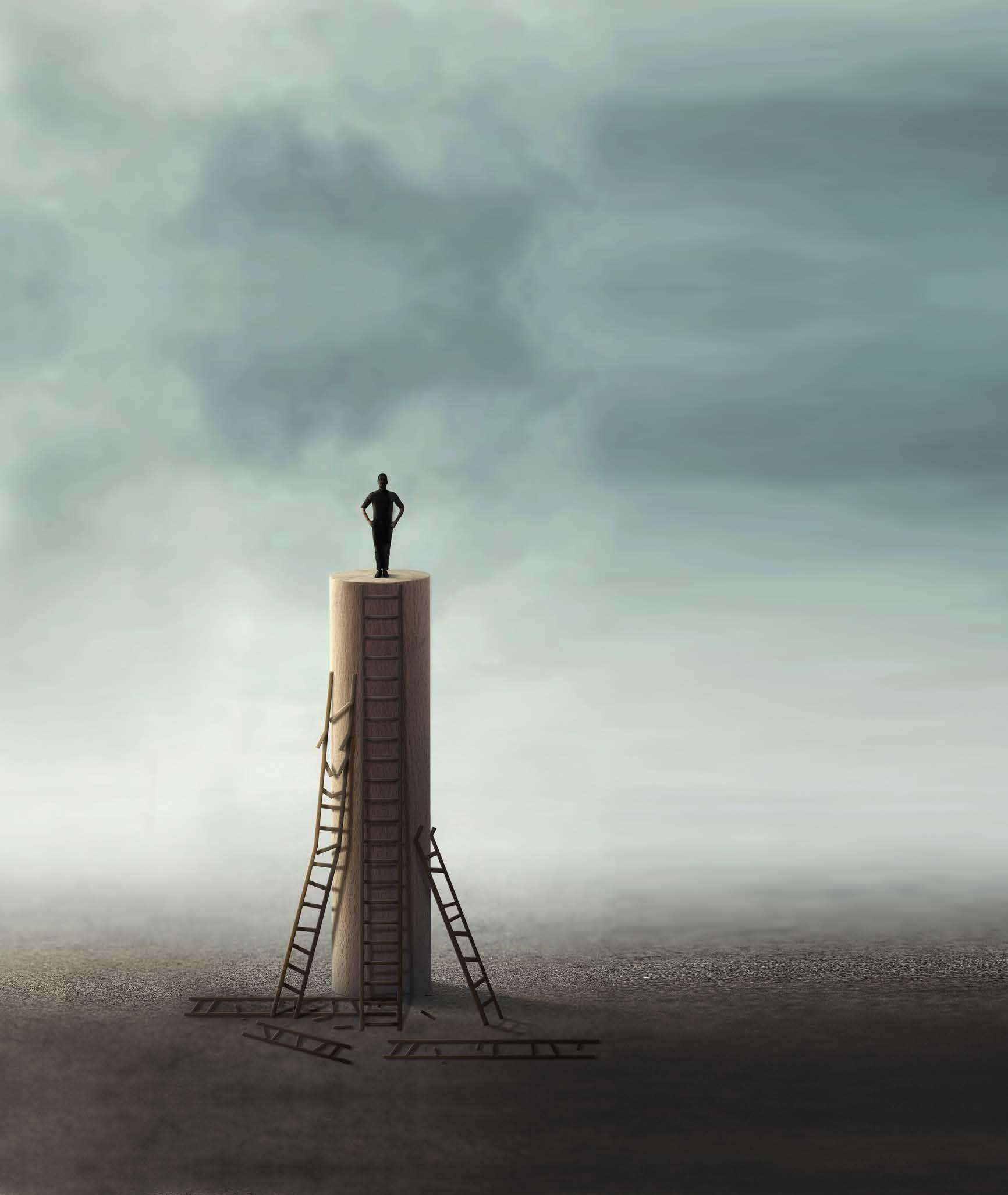


Around the Shabbat Table
Photo: Rachel Berkowitz
How
do we keep our Shabbat tables lively, engaging, and a centerpiece of the week? How do we—whether married, single,
frum-from-birth or ba’al teshuvah—ensure that our Shabbat table is fun, relaxing and spiritually rejuvenating all at the same time? We asked a diverse group of individuals to share their thoughts. You’ll note that some of the same themes come up over and over again, which means one thing: it’s probably a good idea—try it yourself!
Editor’s Note: Certain halachic issues arise when inviting non-observant guests for a Shabbat meal. Please make sure to consult with your own rabbi.

Sarah Boczko
Woodmere, New York
As told to Dovid Bashevkin
It’s hard having conversations with all of your children at a Shabbos table. ey’re all di Terent ages and each one just wants to do his own thing. Early on I found myself trying to have a conversation with my husband while each child was grumbling about what went wrong during the week. So we decided to try something di Terent. At the beginning of our Friday night meal we go around the table and ask each individual to share one thing that made him or her happy over the course of the week. Everyone—including our guests—participates. It starts Shabbos oT with some refreshing positivity. We don’t accept “being here for Shabbos” as an answer—that’s a cop-out. We’re ofen surprised by how sweet and sincere many of the answers are. It consistently makes our Shabbos table a happier place.
Sarah Boczko, a board member of Shalom Task Force, lives in Woodmere, New York, with her husband and their four children.

Reb Judah Mischel
Ramat Beit Shemesh, Israel
As told to Dovid Bashevkin
School is not the center of our Shabbos table; family is. So we don’t really have a lot of parashah sheets, quizzes or posters. Unless a child wants to share, we try to keep school pressures and responsibilities away from the Shabbos table. I don’t ask anyone to share divrei Torah e meal needs to be organic and natural. I’m much more interested in a funny joke or good shtick than a nervously rehearsed devar Torah. Dips are also really important. A good dip selection is a great way to bring people together. And nothing sours a meal like poorly apportioned soup. Plentiful dips and liberal soup distribution seem to be a good recipe for cultivating a hospitable Shabbos table atmosphere.
Reb Judah Mischel is mashpia of National and New York NCSY, and the executive director of Camp HASC, the Hebrew Academy for Special Children.

Rabbi Yisroel Kaminetsky
Woodmere, New York
As told to Dovid Bashevkin
e Shabbos table needs to be something that everyone looks forward to. It needs to be joyous. Singing zemiros is a great way to cultivate a sense of joy at your table. e melodies and the words can upli f and inspire. Full disclosure: I happen to be very musical. But my father wasn’t, and it didn’t stop him from singing with his whole heart. When kids are growing up, they don’t always appreciate zemiros; kids ages four to twelve ofen f nd the singing tedious. But when the kids get older, the routine starts to pay dividends.
e songs become instinctive and the singing allows them to access a sense of joy that otherwise can be hard to teach if you didn’t grow up with it. Conversations interest some, but not everyone. Zemiros can make it easier for everyone to participate. at’s why my wife and I sit on opposite ends of the table—it makes it easier for everyone to feel connected. I share Torah, but I don’t force others to. Kedushah can’t be forced. e meal should be spiritually tantalizing so that everyone walks away wanting more.
Rabbi Yisroel Kaminetsky is rosh yeshivah and menahel of HALB’s DRS Yeshiva High School for Boys in Woodmere, New York.
Yael, ff ies Brooklyn, New York
A fer many years of being invited to other people’s Shabbos tables, I decided I wanted to do Shabbos my way. So I started inviting guests to my own Shabbos table. I found that Shabbos was so much more meaningful when I shopped and prepared for it on my own. I actually enjoyed all the hard work! I loved the idea that rather than being a guest at someone else’s table I was the one determining how many divrei Torah to share and zemiros to sing.

Moishe Bane Lawrence, New York As told to Dovid Bashevkin
In our home, the primary goal of the Shabbos table was to engage our children, at whatever age they were. I wanted it to be the most memorable part of their week. My wife and I believe that parents are their children’s principal educators, and we found the Shabbos table to be the ultimate classroom. It is the place to convey values and knowledge, and is the ideal place to imbue a sense of excitement and love of Yiddishkeit. A fer all, it is at the Shabbos table where Shabbos can be transformed from
being restrictive and burdensome to being thrilling, and perhaps even the centerpiece of the week. You know you have failed if children need to be told to stay at the Shabbos table. e goal is to create an experience they would never want to miss! It must be entertaining, unpredictable and full of joy. e challenge for parents, of course, is how to make that happen. I confess that on a regular basis I would spend two to three hours between ursday night and Friday a fernoon planning the event, constructing the topics to be explored, the debates to be triggered and the lessons to be taught. We explored Jewish beliefs, the pros and cons of alternative political systems, Torah leaders, the proper roles of loyalty, friendship and duty, and more.
I also discovered that the Shabbos table was the perfect solution to one of the most perplexing challenges of parenting. Early on I had noticed that whenever a child, at any age, is scolded or rebuked by a parent, a distance is imposed. And this distancing is not a good thing. I also recognized that children in emotionally healthy homes generally love, if not worship, their parents and hang on to their every word, with one caveat; like adults, children abhor being told what to do. e challenge for parents is therefore how to correct children’s misbehavior or imperfect personality traits without confronting an inevitable wall of resistance, and without imposing the distancing. e solution is Shabbos guests.
Most weeks we would host guests of varying ages and backgrounds, but hopefully with an interest in ideas and debate. Just about when everyone was being lulled into the familiar serenity of enjoying the Shabbos meal delicacies, guests would suddenly be confronted with intense questioning, thorny challenges or provocative theories. Heated debates ensued, ofen emotional and always enthralling. Most importantly, the discussions were typically embedded with lessons that my children would more likely accept because they were not being lectured at. In fact, the kids would usually not even
notice that the themes, such as sharing, caring and personal discipline, were deliberately introduced for their ears. Well, the years have passed and the children have children of their own, and Shabbos table styles to construct and master. We still enjoy Shabbos guests and still relish the exploration of ideas and debate. But the urgency to entertain or to imperceptibly rebuke is now our children’s concern. We can pay more attention to the delicacies.
Moishe Bane is president of the OU and a senior partner and chairman of the Business Restructuring Department at the international law firm, Ropes & Gray LLP.
Zev, early thirties
Washington Heights, New York
e most important ingredient in hosting a digni fed Shabbos meal is, without question, sensitivity to one’s guests. Whether there is a large or small crowd, there are usually introductions, and this can be a potential minefeld. Is the guest new to town and, if so, why did she or he move? Is she or he presently in career transition, such that the simple question of “Where do you work?” might engender embarrassment? Seasoned hosts know to think ahead about how or if they should ask certain questions.

Chava
Willig
Levy
Woodmere, New York
Our Shabbos table was—and, when kids are present, still is—decidedly child-centered. Several illustrations come to mind. During the main course or dessert, we would announce, “Drumroll, please! It’s time for . . . H.O.W.” If some guests looked puzzled, our children would enlighten them: It’s time to share a highlight of the week. But we always mentioned that it was okay if someone needed to share a lowlight of the week.
I tried to tailor Shabbos menus to the Torah portion. For example, Parashas Noach was Rainbow Shabbos, featuring foods like corn salad, carrot kugel, cranberry relish, orange chicken, blueberry cake and grapes. I ofen served lentil soup on the Shabbos we read Parashas Toldos. We made zemiros participatory. Before they were old enough to know the words, our children chimed in with “Toot! Toot!” during Yom Zeh Mechubad. My husband ofen swung them around in time to a zemer’s cadence. If another man was present, he would join my husband away from the table. Facing each other, they would hold hands and sway while our children took turns running between them, determined to get to the other side. e men would “attempt” to catch them, usually “unsuccessfully.” But every now and then, a child would get caught by four loving arms. As our children got older, starting at
around age ten, we encouraged them to add their own homemade challah rolls, side dishes and desserts to our Shabbos menus. And of course, they always received full credit and sincere praise for their culinary contributions.
Chava Willig Levy is an award-winning lecturer, editor, advocate and author with a particular interest in childhood, parenthood, Judaism, disability and family life. Her memoir, A Life Not with Standing , was published in 2013
Joey, thirty-two Miami Beach, Florida
I prefer to eat a Shabbos meal with families rather than with singles. Even if the kids are grown and gone, there’s something homey about being at a married couple’s Shabbos table. I enjoy watching the interaction between husband and wife. I think that I am probably subconsciously
In a small Jewish community it is easy to meet people. We enjoy meeting and socializing with people from all walks of life.
taking notes and f ling them away for when I have a wife and kids.
Of course, I am grateful to every family that hosts me. But I wish families would say no if they are not up to hosting. I get that the parents may have had a long work week and kids act out or just want their parents to themselves.


Just tell me. ere’s nothing worse than sitting at a table where it’s clear other stu T is going on and it would be better if it were family only.
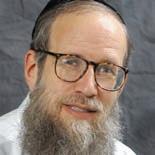
Rabbi
Dr. Hillel Goldberg
Denver, Colorado
Is this a tautology?
e Shabbos table is for . . . Shabbos. Not for testing how well the children learned the parashah , not for tasting sumptuous foods, not for singing zemiros, not for hosting friends or family, not for dressing up in Shabbos f nery, not even for rest. Wait a minute! Isn’t all this just what a Shabbos table is all about? Actually, no. I can test my child on Sunday, sing on Monday, eat delicacies on Tuesday, spend time with friends on Wednesday and with family on ursday, and dress up or take a nap on Friday. None of these acts def ne a Shabbos table unless it is for . . . Shabbos. e whole is greater than the sum of its parts. Shabbos is greater than the activities which, yes, can and should def ne the Shabbos table, but do not always do so. If one’s Shabbos table is saturated with Shabbos, then even if a child stumbles on the parashah , even if a course is missing, or guests are not present, or the singing is oT, or if I forgot to pick up my suit from the cleaners, it makes no di Terence because I have . . . Shabbos. When Shabbos is lived; when Shabbos is felt; when Shabbos is a di Terent spiritual universe; when my relationship with Hashem ascends to a qualitatively di Terent plane, then I have a Shabbos table! It’s automatic. Everything at the table is holy. Shabbos comes f rst and Shabbos is priority. at is the key. Put it this way: Am I cooking up a storm because that is what I am supposed to do for Shabbos? Or am I cooking up a storm because I feel Shabbos coming and can’t wait to taste it, not only physically but spiritually? Am I reviewing the parashah with my children
because they need to know it, or because the Torah reinforces Shabbos and Shabbos reinforces the Torah? Am I singing because that is what we are supposed to do on Shabbos, or in order to connect with the Giver of Shabbos? Am I resting because I am tired, or because Shabbos sleep is totally di Terent from weekday sleep? Inner religious feeling and conviction create the Shabbos table. Obviously, I do not mean to diminish all the gestures that give Shabbos its character, but to say— do not lose sight of the end for the means. If the children around the table are to relish Shabbos twenty years from now, the key is this tautology: Shabbos is for . . . Shabbos. Which means that if one is an empty nester and the natural number of souls around the table drops, perhaps even to no one but me and my wife, it makes no di Terence. Because my Shabbos table is for . . . Shabbos.
Rabbi Goldberg is the author of Countdown to Shabbos: Bringing the Week into Shabbos, Bringing Shabbos into the Week (New York, 2018). He is also the editor and publisher of the Intermountain Jewish News, and a contributing editor to Jewish Action
Te Outreach
Shabbat Table
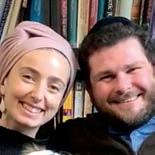
Simcha Asnes
Brighton Beach, Brooklyn, New York
As told to Steve Lipman
My wife, Gabriella, and I regularly invite people from the Russian-speaking Jewish community for meals at our home, usually on Friday night. Since I am from Odessa, I understand the Russian mentality. Even though not all of our guests are religious, they are respectful. Secular Russian Jews, more so than secular American Jews, are comfortable
with the Orthodox experience. And they are more comfortable accepting a Shabbat invitation.
We don’t have ofcial guidelines about behavior or dress. I remember a Shabbat meal I went to years ago before I became religious, in a heavily Orthodox neighborhood. I was bored. I went into another room and started playing a game on my BlackBerry. I didn’t know any better. My hosts didn’t say anything.
With Russian-speaking Jews, our Shabbat meals are long and loud— with many interruptions. People stay and schmooze, even if Shabbat comes in early, until midnight or 1:00 fa. Our house is rowdy and we joke around. e Russians love it. Since the meals are long, we don’t put out all the food at once. A little at a time. Lots of soups and salads. Di Terent kinds of f sh. Lots of di Terent potatoes. Instead of a formal devar Torah , I encourage my guests to think for themselves. I pass out photocopies with thoughts about the parashah , and have the guests explain what it means. We don’t do too much singing—most of the people don’t know the tunes. A fer the meal, everyone helps clean up. We then serve dried salty f sh, Russian beer and sun mower seeds. And it’s essential that we have di Terent kinds of teas. Lots of tea.
Simcha Asnes, who works in the construction business, is active with his wife, Gabriella, in the Russian American Jewish Experience (RAJE), an outreach organization in Brooklyn.

Rabbi Joe Wolfson and Corinne Shmuel
New York University campus, Manhattan
As told to Steve Lipman
On Friday night, in a big hall on the NYU campus, we have between 120 and 180 guests, sometimes more. We primarily serve the school’s Modern Orthodox community, but our guests come from across the Jewish spectrum.
My wife Corinne and I arrive f rst, so we can greet every student as he or she arrives. Around twelve tables are set up. We encourage students to sit with people they don’t know. I try to circulate during the meal. I’d rather have a short conversation with ff y students than an intense one with two or three. Te room is too big for everyone to sing a zemer at the same time. I’ll invite the students who wish to sing—usually about forty—to come to our table.
Our Shabbat day meal is more personal. It is held in our apartment and is a smaller a fair, usually between eight and twelve guests. Corinne was trained in Israel as a professional chef, but we share the cooking. I lead the meal, but try not to dominate it. As an ice-breaker, we always ask a thought-provoking question. On Presidents’ Day weekend last year, Corinne asked, “If you
were the president of the United States, what is the f rst piece of legislation you would enact?”
For a college student, a Shabbat meal plays a di ferent role than for those in the larger Jewish community. For students, it’s a break from the maelstrom of the week, a time to socialize, a place where they can throw themselves down on a couch.
Shidduchim? We don’t do it formally, but on occasion we might point people in a certain direction. A few years ago, we met a young woman, a freshman, who had roots in Russia. We told her to come to our Friday night post-meal oneg at our apartment; about sixty people were there. It seemed to be a big mistake—she was extremely shy; she looked like she was su fering. But she came back the next Friday night. And she came to some of our Shabbat day meals. By the end of the semester she was a completely di ferent person. Within a few weeks she had a
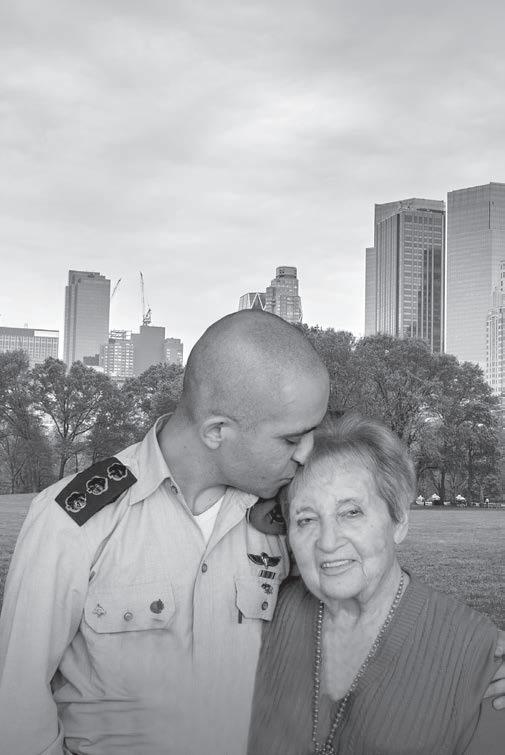

FIDF
boyfriend. And a few months ago, she became engaged to the boy whom she had met at that Friday night oneg

As told to Steve
I have been inviting guests to my home for Friday night meals since I moved to the Old City thirty years ago.
Organizations that send people to homes for Shabbat meals usually prefer families with children, not single people. Especially not single women. But there is no reason that a single person—and a single woman such as myself—cannot host Shabbat meals.
ISRAEL SOLDIERS GIFT ANNUITY
Israel’s
Rabbi Joe Wolfson and his wife Corinne Shmuel serve as OU-JLIC Torah educators at New York University.
Tova Saul Jerusalem, Israel
Lipman
No matter how tough someone’s week may have been, there’s always something to appreciate.
I’ve had couples, yeshivah students, Christians, Muslims, atheists, visitors from China, and people of various races come to my Shabbat table.
My meals are part fun, part serious. ere’s always a devar Torah and some singing.
e host should not dominate the meal. I like to ask an interesting question that shows something about each guest. It can be an idea from the parashah, an upcoming holiday, or anything intriguing like, “What is an interesting act of kindness you have experienced?” and step back.
A devar Torah has to be relevant to people’s lives. It can’t be too long, no more than three to fve minutes. I will print out one of Rabbi Jonathan Sacks’ divrei Torah on the parashah, paraphrase it, shorten it and underline the parts I f nd interesting. I let people talk about what they want to talk about—politics, movies, et cetera—at the table. I don’t like to spend too much time between courses. Dessert is the time to linger and relax.
A social worker originally from Pittsburgh, Tova Saul is a tour guide (israeladventures.yolasite. com) and animal rescuer (israel adventures.yolasite.com) in Jerusalem.

Michael Chesal Hollywood, Florida
As told to Leah Lightman
My wife and I met and married during our respective journeys becoming frum. We had participated in many Shabbos tables during those individual journeys and wanted to give back.
My family has titled our Shabbos table the “Friday Night Experience”
to remect that it is more than just coming together for a meal. It’s about caring and connecting with one another and with our Judaism.
Over the years, our Shabbos table has been f lled with growing friendships, singing and loads of explanations and Torah talks. One highlight of our Friday night experience is my famous chicken soup. During that course, each person at the table talks about something he or she has appreciated during that week. We call it the “highlight of the week.” No matter how tough someone’s week may have been, there’s always something to appreciate.
Because I teach on a volunteer basis for Aish HaTorah, which was instrumental in my becoming religious, many of our guests come from the local Aish HaTorah. We explain each step and answer questions. It’s a lively table; our frum-from-birth friends have told us that they’ve never experienced anything like our heartfelt zemiros. Some have said that even though they’ve grown up frum, they are ofen learning for the f rst time at our table why we do certain mitzvos and customs.
Our children are the most important part of our Friday night experience. ey sit next to my wife and me and the guests f ll in the rest of the table (which seats twenty comfortably). Our children are never displaced, and they have grown up experiencing and appreciating how to be machnis orchim.
A founding member of the prominent Miami law firm Peretz, Chesal & Herrmann, PL, where he specializes in intellectual property law, Michael is chairman of Aish South Florida. He taught a weekly course on Jewish ethics at Aish for over five years and continues to give regular classes there on a variety of subjects.
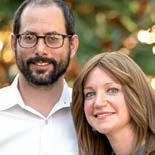
Rabbi Sender and Chamie Haber
Norfolk, Virginia
As told to Steve Lipman
In the years we have lived here, we have hosted guests nearly every Shabbos. Currently, we aim for between fve and eight guests, both men and women, per meal. We try to get to know every guest personally and keep our children involved.
Our guests come from the wider Norfolk Jewish community (population, about 10,000), and from the nearby Norfolk Naval Station, the largest Navy base in the world (about 100 Jews are stationed there at any time). Our guests also include visitors, tourists, and members of our congregation (about ninety families).
In a small Jewish community it is easy to meet people. We enjoy meeting and socializing with people from all walks of life.
Most of our guests are individuals with whom we have a relationship outside of the Shabbos meal. We don’t simply go up to people we meet and introduce ourselves and invite them to a meal. We fnd that people feel more comfortable accepting an invitation when it’s part of a larger, meaningful relationship.
Many of our guests are not shomer Shabbos. (Some drive to us but they always know that they are invited to stay for the entire Shabbos.) We learned this principle of tolerance growing up in rabbinical homes “out of town.” One example: When I [Sender] was a child in BuTalo, my father, Rabbi Yaacov Haber, once invited a man, about eighty years old, who had recently come from the former Soviet Union. e man was a violinist; he arrived at our house before the meal, carrying his violin in a case.
When my father came home from shul, the man took the violin out of his case and began serenading my father with his violin—he played Hevenu Shalom Aleichem. He didn’t know you’re not supposed to play musical instruments on Shabbos; it was his way of giving thanks.

The culinary spread spans continents, always with new delicacies. While many women have one tried-and-true challah recipe, I enjoy trying different ones. The aromas wafting through our home make quite the perfume, a boutique fragrance unique to us.
My father didn’t react. Instead, a fer the performance ended, he told the man that it was better not to play the violin on Shabbos. e man was not insulted; he came back the next week, without the violin. My father acted the same way when guests did other things at our table that are forbidden on Shabbos, like writing. We strive to accept our guests as they are. Inevitably they will leave with a greater understanding and appreciation of how we observe and cherish Shabbos.
Our fve children love having guests on Shabbos. We try not to control the pace of the meal, not to make it too structured, not to stop abruptly for a devar Torah or a zemer. But by the end of the meal there is a devar Torah and some singing.
It’s a meal, not a class. We see our meals as a chance to practice our love of all Jews; we don’t have an agenda.
Sender and Chamie Haber are, respectively, rabbi and rebbetzin of B’nai Israel Congregation in Norfolk, Virginia.
Te Ever-Evolving Shabbat Table
By Rosa Layman*
Newly married, we were two ba’alei teshuvah establishing a Torah home. Neither one of us came from a frum home, yet we have developed our own “Shabbat
table mesorah ” that is meaningful, enjoyable and spiritually upli f ing.
Before we met and married, my husband and I were each privileged to be embraced by families that opened their homes and their hearts, welcoming and hosting us at their Shabbat tables. ese memorable years constituted my “bachelor’s degree” in running a Jewish home. We discussed before we married what we wanted at our Shabbat table. e Torah sheets and parashah projects kids brought home from school and reviewed at the table would be a no-brainer for our Shabbat table. Also meaningful divrei Torah. We love hearing zemirot reverberate through a home but alas, my husband is not blessed with a singing voice.
en the food, ah, the food. Some homes featured heimish recipes from Eastern Europe, while other dishes ventured further from our frame of reference—Morocco, Argentina, South Africa and even India. Why not choose a little bit of this, a little bit of that? And who would ever think that so many di Terent kinds of challah recipes abound? Let’s give each one a try!
Over the years, our Shabbat table has been an amalgam of di Terent components. It begins on ursday night when the dining room table is cleared of chol (weekday items) and one of our beautiful tablecloths is spread and the table is set with china, silver and tchotchkes that my husband and I have acquired over the years.
Torah sheets and parashah projects with our children and grandchildren are front-and-center stage. My husband relishes developing divrei Torah from atypical sources and then relating them to contemporary events. e Layman males’ voices leave something to be desired, but the sons-in-law who’ve joined our family thus far have beautiful singing voices and belt out zemirot when they are with us, while I hum along. e culinary spread spans continents, always with new delicacies. While many women have one tried-and-true challah recipe, I enjoy trying di Terent ones. e aromas wa f ing through our home make quite the perfume, a boutique fragrance unique to us.
As our younger children entered the teenage years and the tsunami of information available on the Internet has continued to expand exponentially, we have also incorporated into our Shabbat table a weekly “special reading” followed by a discussion. Every erev Shabbat, a designated family member chooses from his over mowing e-mail inbox an article, analysis or opinion piece, perhaps on health care, American politics, Israel or another relevant topic, and then reads it aloud at the Friday night meal. Discussion is invited but doesn’t always happen. At a minimum, we hear about a stimulating topic and might even learn a new word or two.
e biggest nachat is to watch our married children develop their own Shabbat table rituals, incorporating bits and pieces of our family’s Shabbat legacy. ey will also learn, as did my husband and I, that just as Rome was not built in one day, the work of creating a memorable Shabbat table requires time, thought and planning, and spans years, in fact, decades. Ever-evolving, it is rooted in Torah and expands from there.
*Rosa Layman is a pseudonym.


fis year marks the twenty-Tfh anniversary of the publication of the Beth Din of America/Rabbinical Council of America’s prenuptial agreement, which has come to be known as the “RCA Prenup.” Since it was made available, thousands of prenups have been signed and the agreement has become standard in the Modern Orthodox community. Jewish Action took the opportunity to discuss the impact that this socially transformative document has had on American Jewry with the current president of the Rabbinical Council of America, Rabbi Elazar Muskin. Rabbi Muskin has served for thirty-three years as the rabbi of the Young Israel of Century City in Los Angeles, California.
Rabbi Elchanan Poupko: What was the impetus for creating the Prenup?
Rabbi Elazar Muskin:f e RCA Prenup document was written by Rabbi Mordechai Willig, rosh yeshivah at Rabbi Isaac Elchanan eological Seminary
Rabbi Elchanan Poupko is an eleventh-generation rabbi, the founding editor of The YU Lamdan (The Wilf Campus Torah Journal), and the president of EITAN—The American Israeli Jewish Network. He also served as a rabbinic intern at Park East Synagogue in New York. He earned a master’s degree in Jewish education from Yeshiva University. Rabbi Poupko is a member of the Rabbinical Council of America.
FAMILY MATTERS
ON THE 25THANNIVERSARY of the RCA’S PRENUPTIAL AGREEMENT
UP CLOSE WITH RABBI ELAZAR MUSKIN
Interview by Rabbi Elchanan Poupko
and dayan of the Beth Din of America. He was the driving force behind its implementation.
Why was it created? Let me share with you a story from my own rabbinic experience. When I frst arrived in Los Angeles in 1986, I encountered a surprise. Instead of being confronted with a complex halachic question, my introduction to the rabbinate involved dealing with three agunah cases—i.e., husbands refusing to give their wives a get. When I tried to resolve one of the cases, I was verbally abused by the husband. Attempts at extortion, manipulation and emotional abuse were common. ankfully, all three cases were eventually resolved, but each took a long time. Today, twenty-fve years afer the RCA Prenup was instituted, I don’t have any such problems. Yes, there have been cases of divorce, but in cases where the RCA Prenup was signed, the withholding of a get was avoided.
I insist that all couples have a prenup before I will ofciate at their wedding. My own two sons-in-law and daughters each signed the RCA Prenup before their weddings. Many rabbis have instituted this as well; it has become the gold standard for many.
ere’s an unfortunate story I would like to share with you concerning a couple I was familiar with, though I was not their ofciating rabbi. Sadly, the marriage did not work out. Two months afer the wedding the young woman came to see me asking
for help in obtaining a get. I asked her if she had a prenup. When she said no, I asked her why not. I was upset to learn that the ofciating rabbi told her she didn’t need a prenup. I told her that the one tool rabbis have to help in obtaining a get did not exist in her case. Her family was furious with me for not being able to resolve the case immediately. at is the sad reality. Without a prenup, how is a rabbi supposed to help?! How can I approach a husband—who probably doesn’t want to hear from a rabbi at this juncture—and ask him to give a get without the backing of a prenup? If you speak to the Beth Din of America, they will tell you that if there is a prenup we can succeed in obtaining a get in almost every case.
A prenup also serves as a powerful educational tool that teaches a couple on the verge of marriage that if God forbid the marriage doesn’t work out, a get should never serve as a tool for extortion; a get must be given unconditionally. Some young people hesitate to talk about divorce at the time they get engaged, but this is the frst thing I discuss with them. is inmuences them to realize that a get can’t be used as a weapon by the husband or the wife. Indeed, this is a major achievement of the Rabbinical Council of America and of the Beth Din of America. Our Prenup has been accepted by many posekim in Israel, such as Rabbi Asher Weiss and the late Rav

Rabbi Elazar Muskin
Ovadia Yosef, and rabbis in America including Rabbi Gedalia Dov Schwartz and Rabbi Hershel Schachter. On the RCA web site you can see a long list of rabbis who support the Prenup.
RP: How is it diferent from previous attempts to solve the agunah problem?
RM:f ere have been many attempts in the past century to solve the plight of agunot e RCA Prenup is unique because it is grounded both in halachah as well as in American law.
A good example is the case of Light v. Light, which was heard in front of the Superior Court of Connecticut. It involved a bride and groom who had signed the RCA Prenup, and later decided to divorce. e husband refused to come to beit din as his prenup required. He argued that the courts could not demand that he abide by the Prenup, as that would constitute a violation of separation of church and state. In what was a great victory for the RCA Prenup, the court ruled that it is not a religious document but that it is a legal and enforceable one. In every single case where the RCA Prenup has been challenged in the secular courts, the courts have upheld its validity.
RP: What opposition has the Prenup faced?
RM:f ere have been objections, especially with regard to applying the agreement in Israel, from halachic authorities there. Much of this opposition has nothing to do with the RCA Prenup itself; rather it refers to various other prenups that have been drafed in Israel.
e RCA passed a resolution saying that its members should not ofciate at weddings unless a prenup is used.f e resolution did not insist that rabbis use only the RCA Prenup. If a rabbi wishes to use the prenup approved by Rabbi Moshe Feinstein, that is fne with us.
A while back I met a Chassidic posek in New York who expressed his admiration for the RCA Prenup and noted how well-written it is. We are now seeing it being used by members of the Yeshivish and Chassidic communities.
Rabbi Shmuel Fuerst, who serves as dayan of Agudath Israel of Illinois, now supports the signing of a prenup agreement. e RCA does much for the community that goes unnoticed, but the Prenup is something that is recognized as an enormous success. We didn’t know twenty-fve years ago that it would be so successful, but thank God, it has proven to be extremely well-accepted.
RP: So the RCA Prenup succeeded legally, halachically and socially?
RM: Yes! Halachically, it has been accepted by many posekim Legally, it has been endorsed by secular courts of law. Socially, the RCA Prenup is being widely used in our community. A number of years ago I met with a couple at whose wedding I was going to ofciate. As always, I told the couple that they would need to sign a prenup in order for me to ofciate. e groom was reluctant. He insisted that I should trust that he would be fair if anything went wrong. I responded by saying that no one can know how they will behave in the future; it is simply impossible to predict. In the end, he signed it. It’s important to note that a couple is always given a copy of the Prenup for them to review before signing and are encouraged to consult with whomever they wish. No one just signs a paper without knowing what they are signing.
RP: If the Prenup exists, why are there still agunot?
RM: In my experience there has never been a problem for those who signed the Prenup. However, there are always wild and crazy stories. If a man disappears oT the grid, there is no document that can help. But those are not the usual cases.f e Beth Din of America will tell you this as well. Overall, women are halachically being protected and the Prenup is working. It also reiterates an important lesson in bein adam lachaveiro: the get should never be used as a means of extortion. When a bride and a groom turn to their ofciating rabbi and insist that the rabbi provide a prenup for them, we will know that we have succeeded in educating the community.

How Does the RCA Prenup Work?
As per the Beth Din of America web site (theprenup. org), the Prenup essentially contains two provisions:
1. Each spouse agrees to appear before a panel of Jewish law judges (dayanim) arranged by the Beth Din of America, if the other spouse demands it, and to abide by the decision of the Beth Din with respect to the get
2. If the couple separates, the Jewish law obligation of the husband to support his wife is formalized, so that he is obligated to pay $150 per day (indexed to inflation), from the date he receives notice from her of her intention to collect that sum, until the date a Jewish divorce is obtained. This support obligation ends if the wife fails to appear at the Beth Din of America or to abide by a decision of the Beth Din of America.
Each of these provisions is important to ensure that a get is given by the husband to his wife in a timely manner following the functional end of a marriage. The first obligation grants authority to the rabbinical court to oversee the get process. The second obligation provides an incentive for the husband to abide by decisions of the rabbinical court and to give a get to his wife once the marriage is over and there is no hope of reconciliation.

Courtesy of the Beth Din of America


THE UNITY OF A NATION

UP CLOSE WITH Rivka Ravitz
Jewish Action Editor-in-Chief Nechama Carmel speaks with the former chief of staff to Israel’s tenth president.
Photo: Yonatan Sindel/Flash 90
Rivka Ravitz, the former chief of sta! to Reuven Rivlin, the tenth president of Israel, has served as a government administrator and advisor, researcher and author for nearly twenty years. Currently, Rivka, a Chareidi mother of twelve, is a senior fellow at the Jewish People Policy Institute (JPPI) and is pursuing a PhD in public policy at the University of Haifa. JPPI, established by the Jewish Agency, is an independent center of thought and planning focused on shaping policy for the Jewish people in Israel and the Diaspora.
Rivka rst entered politics in 1996 as an eighteen year old, when her father-in-law, Rabbi Avraham Ravitz of the Degel HaTorah party, was appointed to chair the Knesset’s Finance Committee and asked her to work for him. In 1999, she began working as Reuven Rivlin’s parliamentary assistant. A trailblazer, Rivka entered politics at a time when it was rare for a Chareidi woman to do so. (Today it is a bit more common, though still, she says, not common enough.) She ran many of Rivlin’s campaigns, including successful campaigns for his election as speaker of the Knesset in 2003 and 2009, and his election as president of the State of Israel in 2014. She was appointed his chief of sta! in 2014 and served in that position until 2021. Among her many duties as chief of sta!, she organized foreign delegations to host countries across the globe, worked closely with foreign governments and o cials and coordinated national projects seeking to improve the position of minority groups in Israeli society.
Rivka holds a BA degree in management and computer science, as well as an MA in management and information systems and an MA in public administration and political science. Rivka is married to Yitzchak Ravitz, the mayor of Telz-Stone, where they live with their children.
Nechama Carmel: Your career in politics is fascinating, especially because you are a member of the Chareidi community. Can you tell us about your career path?
Rivka Ravitz: My career in politics began as a way to make a living I was eighteen when my father-in-law, Rabbi Avraham Ravitz of the Degel HaTorah party, asked me to work for him in the Knesset. I had trained to be an English teacher, which was my dream job. But he convinced me to take the job in his o!ce. I didn’t have the right skills. I ended up taking home documents every day and studying them all night long so I could come prepared for the meetings in the morning. Two years later, a new law was passed in the Knesset that banned Knesset members from hiring rstdegree relatives. I had to nd a new job. I found one working with Reuven Rivlin as a parliamentary assistant. Eventually, I worked my way up to become his chief of sta . I loved my various jobs in politics despite the fact that it was not an easy environment for me as a Chareidi woman. When you work in a secular o!ce and you are the sole religious person, people assume you are a rebbetzin. My
In general, to be successful as a working mother, you need to be effcient. . . . Don’t waste your time and brainpower on things someone else can do.
colleagues started asking questions, many of which I could not answer. O$en I would call my rabbi for guidance. Once, a secular colleague whose husband is traditional pulled me aside. A two-day yom tov, which is unusual in Israel, was coming up. She asked me if there are a few minutes between the rst and second day of yom tov because she needed time to drive back home from her parents’ home to her apartment. How was I to explain to her that “no, there’s no time to drive back home, it’s one yom tov?!”
%ere were other challenges as well. When I took on the role of chief of sta , I was thirty-seven years old and had just given birth to my eleventh child. Some of the sta members I supervised were high-level government o!cials who were twenty years older than I was. Truthfully, there were times I felt like quitting. Some days were really hard; I felt I didn’t have the stamina to continue. I was responsible for overseeing a very large sta —sixty or seventy people—and whenever there was friction between sta members or a complaint, it landed at my door.
At times, I felt like just going back home and raising my children like any other mother. %en I started getting phone calls from young seminary girls—eighteen- or twenty-
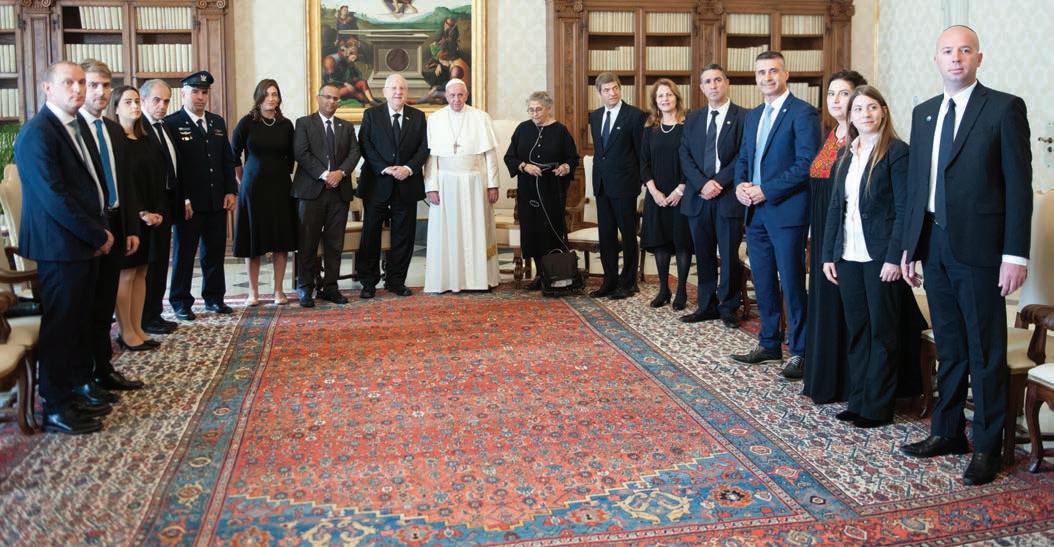
year-olds who had recently joined the workforce and were seeking advice on how to negotiate the secular world while maintaining their religious principles. Inadvertently, I had become a role model to these young women. I realized then that I couldn’t give up.
Carmel: How did you explain Chareidim to your secular colleagues?
Ravitz: I explained to them that the word Chareidi means to be afraid of change. Being a traditional Jew means keeping the traditions. I would tell them that my grandmother looked exactly like her grandmother and her grandmother exactly as her grandmother before that. We are averse to change because once you start making changes—even small ones—you don’t know where you’ll end up.
Carmel: Do you think you had an impact on your secular colleagues?
Ravitz: Even if I didn’t change [their secular outlook], I changed their perception of Orthodox people. Getting to know someone on a personal level helps to change one’s point of view. I showed them that Chareidim are normal,
loving people with families and similar challenges . . . I humanized Chareidim for them.
Carmel: What were the most di cult moments for you in your career?
Ravitz: Every time I had to go back to work a$er giving birth, it was very di!cult. A$er each child was born, the thought would enter my mind: Maybe I should just stay home and give up my career.
%at was one kind of challenge. %ere were other challenges too.
%ere was the time President Rivlin was invited to meet the Pope. %e Israeli government needed Rivlin to make a certain request of the Pope regarding a political situation. When our delegation arrived in Italy, Israel’s ambassadors to Rome and to the Vatican came to our hotel and started prepping us; there were some very strict protocols, so they let us know what to expect and how to act. “Each one of you will be escorted by a high-ranking cardinal,” stated one of the ambassadors. “You will then shake hands with the Pope and he’ll give you a small gi$.”
At this point I interrupted him and said, “I’m a religious woman. I took upon myself a chumrah [stringency]—I don’t shake hands with men. Please tell the Pope’s entourage so he can be prepared.” “No problem, I’ll do that,” the ambassador replied.
%e next morning, as we prepared to leave to the Vatican,
One of Rivka Ravitz’s challenging career moments occurred during her meeting with the Pope in 2018 (Ravitz is third to the le$ from the Pope).
Photo: WENN US/Alamy Stock Photo
He [the Pope] put out his hand, and I quickly blurted, ‘I’m a religious woman and I don’t shake hands with men.’
While every other member of the delegation had a hasty one- or two-second meeting with the Pope, I ended up having a fve-minute conversation.
the ambassador told me, “Rivka, I’m sorry. I forgot. I didn’t tell them. So please call your rav and just ask for a heter [leniency] for this one time to shake hands with men.” But I didn’t want to do that. So as I walked through the long corridors before meeting the Pope, I grew increasingly anxious about how things would turn out. It didn’t help that my colleagues were concerned as well. “Rivka,” they told me, “be careful. You could be responsible for ruining a very important meeting.” When the Pope appeared, I was second in line to greet him. He put out his hand, and I quickly blurted, “I’m a religious woman and I don’t shake hands with men.” “Oh really?” he said. “Are there people who observe that?” And I said, “Yes. %ere are.”
While every other member of the delegation had a hasty one- or two-second meeting with the Pope, I ended up having a ve-minute conversation with him, in which I explained to him that in Jerusalem there is a large Chareidi community that adheres to strict religious principles including separation of the genders. I think our conversation warmed the atmosphere, and baruch Hashem, President Rivlin’s meeting with the Pope went well.
Just as I was concluding my conversation with the Pope, someone captured the moment on camera. By the time I arrived back in Israel, I had some 700 calls on my phone. %e photo had gone viral; I was getting calls from journalists around the world.
Carmel: Can you share any other memorable stories of meetings with world leaders?
Ravitz: In 2021, President Rivlin was invited to meet with President Joe Biden. %e meeting was supposed to be just between the two of them, but when the door opened and the US president ushered President Rivlin in, he whispered to me, “Rivka, come with me.” I was more than happy to oblige.
I found myself in the Oval O!ce; it was just the three of us. When President Rivlin introduced me, the US president
stuck out his hand to shake mine and President Rivlin said, “No, no, Rivka doesn’t shake hands with men. And guess how many children she has? She has twelve children.” President Biden turned to me, obviously impressed, and said, “I have to bow to a mother of twelve.” And he went down on his knees. (%at photo went viral as well!)
He then took a photo of his mother from the shelf and showed it to us. I thought to myself: Even the most powerful man in the world has a picture of his mother in his o ce.
Carmel: Now that your career has taken a di erent turn, tell us about your research at the JPPI focusing on Chareidi women.
Ravitz: Part of my research at the JPPI is geared toward empowering Chareidi women in the workforce. Traditionally, women in the Chareidi community were primarily focused on raising their children, but in many Chareidi homes, husbands have dedicated themselves to Torah study full time and the women have become the main breadwinners. Work for Chareidi women is therefore o$en seen as a necessity, rather than a means of self-ful llment or professional growth. While 83 percent of Chareidi women are employed, their average hourly wage is lower than that of non-Orthodox Jewish women. Chareidi women are generally out of the house from eight in the morning until four or ve in the a$ernoon. Why should they earn so little?
In 2018, a survey by Israel’s Central Bureau of Statistics indicated that these wage gaps are signi cantly narrowed for those who have attended academic programs. But as of 2020, only 15 percent of Chareidi women held academic degrees compared to 28 percent of all Jewish women in the same age range. Many Chareidi women want to increase their salaries and advance their careers.
How can they pursue higher education and secure higherquality employment without compromising their lifestyles? Government policies have mainly centered on promoting
President Biden turned to me, obviously impressed, and said, “I have to bow to a mother of twelve.”
And he went down on his knees.
Chareidi male employment due to their low employment rates. %e government has not adequately addressed the needs of Chareidi women. It’s time for a shi$ in government policy to address this imbalance by providing greater support and opportunities for Chareidi women in education and employment.
A Chareidi woman can do whatever her heart desires, including obtaining a PhD in public policy at the University of Haifa.
Carmel: Is there any project, past or present, that you’re really proud of and that you feel has signi cantly impacted your community?
Ravitz: Fourteen years ago, I took an evening job teaching computer science to seminary girls. Currently, I teach in a few seminaries. Some of the girls are already working, but most are preparing to enter the workforce. %e classes take place from 8:00 to 10:00 '(. I put my children to sleep and run out to teach because I love it. I don’t even take a salary. I really enjoy connecting with these young girls as they prepare to make these signi cant life-altering decisions. It feels like my avodat Hashem
I also enjoy volunteering in a local women’s jail. When I was working with President Rivlin—the president of Israel has the power to pardon prisoners—we would hear really heartbreaking stories. I told myself that when I le$ his o!ce, I would make sure to visit some of those prisoners. So I go there once a week and deliver a shiur on the weekly parashah, a$er which I stay for an hour or two to talk with the women.
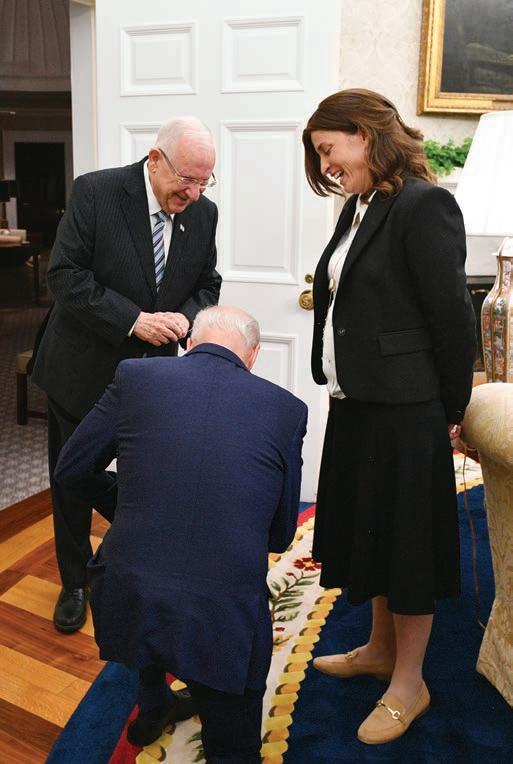
Carmel: I think all readers will want to know the answer to this question: How do you do it? How did you manage such a demanding career while raising twelve children?
Ravitz: I got a lot of help from my family. My mother, who has ten children herself, was very supportive. She never worked outside of the house, and she helped me raise my children. In fact, at one point, we had our babies together. She had her tenth child two weeks a$er I had my oldest child.
In terms of sacri ce, I worked very hard over the years, and, of course, my children had less of me. But my husband and I decided early on that we didn’t want to leave our children with babysitters. Obviously, there were times when we needed to, but on a regular basis, we didn’t. My husband, too, has a very demanding career as he is the mayor of Telz-Stone. At the beginning of every week, we’d take out our work schedules and we would each pick two or three days when we would come home early—at 4 or 5:00 in the a$ernoon when the kids came home from school. We tried to arrange our schedules so that one of us would be home at those crucial hours to help with homework and to serve
is photo of President Biden kneeling before Ravitz a$er being told she is a mother of twelve went viral. Photo: Haim Zach/GPO via AP
the children a hot meal. If, for example, it was my husband’s day to be home at four in the a$ernoon, I would stay in the o!ce until seven or eight at night, and then when I returned home, he would go back to the o!ce. And the same would happen in reverse.
Carmel: What advice would you o er working mothers?
Ravitz: %e best advice I can give is to manage your time well. You can’t waste your time and be successful. When I was raising young children and working such a full workload, I didn’t read a book—this lasted years!—and I love reading. I knew I would lose myself in a book and waste time.
I generally make three lists: a list of what’s important to nish today, a list of what can wait for tomorrow, and a list of what can wait until the following week. I nd that it’s crucial for me to stop in the middle of the day and read the three lists. If I don’t read the lists, they aren’t e ective.
Delegating tasks is also very important: whether it is to your sta , your children and even your husband. Someone else can wash your dishes. But there are certain things that only you can do—such as spending time with your children. Don’t waste your time and brainpower on things that someone else can do.
In general, to be successful as a working mother, you need to be e!cient. I wake up around 5 o’clock in the morning; I go to sleep early, at around 10 or 11. Sleeping a su!cient amount of time is vital as well. I nd myself more productive in the morning—the work I can get done in the early morning takes me one-third of the time it would take if I did it in the evening. But you have to know yourself and the hours that work for you.
%ese days, people waste a lot of time on their phones and on social media. But you can’t be successful if you don’t utilize your time productively.
Women with careers need to remember to make time for their children and their husbands. I recommend shutting your phone completely whenever you are with your children. Take out the battery for two hours. Look your children in the eye and talk to them. Mothers have a powerful in)uence on their children. Career is important, and I’m not opposed to women having careers obviously, but just remember: a mother is irreplaceable.
Ravitz: I would say it’s not easy. %e Israeli parliament works late hours, sometimes all night. During budget season, we would go without sleep for days on end. You have to be willing to work hard and devote a lot of time. It’s not always suitable for women who are raising young children.
Carmel: How would one know if she’s suitable?
Ravitz: If you want it, you are suitable.
Carmel: Are there more Chareidi women in politics now than there were when you rst started?
Ravitz: %ere are many more, but certainly there aren’t enough Chareidi women in high positions. Even some of the Chareidi Knesset members choose secular chiefs of sta s, which I think is disappointing. Today there are enough Chareidim, men and women, with PhDs, who are quali ed for the position. At the end of the day, only a Chareidi can truly understand the needs of his own community.
Carmel: What do you think is the biggest challenge facing the Chareidi community in Israel today?
Ravitz: %e biggest challenge is the Chareidi community becoming almost 50 percent of the population in the near future. If you look at the number of rst-grade children in
A Chareidi woman can do whatever her heart desires, including obtaining a PhD in public policy at the University of Haifa.
Carmel: What advice would you give to young Chareidi women who are interested in pursuing a career path along the lines of what you did?
the country today, Chareidi children constitute almost 50 percent. %at means that we need to be prepared. Chareidim need to get training and education if they are going to be the majority of the country.
Carmel: A nal question: Who in uenced you to become the woman you are?
Ravitz: My Bubbe, my mother’s mother, had a tremendous in)uence on me. She was born in Jerusalem between the two world wars. Food was so scarce that children were dying of starvation. So her father le$ for the United States to try to earn a living. A$er two years, he sent tickets for his wife and children. My Bubbe was four years old when her mother took them on a three-month voyage by boat to America. My great-grandmother didn’t let them eat anything eishig during the trip because the meat wasn’t kosher. Bubbe became a student of Rebbetzin Vichna Kaplan [a student of Sarah Schenirer who brought the Bais Yaakov movement to America], and later became a teacher. She was always learning; you could always nd a Chumash open before her. She had strong principles and she stood up for them. She taught me about standing up for your values and beliefs, and I try to teach that to my children.
The biggest challenge is the Chareidi community becoming almost 50 percent of the population in the near future. . . . Chareidim need to get training and education if they are going to be the majority of the country.

Ravitz walks with President Rivlin as he converses with Prince William. Courtesy of the Israel Government Press O ce
A World Gone Mad
By Rivka Ravitz

Photo: Yonatan Sindel/Flash90
Last Shabbat I got up early, wanting to say the special prayers for Simchat Torah before the children woke up. I went up to the roof, because our sukkah was on the balcony, blocking the view of the sun rising over the Jerusalem hills. After about an hour, the rumble of explosions could be heard. We always hear the Iron Dome’s rocket interceptions, but this explosion seemed especially massive, and I was scared.
I went back down to the house and woke up my husband [he serves as the mayor of Telz-Stone]. As it was Shabbat, he hurried over to the town’s security o!cer. Between air-raid sirens, as the children peeked out of the windows, they shouted, “Mom, I saw Dad. He’s riding in the security o!cer’s car.” My first thought: If the rabbi permitted him to ride in a car on Shabbat, something horrible must have happened. I didn’t put down my book of Psalms the whole day.
The kids and I had the holiday meals alone. Between meals my husband came in briefly with the Home Front regional commanders. They said they weren’t hungry, but when I filled their plates with cholent and meat, they wiped them clean pretty quickly. It was only at this point that I began to comprehend the magnitude of the horror. In shock, I failed to notice that my four year old was sitting in a corner of the room listening, eyes wide with horror, to the accounts of how little children, entire families and even the elderly had been kidnapped. Since then, he won’t go into the bathroom alone, afraid that terrorists might pop out of a tunnel and abduct him.
I’m writing this three days after we heard the explosion—my husband hasn’t been home much since. He spends his time shuttling between the local council o!ce and the town command post.
There were many seniors alone and in need of help; many families whose fathers went o on reserve duty. The local health clinic wasn’t secure, and it took almost an entire day just to take care of that. Mobilizing a rapid response team and dealing with a lack of weapons (a matter ultimately addressed by an American philanthropist) consumed many long hours as well. And so, like many other Israeli mothers, I took my kids in and out of the fortified “safe room,” where the frightened children of my Chareidi community shelter together, well-aware of the tragedy that has befallen us, waiting for the booms of Iron Dome interceptions.
In between sirens, I’ve cooked large pots of food and passed them on to my good friend Rachel. She divides the food into portions and transports them to places where soldiers long for hot meals because the speed of the call-up left them with only battlefield rations. Her two-story house in a Chareidi suburb of Jerusalem looks like an army kitchen.
All my friends in a Chareidi WhatsApp group are looking for ways to contribute. Some pack meals for the front lines; some are fundraising, and when a few hundred shekels have accumulated, they go out to buy clothing and toiletries for soldiers who’ve sent notifications about the things they lack. Every few hours a lively discussion develops in the group on the issue of Chareidi IDF conscription.
My children sit and study and recite Psalms non-stop for the success of the soldiers and the speedy release of those being held captive. The central yeshivah cut its bein hazemanim vacation short and all have returned today to the Torah halls, with faith in the protection and deliverance that the Torah a ords.
Yesterday I got a WhatsApp message
from a friend, someone I first met at the palace of the king of Spain, during a state visit. He asked how I was. In response, I sent him a video of us, fourteen people, in our tiny safe room, dancing to the strains of Ani Ma’amin—“I Believe”—my four year old on my shoulders. Whenever a siren sounds, we dance so he won’t hear it, or the echoes of the explosions, that shake the house.
“My G-d,” my friend messaged me back. “The world’s gone mad.”
Adapted from a blog posting that appeared in the Times of Israel on October 12, 2023.
Whenever a siren sounds, we dance so he won’t hear it, or the echoes of the explosions, that shake the house.

























































































THE GREAT AJEWISHWAKENING







































































































AWAKENING THE GREAT JEWISH


































COVER STORY















By Rachel Schwartzberg
A!er her bat mitzvah, Gracie Greenberg, who recently concluded her freshman year at Pace University, gured she’d had enough of Judaism.
“My feeling was: I’m done! No more Judaism for me,” recalls the Long Island, New York, native.






























































But about a month into her rst semester studying musical theater, everything changed.
“October 7 was a real wake-up call,” she says, recalling her horror at the brazen attack in Israel and the rise in antisemitism that followed—particularly on college campuses like hers. “Being Jewish was part of my identity I hadn’t given much thought to. Why was everyone targeting me?”
As Greenberg was struggling to make sense of the hatred that suddenly surrounded her, she heard about a free dinner at Meor, a national outreach organization with a branch at nearby New York University (NYU). What she found there was overwhelming.
“I discovered a strong community of Jews that included all types,” she says—which she’d never experienced before. at dinner set her on a journey to explore Judaism more deeply.







Greenberg never expected that she would travel with Meor to both Poland and Israel in her freshman year of college, but those trips helped her clarify who she is and what’s important to her. It’s been transformative, she says, to discover the role of spirituality and the value of personal responsibility in Judaism.
“I decided I want to marry Jewish,” she says. “I’ve started talking to G-d once a day, and I’ve been taking on small mitzvot. I’ve learned that it’s what I’m doing for Hashem that really matters.”










While Jews the world over have been experiencing a reawakening, this particular article is focused on American Jewry.
October 7 shocked the Jewish world, and the outpouring of anti-Israel and anti-Jewish rhetoric that followed—both on social media and in real life—has sparked a religious awakening among Jews across the US. As counterintuitive as it may seem, the most common Jewish reaction to rising antisemitism has not been laying low and hiding one’s identity, but rather an increase in Torah learning and mitzvah observance and a stronger connection to the Jewish community.
In fact, a recent survey of American Jews by the Jewish Federations of North America noted the “explosion in Jewish belonging and participation,” referring to it as “ e Surge.” According to the survey, “Of the 83 percent of Jews who were ‘only somewhat,’ ‘not very’ or ‘not at all engaged’ prior to October 7, a whopping 40 percent are now showing up in larger numbers in Jewish life. is group—equal to 30 percent of all Jewish adults and nearly double the
proportion of Jews who identify as ‘deeply engaged’—represents the greatest opportunity for broadening and deepening Jewish life” (https:// ejewishphilanthropy.com/what-youneed-to-know-about-the-surge-ofinterest-in-jewish-life/).
Jewish education is bene ting as well: 39 percent of Jewish parents indicated they may reevaluate or reconsider educational or summer programs for their children, and 38 percent of parents with kids in a secular private school are considering making the move to Jewish day schools. Among Jews who are not members of synagogues—which according to Pew estimates is 64 percent of US Jews—37 percent say they’d be open to joining one now.
“October 7 lit a re for Jews around the world,” says Rabbi Mark Wildes, founder of the Manhattan Jewish Experience (MJE). “We’re seeing this real need to learn more about Judaism to make sense of it.”
While Rabbi Wildes has seen a bump in attendance at MJE programs since October 7—MJE’s mission is to engage less a liated Jews in their twenties and thirties in New York—he believes it’s not the numbers that are noteworthy but the eagerness of the participants.
“It’s not hundreds of people coming,” he says. “But there’s a certain urgency among those who are coming. ey have a need to support Israel, when they previously had, at most, a tenuous connection.”

American Jews are reaching out—because what they’re actually looking for is “authenticity and connection.” Courtesy of Aish.com

Rising antisemitism, he says, has “exposed a raw nerve among assimilated American Jews. ey are suddenly asking, ‘What do I believe in that’s worth defending?’” is sentiment is echoed across college campuses, as previously unengaged Jewish students struggle to cope with hostility and even outright violence from
Rachel Schwartzberg is a writer and editor who lives with her family in Memphis, Tennessee.
Since October 7, he says, “we went from ‘why be Jewish?’ to ‘how to be Jewish.’”


Courtesy of Aish.com
to be shomer Shabbos,” says Rabbi Aryeh Kaplan, co-director, along with his wife Sharona, of OU-JLIC at University of California-LA (UCLA).
pro-Palestinian encampments—and schools unwilling to take a stand to protect their Jewish students. Like Greenberg, Jewish students have been targeted and marginalized, and they feel entirely unequipped to respond to anti-Jewish and anti-Israel accusations.
“Every two or three weeks I meet a student who tells me he’s trying
“We’re seeing young men who are deciding to wear a kippah for the rst time on campus.” e primary mission of OUJLIC is to support Orthodox day school graduates on secular college campuses. “We’re not here to reach out to una liated Jews,” says Rabbi Kaplan. “But we’re seeing so many students who might have been loosely connected before—people who were on the outskirts of the Orthodox community—who are interested in more.”

“Someone said to me the other day, ‘ ere’s got to be more to Judaism than bagels and lox if they hate us so much,’” says Rabbi Aaron Eisemann, director of Meor at NYU. “ ese students want to understand what Judaism is really about.”
While he and his team used to spend signi cant time recruiting kids for programs, those e orts are no longer necessary. “ e encampments recruit them for us,” notes Rabbi Eisemann, who has been working in campus outreach for nearly twenty years. Not only are more kids showing up, but there has been a signi cant growth in the level of content he and his sta are sharing.
“ at’s really more telling,” he says. “In the past, the average liberal arts college student questioned the need for Judaism at all; we spent a lot of time on basics. But the campus protests have answered that question for them. e level of learning we’re doing now is so much higher.”
“It Cuts Deep within the Soul of American Jewry”

“October 7 lit a !re for Jews around the world,” says Rabbi Mark Wildes (right), founder of the Manhattan Jewish Experience (MJE). “We’re seeing this real need to learn more about Judaism to make sense of it.” Courtesy of MJE
I’ve been working in the Jewish community for thirty years. I’ve never seen anything like this.

“ ere’s no way we could ever have gotten Jews to wake up like this,” says Steve Eisenberg, a
successful investment banker turned outreach activist. “It took 1,200 murdered Jews to do this; if we had a billion-dollar budget for outreach, we could not have done this.
“Jews who never did Seders, did Seders this year. Jews who never did Shabbat are trying Shabbat,” says Eisenberg, who serves as the director and co-founder of Jewish International Connection (JIC), a program that “enhances Jewish connection around the world through events and helps strengthen Jewish identity.” “I can’t tell you that the changes are dramatic, but it’s made a large percentage of the Jewish population in America feel more Jewish and identify as Jews. It
cuts deep within the soul of the Jewish people in America.”
“I heard of three Jewish twenty-yearolds who broke up with non-Jewish girlfriends,” he says. “Why? Because, all of a sudden, their non-Jewish girlfriends were siding with Hamas.
e men thought: you are really siding with people who raped and pillaged and murdered babies and burned them alive? Who are you? Another guy told me three people in his family have decided to marry Jews now. ese are Jews who before October 7 couldn’t care less about intermarrying.”
Since October 7, he says, “we went from ‘why be Jewish?’ to ‘how to be Jewish.’ ”
Hungry for Connection
For your typical una liated college student, “a rabbi was completely unrelatable,” says Rabbi Eisemann. at was before October 7. “But when you can’t go to class because people are yelling at you, the same rabbi is now a safe haven.” Rabbi Eisemann posits that right now young people, especially, are ready for authentic Torah learning because barriers have fallen away.
Grant Ghaemi is a perfect example. A senior at NYU last fall, he found himself very upset a er October 7. “I was disgusted, and I confronted people about their [social media] postings . . . and I lost friends over it,” he recalls. His own reaction surprised him. “ ere was clearly something about what happened on October 7 that changed me,” he says. Before, he had prided himself on not letting political views get in the way of relationships.
A few weeks later, he met Rabbi Eisemann in front of the NYU library. “With a big smile,” says Ghaemi, “he stretched out his hand and asked, ‘Are you a Jew?’ Up until then, when someone asked me that, I’d say no or keep walking. But this time I thought to myself, if there’s ever a time to
embrace this, the time is now. So I shook his hand and said, ‘Yes I am.’”
Ghaemi grew up in a “very secular household” in New Jersey; his father was raised in a Muslim family in Tehran. “As a kid, my family celebrated Chanukah, a version of Rosh Hashanah, and Yom Kippur when my mother remembered,” he says. “And also Christmas and Easter and Eid.”
In his last semester at NYU, Ghaemi committed to learning at Meor at least once a week, and he attended his rst Shabbaton in Passaic, New Jersey.
He admits he “felt terribly out of place” at rst when he arrived at his hosts’ home. “I had preconceptions about Orthodox Jews,” he says. “I didn’t know any Hebrew. I didn’t even know what Shabbat was.” However, he was quickly blown away by the warm welcome he received—“from literal strangers.”
“I was shocked to nd an entire community that viewed me as part of their extended family,” he says. Ghaemi ended up becoming a regular on Shabbatons, and even brought his mom along to get a taste of Shabbat, too. A er graduating in the spring, he began working remotely so he could participate in a six-week Meor fellowship in Lakewood, New Jersey.
Seeking Authenticity
is “reawakening” spans all demographics and geography.
Rabbi Josh Broide, director of the Center for Jewish Engagement (CJE), a division of the Jewish Federation of South Palm Beach County, and outreach rabbi at Boca Raton Synagogue in Florida, says he ran an Israel-oriented program soon a er October 7 and expected a dozen people. More than 100 showed up. Even months a er October 7, program attendance remains signi cantly higher than in the past. “Of course you’d get people [at previous programs], but nothing in the numbers like this,” he says. “And the people who would show up were the people you’d expect to show up. But now we are getting people we would never expect to show up.”
Moreover, since the Hamas attack, a er any Israel-centered talk or presentation, he has come to expect a long line of people waiting to speak to him. “ ey say things like, ‘Rabbi, I’m so happy to be here. What else can I do to get involved?’
‘Rabbi, Israel is the most important thing on my


In the days and weeks immediately following October 7, there was a marked increase in participation in both the Community Kollel of Greater Las Vegas’s outreach programs and its regular minyanim and shiurim. Courtesy of Rabbi Nachum Meth
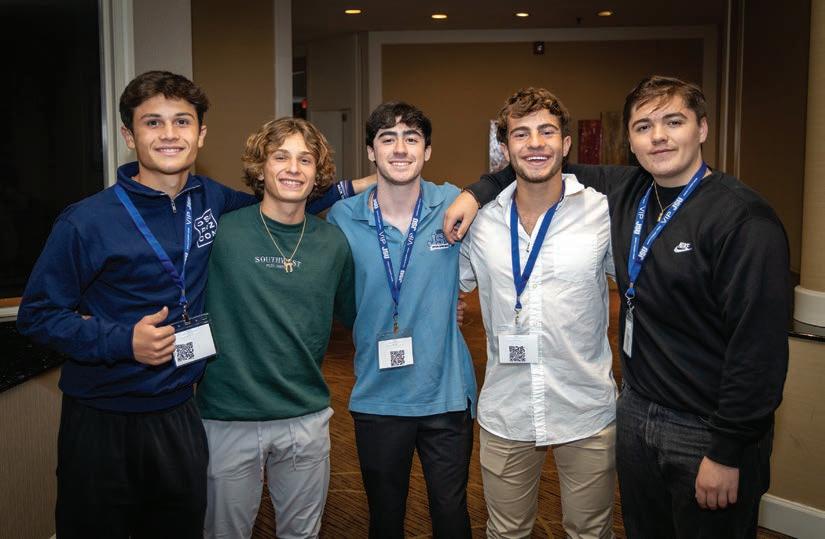
mind.’ I’ve been working in the Jewish community for thirty years. I’ve never seen anything like this.”
is scenario is playing out all over the outreach world. “We’ve had triple the number of people engaging with us,” says Rabbi Tzvi Broker, one of the humans behind the Live chat feature on Aish.com. For about ten hours a day, six days a week, he or a member of his team mans the chat. Since October 7, the platform has seen more than 5,000 people reaching out each month.
Loren (not her real name) is intermarried and living in New Hampshire, and she recently reached out via the live chat. “Decades a er my attempt to raise my three children Jewish, I am nally taking the time to focus on my faith,” she wrote. “I’m blown away by the utter courage, strength and historical greatness of the State of Israel and the Jewish people. October 7, for some strange reason, was shocking and paralyzing for me. Since then I have joined the nearby Chabad and latched on to a few more resources for learning.”
Rabbi Broker had a lengthy online conversation with her about how to actualize her newfound

High school senior Noah Simon (!rst on the right) has found a supportive community in the JSU club at his public school in Plano, Texas. Following October 7, Noah began wearing tzitzit and a kippah to his public school every day. Seen here, Noah at the JSU Presidents Conference this past November.
passion. She hopes to visit Israel soon.
“A few things have become clear over the past several months,” says Rabbi Broker. “Every Jewish heart was torn on October 7. And the fact that the non-Jewish response didn’t validate that feeling at all made people feel very, very alone. All of a sudden, they felt out of place in their own lives. ey needed to talk to us.”
He adds that if people just wanted to know more about Judaism, they could nd ample information online. But Jewish people are reaching out— because what they’re actually looking for is “authenticity and connection.”
“ ere are Jews in Jewish communities right now who are hungry. ey want to connect,” says Rabbi Broide.
For teens who are looking to connect with Jewish peers, NCSY runs JSU clubs in public and private (nonJewish) high schools across the US and Canada. JSU has also seen a huge uptick in the number of teens reaching out to open clubs at their schools this year, says Devora Simon, national director of JSU.
“In the past, we received about one online request per month to start a JSU club,” she says. “ is year alone we received 120 requests—ninety of them have resulted in the creation of
active clubs. Along with the requests, she says, “about 98 percent of the time, the teens write some version of, ‘Since October 7, I’ve experienced antisemitism and I want to learn more about my heritage.’ Or, ‘I want to come closer to the Jewish community.’”
JSU reached approximately 18,500 Jewish teens last year, 4,000 more teens than the previous year. And not only did more teens show up, Simon adds, but “teens are more engaged than ever, with average attendance per club higher than ever.”
Simon recognizes that the increase in numbers may re ect teens’ interest in connecting with other Jews, but she feels that the sense of belonging is a signi cant factor. “Community has always drawn people,” she says. “ e social aspect is especially critical.”
At the same time, she notes that JSU programs across the country saw a 20 percent increase in the number of teens attending programs outside of school. “We call these ‘higher-level programs.’ ey are more content and educational oriented,” she explains. For example, a steady group of teens in Baltimore attend a weekly Mesillat Yesharim chaburah at 7 am, waking up early to make the class before heading to their nearby public high school. “ at’s a serious commitment,” she notes.



One teen who nds a supportive community in JSU is Noah Simon. With about y Jewish students out of 1,500 in his public school in Plano, Texas, a suburb of Dallas, Noah enjoys the sense of community JSU provides. Meeting during lunch period every other week, the JSU club in his school provides him with “a Jewish environment” and a place where he “can talk with like-minded people and make friends.”
Since October 7, Noah has been wearing tzitzit and a kippah to school. e senior, who serves as co-president of the JSU at his school, was growing religiously even before the Hamas attack. But October 7 empowered Noah, a so -spoken sensitive young man, even more, and he began keeping kosher. “I started to not go out for lunch with friends,” he says. “I have de nitely grown a lot.”
An Orthodox Awakening
Following October 7, this “awakening” was evident among Orthodox Jews as well. While less a liated Jews may have been connecting with the Jewish community for the rst time, Orthodox Jews were pouring into shuls, te llah gatherings, Tehillim groups and other programs across the country.
“October 7 was traumatic for all of us,” says Rabbi Nachum Meth, executive director and rosh kollel at the Community Kollel of Greater Las Vegas, which serves as a hub for dynamic programs for Jews of all ages, backgrounds and levels of observance. “People felt motivated to go somewhere and do something.” As a result, there was a marked increase in participation in both the Kollel’s outreach programs and its regular minyanim and shiurim. “ ere were de nitely more frum people coming to shul on Shabbos,” he says. “However, as the acuteness of the situation waned, participation dropped back to normal. at’s simply human nature.”
Will It Last?
e big question on the minds of outreach professionals and informal educators is whether the post–October 7 religious awakening will have staying power or not. And it might be too soon to know.
Rabbi Kaplan is hopeful that “people who have made real changes in their lives will stick with them.” However, he points out that sometimes, though signs of outward growth may not all be sustained, people’s experiences now can still have a long-term e ect. “For example, maybe these students will make a commitment to send their kids to Jewish schools when the time comes,” he notes.
Overall, however, he believes that this moment in time will have a deep and lasting impact on the Jewish community. “People who are taking on more religious observance have been welcomed with open arms,” he says. “ at experience will stick with them for life.”
Although Ghaemi doesn’t know where his journey will take him now that he has graduated college and is working full-time, “the amount I’ve learned about my values and grown as a person has been remarkable,” he says. “Judaism has taught me to seek to be better every day and has given me concrete ways to do that. Until I met Orthodox Jews, I had never known the concept of devotion and sacri ce for higher ideals. I’ve seen the beauty of Shabbos, and families coming together to connect. I want to take that into my life.”
“I can’t say what the future will hold,” says college student Gracie Greenberg, in terms of her religious observance. “Right now, I’m lighting Shabbos candles and saying Kiddush. I would like to continue doing those things, and I plan to keep learning and growing.”
For Jews like Ghaemi and Greenberg, there’s no going back to their pre–October 7 selves.
Courtesy of Aish.com






In the !eld of Jewish outreach, there hasn’t been a receptive environment like this since the Six-Day War.
at’s a refrain heard among outreach professionals.
“October 7 awakened the sleeping giant,” says Rabbi Aaron Eisemann, director of Meor at NYU.
“It’s an amazing opportunity, and we have to be there for our fellow Jews.”
Kiruv professionals—working with all demographics—stress that they cannot single-handedly reach the many una liated Jews across the country who are searching for connection in the post–October 7 world. It’s time for all hands on deck.
“To come closer to Torah, people need real relationships—and these all take a tremendous amount of time,” says Rabbi Eisemann. “Rabbis on campuses are desperate for help. Call your local campus rabbi and o$er to host or mentor a student,” he suggests. Frum professionals and entrepreneurs, especially, can play an important role acting as mentors for college students who are focused on launching their careers.




DOING ENOUGH? IS THE ORTHODOX COMMUNITY



By Rachel Schwartzberg

“Kiruv happens one neshamah at a time,” says Rabbi Zev Kahn, director of Jewish Education Team (JET) based in Chicago. “A person can, on average, have relationships with about eighty people at one time. When you have 5,000 students on a campus, for example, even if 4,500 of them are not interested, one person can’t have a relationship with the 500 who are interested.”
e bottom line: Outreach cannot be limited to the professionals. is doesn’t mean, says Rabbi Josh Broide, director of the Center for Jewish Engagement (CJE), a division of the Jewish Federation of South Palm Beach County, and outreach rabbi at Boca Raton Synagogue in Florida, that you, as a frum Jew, need to get training as an outreach professional. What it does mean, however, is that you need to pay attention to the opportunities sent your way. “You need to say to yourself: ‘Hakadosh Baruch Hu sent this one person that I just happened to interact with, and I’m going to take responsibility for that person.”’
“I once got a call from someone who lived in a Chicago suburb about an hour and a half away from where
I live,” says Rabbi Kahn. “He said, ‘Rabbi, there’s a guy who works in a cubicle next to me. He’s Jewish and he’s really interested in learning. Would you be willing to drive up and come and learn with him?’ I said to him, ‘You know what? I have a much better idea. Why don’t you learn with him?’ He replied: ‘What, me?! How can I learn with this guy?’”
Many Orthodox Jews are afraid of engaging with Jews who are beginning their religious journeys, says Rabbi Kahn. ey are worried: What if a beginner asks a question they can’t answer? Rabbi Kahn’s response: “You don’t need to have all the answers. You need to have ahavas Yisrael.”
“If we really believed in what we’re doing and the life we’re living, we’d want to share that with every Jew,” says Steve Eisenberg, co-founder of Jewish International Connection (JIC).
“Jews in the US are much more connected Jewishly today than they were on October 6,” he says. It’s a perfect opportunity for frum people to invite fellow Jews to their Shabbos meals or to their sukkahs, for example. “If every observant Jew would invite one
Jew a month,” he says, “you could have between 15,000 and 20,000 Jews each month experiencing a Shabbos meal.”
But Eisenberg is not optimistic about the majority of the Orthodox community stepping up to the plate. “Where is the Orthodox community?” he asks.
Unfortunately, he says, some in the Orthodox community prefer to focus inward. “We say to ourselves, ‘It’s enough that my kids go to yeshivah and I’m keeping the Torah . . . Hashem will take care of me.’ But we’re not taking achrayus for the generation.”
Other Ways to Engage
Some kiruv professionals posit that the Modern Orthodox community is uniquely situated to engage in outreach.
“ e Modern Orthodox community is no di$erent professionally in many ways than many of the una liated Jews we’re looking to attract. We’re also doctors. We’re also orthodontists. e guy you would be learning with looks just like you,” says Rabbi Broide.
“It’s a much easier shi& for someone to envision themselves coming closer to Judaism when it seems to be doable within their comfort zone,” says Rabbi Aryeh Kaplan, co-director of OU-JLIC at University of California-LA (UCLA).
“ ey can say, ‘I see my colleague or classmate doing this; maybe I can do it, too.’”
Rabbi Kaplan believes it would go a long way if Orthodox students proactively reached out to other Jewish students and created a welcoming atmosphere on college campuses.
“Your typical Orthodox teen from Pico Robertson in Los Angeles, or Teaneck, New Jersey, doesn’t know nonobservant kids,” he says. “Everyone is Orthodox around them. But in college, this is their moment—now they’re meeting [non-Orthodox Jews].”
A simple way anyone can help spread Torah to less a liated Jews is by contributing !nancially to
outreach programs. Without !nancial backing, even the most idealistic kiruv professionals cannot reach the many Jews who are looking for a connection to Judaism.
For example, NCSY’s JSU program for public high school students reaches thousands of teens each year. But according to Devora Simon, national director of JSU, there are roughly 350,000 Jewish kids in non-Jewish high schools in North America. “Based on the soaring interest in JSU programming, we know we can be reaching exponentially more teens,” says Simon.
JSU has seen a huge spike in the number of requests for new clubs since October 7, and JSU has tried to accommodate as many teens as possible. Unfortunately, sta ng remains a huge obstacle. “I’m getting requests from places like Nashville, Vermont and Salt Lake City,” she says. “It’s hard to get people to move to more remote places. We are building out a robust system and platform to engage teens remotely, and empower them to lead in their communities, but we need the infrastructure and sta$ to support the program and manage these relationships.”
Many outreach professionals feel that in the post–October 7 world, the Orthodox community must prioritize Jewish outreach when allocating tzedakah funds. “It’s heartbreaking what teens are dealing with in school every day,” says Simon. “ ese are young people in o&en hostile or unwelcoming environments who need us to be there for them. We simply need the resources to take care of these Jewish teens.”
to spread positive messages and have an impact on a wider network.
“If the bad news on social media is all people are seeing, it’s depressing,” notes Rabbi Mark Wildes, founder of Manhattan Jewish Experience (MJE). “So let’s not talk about why people hate us. Let’s highlight what’s positive.” He suggests providing a counterbalance in people’s feeds—showing all the good things that are part of the Jewish community—for example, Shabbat, trips to Israel, the remarkable chesed that takes place. “Our job needs to be bringing light into the world.”
Opening Communal Doors
Well before October 7, communal organizations like the OU and others have been making sure there is infrastructure in place to serve Jews across the country, says Rabbi Kaplan. Because of that, he says, young Jews who are searching for community
Rachel Schwartzberg is a writer and editor who lives with her family in Memphis, Tennessee.
Aside from providing !nancial support, individuals can act as ambassadors on behalf of Torah Judaism. Social

People are looking.
What are our communities doing to open those doors to the greater Jewish community?
have an address to turn to. “Whether it’s NCSY or OU-JLIC, we are where young American Jews are,” he says. As a result, “there are many more opportunities, because we’re already here to facilitate. If people are ready to jump, we’re ready to catch them.”
But despite all the kiruv programs and initiatives, more needs to be done on the communal level. Every shul, in fact, has a role to play, say experts. “People are looking. What are our communities doing to open those doors to the greater Jewish community?” asks Rabbi Broide. Every shul, he maintains, should have at least one outreach program. And while the programs might be di$erent for each shul, depending on the population, he believes the core ingredients have to be there. “It has to be warm and welcoming,” he says. “We have something real. We have something special. What are we doing
to invite the broader community to be part of it?”
Shuls can help promote programs such as Partners in Torah, a highly successful initiative where participants get to study one on one over the phone or on Zoom with a mentor chosen especially for them. In Boca Raton, Rabbi Broide oversees a di$erent initiative called Partners in Jewish Life. Instead of being over the phone or via Zoom, partners meet in a large space where they study prepared sources focused on the popular teachings of Rabbi Jonathan Sacks. e curriculum, currently used in six shuls around the country with many more interested, resonates strongly with Jews from all backgrounds.
“ is program might not have worked a few years ago because people were in their own lanes—it’s my shul, it’s my Federation, it’s my JCC,” says Rabbi Broide. “But since October 7
Jews are looking to connect to the larger Jewish community.”
Now that the interest is burgeoning, kiruv professionals are asking di cult questions: If Jewish kids want to attend an Orthodox Jewish day school, can we accommodate them? If Jewish families want to start attending an Orthodox synagogue, are our shuls welcoming enough?

“No Jew le& behind—every single Jew should have an opportunity to interact with Jews who are a part of the formal Jewish community,” says Rabbi Broide.
e central question Rabbi Broide and many others in the kiruv world are asking is: Are we—the Orthodox community—prepared for this?

